
+91 98246 54117 -->
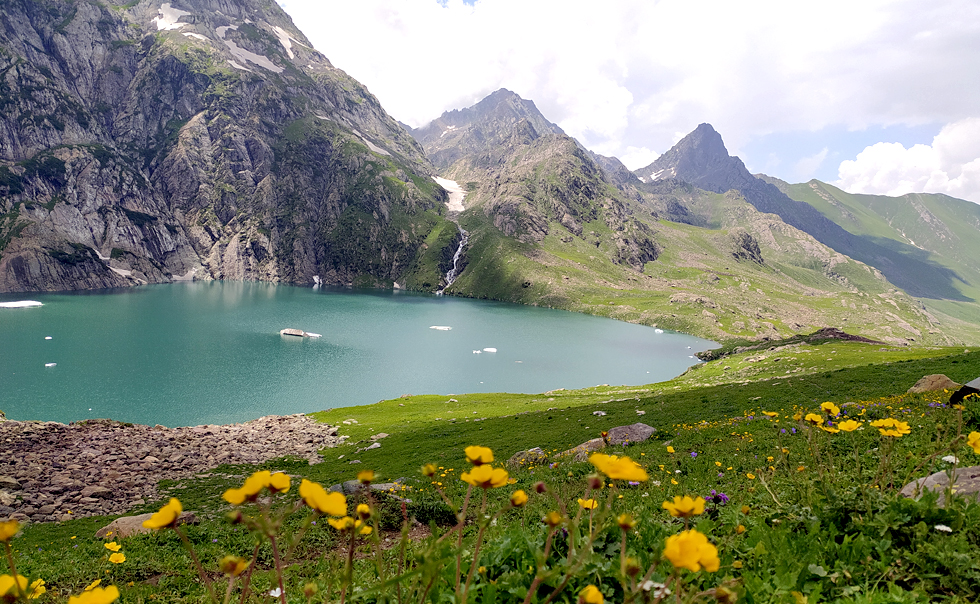
- Upcoming Trekking

National Himalayan Trekking Cum Training Expedition Kashmir Great Lakes 2024
The Kashmir Great Lakes, trek is the most beautiful, amazing and full of natural beauty trek. In this trek you can enjoy the scenic beauty of God’s amazing creation called ‘Lakes’.
Breif Description Of The Program : The Kashmir Great Lakes, trek is the most beautiful, amazing and full of natural beauty trek. In this trek you can enjoy the scenic beauty of God’s amazing creation called ‘Lakes’. Here you can see 6 different Lakes named, Vishnusar, Kishansar, Gadsar ,Satsar,Gangabal,Nandkol and many other small lakes . This is the totally hidden part of Kashmir. Only very few number of people is known about this amazing trek. Purpose : The purpose of the program is to expose the YHAI members to a greater adventure and to rough the rigors of plodding, with a sense of love for nature and outdoor recreational activity aiming at promoting national integration. Reporting Place : YHAI Base Camp, Near the main gate of Dachigam National Park, Harwan, Srinagar, J&K-191123 Program Includes : Expert Guides, Expert supporting team, Food (Veg), Equipments, Group Insurance, Forest entry. Day Wise Schedule: Day 1 : Reporting at Base Camp Day 2 : Orientation, Training and Acclimatization Walk Day 3 : Trek to Nichnai Camp (11948 ft.) Day 4 : Trek to Vishnusar Camp (12152 ft) via Nichnai Pass (13458 ft) Day 5 : Trek to Gadsar (10777 ft) via Gadsar Pass (13763 ft) Day 6 : Trek to Satsar (11860 ft) Day 7 : Trek to Gangabal (11482 ft) via Zach Pass (13428 ft) Day 8 : Trek to Naranag Village and Then Transfer to the Base Camp. Day 9 : Check Out After Breakfast Participate will check out after breakfast on the last day taking bountiful memories of this fantabulous journey home with you. How to Reach: Nearest Railway Station: Jammu (Jammu Tawi), Katra (J&K) Regular Taxi on sharing basis and bus service is available from Jammu to Srinagar Important: Please read all the instructions of programme carefully before booking the same (including cancellation policy). Accommodation Facilities: Tented accommodation on sharing basis, paka toilet cum bathroom facility, at the base camp. Food & Water Supplies: YHAI provides nutritious and good quality meals which includes Morning tea, breakfast, packed lunch, evening tea (in the camp), inner and after dinner tea/coffee/Bourn vita, shall be provided. Please bring your own plates, mugs, spoons etc. Who Can Participate?: The minimum age for a member to join the program is 18 years to 60 Years, YHAI membership is mandatory to participate. This condition will be adhered to strictly. Under age and above age will not be considered. Members desirous of joining this programme may apply online duly supported by a “Trekking Medical Certificate\”(ON GOVERNMENT PRESCRIBED FORMAT ONLY WHICH IS EMAILED BY US). Special Allowance Cases: On the special case if the person is medically fit and a regular trekker than he can be allowed in offline mode (decision will be final only on management discretion and seat availability). In this case, he/she has to produce Indemnity bond on RS. 100/- bond paper from his respective state and has to submit the same along with his Registration form. What Participants Should Bring: Rucksack (if You have one), Woolens, Cotton Shirts, Slacks, Cotton Pants, Sun Cap, Shoes, Socks, Enameled or Steel Mug / tumbler, Plate, Lunch box ,Spoon, Water purifying tablets, Pen knife, Needle, Thread, Spare buttons, Goggles, Cold cream / Vaseline, Soap, Toilet Paper, Towel, Rain sheet, Medicines (As per your personal requirement, which you regularly use at home and Crepe Bandage 4in*1, Micropore tape 1/2inch*1, Bandaids, Cough lozenges/ Kanthil or other, Vicks Vaporub, Coldarin, Clortrimazole cream and powder, Paracetamol*10 Mupirocin cream, Diclofenac gel, Lopamide*10, Azithromycin and Electral), Camera with extra batteries. How To Join: For Online booking: Members desirous of joining this programme may apply online by paying requisite program fee along with online booking amount i.e. Rs.16000/- We accept Net Banking, Debit Card and Credit Card payment on www.yhaindia.org for online payments. After successful transaction Admit Card will be generated. Participant has to carry “Admit Card”, “Trekking Medical Certificate(ON GOVERNMENT PRESCRIBED FORMAT ONLY WHICH IS EMAILED BY US)” & “Membership Card” & 2 pass size photograph at the time of reporting to the Base Camp. For Offline Booking Process: Members desirous of joining this programme may apply on the prescribed “Trekking Registration Form” duly supported by a “Trekking Medical Certificate(ON GOVERNMENT PRESCRIBED FORMAT ONLY WHICH IS EMAILED BY US)”, along with a Demand Draft of requisite amount of Rs.16000/- (included postage charges) in favor of “Youth Hostels Association of India” payable at New Delhi. The Trekking registration Form, Trekking Medical Form and Demand Draft may be sent to following address: Trekking Department, National Office Youth Hostels Association of India 5, Nyaya Marg, Chankayapuri. New Delhi-110021, Contact No.: 7827999000 All Offline Booking confirmation is subject to availability of seats. National Office will send the Admit Card along with confirmation letter to the participant at the address mentioned in “Trekking Registration Form”. Members can also apply through our YHAI Units or State Branch in their respective area. N.B: Without admit card and Medical fitness Certificate do not claim your registration as confirmed. Program Includes: Transportation from Road Head Naranag to Sonamarg base camp, Expert Guides, Expert supporting team, Food (Veg), Equipments, Group Insurance, Forest entry. Risk factor: This trek is a High risk Adventure programme with following risk factors: 1. High Altitude sickness This Trek Is Moderate To Hard. YHAI will provide adequate assistance in above circumstances but cannot be held responsible for any risk mentioned or not mentioned above. All participants should be physically fit, only those who fulfill the mentioned criteria will be allowed to participate in the expedition. YHAI decision will be final and all participants have to abide by it. No Refund Is Admissible In Case Of Any Medical Reasons. Safety & Security: YHAI Group Insurance cover is for accidental death or permanent disability only. You are advised to take personal insurance cover for your journey and other related matters. Extensive and painstaking preparations have gone into the planning of this program for your safety. Our field staff and experienced camp leaders have been visiting the area to check all details. While every care has been taken to ensure safety, the Youth Hostels Association of India cannot be held responsible for any accident, illness and such other unforeseen eventualities. Special Casual Leave: The Trekking Expedition organized by Youth Hostels Association of India have the approval of Ministry of Personnel, Public Grievances and Pensions (Dept. of Personnel And Training), Government of India, vide Office Order no. 28016/3/89-Estt (A), Dated 25 October, 1989. Participants working in the Central Govt. Organization can apply to the authorities concerned for availing special casual leave for the duration of the expedition. This leave can be sanctioned by their office up to 30 days in calendar year. Cancellation Rules: 1) Participants booked online will do online cancellation minimum 10 days prior to your reporting date. 2) Participants booked offline will inform their cancellation by email to [email protected], minimum 10 days prior to your reporting date. Only cancellation done as per above method will be eligible for credit shell. The below cancellation policy will however not be applicable if the request reaches short of 10 days prior to reporting date and shall not be eligible for credit shell. Cancellation Policy: 1) In case you are unable to join the programme due to any reason, you will get a 100% Credit Shell of the participation fees which will be valid till December 2024. No refund will be applicable for any cancellation of seat. 2) If the next programme opted by you is cheaper, you may use the balance amount in any of the Trek till Dec 2024. 3) If the next opted programme is costlier, the trekker has to pay the differential amount. 4) Program opted using the Credit Shell cannot be cancelled again. 5) You may transfer your seat to your family members and friends also. The seats thus transferred cannot be retransferred or cancelled. 6) The credit shell can only be used in booking of adventure programs organised by YHAI. The credit shell will not be used in taking memberships and hostel bookings. Note: If any program will be cancelled due to Natural Calamity / Government Restriction / Cancellation of Permission or any other reasons , Yhai will be accountable only for program fees and not other expenses which participants have made for joining the program. In these circumstances the decision for participation fees will be considered by the Yhai and will be bound to all.
Itineraries map
Weather forecast.
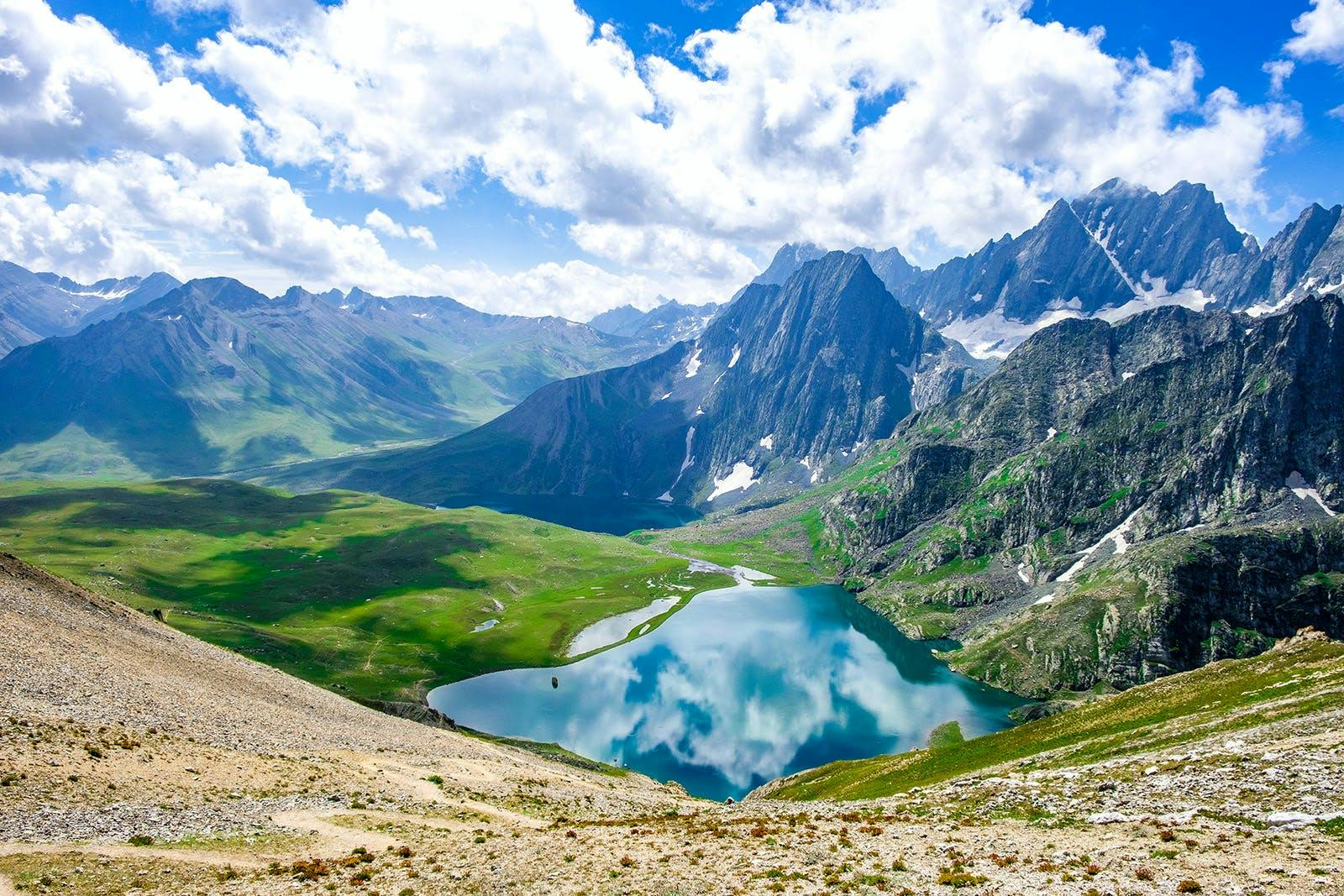
Kashmir Great Lakes Trek
The Most Beautiful Trek In India

Dates fully booked? We have 7 other fantastic treks in J&K, which are at par with KGL. Click here
TREK DIFFICULTY
Moderate-Difficult
TREK DURATION
HIGHEST ALTITUDE
SUITABLE FOR
12-62 years
Kashmir Great Lakes is one of the most beautiful treks in India. No question. It validates Kashmir’s mythical status as heaven on earth.
This is because the trek is set on a canvas that’s larger than life. It is situated 75 km northeast of Srinagar. Every day is a 360° panorama of wild, rugged mountains, rolling meadows, and turquoise alpine lakes. And you get more than six of these lakes and five very different valleys to explore!
The range of landscape makes it a moderate-difficult trek spanning over six days. This means it has long trekking days with steep ascents and descents with no easy exit points. So, it’s not meant for a beginner who hasn’t been exposed to high-altitude treks.
Having said that, the challenges are worth it. Each day is postcard-perfect, with a new alpine lake to look forward to. What makes these lakes even prettier are the snow patches that feed these lakes. You see them sliding off the serrated mountains into the lakes. Sometimes you’ll see milky white icebergs floating on the lake’s inky blue surface.
And then there are meadows of Kashmir. These meadows come in every shape and size, sometimes many in a day.
After this trek, every other trek feels as though it is a movie on a small screen. Kashmir Great Lakes, however, is an IMAX 3D experience – such is the grandeur of the trek. If you have not done this trek, put it on your bucket list!
Kashmir Great Lakes: Complete Trek Information
We have always wanted trekkers to be well-informed before they go on a Himalayan trek . Knowledge is the difference between a safe trek and a dangerous one. It’s also the difference between a wholesome experience and a superficial experience.
Use this section to learn about the Kashmir Great Lakes trek. It has in-depth information about each day of the trek, what to expect, and how you need to prepare for it. Many years of expertise have gone into this content. Trekkers find that extremely useful.

Quick itinerary
Get your trek plan

How Does Each Day Look
Complete day-wise guide with photos

How Difficult is the Kashmir Great Lakes Trek?
This will tell you just how fit you must be

Best Time to do the Kashmir Great Lakes Trek
Time your trek well

How to Reach the Base Camp
Plan your travel

What to Pack for Your Trek
Things you must take on the trek

Why get fit for Kashmir Great Lakes Trek
Fitness matters for the trek

Frequently Asked Questions
Get your questions answered here
Kashmir Great Lakes Videos
Watch these videos to prepare well for your trek.
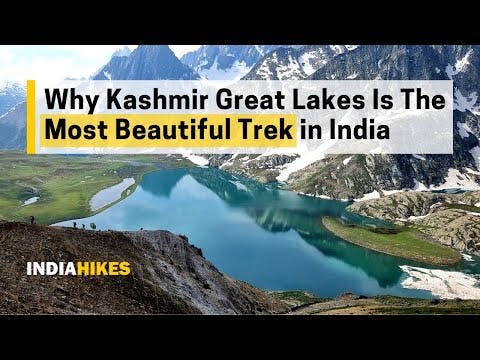
Lakes at a Glance
The Kashmir Great Lakes trek is synonymous for its 6 famous alpine lakes. Each day has a new alpine lake to look forward to. What makes these lakes even prettier are the snow patches that feed these lakes. You see them sliding off the serrated mountains into the lakes.
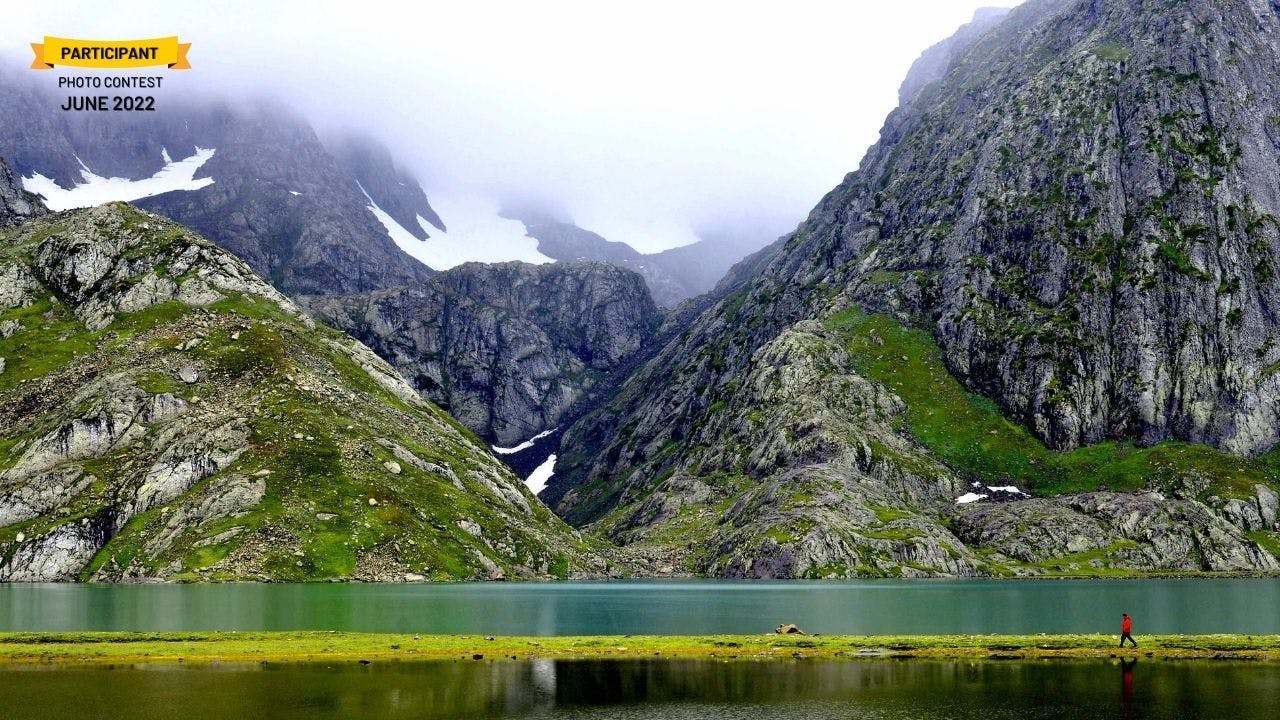
A trekker enjoying the view of Vishnusar lake. Image by Padmanabha K G
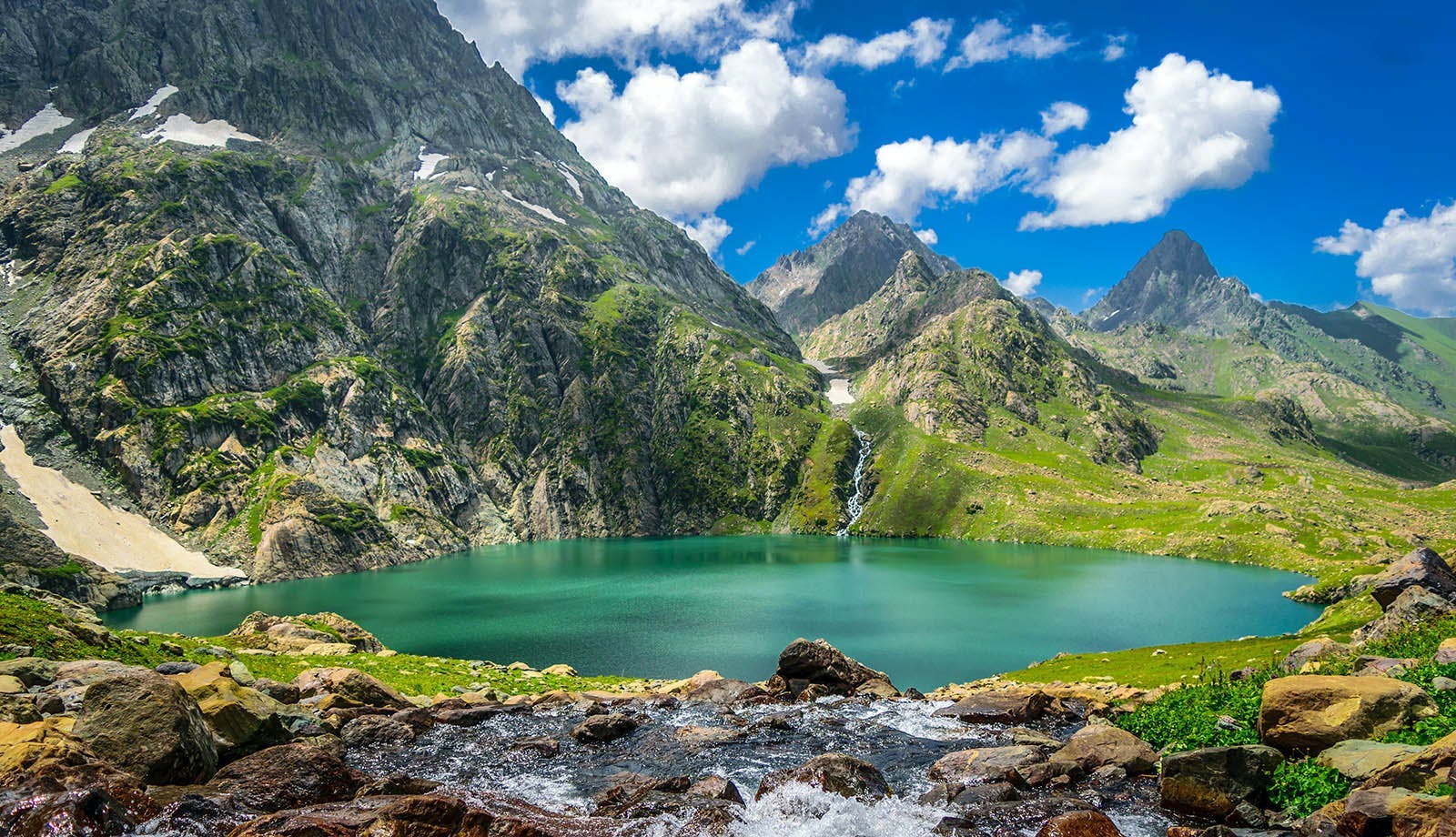
Gadsar Lake. Image by Ankit Patidar
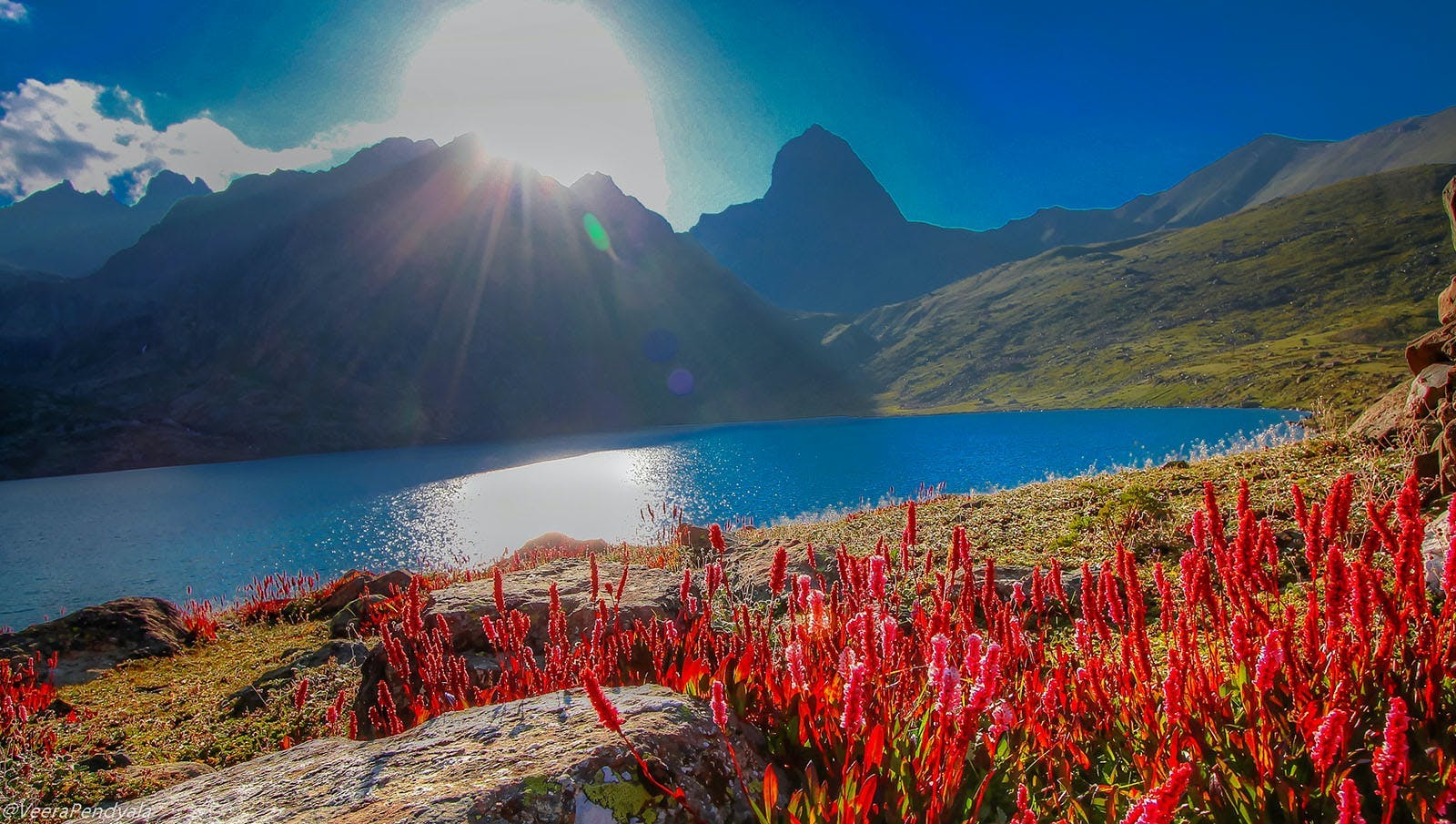
Vishnusar Lake. Image by Veera Pendyala

Kishansar Lake. Image by Animesh Hazra
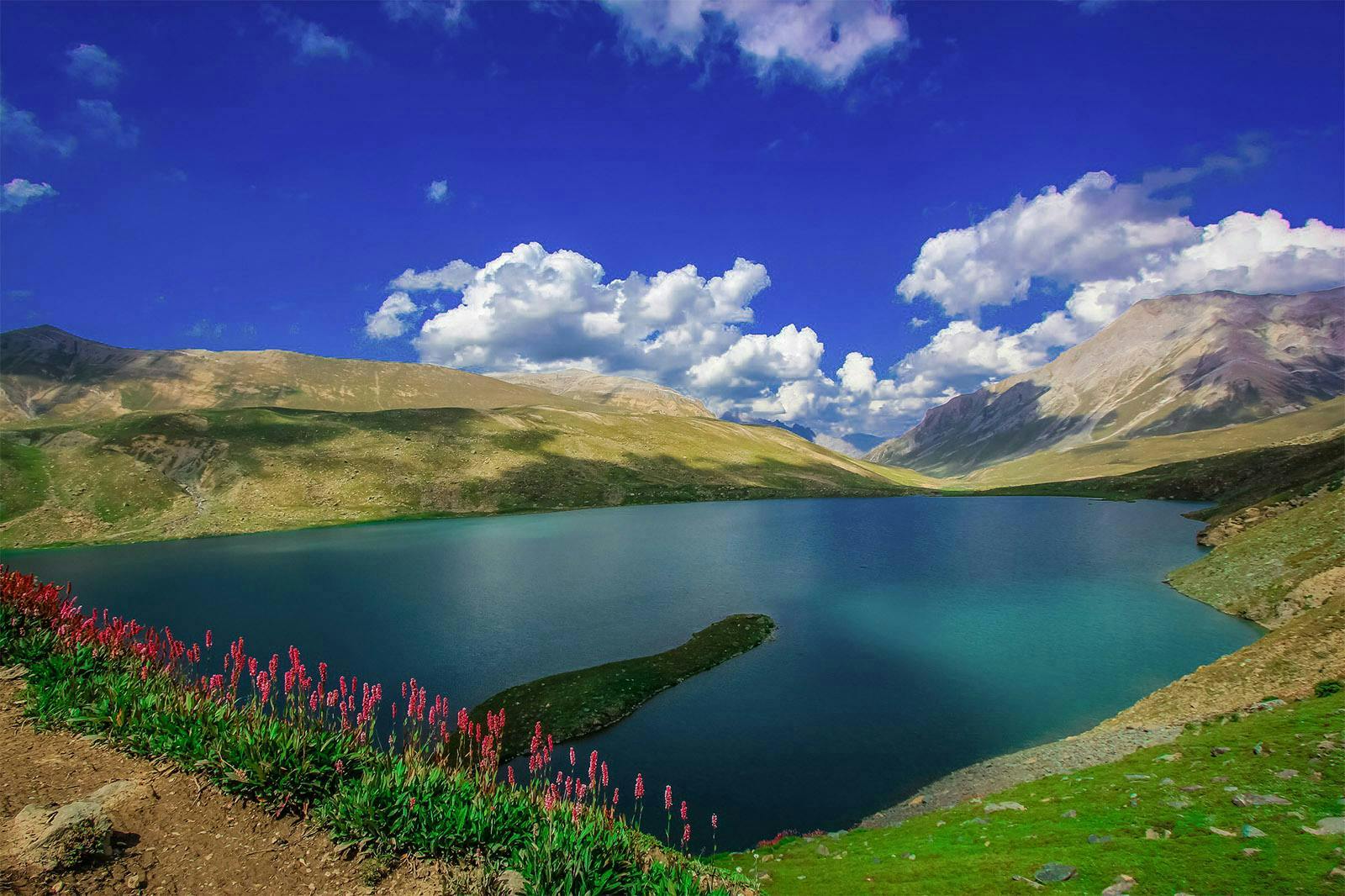
Vishnusar Lake. Image by Brijesh Tiwari
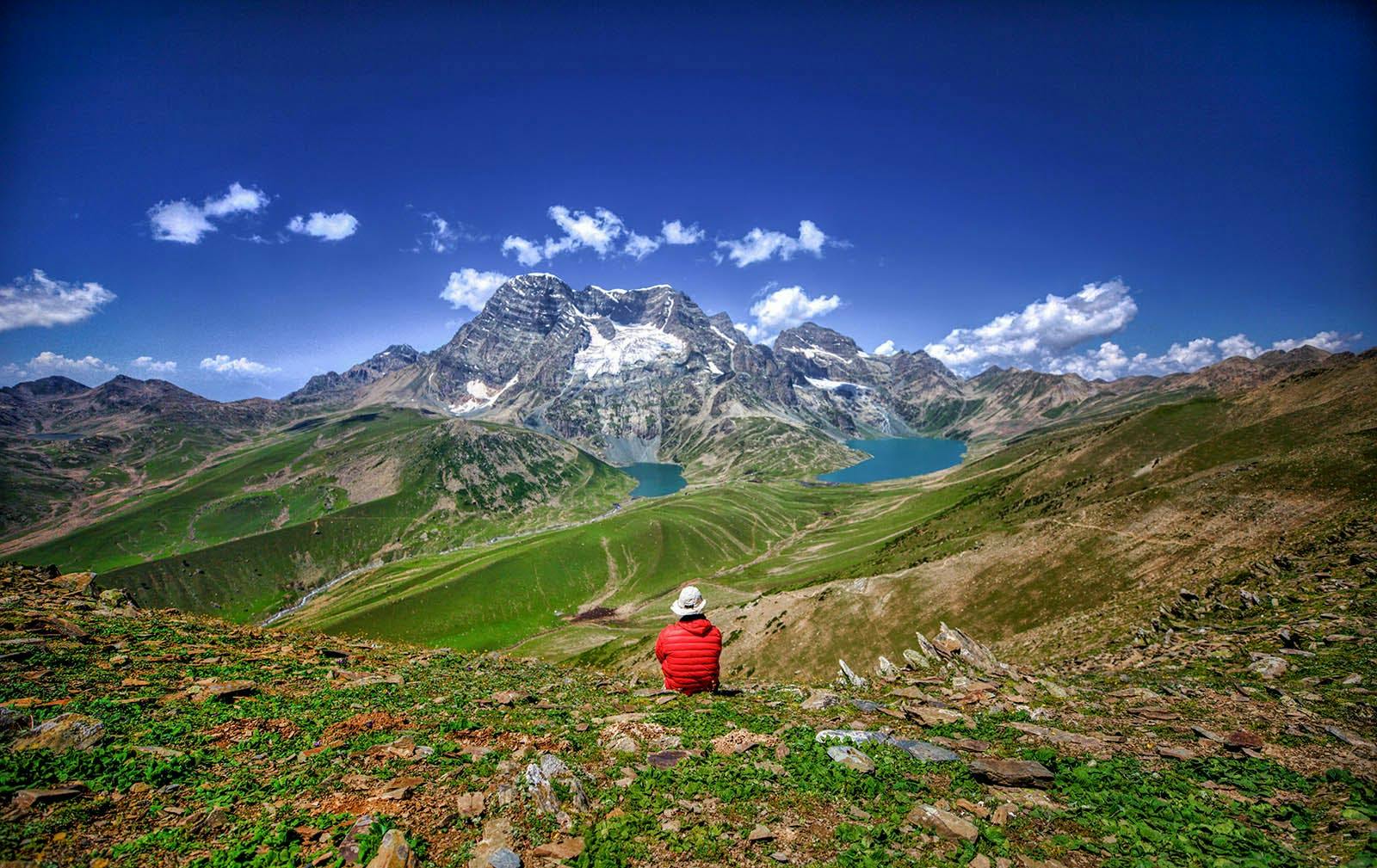
Nandkol and Gangabal Lake. Image by Prasanth Premchandra

Gadsar Lake. Image by Satyen Dasgupta
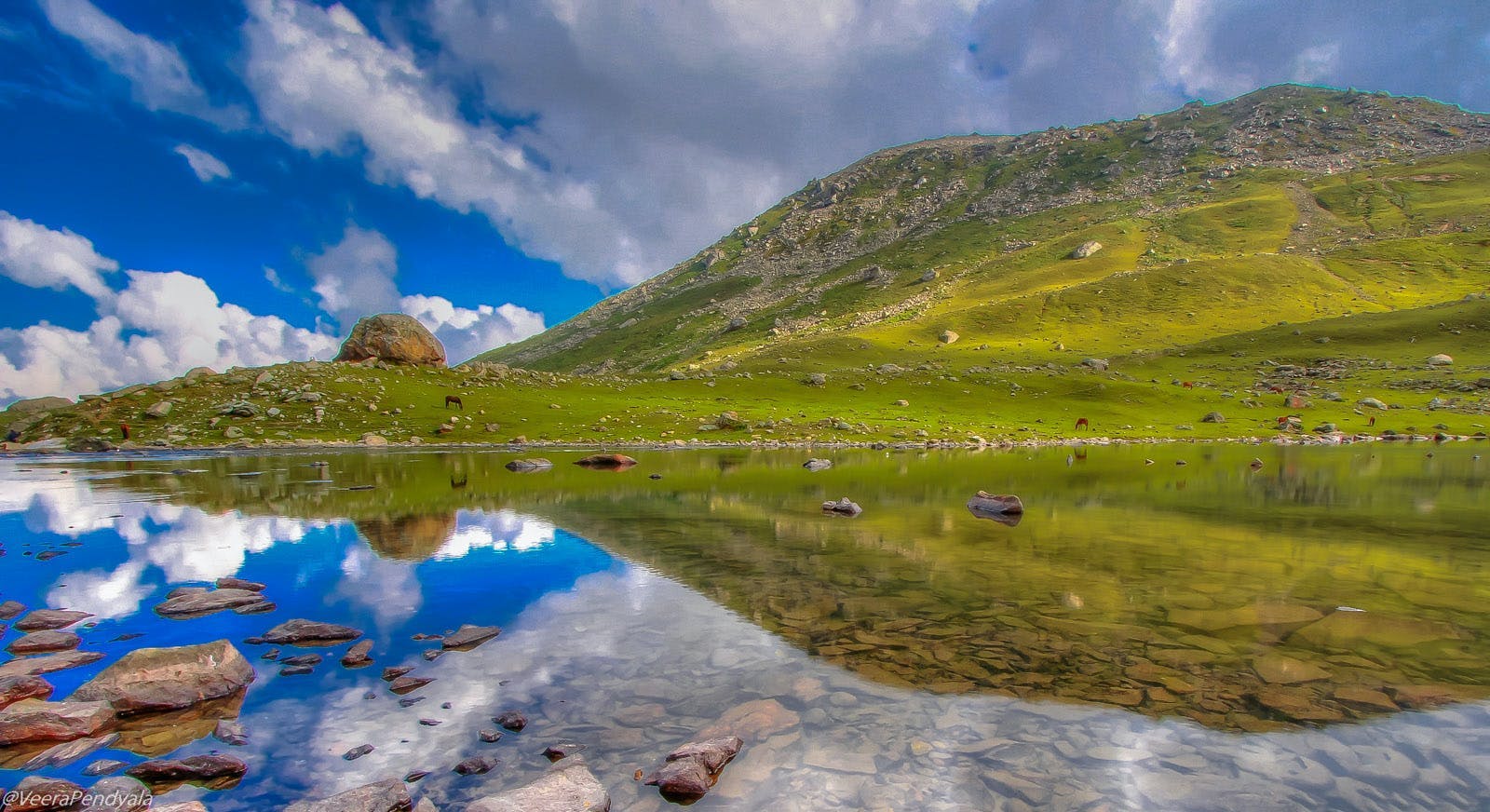
Nandkol Lake. Image by Veera Pendyala
Campsites at a Glance
At Indiahikes, we are very particular about choosing terrific campsites. For the Kashmir Great Lakes trek too, after a lot of back and forth, we have settled on these terrific campsites, which trekkers have come to love.

Smooth green grass, almost manicured, a few lone maple trees and a few horses enjoying the graze are what Satsar meadows look like where your campsite is. Picture by Sachin
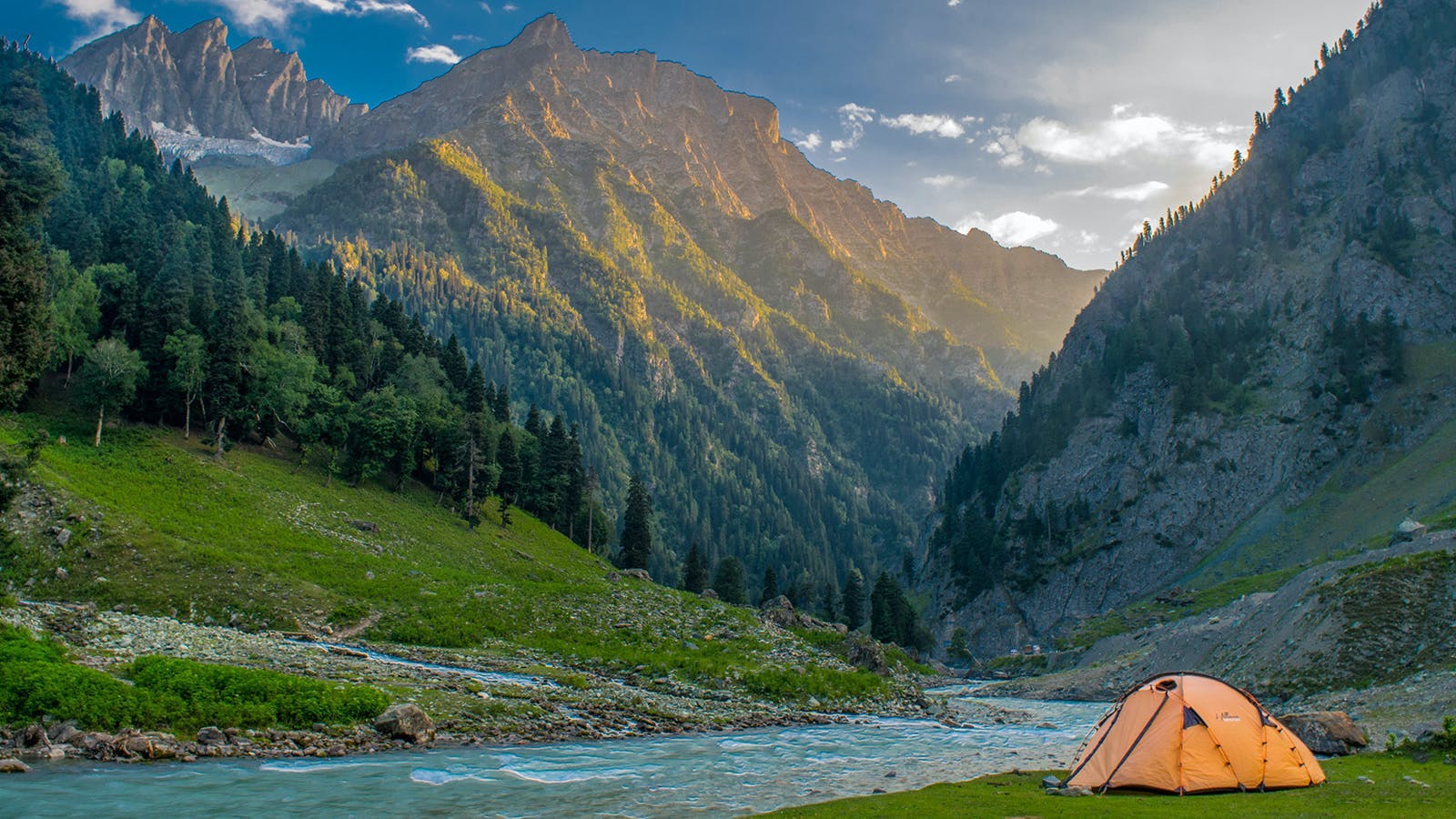
Sonarmarg is right next to the NH1 highway. You get to see the Kolohoi glacier in the backdrop with the Sindh river flowing right next to you. Picture by Nimesh Mittal

Your first campsite would be the Nichanai campsite. Nichnai grasslands show you how massive and rugged meadows can be. Picture by Sachin
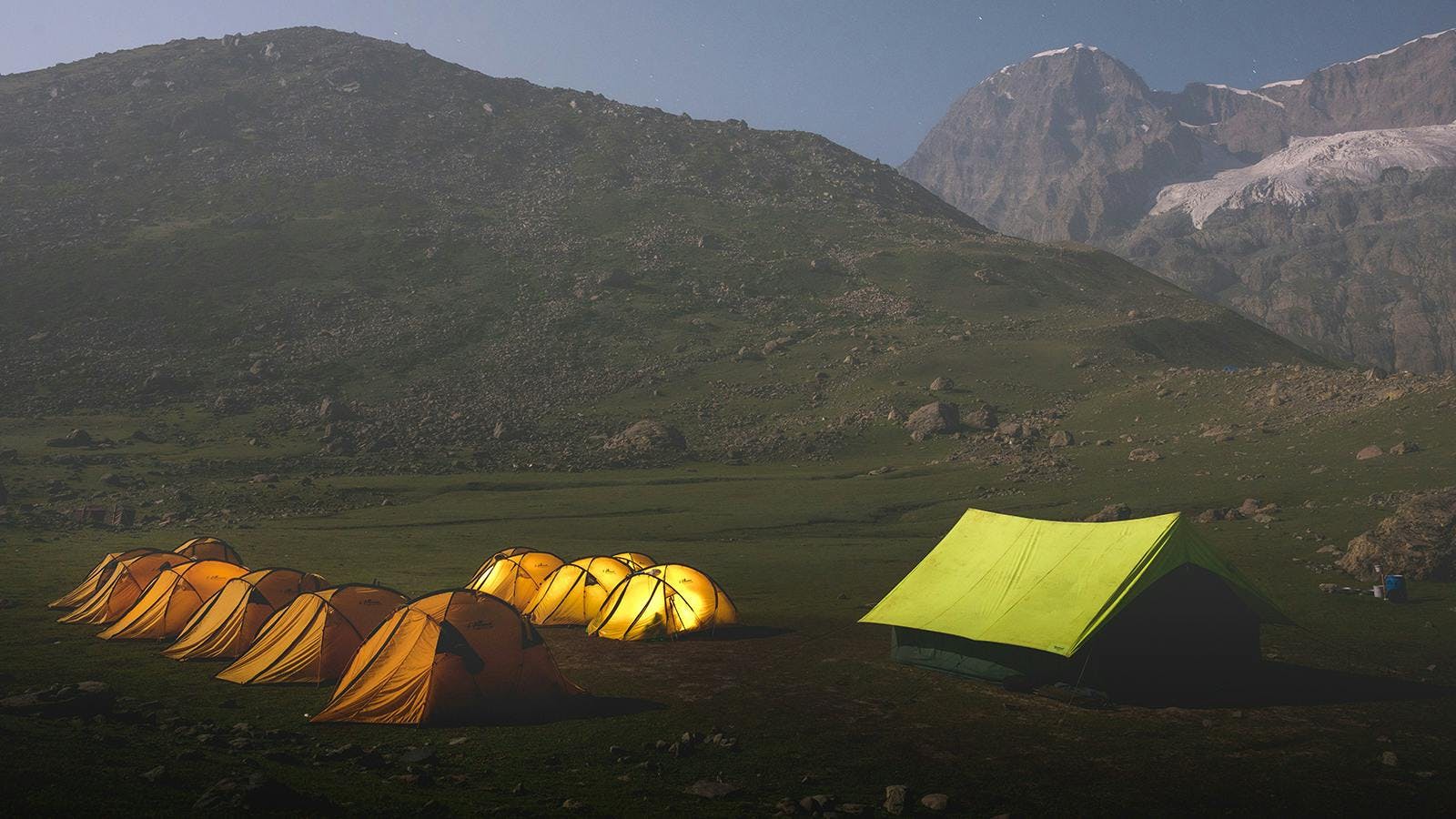
This campsite is known for the theatrics with clouds and Harmukh peak standing tall next to Nandkol and Gangabal lakes. A Night shot of the campsite. Picture by Sachin
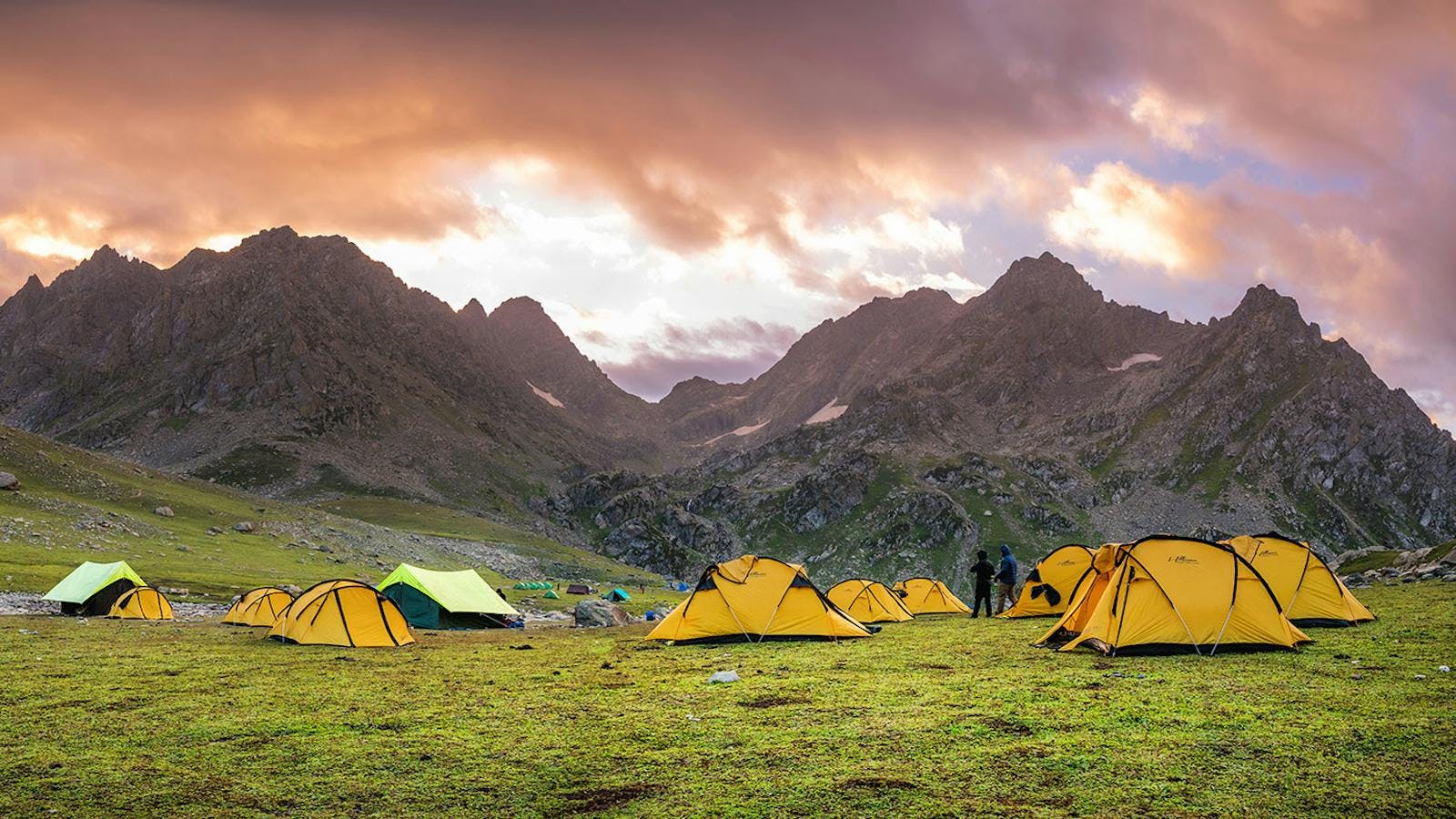
The evening setting at the Satsar campsite is a dream. Do not miss out on the night skies when you are trekking on the Kashmir Great Lakes trek. Picture by Sachin
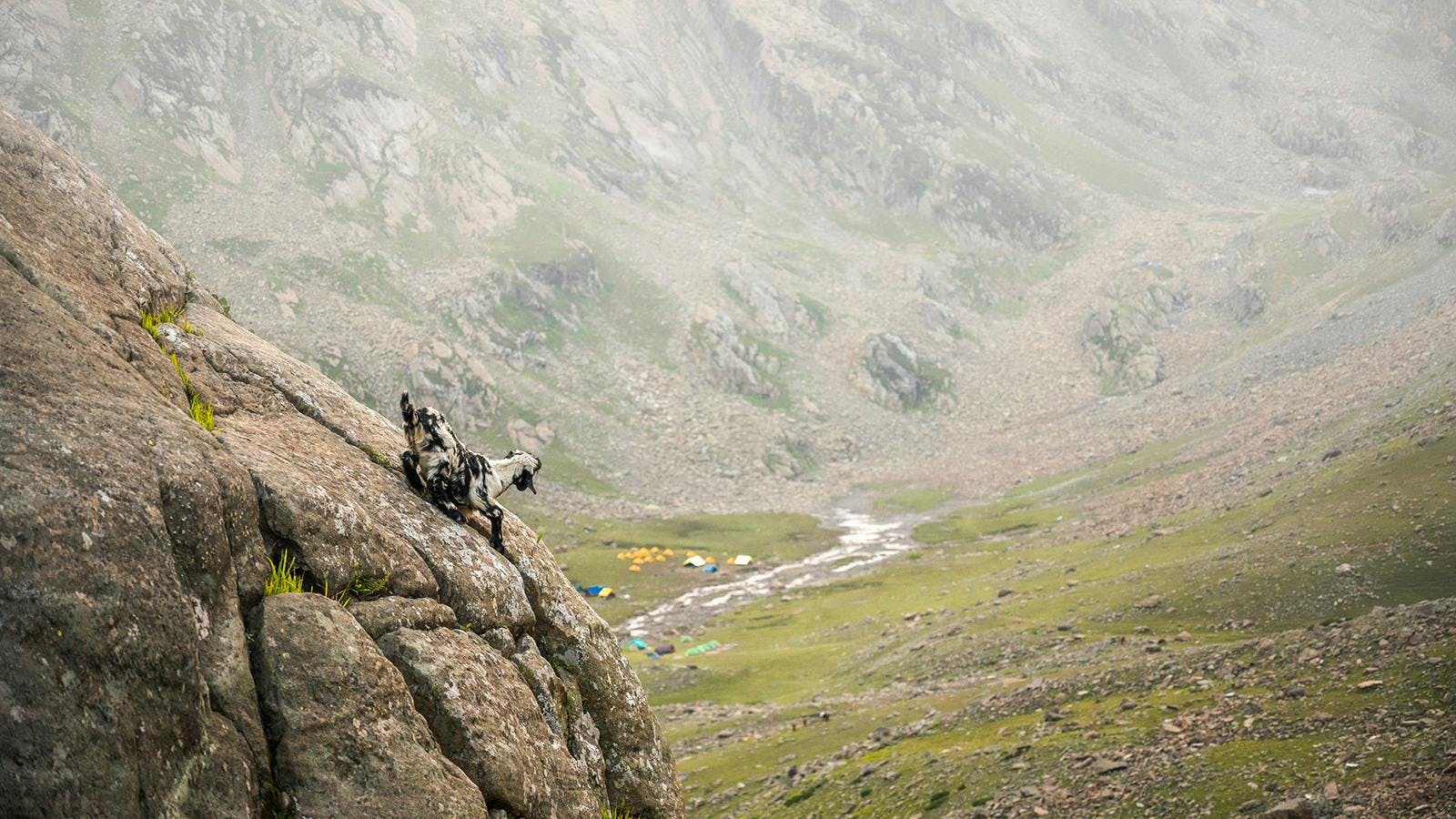
A goat's eye view of the Satsar campsite. Picture by Sachin
Why I Believe Everyone Must Trek: A Note from the Founder

Trekking transforms lives. It has completely changed my life. When I see my colleagues at Indiahikes, all of them have been impacted greatly. The transformations have been profound and irreversible.
I see it in our trekkers too. I have seen them change professions, careers or start a new life. I have seen them get in and out of relationships, and start new projects. These are life-changing experiences.
I have seen children building resilience. I have seen families come together. When I see those above 55, I see them rediscover passion and a sense of purpose. These are not small gains.
In the mountains new professions, new economies and new businesses have opened up. Our staff no longer go to cities to earn their living. Their income has increased. Above all, they are happiest working in this world. Trekking has been truly transformative.
Everyone must trek. It transforms lives far more than you imagine.
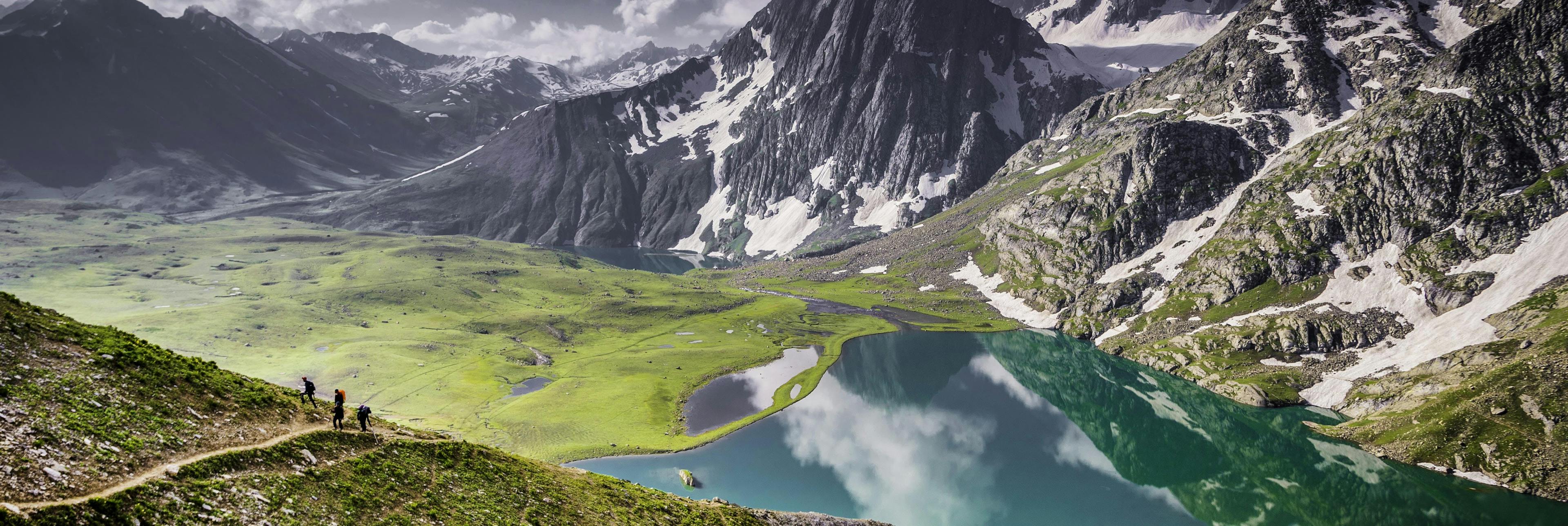
Expert Speak
Sandhya UC, Co-Founder, COO

Sandhya is a founding partner at Indiahikes. Over the past ten years, she has explored and put on the map a few of the greatest Himalayan treks in India, including Kashmir Great Lakes and Kedarkantha. She is a TedX Speaker and has been awarded the Women of Worth Award by Outlook Business in 2017.
Here’s Sandhya talking about the most beautiful trek in our country .
What I Like and Don’t Like About the Kashmir Great Lakes Trek
What I Like About the Kashmir Great Lakes Trek
Sandhya is a founding partner at Indiahikes. Over the past ten years, she has explored and put on the map a few of the greatest Himalayan treks in India, including Kashmir Great Lakes and Kedarkantha. She is a TedX Speaker and has been awarded the Women of Worth Award by Outlook Business in 2017. Here’s Sandhya talking about the most beautiful trek in our country.
1 . The magnificent mountain scenery on the trek
Most treks in the Himalayas are very scenic. But Kashmir Great Lakes is on a scale of its own. In fact, the mountains of Kashmir are like that. They have a larger-than-life presence around you. I would not be exaggerating too much if I say that a trek in Kashmir is like watching on an IMAX screen while everywhere else is on a normal TV screen. Kashmir — you feel it everywhere.
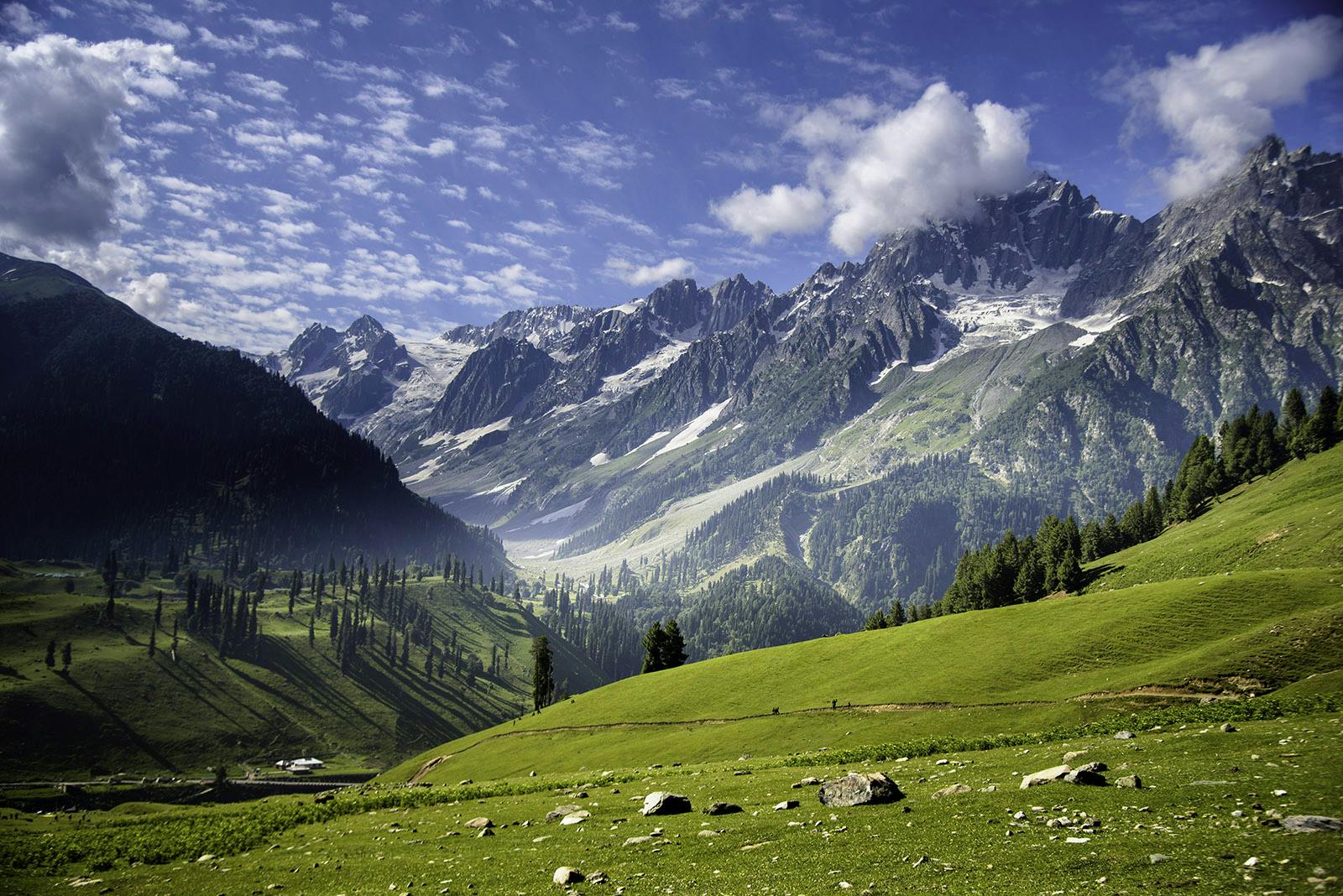
The larger-than-life scale of the mountains, meadows, and lakes on the trek of KGL. Picture by Rajshree Sarada
2 . The variety of the valleys and meadows
The Kashmir Great Lakes trek has 7 trekking days. And coincidentally you are also trekking in 7 different valleys. What’s more, each of these valleys, spread themselves out each day of the trek. Every valley gives hard competition to the valley before and the valley after.
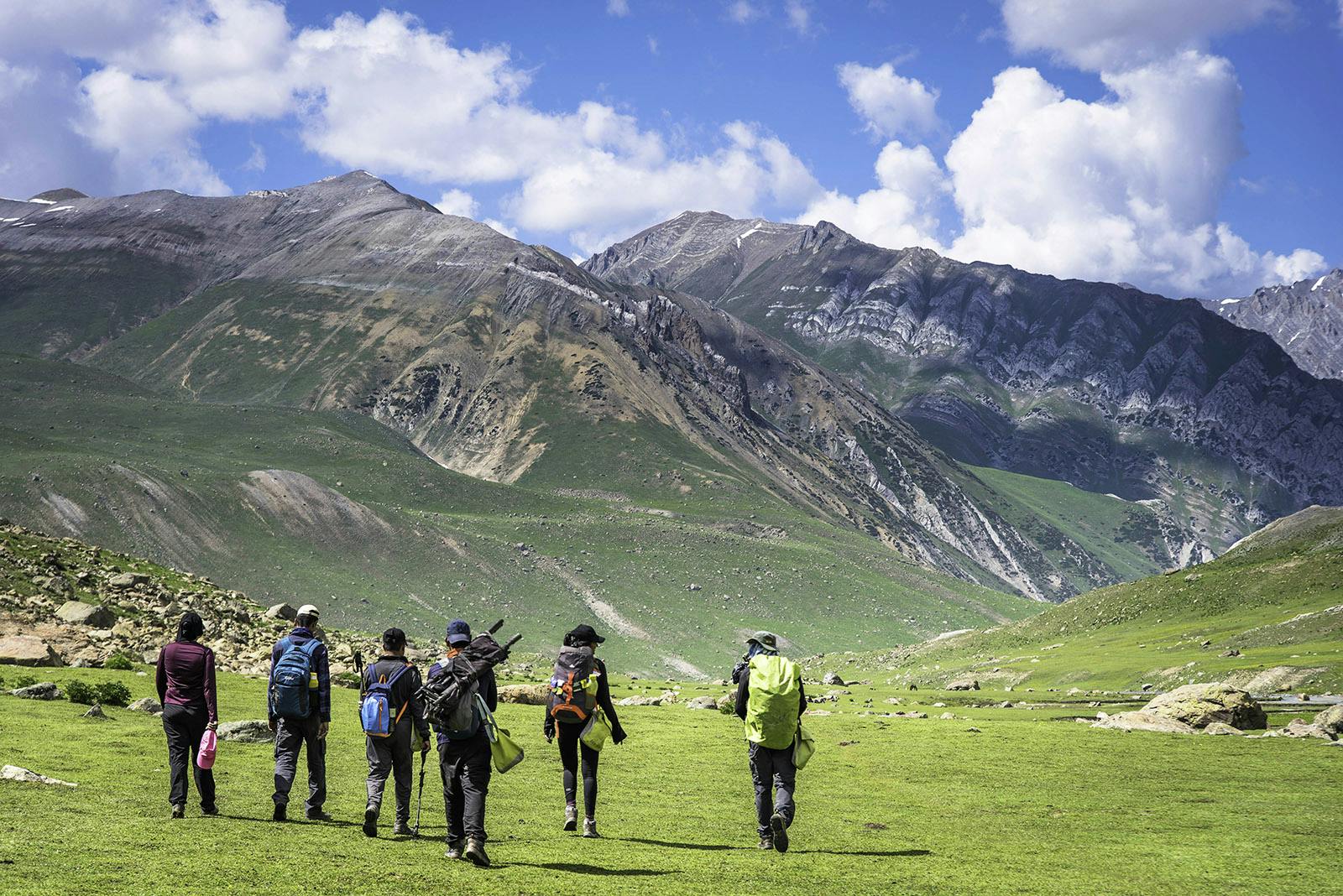
Trekkers rejoice trekking through the meadows after crossing Nichnai Pass and going through the wide valley. Photo by Rajshree
3 . The unforgettable walks in the meadows
Among the 7 different valleys you trek, 6 happen to be distinct grasslands or meadows. These high altitude meadows and grasslands are connected to one another via high passes. One would expect the meadows on either side of a pass to be similar. But they aren’t. Each one of them is a world of its own and has a charm of its own.
The Shekdur meadows also known as table top set amidst Maples and Birch trees is where you start. Nichnai grasslands show you how massive and rugged meadows can be. Just cross the Nichnai pass and you enter a meadow that you don’t want to end.
A wide grassland, descending gently laden with wildflowers, a gentle river flowing in the middle is what the Vishnusar grassland is all about.
The Gadsar meadow is more dramatic. It is narrower with more jagged mountains lining on either side. A big Gadsar occupies the central landscape but leading to it are many smaller lakes. Flowers bloom in the entire valley in wild abandon.
Climb up from Gadsar valley and you get transported to the “windows wall paper” valley of Satsar. Smooth green grass, almost manicured, a few lone maple trees and a few horses enjoying the graze is what Satsar meadows looks like. I have never seen greener grass anywhere else.
The final grassland is the Gangabal expanse. When you see the valley below from Zaj pass, you are almost looking at the world map in green. Gangabal in blue looks like Africa! Nandkol lies by its side. 4 other lakes also dot the green landscape.
Personally for me, it is the meadows on the trek that take the cake and are my top reason to love KGL.
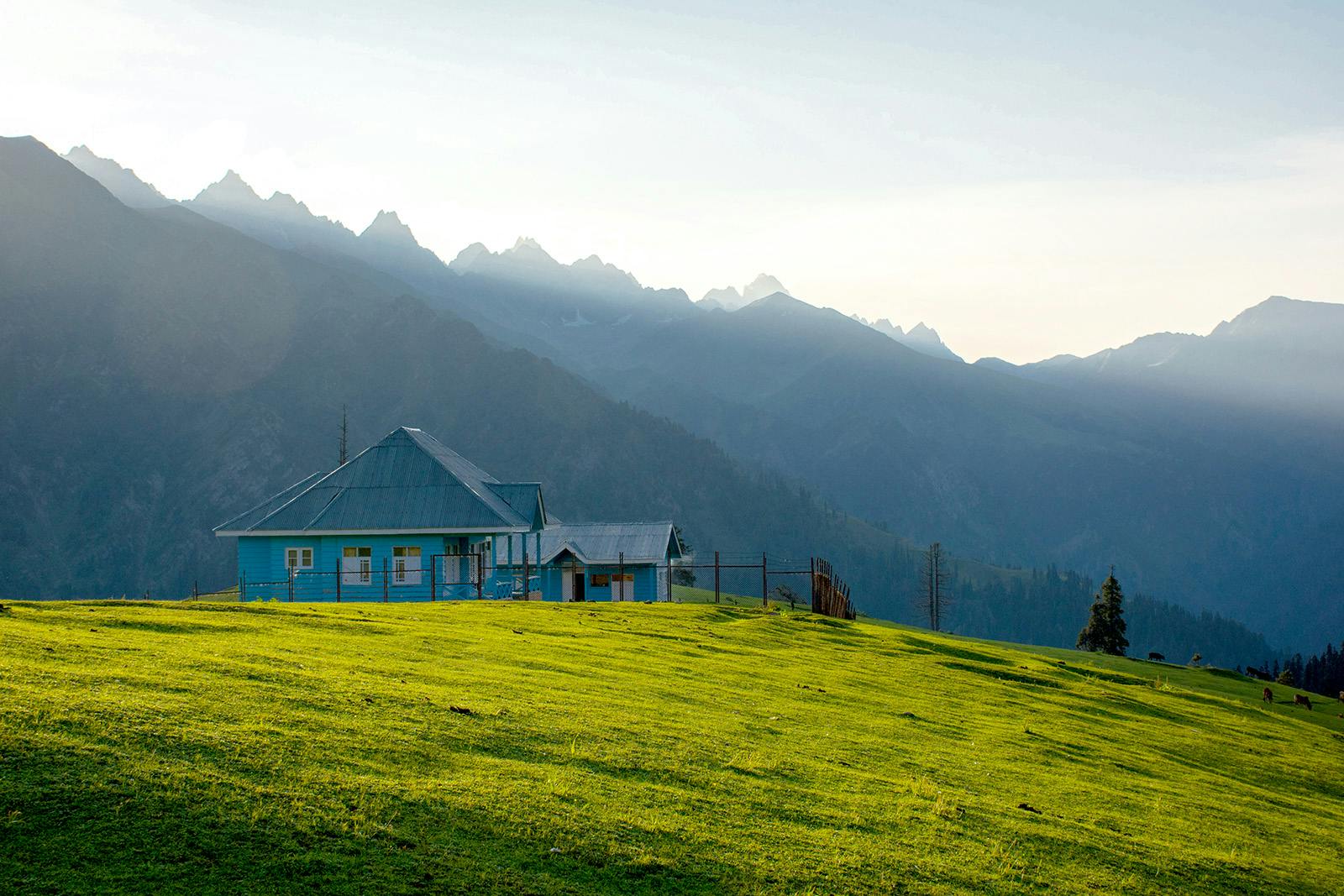
The Meadows on the last day of the trek after the Gangabal campsite. Photo by Vishwajeet Chavan
4 . The lakes
You cannot talk about Kashmir Great Lakes Trek without mentioning the lakes. When I saw one or two pictures of the lakes before my exploration, I thought they were photoshopped pictures from some Scandinavian country. I did not believe such lakes existed in the mountains of our country. These crystal clear high altitude lakes change colours all through the day.
Starting from clear at dawn to sea green to light blue to inky blue by evening. The twin lakes Vishnusar and Kishansar, the sea-green Gadsar with ice floes, the sight of gigantic Gangabal along with its twin Nandkol are some of the best lake scenery you will see in the world.
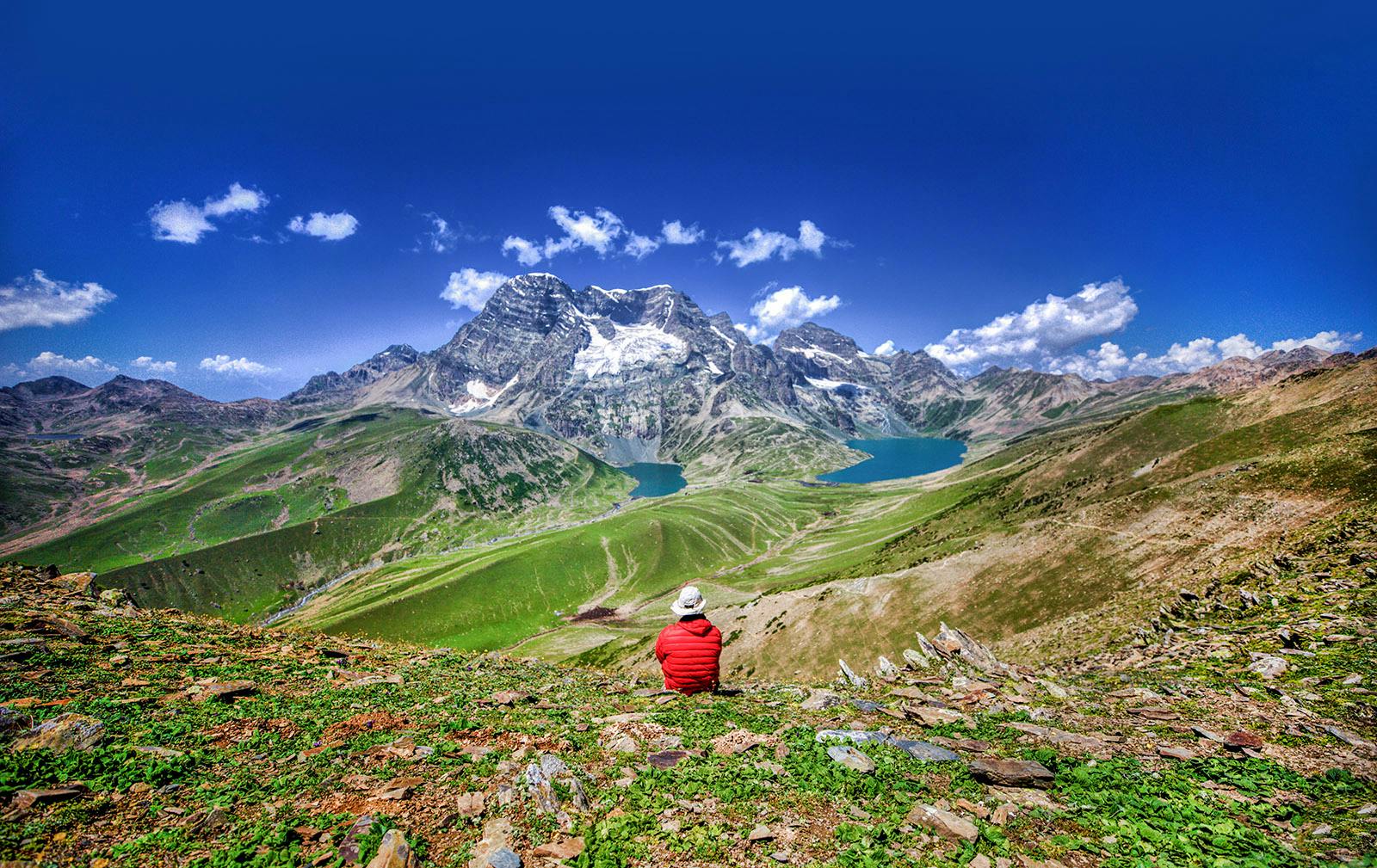
The twin lakes of Gangabal and Nandkol taken from Zaj Pass on a clear day. Photo by Prasanth Premchandran
What I Don't Like About the Kashmir Great Lakes Trek
1 . The dhabas on the trek
In the last 4-5 years a lot of dhabas have sprung up on the trek. Especially in the beginning and towards the end. My ideal trek is away from civilization. I go out to getaway. Even a hot cup of tea on a tiring trail will not make me root for a dhaba on a trail. Thankfully they are only on the periphery of the trail.
2 . The garbage on the trail
This is a total bummer on the KGL trail. For a very long time, the campsites around the first and the last lakes on the trek are littered with camping leftovers. No matter how many sacks of litter our trekkers pick from Gangabal and Nandkol or Vishansar, these camps get littered by the short campers who come to the lakes.
The trail to Vishnusar around Nichnai and the trail down to Naranag in the pine forest are also littered. I sincerely hope better sense prevails in those who come to these lakes.
3 . Unexpected challenges on the trek
Thanks to the lovely green meadows, trails lined by mountain flowers and the aquamarine lakes, everyone assumes the Kashmir Great Lakes trek is a walk on the grass. The reality is far from it. It is a moderate-difficult trek.
Long trek days and high passes to cross are a reality every day. There are quite a few rocky sections to negotiate too. You get them 3 or 4 times on the trail when you least expect them. I would say these unexpected challenges make the trek even more spectacular.
Kashmir Great Lakes Is Best Discovered Through Pictures
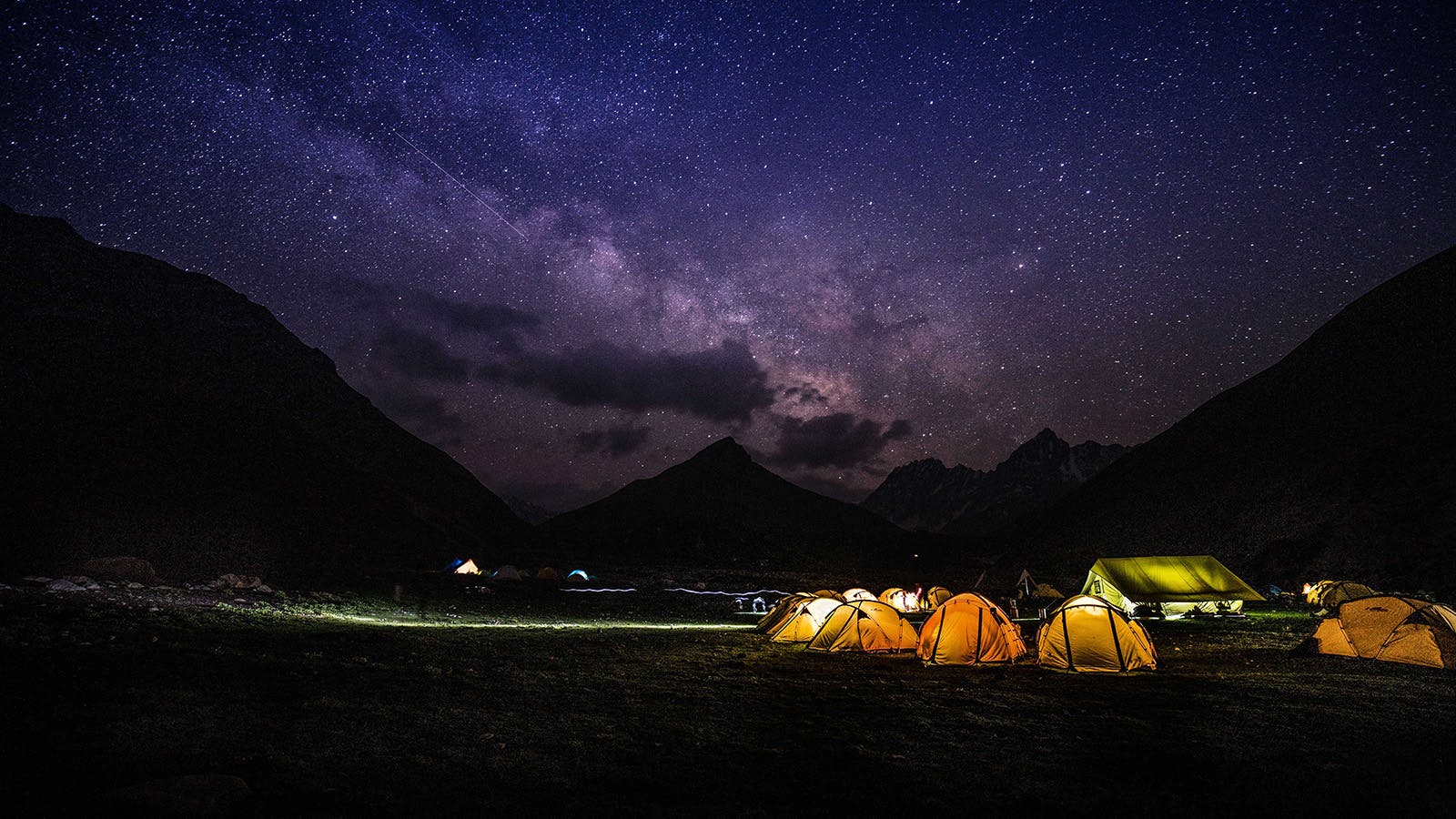
Photo taken from Gadsar Campsite with the Milky way and billion of stars.
Picture by: Rajarshi Manna
Night Sky on Kashmir Great Lakes trek
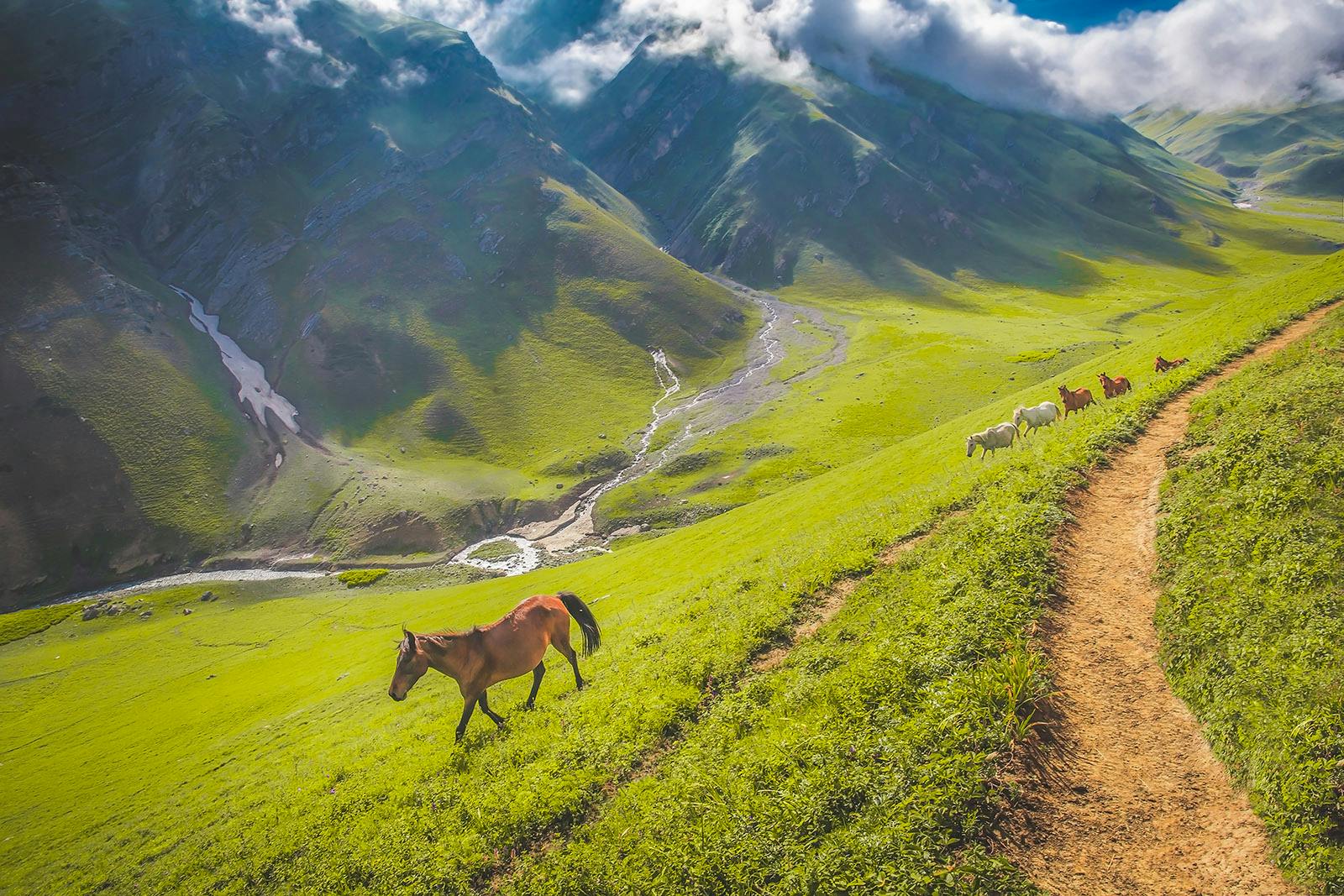
The setting of meadows, horses grazing beside you and the glacier waters flowing is a set taken for endless wallpaper moments.
Picture by: Suresh Kerkatta
Picture Perfect
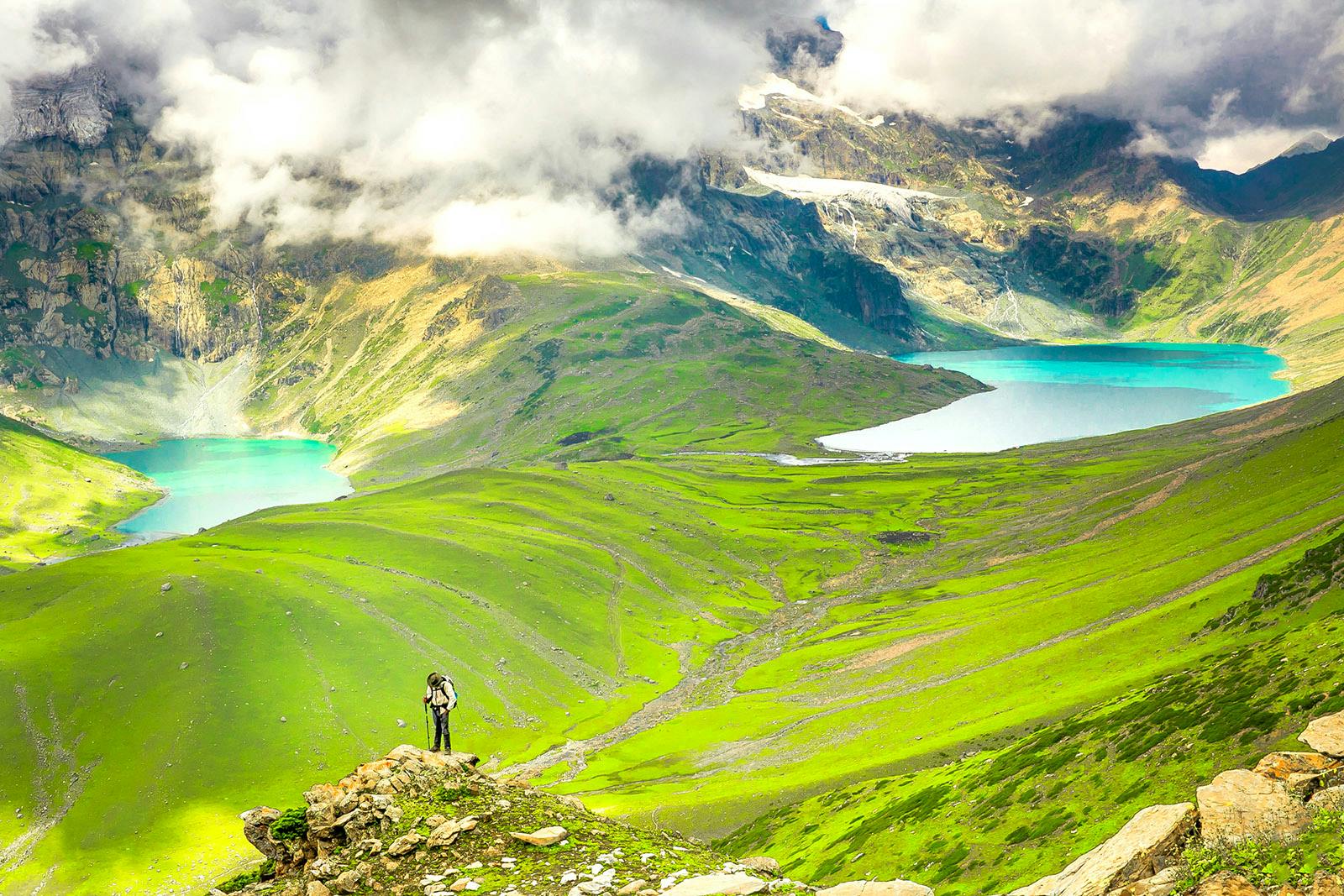
Zaj Pass is your last pass crossing on the trek. If you get clear weather, then this view of twin lakes is sure to blow your minds off.
Picture by: Suresh Kerketta
The Twin Lakes
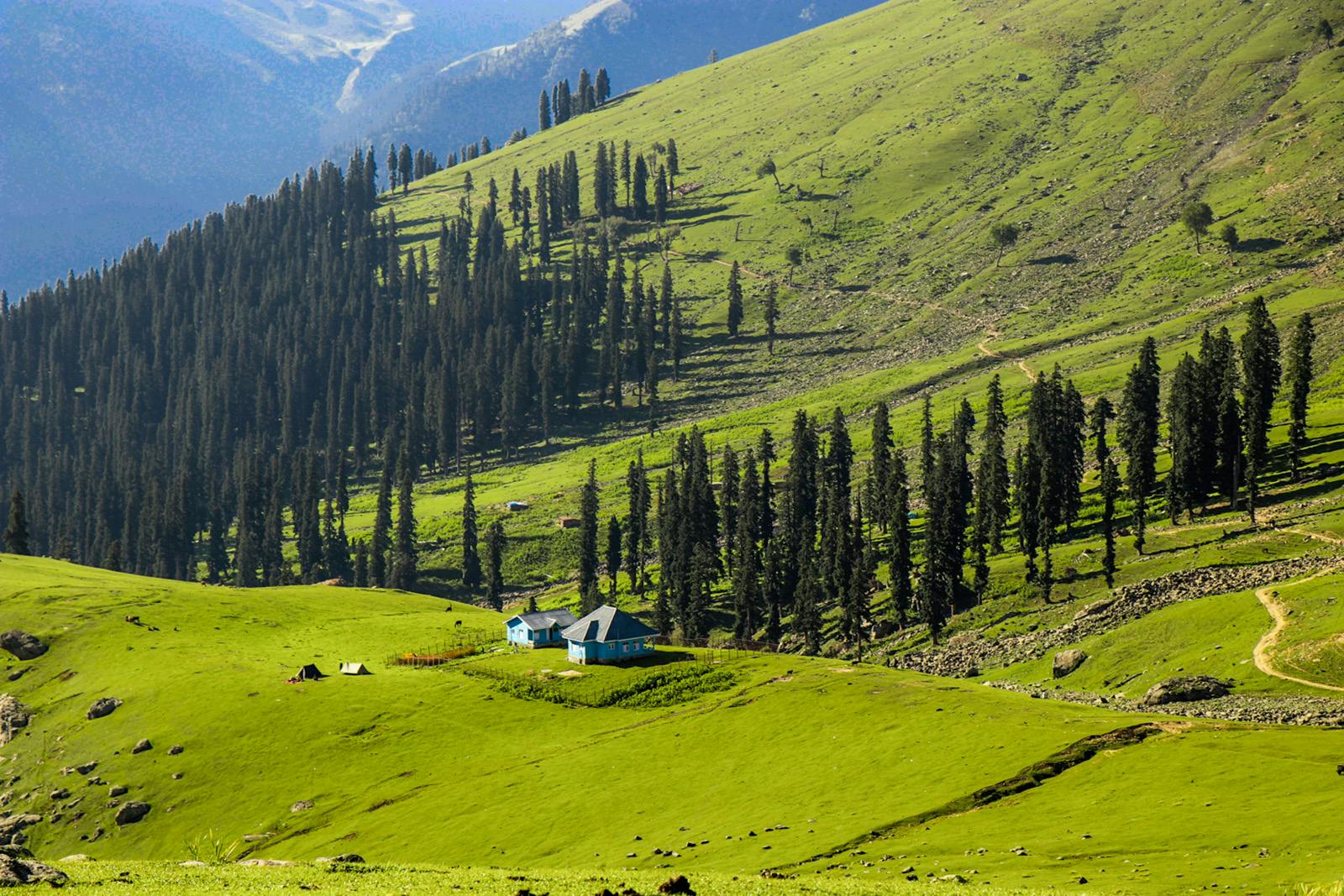
An hour away from the Gangabal campsite, you will hit the fringes of the tree line. Pine trees line the meadows and you also see the first traces of civilization with the presence of a log hut - Marking the end of this magnificent trek
Picture by: Divakar
Sight of Forest section
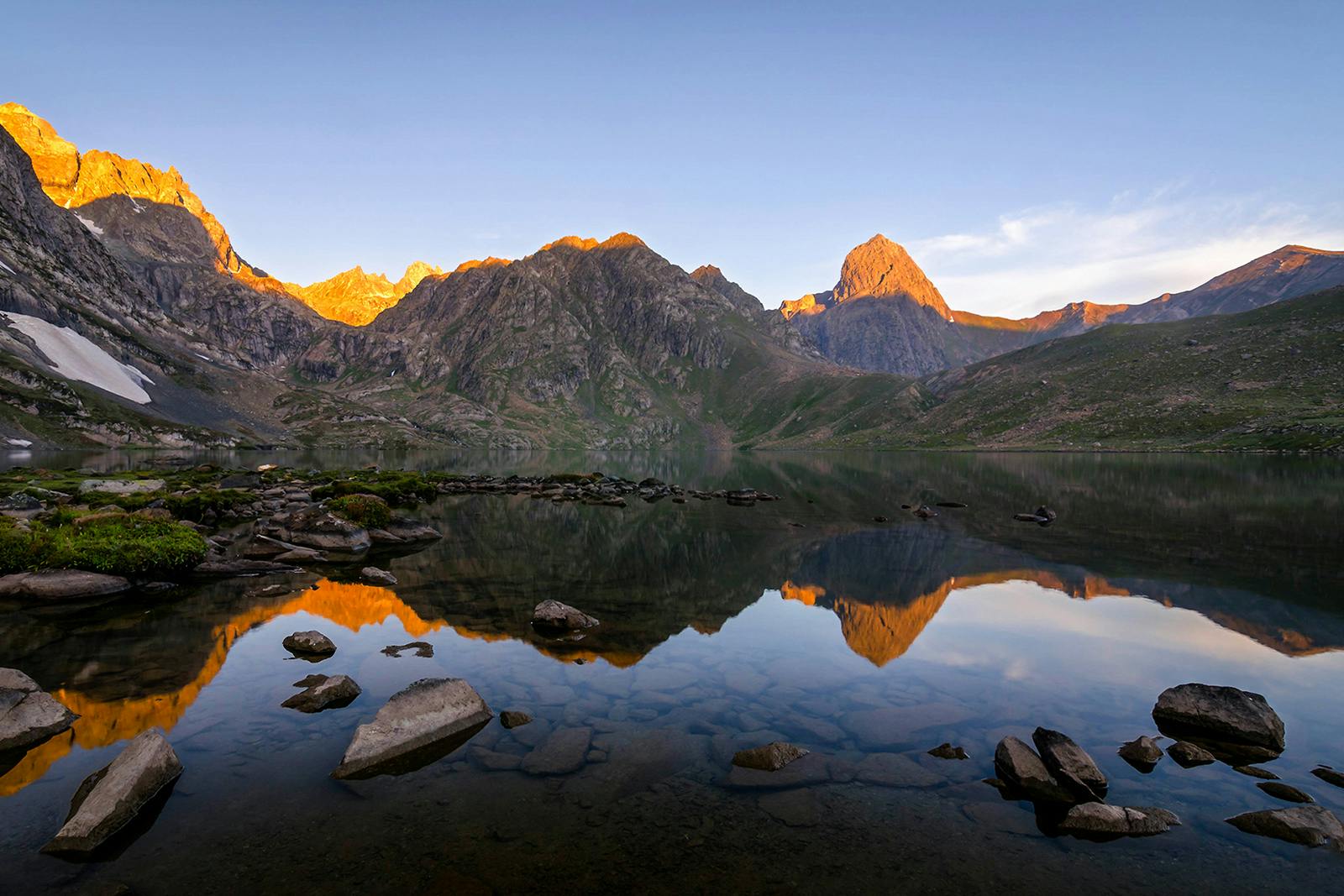
The colours on the Vishnusar Lake transition according to the climate and time of the day. It is a mysterious feeling when you hop through the small rocks.
Picture by: Sangram Biswas
Vishnusar Lake
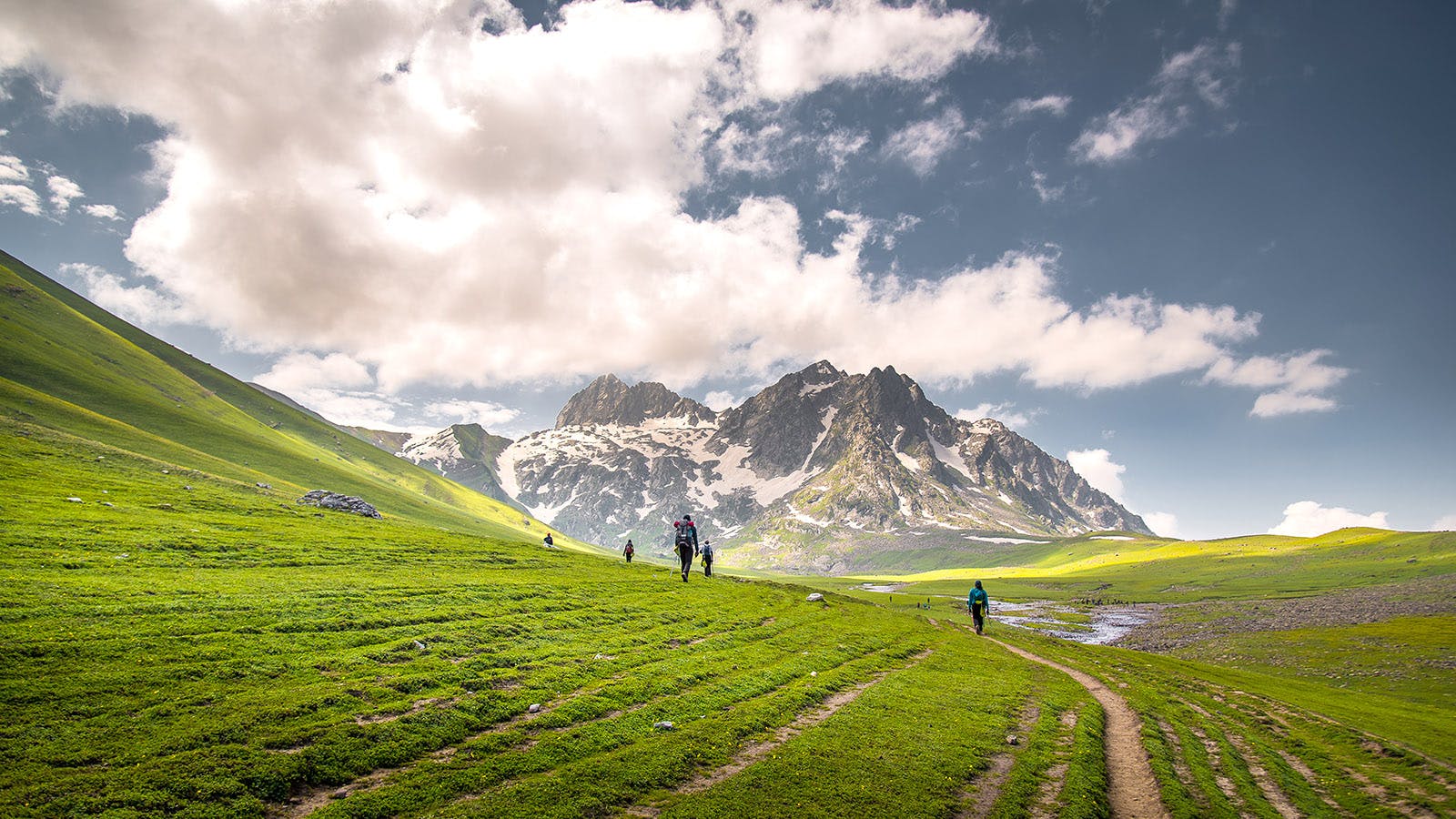
The Satsar Valley landscape ahead is captivating. Isolated mountains stand in front. To your left are a few deep craters.
Picture by: Rajshree
The Vast Satsar Meadows

From the Gadsar Pass which is your highest point, when you look back, you get to see the picturesque lakes of Kishansar and Vishnusar.
Picture by: Swaminathan Jayaraman
The Iconic Gadsar Pass

Most of the campsites on the Kashmir Great Lakes trek are in open meadows where streams are flowing close by.
Picture by: Jones
Open Camping Grounds
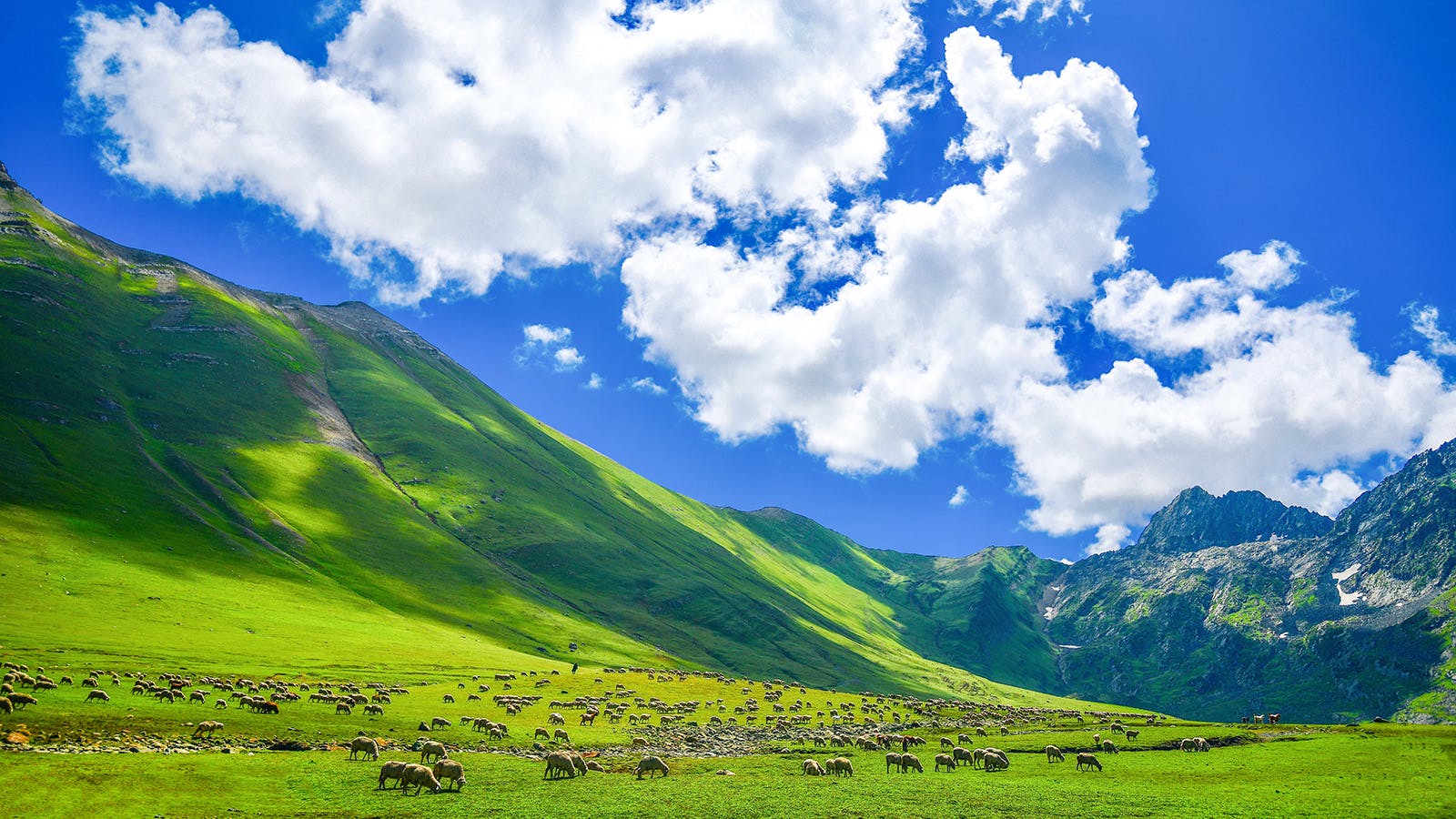
Do not go by just the photos of these endless meadows. You walk through some lovely stretch of the meadows. However, there are multiple ascents and descents to climb on the trek.
Picture by: Gaurav shah
Endless Meadows
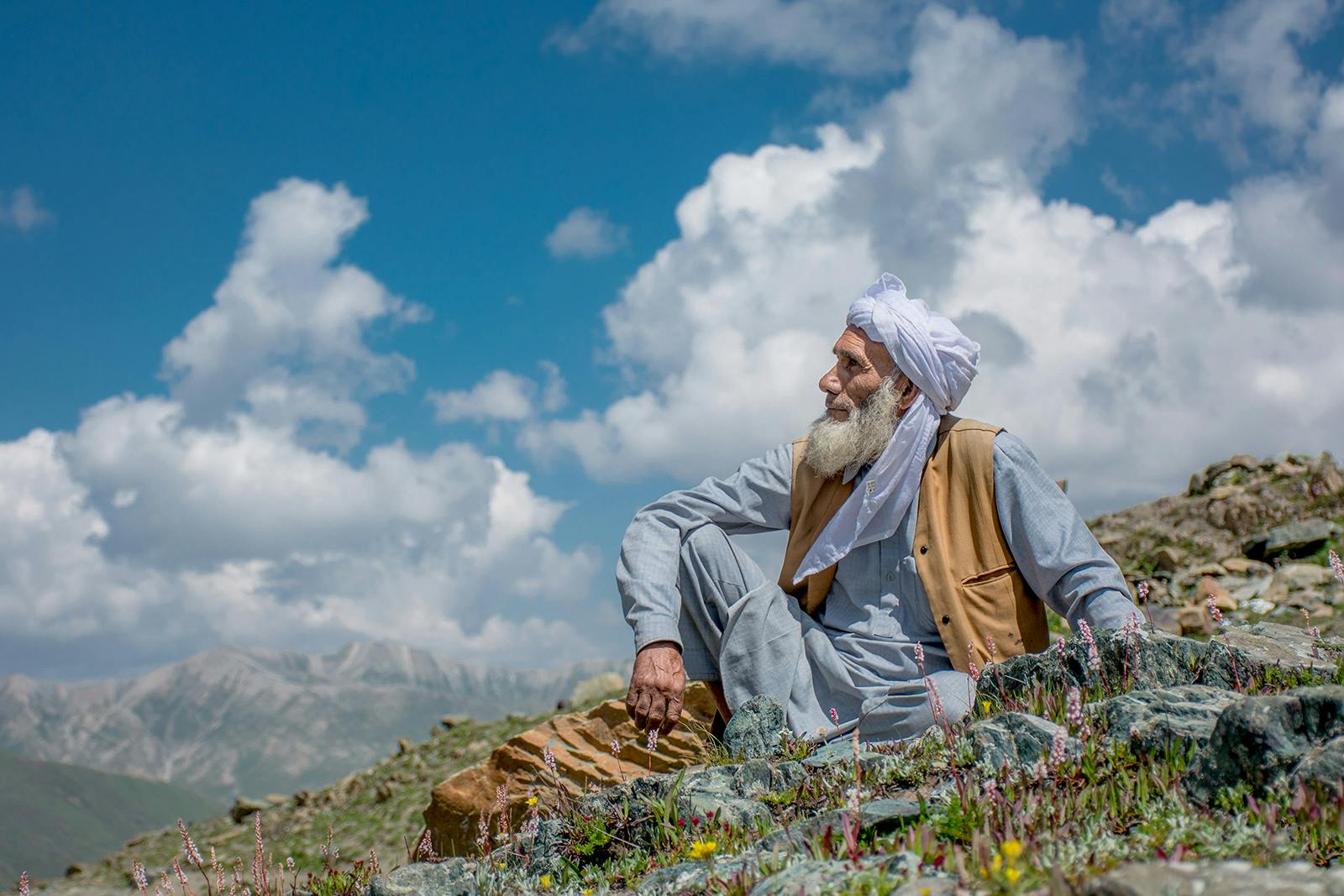
You will see Gujjars on the trail taking their cattle for grazing.
Picture by: Vishwajeet Chavan
A Local Shepherd
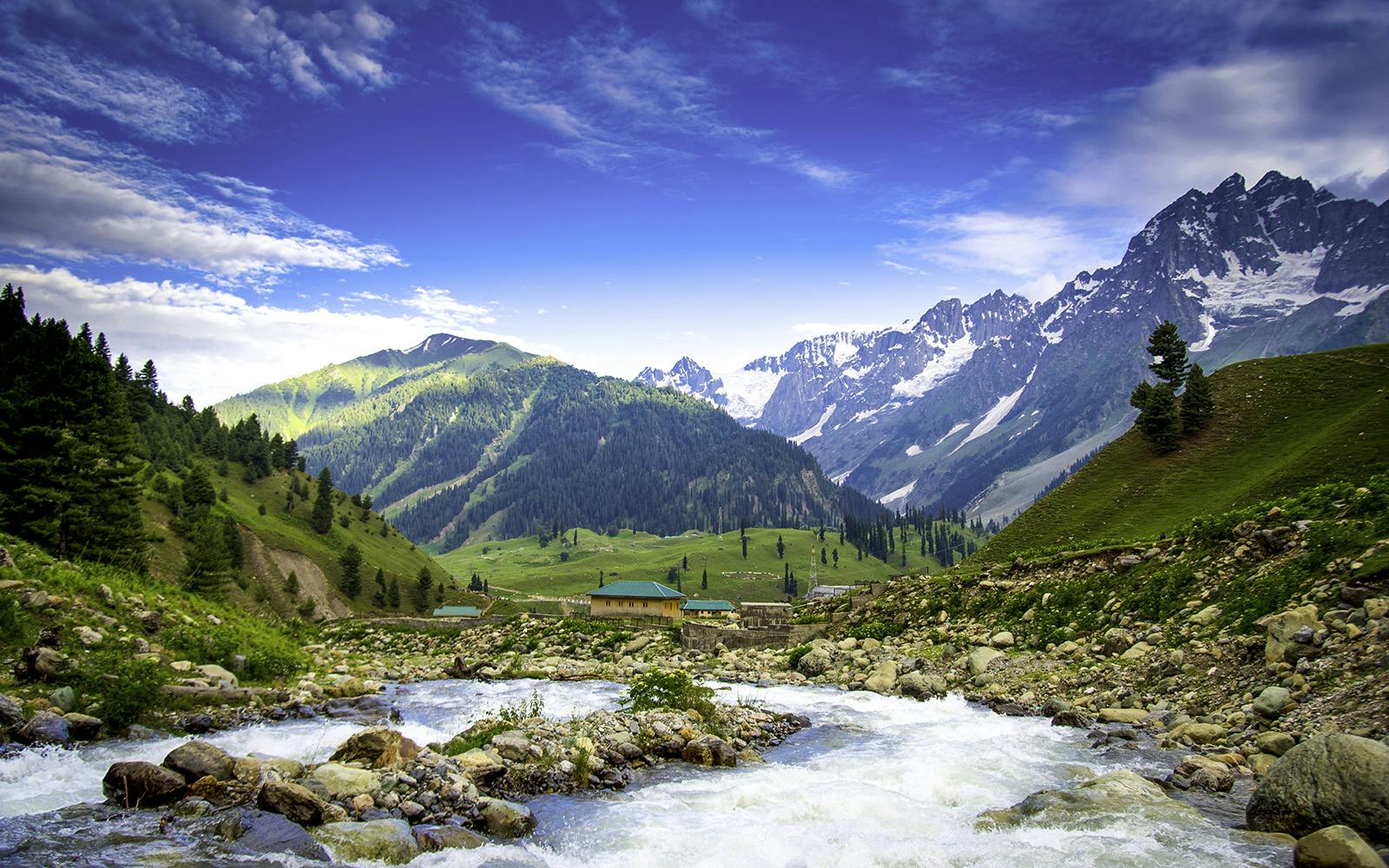
When you start your trek at Sonarmarg, the Thajiwas Glacier becomes more visible.
White Glaciers
Trek Trivia
Things Nobody Tells You About Kashmir Great Lakes Trek
- Wonder of Wangath Ruins
- Surprise Elements on KGL
- Mythological Significance
Naranag Temple
The Naranag temple was built by Lalitaditya Muktapida of the ancient Kayastha Naga Karkota Dynasty. It is believed to be built in the honour of Shiva. Multiple carvings which can be linked to Shiva are found here, and so is the Shivaling.
Another field of study also believes it to be dedicated to the Nagas (divine snakes in Hindu mythology). These Nagas were widely worshipped in ancient times in the region which is now Kashmir. These were also said to be the primary religion during that time. The Karkota dynasty members were religious devotees of the Nagas.
One of the most famous archaeological sites in India, it is built with the characteristic Aryan style of the 8th century. Now lying mostly in ruins, it is still a beautiful archaeological and religious place.
Trouts, the only Life in Kishansar and Vishansar Lakes
Vishansar translates to ‘The home of Vishnu’ and Kishansar means ‘the lake of Krishna’.
Something a lot of people don't know is that the Kishansar and Vishansar lakes are connected. The same water flows in both.
Interestingly, no algae formation can be found in these two lakes. As we know, algae play a significant role in supporting plants and other life in lakes. However, the lack of this algae means that nothing can grow in this lake. Only one life-form has made the exception! Even without algae, trout fish can live perfectly well here.
Gadsar lake, on the other hand, due to the algae growth, always appears green.
In recent years, fishing for these trout grew into a famous activity. However, because of this, the population in the lakes is depleting.
Harmukh, the Home of Lord Shiva
As per some local mythology, it is said that Shiva resides at the top of the Harmukh mountain, at a height of more than 16,000 feet.
The myth goes that once, a saintly man tried to climb this mountain to meet Lord Shiva. He met with harsh conditions on this powerful mountain, and yet tried to reach the peak. His efforts continued for a long period of 12 years. However, he was unable to achieve this, but during his efforts, achieved nirvana and disappeared from there.
A Yatra (pilgrimage) takes place up this mountain in honour of the god. The pilgrims climb up to 14,000 ft to worship Shiva.
The first known expedition led to Harmukh was in 1856 by Thomas Montgomerie for the Great Trigonometric Survey. What is interesting about this, however, is that the world-famous K2 was first discovered on that expedition.
A mountain is as massive as K2 is hidden from many of the local villages, which is why no one around knew of its existence. It turned out, unlike the other mountains in the region, this one, therefore, didn’t have a name. The survey team named it K2 to later change it to the local name. However, the lack of such a name is why the mountain has ever since been K2.
Leaving Mountains Better
Green Trails is our promise to leave the mountains better. We have removed over 1 lakh kilos of the waste left behind by others on trekking trails. Yet this is a small percentage of what we do. Green Trails dives into reducing the use of resources, reducing our carbon footprint and bringing about a change in the daily practices of our trekkers too.

5 Reasons Why Indiahikes
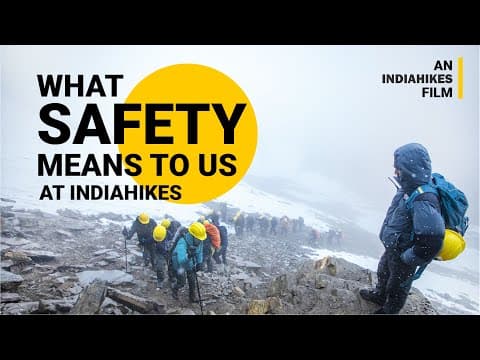
When we brought out new trails in Indian trekking, safety came with us. Back in 2012, we were the first to introduce microspikes, and two years later, pulse oximeters became standard thanks to us. Nobody does safe treks like Indiahikes. In the mountains, emergencies don't care who you're with – everyone knows that when trouble hits, you look for the yellow tents of Indiahikes.
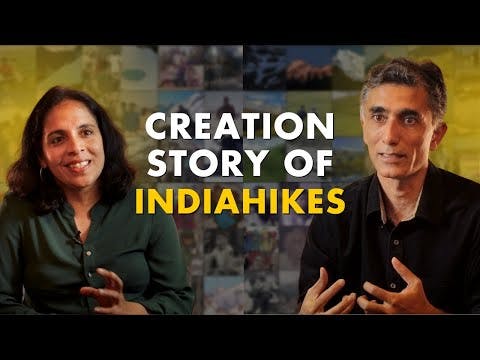
We are pioneers in trekking. Since 2007, we have brought out treks that have become India's most famous treks: Roopkund, Rupin Pass, Buran Ghati, Kedarkantha, Kashmir Great Lakes, Tarsar Marsar, Brahmatal, Phulara Ridge—the list goes on. In 2023 alone, we brought out five new treks in Indian trekking. We know treks better than anyone . This comes directly from the reason why Indiahikes was born: to bring out trek information and enable trekkers to trek on their own.
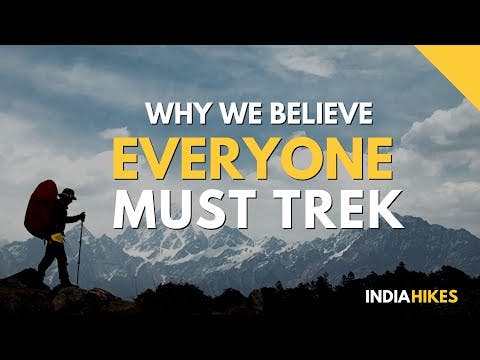
More than 25,000 people trek with us every year. We are the largest trekking organisation in India. 24% of our trekkers come back to trek with us every year. Over 4,000 students from the top educational institutions trek with us every year. Aside from this, families with children choose to trek with Indiahikes knowing that our treks are the safest. We have taken over 8000 children trekking so far, and the number continues to grow.
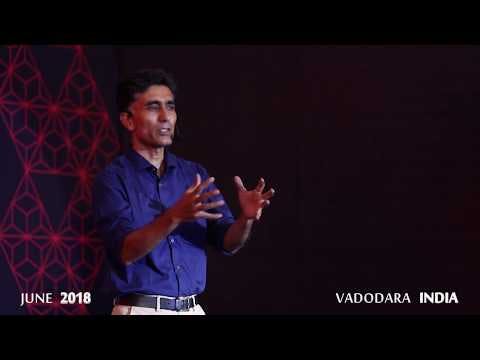
We focus on designing transformative experiences. Our trek leaders conduct thought-provoking exercises that help you reflect and contemplate. This impact stays with you for a long time. Trekkers return feeling energised, more confident, or developing abilities to deal with difficulties. Many have changed careers, rethought their core values, become more humble, shown gratitude to others, or started a new fitness journey.
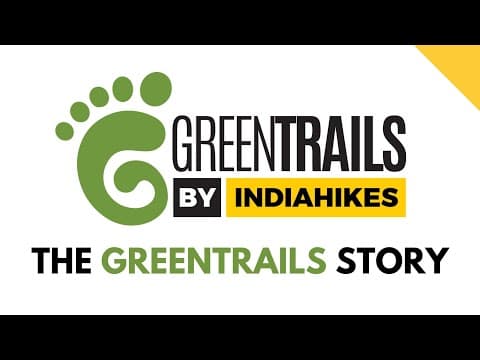
Since 2012, we have pioneered sustainable practices that have become standard in trekking. Using eco-bags, our trekkers have cleared over 120 tonnes of litter from the mountains. We do not carry packaged foods; instead, we serve freshly made food. We do not light campfires; we carry coal to light angethis to keep you warm. Our bio-toilets not only keep our toilets odour-free but also enrich the soil. When you trek with us, you leave mountains better.
Indiahikes Features
You’re guarded with our trek again philosophy
If you are unable to complete a trek, or if you love a trek, you can repeat it with us anytime. You don’t have to pay us for it. See our thoughts behind this here .
Daily 3-time health checks keep you safe at any altitude
Our thrice-a-day oxi-metre checks keep altitude sickness at bay, never allowing you to reach a point where you need evacuation.
Join any group, they are all women-friendly groups
With around 30% of our trekkers being women, all women, including those travelling solo are comfortable to join any of our groups.
Request Jain/Vegan-friendly food
Our kitchen teams understand your needs as a vegan (or a Jain). We will take special care of your food, even in the remote Himalayas.
Be comfortable and sustainable with bio toilets
We have specially designed bio toilets to ensure you have no sight or smell in toilets, at the same time making sure the toilets cause no harm to the fragile ecosystem we trek in.
Fresh, nutritious food at every camp
We’ll admit it. Our love for food surpasses our love for minimalism. Expect freshly cooked, multi-cuisine food at all camps, designed to meet your nutritional requirements and keep your taste buds happy!
Alternative Treks To Do
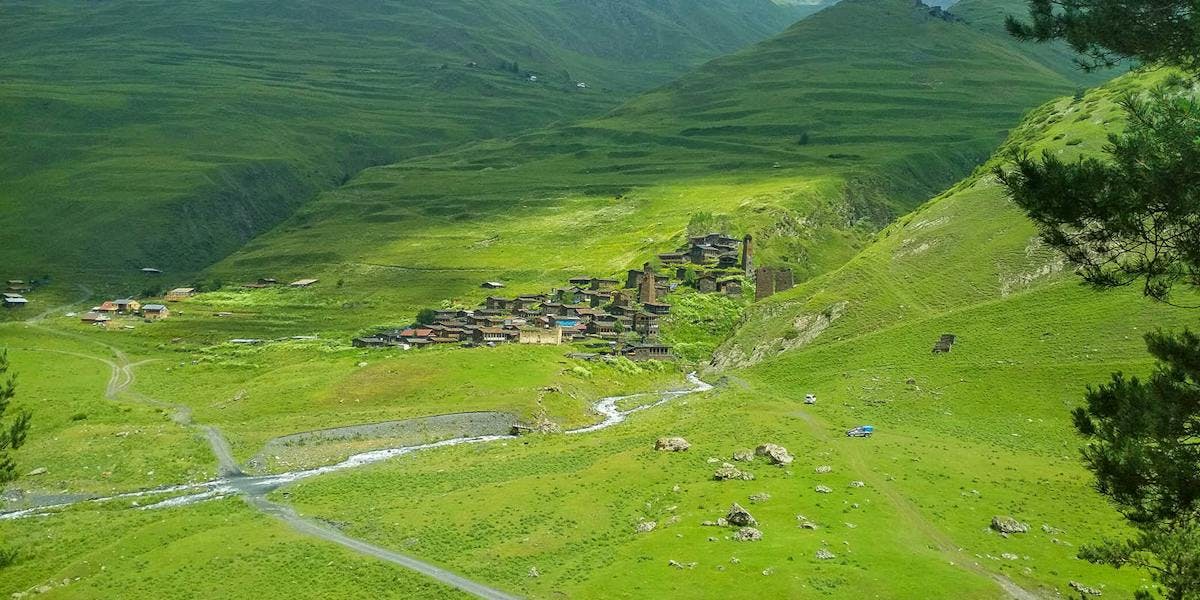
Georgia Atsunta Pass Trek
Get Trek Info
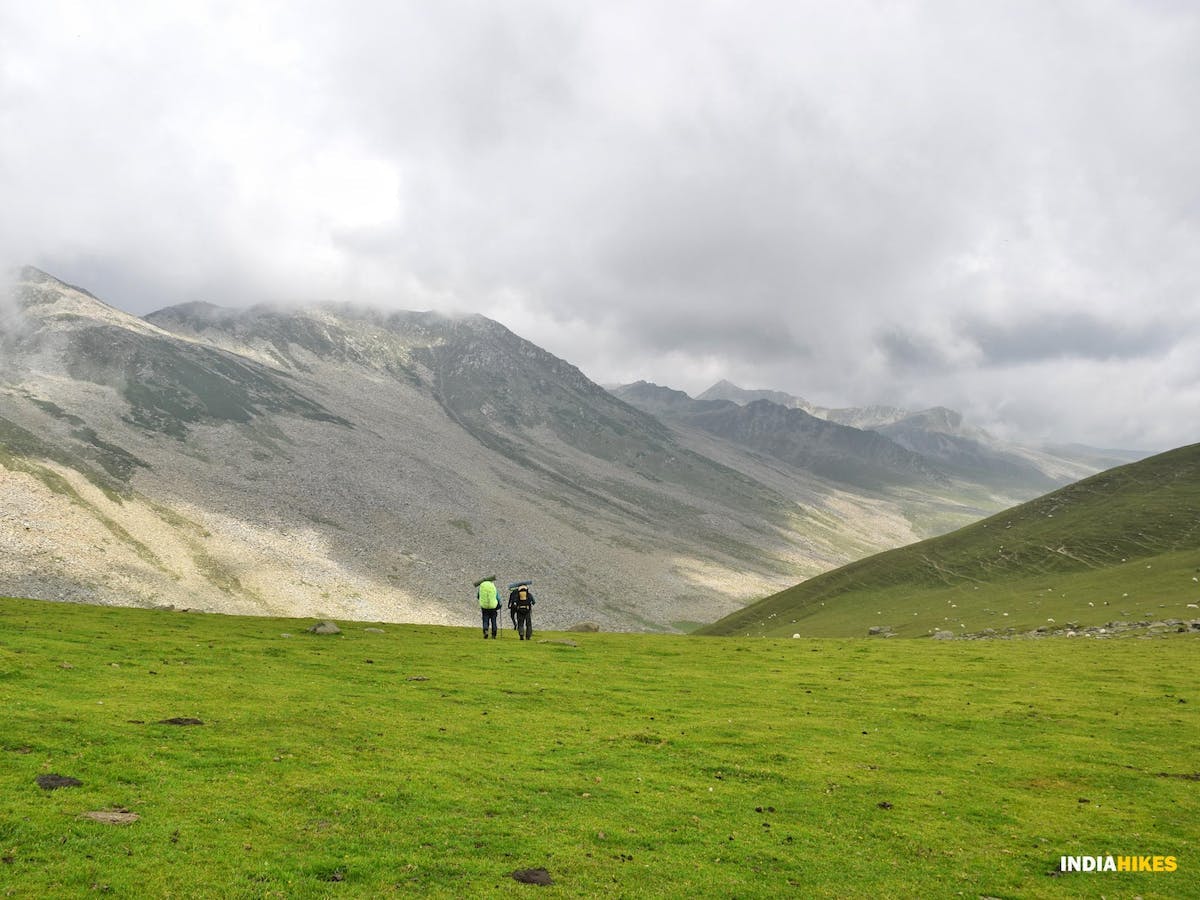
Pir Panjal Lakes Trek
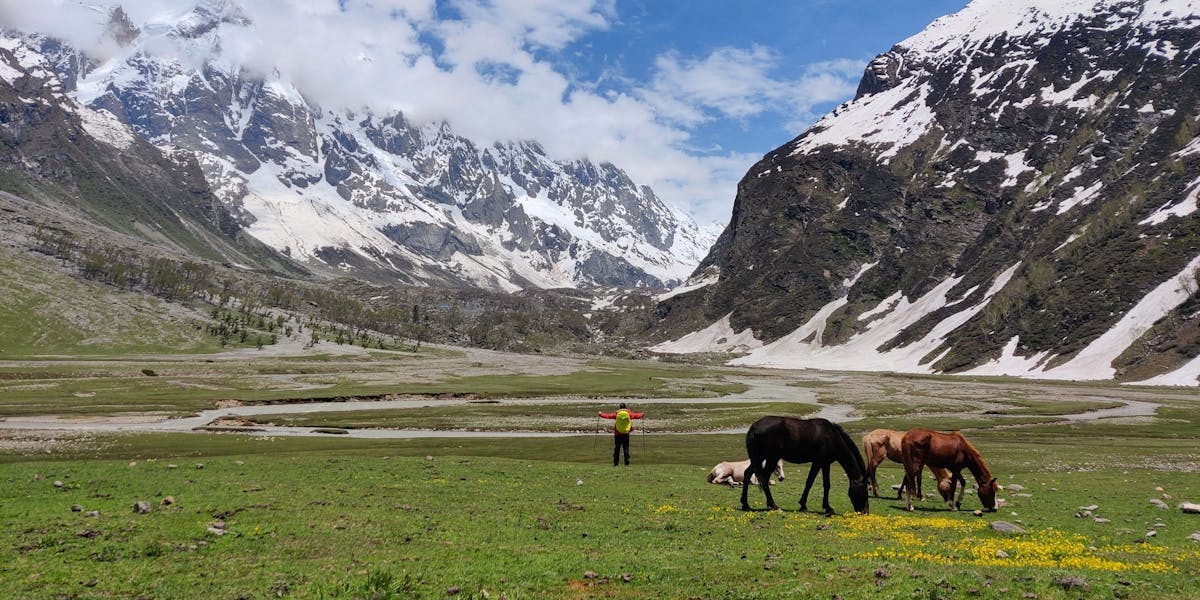
Brammah Valley trek
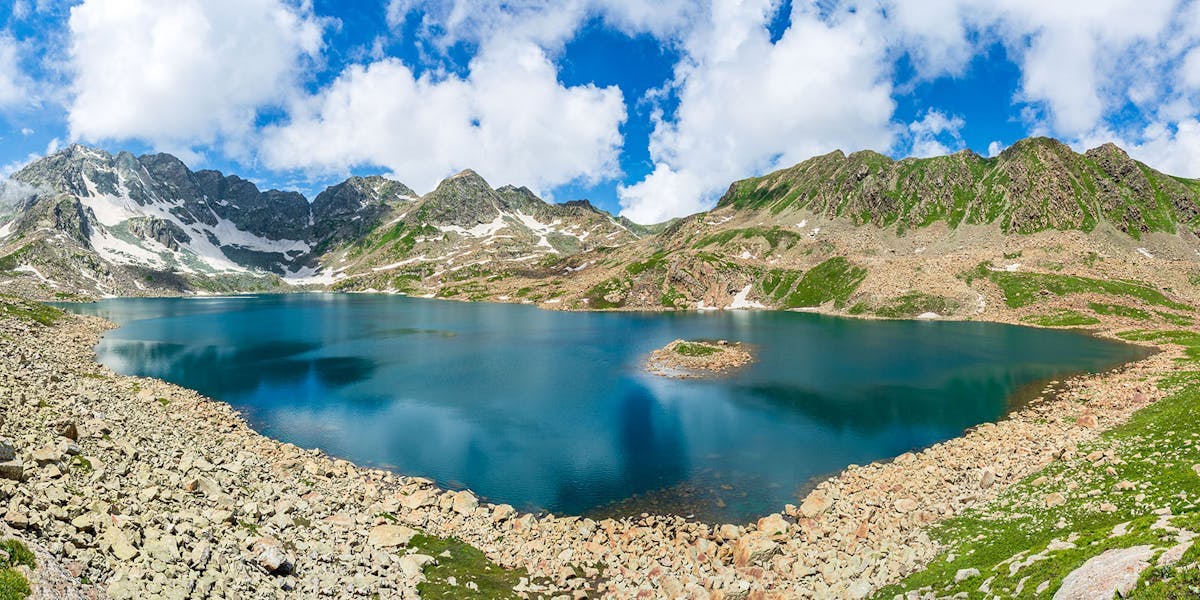
Bodpathri Meadows Trek
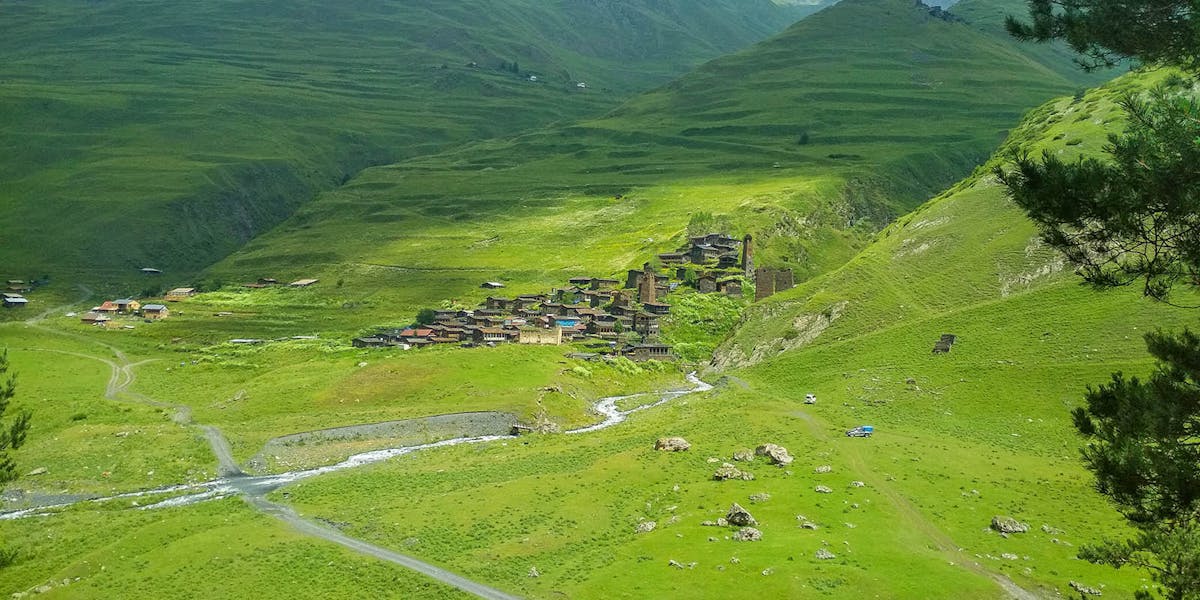
Georgia Atsunta Pass...
The flower bouquet trek of Georgia

Pir Panjal Lakes Tre...
The Grandest Trek in J&K with 10 lakes, 4 meadows and endless jaw-dropping moments
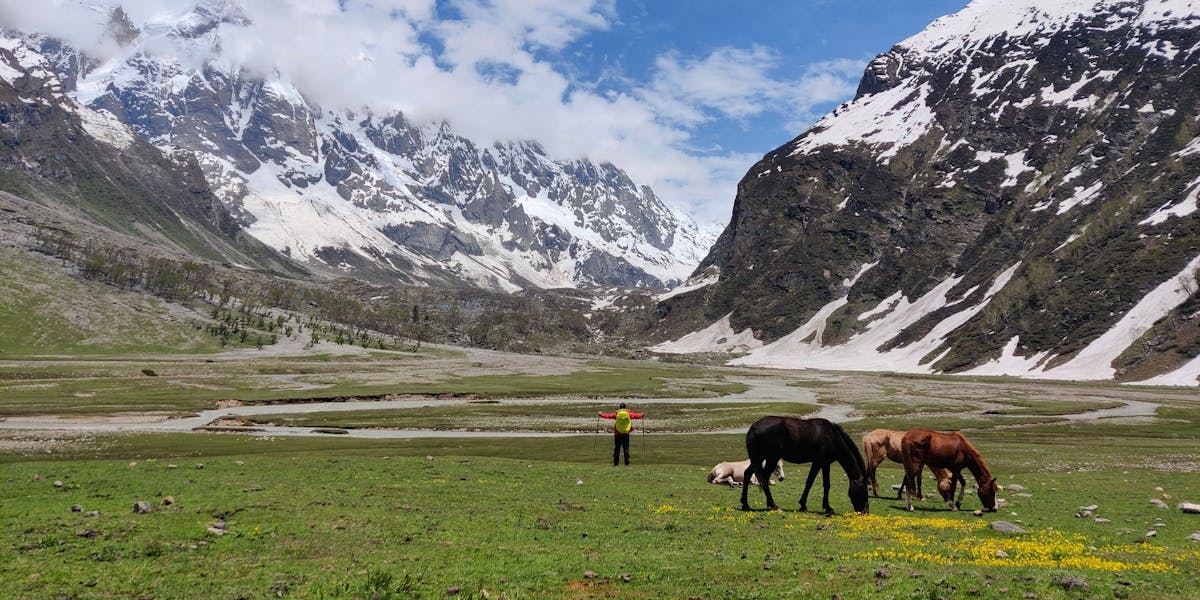
Jammu and Kashmir's new trek discovery
Sign up for our much loved Weekly Mailer
We have terrific trekking tips, trek updates and trek talks to look forward to
Treks by Categories
Treks by season, treks by month, treks by duration, treks by difficulty.
- Easy - Moderate
- Moderate - Difficult
Treks by Region
- Uttarakhand
- Himachal Pradesh
- Lahaul and Spiti
- Jammu & Kashmir
- West Bengal
- Chhattisgarh
Treks by Experience
- Family Treks
- Stargazing Treks
- Senior Treks
- Adventure Therapy
- Summer Camps
- Youth Camps
- Cancellation policy
- Work with us
- Our sustainability practices
- Privacy Policy
- Terms & Conditions
080 468 01269 Mon to Sat - 9.30 AM to 7.30 PM Sun - 9.30 AM to 6.30 PM
Bengaluru Office
139, Defence Colony Road, Defence Layout, Sahakar Nagar, Bengaluru, Karnataka 560092
Dehradun Office
No.85/10, Neshvilla Road, Dehradun - 248001
© 2024 Indiahikes Private Limited
All images are copyrighted by their respective authors.

Kashmir Great Lakes Trek
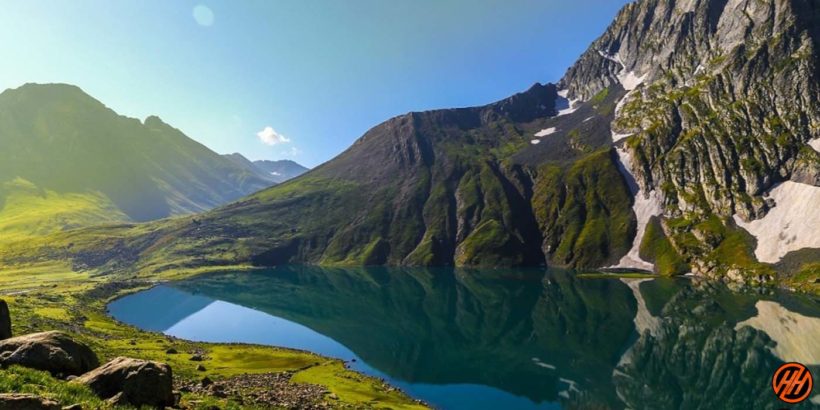
Description
Reviews (5), things to take, available dates, include / exclude, the kashmir great lakes trek is a perfect combination of adventure and natural beauty and is a must-do for any trekking enthusiast. 2024 -complete information .
Kashmir Ghati has always been compared to heaven because of its exotic beauty and fascinating places; untouched and serene. The Kashmir Great Lakes is an extremely beautiful trek because of “eight Alpine Lakes” in a series attitude is 13850 feet.
The Kashmir Great Lakes Trek is a popular trekking route in the Indian state of Jammu and Kashmir. The trek takes you through stunning alpine meadows, high-altitude lakes, and breathtaking mountain passes. It is considered to be one of the most beautiful treks in India.
During the trek, you will pass through several beautiful lakes, including Gangabal Lake, Nundkol Lake, and Tarsar Lake. You will also cross high-altitude mountain passes, such as the Nichnai Pass and the Gadsar Pass, which offer stunning views of the surrounding Himalayan peaks.
The best time to undertake the Kashmir Great Lakes Trek is from July to September when the weather is pleasant and the trekking conditions are favorable. However, it is important to note that the region is prone to occasional landslides and flash floods, so it is always advisable to check the weather forecast before starting the trek and to take appropriate precautions.
Their beauty is incomparable! During the trek, go through the lavish meadows, get panorama views of the mountains and explore the aqua-green alpine lakes. Certainly, each day on this trek is perfect!
The bliss is the heavenly meadows of Kashmir. A number of pine and maple trees grow here. Further, below Gadsar pass wildflowers grow in abundance and ahead the fields of Satsar are plain.
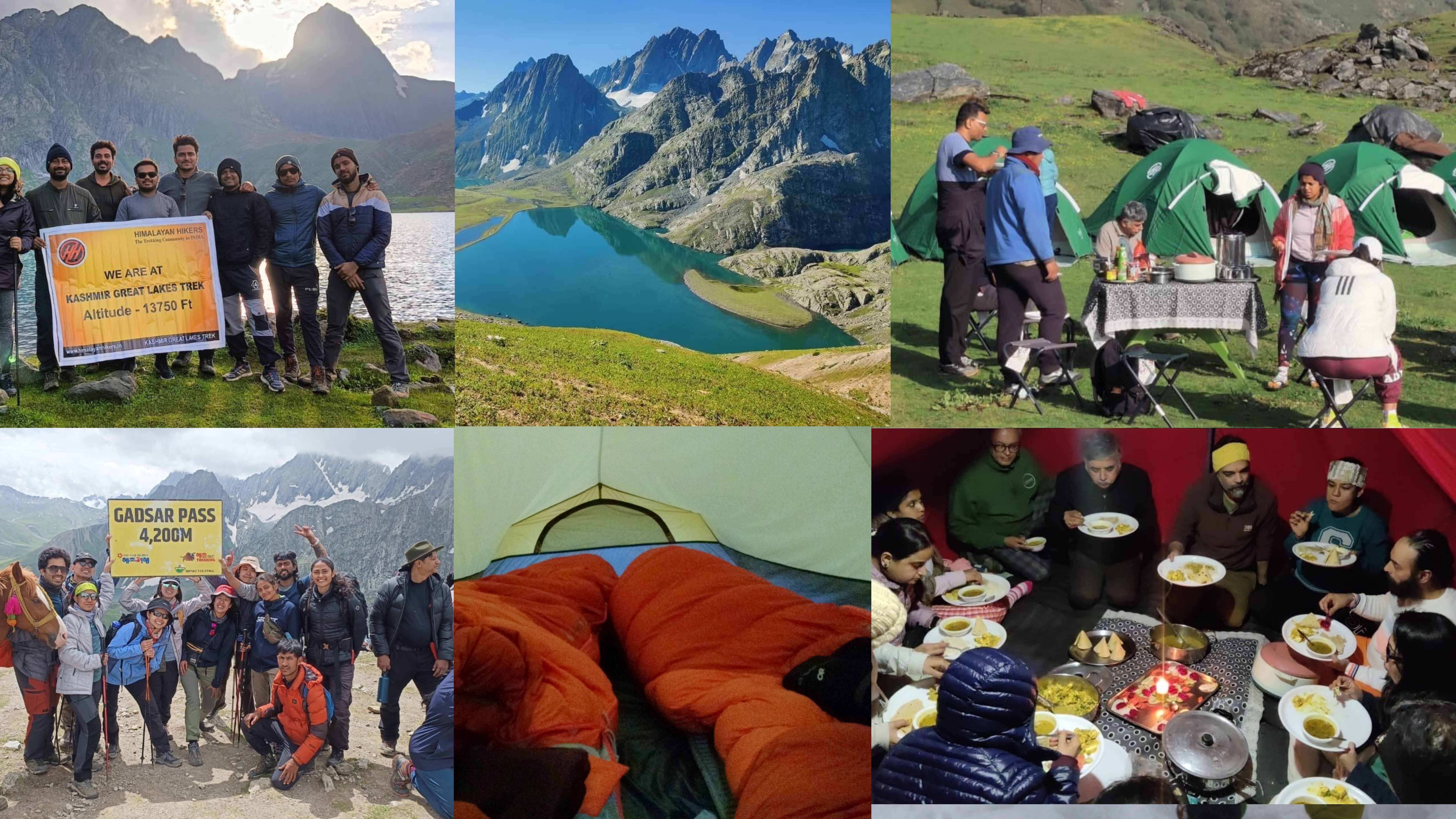
So, experience the grandeur of the Kashmir Great Lakes Trek and add it to the Diary of your Himalayan Journey!
On the trek every day you can see 70-degree views, beautiful meadows alpine lakes.
The Kashmir Great Lakes trek is a beautiful trek in the Himalayas, offering stunning views of alpine meadows, high-altitude lakes, and snow-capped peaks. It is difficult to say which part of the trek is the best as every day on the trail offers something unique and memorable. However, here are a few highlights of the Kashmir Great Lakes trek:
- Nichnai Pass: This is the first high-altitude pass on the trek, which offers panoramic views of the valley below and the surrounding peaks.
- Vishansar and Kishansar Lakes: These twin lakes are the most picturesque spots on the trek, with crystal clear water reflecting the snow-capped peaks in the background.
- Gadsar Pass: This is the highest pass on the trek and offers stunning views of the surrounding mountains.
- Tarsar Lake: This is another beautiful high-altitude lake, surrounded by lush green meadows and towering peaks.
- Sonamarg: The trek ends in Sonamarg, a picturesque hill station known for its stunning natural beauty and adventure activities like skiing and trekking.
Overall, the entire Kashmir Great Lakes trek is a feast for the senses, with breathtaking landscapes, diverse flora and fauna, and warm hospitality of the local people making it a once-in-a-lifetime experience
Key Points of Kashmir Great Lakes Trek-2024
Duration: – 06 Nights 07 Days from Srinagar to Srinagar
Base camp: – Shitkadi- Sonamarg
Monsoon Temperature: – Day (5°C to 17°C) Night (2° C to 8° C)
Altitude- Kashmir Great Lakes Trek – 13785 Feet
Best Time: – July August, September
Trek Level: – Moderate
Trek distance: – On foot 68 Km – By taxi 125 km
Group Size: 0 5 to 25 people
Kashmir Great Lakes Trek Day by Day Short Itinerary, Altitude, and Trek Distance|2024
DAY 01- Pickup Point TRC –Near Krishna Dhaba Srinagar| Pick-up time 1:00 pm | Drive to Shitkai Camp Himalayan Hikers ,
Drive Distance: 90 km | Duration: 03-04 hours | Altitude 8,625 ft | Overnight Stay Camp– Twin Sharing
DAY 02- Trek from Shitkadi to Nichani Thach | Trek Distance: 12 km | Trek Time: 6/7 hours | Altitude 11,605 ft | Overnight Stay Camp – Twin Sharing
DAY 03- Trek from Nichani to Vishansar via Nichani pass | Trek Distance: 13.5 km | Trek Time: 6/7 hours | Altitude 13,225 ft | Overnight Stay Camp – Twin Sharing
DAY 04 – Trek from Vishansar to Gadsar Lake Via Gadsar pass view point 13,785 ft| Trek Distance: 16 km | Trek Time: 7/8 hours | Altitude 10,725 ft | Overnight Stay Camp – Twin Sharing
DAY 05- Trek from Gadsar Lake to Satsar Lake| Trek Distance: 11 km | Trek Time: 5/6 hours | Altitude 11,995 ft | Overnight Stay Camp – Twin Sharing
DAY 06- Trek from Satsar Lake to Gangabal via Zaj pass viewpoint | Trek Distance: 09 km | Trek Time: 5/6 hours | Altitude 11,885 ft | Overnight Stay Camp – Twin Sharing
DAY 07- Trek from Gangabal Lake to Naranag Road head | Trek Distance: 13 km | Trek Time: 5/6 hours | Altitude 7,805 ft | Same Day Drive to Srinagar TRC- Distance: 2 hours | 70 km
The best part KGL Trek view of the Gadsar pass trek in Kashmir Great Lakes Trek
Get Amazed On Kashmir Great Lakes Trek, All of the lakes are amazing but Gadsar is untouched because of its high altitude (13800 feet above.
It lies against a glacier and is surrounded by a meadow where wildflowers grow in abundance. Therefore, it perfectly adds beauty to the picturesque valley.
The high Gadsar Pass offers lovely valley views and offers the sight of Kishansar and Vishansar– The two Lakes. On the other hand lies lavish grasslands of Gadsar valley.
The Kashmir Great Lakes trek is one of the most popular treks in India, and for good reason. Here are some reasons why people undertake this trek:
- Scenic Beauty: The trek offers breathtaking views of the high-altitude lakes, snow-capped peaks, and verdant meadows that are unique to the Himalayas. The landscape changes with every step, making it a photographer’s delight.
- Adventure: The trek is challenging and involves long hours of walking over rugged terrain. It offers a chance to push oneself physically and mentally and experience the thrill of trekking in the high mountains.
- Cultural Experience: The trek passes through remote villages where trekkers can interact with locals and get a glimpse of their way of life. This is a great opportunity to learn about the local customs, traditions, and cuisine.
- Wildlife: The trek passes through some of the most bio-diverse regions in the Himalayas, and trekkers can spot a variety of wildlife, including brown bears, musk deer, and snow leopards.
- Spiritual Experience: The trek takes you through some of the most pristine and serene landscapes in the Himalayas, offering a chance to connect with nature and experience a sense of inner peace and tranquility.
Overall, the Kashmir Great Lakes trek is a great way to explore the beauty of the Himalayas and experience the thrill of adventure in a pristine natural environment.
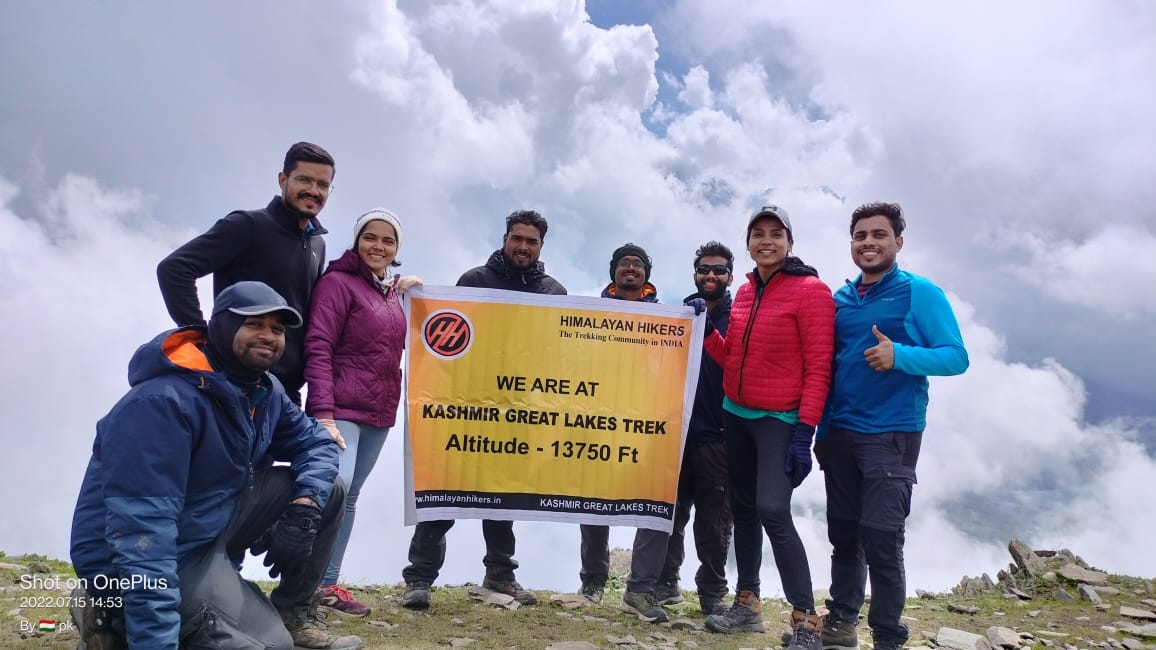
If you are planning to do the Kashmir Great Lakes trek, here are some main points to keep in mind:
- Trekking Season: The best time to do this trek is from July to September when the weather is pleasant and the skies are clear. However, the weather can be unpredictable, and it is important to be prepared for rain, snow, and cold temperatures.
- Fitness Level: The Kashmir Great Lakes trek is a moderate to difficult level trek, and it requires a good level of fitness. You should be able to walk for 6-7 hours a day over uneven terrain and at high altitudes.
- Altitude Sickness: The trek involves climbing to high altitudes, and altitude sickness can be a problem for some trekkers. It is important to acclimatize properly, drink plenty of water, and take necessary precautions to prevent altitude sickness.
- Permits: You need to obtain a permit from the local authorities to undertake the trek. The permit is usually obtained by the trekking agency you choose to go with.
- Equipment: You need to have proper trekking equipment like trekking boots, warm clothes, rain gear, and a good quality backpack. It is important to choose the right equipment as it can make a big difference in your comfort level on the trek.
- Environment: It is important to respect the environment and follow the ‘Leave No Trace’ principles. You should not litter or damage the fragile ecosystem of the Himalayas.
- Safety: You should always trek with a guide and ensure that you have proper communication equipment in case of an emergency. It is also important to carry a first aid kit and any necessary medication with you.
By keeping these main points in mind, you can have a safe and enjoyable trekking experience in the Kashmir Great Lakes region.
Best Time to Do Kashmir Great Lakes Trek
Kashmir Great Lakes Trek is a very beautiful and moderate trek in the Kashmir Valley, Kashmir Great Lakes Trek is great for those people who have a great passion for mountaineering. Hills and consider it a special purpose in their life.
We have been doing this trek for years Kashmir great lakes trek, we have every experience related to this trek. The right time to do this trek is from 5th July to the last of September, especially in the months of June, when green and colorful bugyal meadows, snow is found in abundance here, which makes your trek very memorable
During the day the temperature of the Kashmir Great Lakes trek is around ( 05°C to 18 °C and during the night the temperature comes down to 03 °C to 08 °C which is not bad.
You will never consider yourself boring in Kashmir great lakes trek, this trek can give you nothing but joy, You will get to see the culture and beauty of Kashmir valley in this trek which will always keep you connected to the mountain.
How Difficult Is Kashmir Great Lakes Trek?
The Kashmir Great Lakes trek is considered to be of moderate difficulty. It involves walking through various terrains, including meadows, forests, and rocky paths, with some steep ascents and descents. While it is not categorized as extremely challenging, it still requires a certain level of physical fitness and endurance.
Here are a few factors to consider regarding the difficulty level of the trek:
- Distance: The Kashmir Great Lakes trek covers a distance of approximately 68 kilometers (39 miles) over a span of 6-8 days, depending on the itinerary. This requires walking an average of 10-16 kilometers (5-6 miles) per day, which can be physically demanding if you are not accustomed to long-distance trekking.
- Altitude: The trek reaches an altitude of around 4,200 meters (13,780 feet) at its highest point. Acclimatization is crucial at such altitudes to prevent altitude sickness. It is recommended to take it slow, drink plenty of water, and listen to your body during the trek.
- Terrain: The trail includes steep ascents and descents, rocky sections, and uneven paths. Some sections may be slippery, especially during monsoon or post-monsoon seasons. Proper hiking boots with good grip are essential to navigate these terrains.
- Weather: The weather in the Kashmir region can be unpredictable. It is advisable to trek during the summer months (June to September) when the weather is relatively stable. However, even during this period, you may encounter rain, fog, or chilly temperatures, particularly at higher altitudes.
While prior trekking experience is not mandatory, it is recommended that you have a basic level of fitness and stamina to enjoy the trek comfortably. Regular cardiovascular exercises, such as jogging, cycling, or hiking, can help improve your endurance. It’s also essential to pack appropriate clothing, carry necessary supplies, and follow the instructions of your trek leader or guide to ensure a safe and enjoyable experience.
Kashmir great lakes trek safe for me?
Yes, Kashmir Great Lakes Trek is a safe trek if you are going with a good trekking team which you must know before booking yourself, It is important for you to know whether the bow trekking organization with which we are going is right or not,
And if possible, trek with a local trekking organization, you can do the same help all the time. then your trek can be very good and memorable
The minimum age required to trek the Kashmir Great Lakes trek is 15 years and the maximum is 55 years. The rest depends on your fitness.
Unusual Attractions of KGL Satsar Lake in Kashmir Great Lakes Trek
The meadows of Satsar are surreal and a stream flows through them. Satsar Lake is an addition to the beauty of the valley.
In addition, another attraction of this trek is the descent from Gangabal.
During the downhill, the trek gets the most surpassing views. Look backward and spot lofty Harmukh peak.
Further witness yellow flowers growing together and a single hut, this setting is idyllic. These settings can only be found in Kashmir.
Also, The Satsar Lake and green Bugyal are more beautiful Greenland in Kashmir valley; this is beautiful place stands in between high snow-covered peaks which together make an excellent sight.
On the other hand, the meadows remain covered in snow.
So, consequently, it turns out to be the most fantastic Monsoon trek in Kashmir valley. And, also an excellent Skiing destination.
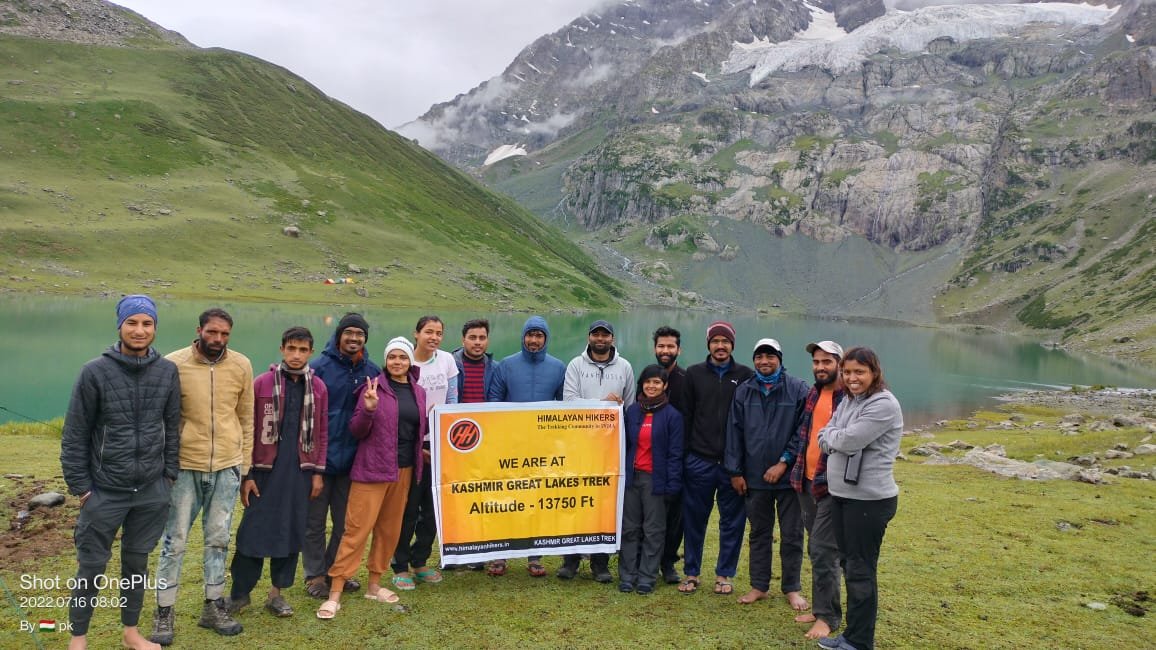
Why choose the Kashmir Great Lakes Trek?
Before heading towards the itinerary, it is really essential to perceive the reason behind choosing Kashmir great lakes trek.
See firstly, the trekking distance is a total of by taxi 125 Km from Srinagar to Srinagar and on foot 68 km which is to be covered in 6 nights and 7 days. From Srinagar to Srinagar
Kashmir Great Lakes trek is a low altitude mountain trek Altitudes is 13850 feet
The Starting trail is easy to moderate as compared to other treks this is a Moderate trek. So this trek is best for family and beginners.
Need proper gear & clothing for sub-zero temperatures?
Probably, You got to see so many heavenly bodies at one place like the panoramic view of the Himalayan ranges in Kashmir Ghati, you can see pine forests, different varieties of flora and fauna beautiful twin lakes surpassing bona fide Kashmiri culture.
Also, Do spare time in Interaction with our local team, and you will get to know about some of the ancient tales of Indian mythology and our local cultures, there is good ideas for trekkers
Beautiful landscapes so carry proper photo gear and extra battery backup.
The backpack should not exceed 12 kg only
Trekkers carry a photo ID, Adhar Card, Passport, Visa, Medical certificate, and trek insurance for entry at forest check posts on the trek it is very important
What should you keep in mind for the Monsoon trek to Kashmir Great Lakes Trek?
Kashmir Great Lakes Trek is as good as it is said, you also need to be prepared., Kashmir Great Lakes Trek is a Moderate trek that starts from Srinagar and ends after the trek same point,
So what are the special things to keep in mind before coming on this trek?
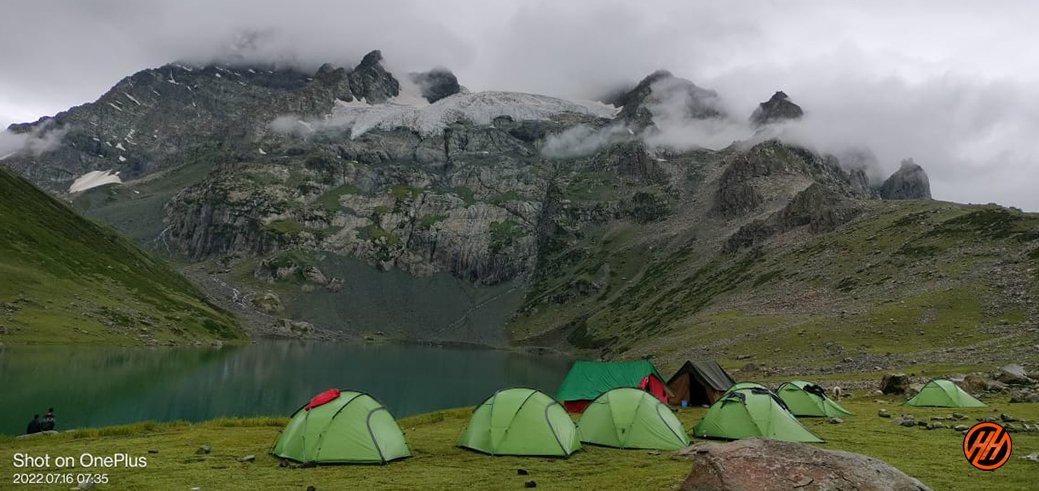
Summer Season
- Summer trek to Kashmir Great lakes Trek is very special, the view and the temperature are all favorable to you
- For summer trek, you have to bring only normal clothes, so that your trek can be good, there is no need for hot clothes, but in hiking it is also necessary to bring all the equipment which is necessary for you.
- It is necessary to have 2 pairs of clothes from trekking, especially the poncho, you will have to bring every season
- In the summer season, the temperature is always normal, so there is no need for hot clothes.
Monsoon Season
- During the monsoon season, it rains occasionally during the Kashmir Great lakes Trek, especially in the Kashmir valley, so if you have dry clothes here, it is very good, even when wet, it dries quickly.
- At this time you have to bring at least 3 pairs of clothes, for the monsoon trek you do not have to bring too warm clothes, at this time you, hiking pants and t-Sart, I can trek
- It’s only a little cold in the morning and evening and the day is a good temperature for you
- Before going on any trek, it will be easy for you to take information related to each season.
- Trekkers need to know about these, you can ask us anytime like, trek route, trek map, temperature, weather conditions, difficulty level, trek starting point, endpoint, transport, view of the trek, best time to visit, How to reach, trek distance etc, Trek Location, keep this information before going
ATM Point & Mobile connectivity in Kashmir Great Lakes Trek
ATM POINT: Withdraw money before your journey; Srinagar and Sonamarg is the last point where you will find ATMs.
Mobile Connectivity: There will be no networks during the trek, in Sonamarg your device will receive the networks. So make sure you finish all your important work and calls before starting the trek.
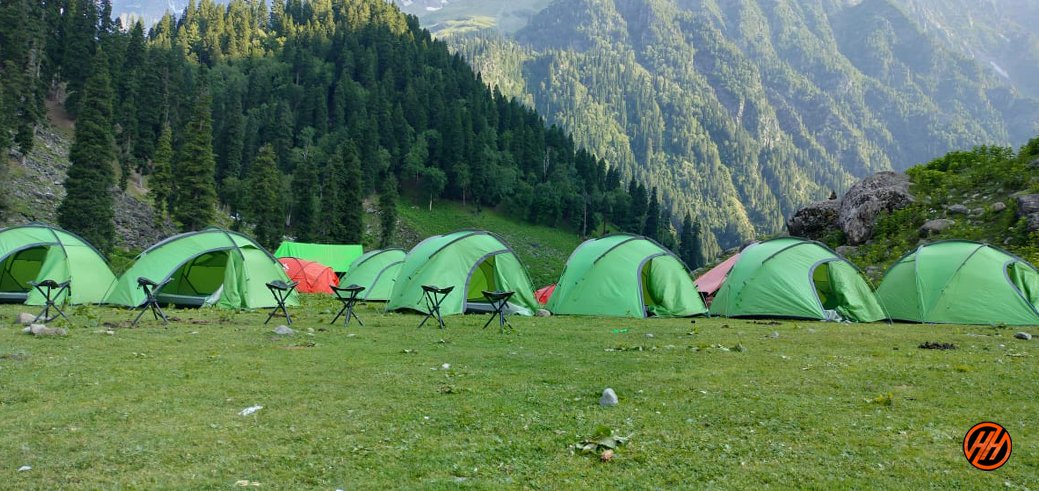
How to Reach Kashmir Great Lakes Trek?
- By Air: The easiest way to reach Srinagar is by air. Srinagar International Airport, also known as Sheikh ul-Alam Airport, is well-connected to major cities in India. Several airlines operate regular flights to Srinagar from Delhi, Mumbai, Bangalore, and other major cities. Once you arrive at the airport, you can hire a taxi or take a pre-arranged transfer to reach your accommodation in Srinagar.
- By Road: Srinagar is accessible by road, and you can choose to travel by private car, bus, or taxi. The road journey to Srinagar offers beautiful scenic views, especially if you are traveling from Jammu or other nearby regions. National Highway 1 (NH1) connects Srinagar to Jammu, and the journey takes approximately 8-9 hours. It is advisable to check the current road conditions and any travel advisories before embarking on a road trip.
- By Train: The nearest railway station to Srinagar is Jammu Tawi Railway Station, located in Jammu City. From Jammu, you can either hire a taxi or take a bus to Srinagar. The train journey to Jammu can be a convenient option if you are traveling from a city with a railway station. From Jammu, the road journey to Srinagar takes around 8-9 hours.
Will there be electricity in the Kashmir Great Lakes trek
Let me tell you that there is no electricity in the forest area of Kashmir great lakes trek. Here we use Stobe Light and or Solar Light, candlelight at the nights
If you come on this trek, then you should bring your own headlight and your camera with full charge, if possible, it would be good to bring extra battery backup, and also bring the phone after full charge, today people most phones use the same
You will get the last electricity only in our Home Stay Sonamarg base, where you have to charge the battery of your phone and camera at night.
What to pack for Kashmir Great Lakes Trek
Warm clothes, sleeves, wind shelter, comfortable clothing, and extra warm clothes so that you can enjoy trekking. A raincoat is the necessary
Footwear: A well-fitted trekking footwear shoes are highly recommended. If you wear an uncomfortable pair of shoes, your feet will be hurt.
Self-Certificate of Emergency Breakout
What we do during an emergency breakout in the kashmir great lakes trekking.
Trekking in the Himalayas is not a cup of tea but it is a rewarding experience. However, it’s important to keep things in mind when it comes to Safety. One must know about the weather conditions, the altitude gain, fitness, and other factors that can wreck your experience. In such adverse conditions, you are solely responsible for your well-being and act maturely.
Also, Read About – Safety Tips For Safe Trekking.
Preparations before the Trek
You’ve to understand that treks are away from cities and medical help is not always easily available. So, if you are heading for an adventurous trekking trip, stick to certain trekking guidelines and tips. Following these simple tips will help make the trek more fun and experiential for you as well as your fellow trekkers.
These tips and guidelines cater to useful and requisite information about your fitness training, packing and health precautions to be taken before and during the trek.
- Firstly, when you start, target 5 km in 40 minutes
- Then gradually increase your pace by running at least 4 times a week. Then try to bring it down to 5 km in less than 37 minutes
- If you are a person who prefers cycling over running then your target must be 22 km means you should be able to cover 22 km in 60 minutes.
- Walking is a great exercise that gives great shape to your legs and your body. It helps in burning calories and cut down excess weight and strengthens the heart.
- Jogging is effective in increasing the human lifespan and makes your lungs stronger. It is an aerobic activity that requires a lot of oxygen. This is a great exercise for fighting obesity and staying healthy.
- Squats are the best form of functional exercise to improve stability. They also strengthen your legs, thighs, hips, and hamstring.
- Another great cardiovascular exercise is pushing your body upstairs after stairs. This is regarded as the best exercise for increasing strength and power
What do we do during an emergency breakout in the Kashmir great lakes Trek?
First of all, the safety of trekkers is much more for us, if you see in the trek, then there are all the risks, which I do not think about.
Himalayan Hikers worry more about you than no one should ever have any problem in the trek.
What should we and you keep more safety in the trek
- Whenever you are going for any trek, it is very important that you go completely fit and ready.
- The trek is not difficult, if you make your feet and your mind calm and strong, you will find the trek very easy.
- While trekking, keep in mind that you are walking on the right route or not always with your guide.
- Most people look somewhere and where they are walking, this can cause twitching in your legs, which can ruin your entire trek.
- It is important to ask your doctor if you have any medical problems
- I should always keep my medical kit with me, it is very important.
- Himalayan Hikers always keep a medical kit with them, such as oxygen cylinders, and medicine to be given in an emergency on the trek
- If any trekkers have any more problems, then they are brought back to the base camp by laying them in the stretcher.
- Our camp in Kashmir great lakes trek is around 6000 feet to 13000 feet where you can not have any problem of oxygen
- In case of any medical problem, the help of your guide or well-informed trekkers should be taken
- If there is major health problems in Kashmir great lakes trek , then Nearest Hospital is in Srinagar which is about 81 Kms away from KGL Trek
- Along with the trek we keep getting acclimatization
Before embarking on a trek, it’s important for trekkers to prepare their bodies physically. Trekking can be demanding, and it requires a certain level of physical fitness to avoid injury and fully enjoy the experience. Here are some important fitness considerations for trekkers:
- Cardiovascular endurance: Trekking involves walking long distances and often at high altitudes, which can be challenging for the cardiovascular system. Cardiovascular exercises such as running, cycling, or swimming can help improve endurance.
- Strength training: Trekking requires strength in the legs, core, and upper body. Strength training exercises such as squats, lunges, planks, and push-ups can help build the necessary strength.
- Flexibility and balance: Trekking involves navigating uneven terrain and often requires the body to move in different directions. Stretching exercises and activities that improve balance such as yoga or Pilates can be helpful.
- Altitude acclimatization: If you’re planning a high-altitude trek, it’s important to acclimatize properly. This means gradually increasing your altitude over a period of days to allow your body to adjust to the lower oxygen levels.
- Mental preparation: Trekking can be mentally challenging, so it’s important to prepare yourself mentally as well. Practicing mindfulness, meditation, or other stress-reducing techniques can be helpful.
It’s important to remember that everyone’s fitness level and needs are different, so it’s a good idea to consult with a doctor or fitness professional before starting any new exercise program.
What to Pack for the Kashmir Great Lakes Trek?
When packing for the Kashmir Great Lakes trek, it’s important to carry the right clothing and essential items to ensure your comfort and safety during the trek. Here’s a list of items you should consider carrying:
- Lightweight and quick-drying trekking pants
- Full-length trekking trousers
- T-shirts (preferably moisture-wicking)
- Long-sleeved shirts (for sun protection)
- Fleece jacket or warm mid-layer
- Insulated down jacket or synthetic jacket for cold temperatures
- Waterproof and windproof outer shell jacket
- Thermal inner layers for colder nights
- Warm hat and gloves for cold weather
- Sun hat or cap to protect from the sun
- Trekking socks (wool or synthetic) for moisture control
- Thermal or woolen socks for colder nights
- Comfortable trekking shoes with good grip
- Backpack with rain cover (50-60 liters capacity)
- Sleeping bag suitable for cold temperatures
- Trekking poles for stability and reducing strain on knees
- Headlamp or flashlight with extra batteries
- Sunglasses with UV protection
- Water bottle or hydration bladder
- Snacks and energy bars for quick energy during the trek
- Personal toiletries (toothbrush, toothpaste, toilet paper, wet wipes, etc.)
- Sunscreen lotion with a high SPF
- Lip balm with SPF
- Basic first aid kit (including any personal medications)
- Trekking map and compass or GPS device (if self-navigating)
- Cash (carry sufficient cash as ATMs may not be readily available)
- Identification documents (ID card, passport, etc. Trek insurance, Medical certificate )
- Mobile phone with a portable charger or power bank
- Waterproof bags or covers to protect electronics and clothing from rain
- Camera or video equipment (if desired)
It’s important to pack light and carry only essential items to avoid unnecessary weight on your back. Additionally, check the weather conditions before your trek and adjust your clothing and gear accordingly. It’s always a good idea to consult with your trekking agency or tour operator for a comprehensive packing list based on the specific requirements of the Kashmir Great Lakes trek.
Himalayan Hikers – Provided food During the Kashmir Great Lakes Trek
– We serve five -05 times meals a day including- Breakfast, Lunch, Eevening Snakes, Soup, Dinner, A variety of delectable and healthy food is provided which includes; Indian, Chinese and other Western meals. They are nutritious and keep you fit and healthy on the trek.(Veg or non-veg food) With our local food and Day Pack, for Summit Day like fresh fruits
Food Menu – Roti + Rice + Salad + Papad +Matter paneer +Daal +mix veg+ daily more vegetable +sweet+ Bread +Omelets + jam + butter +Muesli, Milk+Banana+ Allo parantha +Tea & coffee Cornflakes, Milk +Egg bhurji +Bread, Peanut Butter +Pancake +Plain parantha +Fruits+ Porridge Oats+ +Bread & cheese +Poha +Boiled egg + Gulab Jamun+ Custard+ Jalebi+ Chilla +Honey+ Puri + Chole more
Note: – This is only list Himalayan Hikers Team or Cook provide you more healthy food and more items of per day menu
The type of food provided during a trek can vary depending on factors like the location, duration, and the trekking company or organization you’re with. However, there are some common types of food that are often included in trekking provisions:
- Carbohydrates : Foods high in carbohydrates provide energy for the trek. This includes items like rice, pasta, bread, and potatoes. More
- Proteins : Protein-rich foods help with muscle repair and recovery. Common protein sources include lentils, beans, tofu, meat (if available), eggs, and dairy products.
- Fruits and vegetables : These provide essential vitamins, minerals, and fiber. While fresh produce may not always be available, dried fruits and vegetables or canned options might be included.
- Snacks : Trekking often involves long hours of physical exertion, so snacks are important for quick energy boosts. Snacks like nuts, energy bars, trail mix, and chocolate are common choices.
- Local cuisine: Depending on the region you’re trekking in, you might also get the chance to sample local dishes. This can be a delightful way to experience the culture and flavors of the area.
Day 1 : Pickup to you from Srinagar TRC – Krishna Dhaba 1:30 Pm Drive to Shitkadi via Sonamarg Village-overnight stay Camp
Total distance – 90 km – 04 Hours journey
Mode of journey – By taxi- Innova- Sumo- Bolero
Altitude – Shitkadi camp – 7780 feet
Night stay – Camp – on twin share basis
Himalayan Hikers Arranged transport to you -Pickup to you TRC Srinagar -you have to reach Srinagar Reach your base camp in 4 hours. Overnight stay in camp.
The route from Srinagar TRC to Shitkadi via Sonamarg Village offers breathtaking views of the Kashmir Valley and the surrounding Himalayan mountains. Here’s a suggested route description:
- Start at Srinagar TRC: Begin your journey from the Srinagar Tourist Reception Centre (TRC), a central location in Srinagar, Kashmir.
- Proceed towards Sonamarg: From Srinagar, head north towards the picturesque town of Sonamarg. This leg of the journey takes you through beautiful landscapes, including lush green meadows, flowing streams, and tall pine forests. The road winds its way through the mountains, offering stunning views at every turn.
- Pass through Sonamarg: As you approach Sonamarg, you’ll be greeted by the majestic peaks of the Himalayas. Sonamarg, which translates to “Meadow of Gold,” is known for its pristine beauty and serves as a popular tourist destination.
- Continue towards Shitkadi: After enjoying the sights of Sonamarg, continue your journey towards Shitkadi. The road from Sonamarg to Shitkadi offers panoramic views of the surrounding mountains and valleys. You’ll pass through quaint villages and terraced fields, providing a glimpse into the local way of life.
- Arrive at Shitkadi: Finally, you’ll reach Shitkadi, a serene destination nestled amidst the Himalayas. Here, you can unwind and soak in the tranquility of the surroundings.
Shitkadi is few km away from Sonamarg and the trek starts from there, you have to reach Srinagar and vehicles will be arranged for you from there. Reach your base camp in 4 hours. Overnight stay in camp.
Day 2 : Trek from Shitkadi camp to Nichnai Camp
Total distance – 11 km – 6/7 Hours journey
Mode of journey – On foot
Altitude Nichnai – 11888 feet
Night Stay – our Camp – on twin share basis
The trek from Shitkadi camp to Nichnai Camp offers adventurers a chance to explore the rugged beauty of the Kashmir region. Here’s an overview of the route, location, and trek level:
- Start at Shitkadi Camp: Begin your trek from the Shitkadi campsite, which is likely situated amidst picturesque surroundings with views of towering mountains and lush greenery.
- Trek through the Valley: The trail initially leads through a valley, offering panoramic views of the surrounding peaks and meadows. You’ll pass through patches of dense forests and open meadows along the way.
- Ascend to Nichnai Camp: As you continue along the trail, you’ll gradually ascend towards Nichnai Camp. The path may involve moderate to steep inclines, depending on the specific route chosen.
- Shitkadi Camp: Situated in the Kashmir region, the Shitkadi campsite is likely located at an elevation with commanding views of the surrounding landscapes. It serves as a starting point for various treks in the area.
- Nichnai Camp: Located at a higher altitude than Shitkadi, Nichnai Camp offers trekkers a serene setting amidst the mountains. The campsite is often nestled beside a river or stream, providing a refreshing ambiance.
- Moderate The trek from Shitkadi Camp to Nichnai Camp is typically classified as moderate to challenging, depending on factors such as weather conditions, trail terrain, and individual fitness levels.
- Altitude Gain: Trekkers can expect a significant altitude gain during this trek, as they ascend from the lower valley to the higher reaches of Nichnai Camp. Proper acclimatization and pacing are essential to ensure a safe and enjoyable experience.
- Duration: The trek duration can vary based on the specific route taken and the pace of the trekking group. It may take several hours to reach Nichnai Camp from Shitkadi, with breaks for rest and sightseeing along the way.
Day 3: Trek from Nichnai camp to Vishnusar Lake.
Trek Distance – 13 km – 6/7 Hours journey
Altitude – Vishnusar – 12055 feet
The trek from Nichnai Camp to Vishnusar Lake offers trekkers a mesmerizing journey through the alpine landscapes of the Kashmir region. Here’s an overview of the route, views, trek level, and route details:
- Start at Nichnai Camp: Begin your trek from the Nichnai Campsite, which is typically located amidst scenic surroundings with views of mountains, meadows, and streams.
- Ascend to Nichnai Pass: The trail initially involves ascending towards Nichnai Pass, which may include moderate to steep inclines. Nichnai Pass offers panoramic views of the surrounding peaks and valleys.
- Descent to Vishnusar Lake: After crossing Nichnai Pass, the trail descends towards Vishnusar Lake. The path meanders through rocky terrain, alpine meadows, and patches of vegetation, offering stunning views along the way.
- Arrival at Vishnusar Lake: Finally, you’ll reach Vishnusar Lake, a breathtaking alpine lake surrounded by towering mountains. The crystal-clear waters of the lake reflect the surrounding peaks, creating a picturesque setting.
- Alpine Landscapes: Throughout the trek, you’ll be treated to breathtaking views of alpine landscapes, including snow-capped peaks, lush green meadows, and pristine lakes.
- Nichnai Pass: The ascent to Nichnai Pass offers panoramic vistas of the surrounding mountains and valleys, providing ample opportunities for photography and sightseeing.
- Vishnusar Lake: The arrival at Vishnusar Lake rewards trekkers with stunning views of the azure-blue lake framed by majestic mountains, creating a scene straight out of a postcard.
- Moderate : The trek from Nichnai Camp to Vishnusar Lake is typically classified as moderate to challenging, depending on factors such as trail conditions, altitude gain, and individual fitness levels.
- Altitude Gain: Trekkers can expect a significant altitude gain while ascending towards Nichnai Pass, followed by a descent to Vishnusar Lake. Proper acclimatization and pacing are essential for a safe and enjoyable trekking experience.
- Duration: The duration of the trek can vary based on factors such as trekking speed, weather conditions, and rest breaks. It may take several hours to complete the trek from Nichnai Camp to Vishnusar Lake.
- The specific route from Nichnai Camp to Vishnusar Lake may vary depending on trail conditions and local guidance. It’s advisable to consult with experienced guides or local authorities for the most up-to-date route information and safety tips.
Overall, the trek from Nichnai Camp to Vishnusar Lake promises an unforgettable adventure amidst the pristine beauty of the Kashmir Himalayas,
Day 4 : Trek from Vishnusar Lake to Gadsar Lake.
Trek Distance – 16 km – 7/8 Hours journey
Altitude – Gadsar Lake – 13850 feet
Night Stay – Camp site – on twin share basis
The trek from Vishnusar Lake to Gadsar Lake is a captivating journey through the scenic landscapes of the Kashmir Himalayas. Here’s an overview of the route, terrain, and key highlights:
- Depart from Vishnusar Lake: Begin your trek from the picturesque Vishnusar Lake, situated amidst towering peaks and pristine alpine surroundings.
- Ascend to Gadsar Pass: The trail initially involves ascending towards Gadsar Pass, which may include steep sections and rocky terrain. As you climb higher, you’ll be treated to panoramic views of the surrounding mountains and valleys.
- Descent to Gadsar Lake: After crossing Gadsar Pass, the trail descends towards Gadsar Lake. The descent may be steep in parts, and you’ll traverse through rocky terrain and alpine meadows.
- Arrival at Gadsar Lake: Finally, you’ll reach Gadsar Lake, a mesmerizing alpine lake surrounded by towering peaks. The pristine waters of the lake reflect the surrounding mountains, creating a stunning backdrop.
- Moderate to Challenging: The trek from Vishnusar Lake to Gadsar Lake is generally classified as moderate to challenging, depending on factors such as altitude gain, trail conditions, and individual fitness levels.
- Altitude Gain: Trekkers will experience a significant altitude gain while ascending towards Gadsar Pass, followed by a descent to Gadsar Lake. Proper acclimatization and pacing are crucial for a safe and enjoyable trek.
- Rocky Terrain: The trail may pass through rocky terrain, particularly during the ascent to Gadsar Pass and the descent to Gadsar Lake. Sturdy trekking shoes and trekking poles can be beneficial for navigating uneven terrain.
- Scenic Landscapes: Throughout the trek, you’ll be surrounded by breathtaking alpine landscapes, including snow-capped peaks, verdant meadows, and pristine lakes.
- Gadsar Pass: Crossing Gadsar Pass offers panoramic views of the surrounding mountains and valleys, making it a memorable highlight of the trek.
- Gadsar Lake: The arrival at Gadsar Lake rewards trekkers with the sight of its tranquil waters and the surrounding rugged beauty, providing a perfect spot for rest and relaxation.
- The specific route from Vishnusar Lake to Gadsar Lake may vary depending on trail conditions and local guidance. It’s advisable to consult with experienced guides or local authorities for the most up-to-date route information and safety tips.
Day 5 : Trek from Gadsar Lake to Satsar Lake.
Trek Distance – 11 km – 4/5 Hours journey
Altitude – Satsar Lake – 12100 feet
Cross a stream and go uphill, you will reach above the tree line but the trees and river will be visible below. As you go higher the altitude is gained and by trekking further you exit the river valley.
The trek from Gadsar Lake to Satsar Lake is another remarkable segment of the Kashmir Great Lakes trek, offering adventurers a chance to explore more of the region’s breathtaking landscapes. Here’s a detailed overview:
- Depart from Gadsar Lake: Begin your trek from the scenic shores of Gadsar Lake, surrounded by towering peaks and pristine wilderness.
- Traverse through Alpine Meadows: The trail from Gadsar Lake to Satsar Lake takes you through a mix of alpine meadows, rocky terrain, and patches of vegetation.
- Pass through High Altitude Passes: Depending on the specific route chosen, you may cross high altitude passes or ridges, offering panoramic views of the surrounding mountains.
- Arrival at Satsar Lake: The trek culminates at Satsar Lake, a cluster of seven interconnected lakes nestled amidst the mountains. The serene beauty of Satsar Lake is a sight to behold, providing a tranquil setting for trekkers to rest and rejuvenate.
- Moderate to Challenging: The trek from Gadsar Lake to Satsar Lake is typically classified as moderate to challenging, considering factors such as altitude gain, trail conditions, and individual fitness levels.
- Altitude Gain: Trekkers can expect some altitude gain during the trek, particularly if crossing high altitude passes or ridges. Proper acclimatization and pacing are essential for a safe and enjoyable trekking experience.
- Varied Terrain: The trail may encompass a variety of terrain types, including rocky paths, grassy meadows, and occasional steep sections. Trekking poles and sturdy footwear are recommended to navigate uneven terrain.
- Alpine Beauty: Throughout the trek, you’ll be surrounded by the stunning beauty of the Kashmir Himalayas, with panoramic views of snow-capped peaks, verdant valleys, and pristine lakes.
- Satsar Lake: The arrival at Satsar Lake is undoubtedly the highlight of the trek, offering trekkers the opportunity to witness the serene beauty of the interconnected lakes and their reflection of the surrounding mountains.
- Wildlife Sightings: Keep an eye out for various species of birds and wildlife that inhabit the region, adding to the allure of the trekking experience.
- The specific route from Gadsar Lake to Satsar Lake may vary depending on trail conditions, weather, and local guidance. Experienced guides or local authorities can provide updated route information and safety tips.
Overall, the trek from Gadsar Lake to Satsar Lake promises an unforgettable adventure amidst the rugged beauty of the Kashmir Himalayas,
Day 6 : Trek from Satsar Lake to Gangabal camp.
Trek Distance – 09 km – 5/6 Hours journey
Altitude – Gangabal – 11655 feet
Night Stay – our Camp – on twin/three share basis
Today’s trek will be a combination of ascends and descends, after half an hour of trekking you will come across the biggest and last Satsar Lake.
The trek from Satsar Lake to Gangabal camp is an exhilarating segment of the Kashmir Great Lakes trek, renowned for its stunning alpine landscapes and pristine lakes. Here’s an overview of the route, trek level, and highlights:
- Depart from Satsar Lake: Begin your trek from the scenic shores of Satsar Lake, which is a cluster of seven interconnected lakes nestled amidst the mountains.
- Traverse Alpine Terrain: The trail from Satsar Lake to Gangabal camp takes you through diverse terrain, including alpine meadows, rocky paths, and occasional steep ascents and descents.
- Pass through High Altitude Passes: Depending on the specific route chosen, you may traverse high altitude passes or ridges, offering panoramic views of the surrounding mountains and valleys.
- Arrival at Gangabal Camp: The trek culminates at Gangabal camp, situated near the shores of Gangabal Lake, one of the largest and most picturesque lakes in the region. The campsite offers stunning views of the lake and the surrounding peaks.
- Moderate : The trek from Satsar Lake to Gangabal camp is typically classified as moderate to challenging, considering factors such as altitude gain, trail conditions, and individual fitness levels.
- Altitude Gain: Trekkers can expect some altitude gain during the trek, particularly when crossing high altitude passes or negotiating steep sections of the trail. Proper acclimatization and pacing are crucial for a safe and enjoyable trekking experience.
- Varied Terrain: The trail encompasses a variety of terrain types, including rocky paths, grassy meadows, and potentially snow-covered sections, depending on the season. Trekking poles and sturdy footwear are recommended for stability and traction.
- Alpine Scenery: Throughout the trek, you’ll be surrounded by the breathtaking beauty of the Kashmir Himalayas, with panoramic views of snow-capped peaks, verdant valleys, and crystal-clear lakes.
- Gangabal Lake: The arrival at Gangabal Lake is a highlight of the trek, offering trekkers the opportunity to witness the pristine beauty of the lake and its reflection of the surrounding mountains. The serene ambiance of Gangabal camp provides a perfect setting for relaxation and exploration.
- Wildlife Encounters: Keep an eye out for various species of birds and wildlife that inhabit the region, including marmots, mountain goats, and elusive Himalayan ibex.
- The specific route from Satsar Lake to Gangabal camp may vary depending on trail conditions, weather, and local guidance. Experienced guides or local authorities can provide updated route information and safety tips.
Overall, the trek from Satsar Lake to Gangabal camp offers trekkers an unforgettable adventure amidst the majestic landscapes of the Kashmir valley Himalayas,
Day 7 : Trek from Gangabal to Naranag Road head ( 13 km) Same day Drive to Srinagar (70 km) (2/3) You will reach Srinagar by 6:00 to 07:00 pm.
Today’s trek is going to be knee breaking because descends are steep. Head downwards from the campsite along the stream, at the end of ridge descend towards meadow on right.
The trek from Gangabal to Naranag Road head is the final leg of the Kashmir Great Lakes trek, culminating in a drive back to Srinagar. Here’s an overview of the trek, drive, and estimated arrival time in Srinagar:
- Distance: Approximately 13 kilometers
- Route: The trail typically descends from Gangabal camp towards Naranag Road head, passing through alpine meadows, pine forests, and occasional streams.
- Trek Level: Moderate
- Duration: Depending on the pace of the trekking group and trail conditions, the trek from Gangabal to Naranag Road head can take around 2-3 hours.
- Distance: Approximately 70 kilometers
- Route: The drive from Naranag Road head to Srinagar usually follows a scenic route through the countryside, passing by lush green fields, villages, and winding roads.
- Duration: The drive typically takes around 2/3- hour, depending on traffic and road conditions.
- Arrival Time: Based on the trekking and driving durations, you can expect to reach Srinagar by 6:00 to 7:00 PM.
- It’s important to start the trek from Gangabal early in the day to allow sufficient time for both the trek and the drive back to Srinagar.
- Ensure that transportation arrangements are made in advance for the drive from Naranag Road head to Srinagar to avoid any delays.
- Consider factors such as weather conditions, daylight hours, and individual fitness levels when planning the trek and drive.
Overall, the journey from Gangabal to Naranag Road head, followed by the drive back to Srinagar, offers trekkers a memorable conclusion to the Kashmir Great Lakes trek, with the promise of reaching Srinagar by early evening.
Now you lose altitude and Naranag can be seen, come up to the village and then you enter the main road of Naranag. From here drive to Srinagar and probably reach there between 6:30 – 7:00 pm.
Mandatory Documents
Please carry the documents given below.
Original and photocopy of government photo identity card- (Aadhar Card, Driving License, Voters ID, etc, Passport and Visa important to foreigners Medical Certificate (First part should be filled by the Doctor and Second part by the Trekker) Declaration Certificates
Note: – Many trekkers commit the same mistake of carrying unnecessary items on a trek which only makes the backpack heavy. It is important to know the right items to carry. It differs from season to season if you are trekking in summers then carry less layers of warm clothing and if you are trekking in winters carry enough layers to protect yourself against chilly cold.
Necessary Items for trekkers

Backpack (50 to 60 liters) A strongly built backpack with good support is compulsory for a trek. (Rain cover is important)
Sturdy Trekking Shoes The shoes should be strong enough with good support. The people ask if sports shoes would be comfortable but it is good to bring the right trekking shoes.
The Clothes You Should Bring On a Trek Avoid keeping extra clothes because it only makes you backpack heavy.
Trek Pants – The jeans are never suitable for a trek so you need at least 2-3 trek pants for treks carry more for longer treks.
Jacket – Jackets are very important to carry on a trek it protects you against the chilly weather. So carry 2 jackets on a week long trek.
Layers of warm Clothing Carry warm woolen layers or fleece. Carry more layers during winter season (at least 2 to 3) and less during summer.
Thermals – The Temperature decreases at night so you might be need thermals for Night.
T- Shirts – Bring those t shirts which dry fast.
Poncho –They are needed if you are trekking on a Rainy day to keep you dry.
Hiking Pole
Water Bottle 2
Cap or Balaclava
Woolen and Waterproof Gloves
Socks (Woolen and Regular)
Torch head light
Personal Toiletry Items – (toothpaste, toothbrush, toilet paper, sanitizer etc.)
Carry Personal Medical Kit
Personal Medical Kit (Carry minimum 5 tablets and maximum 10)
Medicine for Altitude Sickness
Medicine for acidity and discomfort.
Fever and Headache Medicines
Pain Reliever
Motion Sickness Medicine
Medicine for Allergies
Medicine for Diarrhoea
Sprains Cream or Spray
Antiseptic Cream
Stretchable/Elastic bandage
Note:- Please take all medicines only when prescribed by the doctor. In case you face any problem during your trek, discuss and take advice from the Professional guide.
It is important to have some guidelines in place in case something unexpected happens. Here are some general guidelines that may be helpful:
- Have a first-aid kit: Make sure to carry a well-equipped first-aid kit that can be used to treat minor injuries and ailments.
- Follow safety protocols: It is important to follow all safety protocols and guidelines related to the trek. This includes staying on designated trails, avoiding risky or dangerous areas, and staying with your group.
- Have a communication plan: Make sure to have a communication plan in place in case of emergencies. This may include carrying a mobile phone or a satellite phone, or using a walkie-talkie to stay in touch with other members of your group.
- Know the local emergency services: Be aware of the local emergency services available in the area where you will be trekking. This includes knowing the location of the nearest hospital, police station, or rescue service.
- Carry proper gear and equipment: Make sure to carry appropriate gear and equipment for the trek, including proper footwear, warm clothing, and rain gear. This will help you stay comfortable and safe during the trek.
- Follow Leave No Trace principles: Follow Leave No Trace principles and leave the trekking area as you found it. This includes packing out all trash and waste, avoiding damaging vegetation, and respecting wildlife.
- Stay calm and collected: In case something unexpected happens, try to stay calm and collected. Assess the situation and take appropriate action to stay safe and help others in your group.
It’s also a good idea to consult with a local trekking agency or experienced guide before embarking on a trek, as they can provide additional guidance and support to ensure a safe and enjoyable experience.
Are you Looking for Trekking Equipment on Rent?
If any trekker needs trekking equipment on Rent then Himalayan Hikers has the best trekking equipment available on rent.
There are many people behind this who are in great need of it, it is better to hire it at affordable price without spending much money for just a few days.
Rent Costs per Day
1. Hiking shoes Per day Rs. 100/-
2. Hiking Pant Per Day Rs. 100/-
3. Down Jacket Per Day Rs. 100/-
4. Hiking Pole Per Day Rs. 50/-
5. Headlight Per Day Rs. 50/-
6. Trekking Bag 50 to 60 litter Per Day Rs. 50/-
7. Gloves Per Day Rs. 50/-
Trek Equipment You can book directly at the Base Camp of your trek.
05 July to 11 July 2024 (Open) 9 left
06 July to 12 July 2024 (Open) 14 left
07 July to 13 July 2024 (Open)
12 July to 18 July 2024 (Open) 11 left
13 July to 19 July 2024 (Open)
14 July to 20 July 2024 (Open) 05 left
19 July to 25 July 2024 (Open)
20 July to 26 July 2024 (Open)
21 July to 27 July 2024 (Open)
26 July to 01 Aug 2024 (Open)
27 July to 02 Aug 2024 (Open)
28 July to 03 Aug 2024 (Open)
August -2024
02 Aug to 08 Aug 2024 (Open)
03 Aug to 09 Aug 2024 (Open)
04 Aug to 10 Aug 2024 (Open)
05 Aug to 11 Aug 2024 (Open) 08 left
10 Aug to 16 Aug 2024 (Open)
11 Aug to 17 Aug 2024 (Open)
16 Aug to 22 Aug 2024 (Open)
17 Aug to 23 Aug 2024 (Open)
18 Aug to 24 Aug 2024 (Open)
23 Aug to 29 Aug 2024 (Open)
24 Aug to 30 Aug 2024 (Open)
25 Aug to 31 Aug 2024 (Open)
30 Aug to 05 Sep 2024 (Open)
31 Aug to 06 Sep 2024 (Open)
September-2024
06 Sep to 12 Sep 2024 (Open)
07 Sep to 13 Sep 2024 (Open)
08 Sep to 14 Sep 2024 (Open)
13 Sep to 19 Sep 2024 (Open)
14 Sep to 20 Sep 2024 (Open)
15 Sep to 21 Sep 2024 (Open)
20 Sep to 26 Sep 2024 (Open)
21 Sep to 27 Sep 2024 (Open)
22 Sep to 28 Sep 2024 (Open)
What is Included In This Trek?
Transport Facility
Forest Permit and entrance fee
Accommodation in tents on twin share basis
All meals: breakfast, packed lunch, tea, coffee, snacks, soup and dinner
(All camping gears)
High quality tents
Sleeping bags
Separate Toilet tents – Ladies and Gents
Dining Tent
Dining Table
Kitchen team
Radio Walkie Talkie for Communication
Good Experience Trek Leader guide and Technical guide
Medical Kit
Oxygen Cylinders
Crampons and Gaiters
What is Not Included In This Trek?
Personal Insurance
Medical Certificate
Personal toiletry Items and Personal Medicine kit
On first day En Route to base camp the Breakfast and Lunch are Not Included
Last Day En Route Lunch and Dinner are Not Included
5 reviews for Kashmir Great Lakes Trek
Prathibha Ramaswamy (verified owner) – September 3, 2023
This is my second trek with HH after Kedarkantha. The ground staff and the cook deserve special mention for taking good care of us and serving us delicious meals. Our trek lead Parvesh Rawat made sure we traversed difficult sections with ease when the body fails to listen to the mind. His Shabhash, chalo chalo kept us going. What I liked about HH and Parvesh ji was how they patiently allowed each one of us to find our own pace and not be pressurized by a norm.
Satheesh Reddy Pondugula – August 10, 2023
I had amazing experience with Himalayan Hikers, this second trek with them. Excellent tents with good food, very helpful staff. Trek guides addressing trekkers individually if someone is having problem. KGL is beautiful trek and with Himalay hikers it was more beautiful for me. Thanks to the team.
Himalayan Hikers – August 10, 2023
thanks Mr. Satheesh Reddy sir ji have a great day
Unnati Khanorkar – August 5, 2022
Overall it was great trek and special thanks to Kuldeep ji(organiser), Shaukat ji(Trek lead), Hari ji(the cook) and entire kitchen staff, Shahnawaz(helper boy) who took care of so many things and provided good hospitality at camps. But there can be few improvements like- Orientation should be there before starting the trek like before reaching to first army checkpost you need to install Twitter and follow army account, this took a lot time as there were no or limited network. The Manigam checkpost won’t allow you to pass after 5 pm because of that we had to stay at army checkpost on 30th July after the trek…if we would have been informed earlier we could have stayed in Sonmerg only… Othe than that food and organization at camps were nice. We are going to cherish this experience forever ?
Himalayan Hikers – August 5, 2022
Hi namaste Unnati ji – This experience of yours is special for us, we will do better in future. have a great Day
Rajat kumar – August 4, 2022
We had an good experience with team H.H, well equipment’s, food, guides special thanks Mr. Kuldeep ji and Amit bhai Parvesh ji you are super
Himalayan Hikers – August 4, 2022
Thanks Rajat sir ji – Your trek was good, it gives us more strength, most of all when you go well to your home after completing the trek
Prapurna – August 4, 2022
We had an amazing experience with Himalayan Hikers, we were a group of 11 al together and their team took care of everything starting from our health issues, food, comfort and were willing to fulfil any special requirement in their capacity. We definitely miss the talks of our tour guide Riaz/Mustaq/Visharad bhai, he has a fan base now, our trek leads – Monty bhai and Parvez bhai were amazing. Thanks to the entire kitchen staff and everyone who supported to make this trek a memorable one, we will cherish it throughout!
Thanks – Your experience will prepare our team to do better We continue to do the same work in future too – many thanks to you
Your email address will not be published. Required fields are marked *
Name *
Email *
Save my name, email, and website in this browser for the next time I comment.
Related Tours
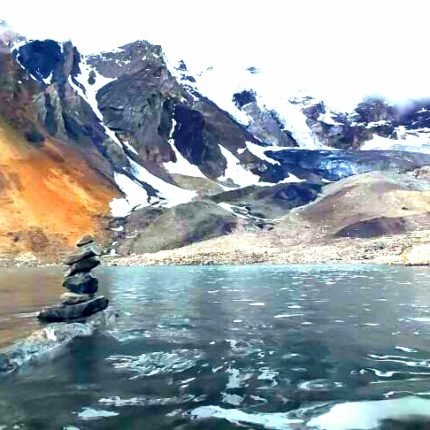
Adi Kailash Om Parvat Trek
Massif Mountain with an OM symbol
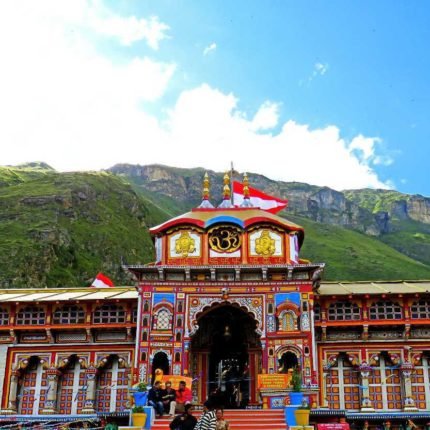
Badrinath Trek
Kedarnath is a town in the State of Uttarakhand Himalayas in India
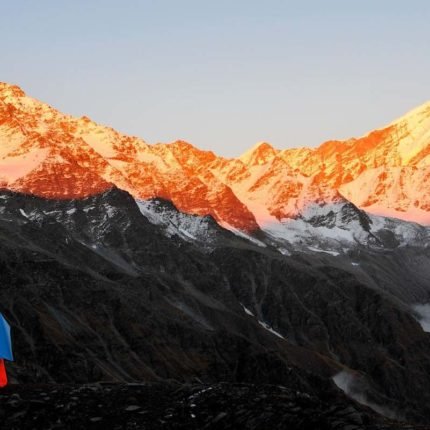
Devkyara Har Ki Dun Trek
The Perfect Combination of two Treks
Price: ₹ 15,000.00
Book the tour
Send a quick enquiry.
- Overview Itinerary Dates Include/Exclude
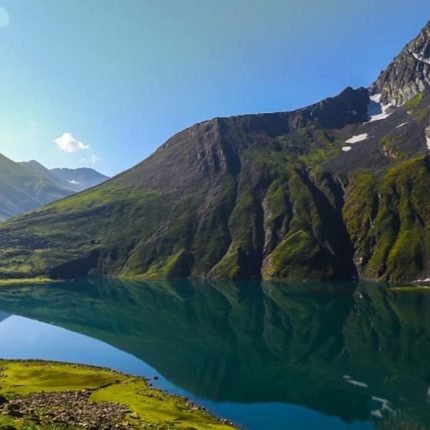
NatureDiary » Blog » Travel Guides » Tourist Attractions
Kashmir Great Lakes (KGL) Trek – Complete Guide
When you think of Kashmir, your eyes visualize a canvas of endless meadows and alpine lakes with cobalt-blue waters nested amidst high-altitude mountains. Rightfully, Kashmir cherishes the title, ‘Paradise on Earth’. Well, it’s really a paradise with manicured carpets handcrafted by the Creator. Trekking to the Kashmir Great Lakes (KGL) is an adrenaline-rushing activity for all adventure lovers.
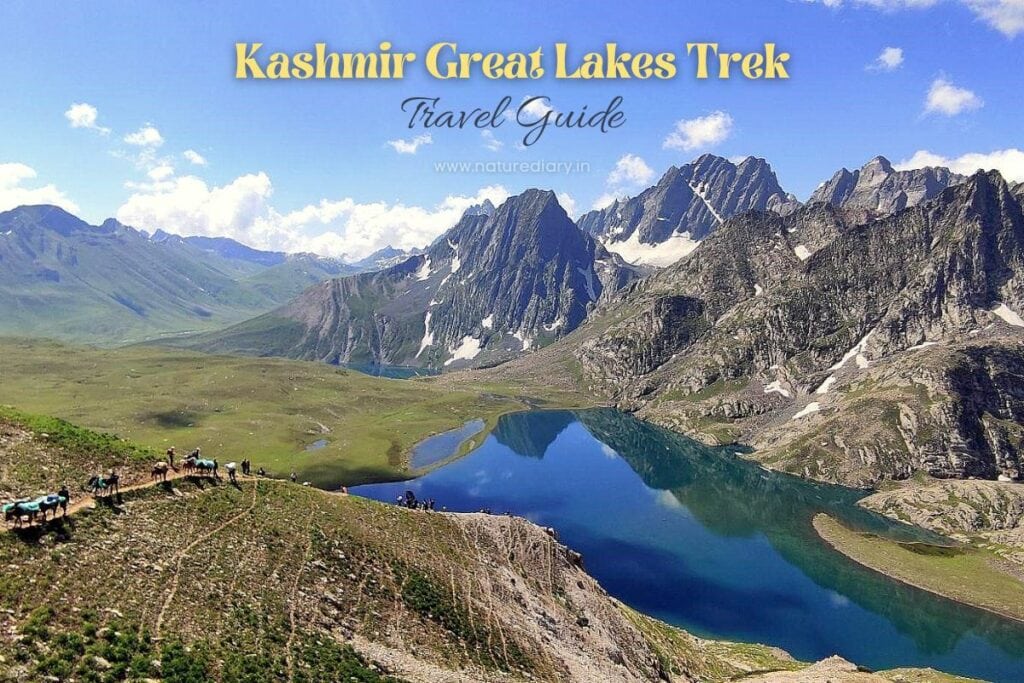
Kashmir Great Lakes Trek Overview
About kgl trek.
Kashmir Great Lakes is one of India’s most picturesque treks that remains open from July to September. The sprawling meadows and jagged mountains remain inaccessible for the rest of the year due to harsh weather conditions and snow. Located to the northeast of Srinagar, it lies 75 Km away from the capital.
What makes the KGL trek special is its versatility with landscapes. The 7-day trek covers more than 75 Km distance and takes you through rolling meadows, tricky boulder zones, steep climbs, and descents. The lakes are named after Gods, and the blissful trek route through the paradise on earth rightfully justifies its stature.
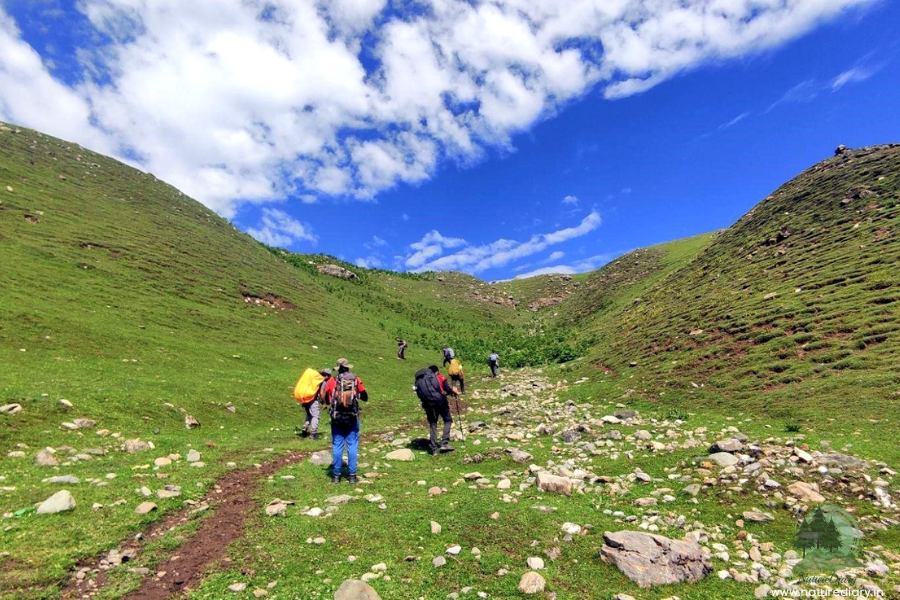
Kashmir Great Lakes brings you a very different terrain each day. You have five different valleys and at least six lakes to explore. Starting from Sonmarg and finishing at Naranag, the high-altitude trek (the highest point at Gadsar Pass: 13,800 feet) is not for beginners. The trek route is moderate to tough, but the key challenges remain the long routes and sun-breathing fire overhead. While temperatures range between 7 to 19 degrees C in July, the extremely steep climbs can take a toll if you aren’t prepared.
Scattered throughout the trek route, you would find snow patches feeding the picturesque glacial lakes. They sometimes slide along the mountains into the blue-green waters. Icebergs, meadows, and unpredictable boulder zones make the KGL trek truly diverse.
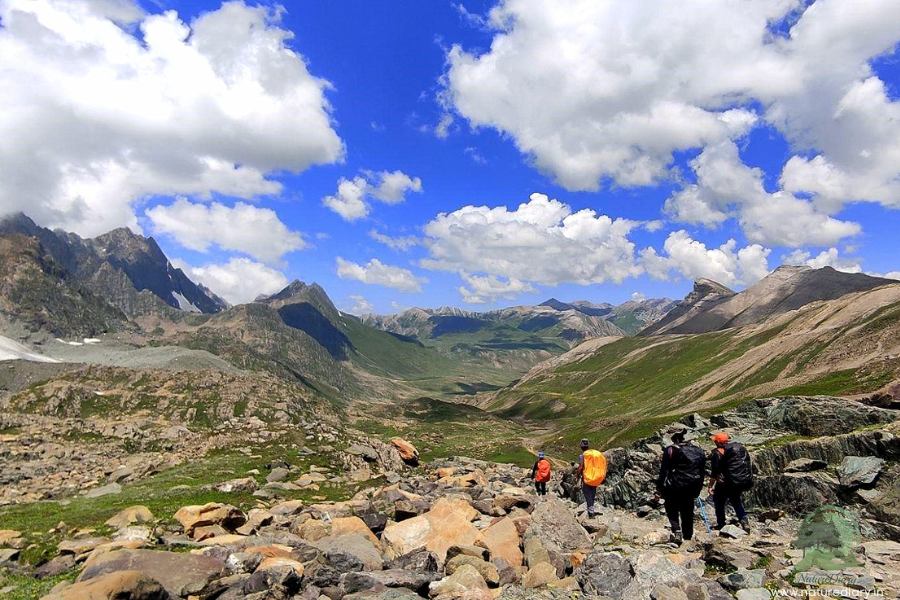
Well, you might live the wallpaper lifestyle for seven days, but I bet you cannot let go of the charismatic sensation when you are back. And then, you have the adrenaline rush when you cross the three high-altitude passes: Nichnai Pass, Gadsar Pass, and Zaj Pass. So, if you are yet to conquer this trek, it’s time to start planning!
The Mythology of Kashmir Great Lakes
Most of the lakes you would trek in the Kashmir Valley are named after Hindu Gods. Besides, on the 6th day of the KGL trek, you would descend to Gangabal Campsite. In the backdrop amidst the mountains, you can spot Mount Harmukh, which means ‘The Face of God’.
As per local mythology, Lord Shiva resides on the top of this mountain. Although the mountain has a height of 16,000 feet, Mount Harmukh has remained unconquered to date. It’s believed that the ruggedness of the terrain and challenges due to extreme climatic conditions prevent mountaineers from scaling the peak.
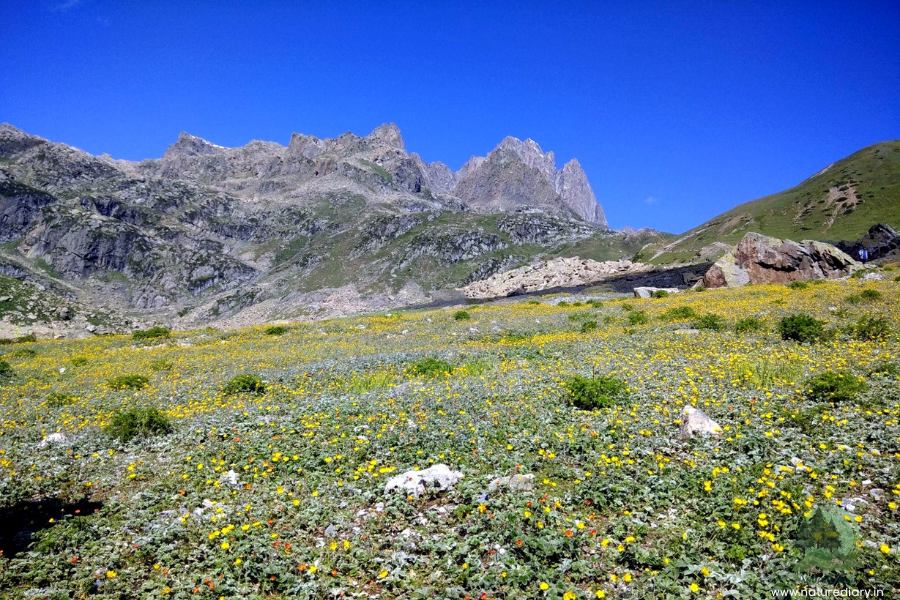
Once, an ascetic continued to resist the harsh conditions and tried to climb the mountains. His efforts continued for 12 years but failed to get to the top. Ultimately, he disappeared after attaining nirvana. However, people can climb this mountain up to 14,000 feet every year. A pilgrimage takes place where local villagers climb up to this height to offer their prayers to Lord Shiva.
It was in 1856 that the first expedition to Mount Harmukh took place under Thomas Montgomerie as a part of the Great Trigonometric Survey. Interestingly, the expeditors ended up discovering K2, the second-highest peak in the world after mount Everest, during this expedition!
Highlights of Kashmir Great Lakes Trek
- Altitude: 13,800 feet (Highest Point)
- Trekking Difficulty: Moderate to challenging
- Starting Point: Sonmarg
- End Point: Naranag
- Distance Covered by Trekking: 75-80 Km
- Duration Of Trek: 7 days
- Temperature: 7°C to 20°C during the day and 2°C to -4°C at night (July–September)
- Rainfall: Moderate chances during the period
- Best Time To Visit: The trek remains open only for 3 months (July–September)
- Nearest ATM: Srinagar
- Nearest Airport: Srinagar
- Nearest Railway Station: Jammu Tawi
- Mobile Network: Only postpaid sims work in J&K. No network is available throughout the trek once you cross Sonmarg.
- Cost of Trek: ₹12000 to ₹15000 per head (Including accommodation costs, food, and charge for the guide).
KGL Trek Elevation Map
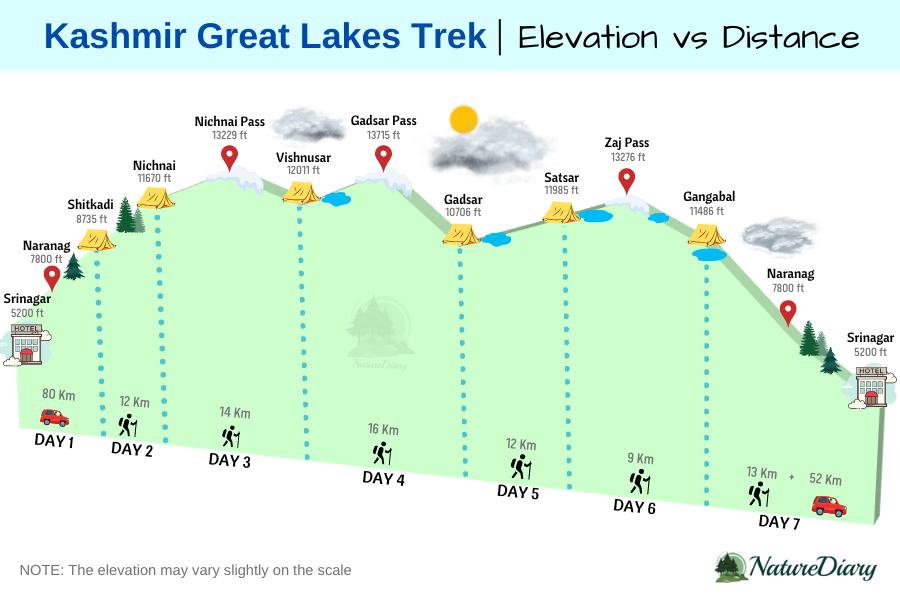
How to Reach Kashmir Great Lakes from Srinagar?
It would be wise to fly directly from your respective city to Srinagar for trekking to the Kashmir Great Lakes. Travelling via rail to Jammu can delay your plans as the highway connecting Jammu and Srinagar (300 Km) experiences frequent landslides during the monsoon months.
So, you can schedule a flight to reach Srinagar in the morning. Therefore, you can start your journey towards Sonmarg on the same day without staying at Srinagar overnight. However, you need to consider a buffer day during the trek to make room for uncertainties like incessant rainfall.
Also, trekkers might need to rest for a day in the middle, considering that the difficulty level is moderate to high. Therefore, you must book your return flight from Srinagar on the 9th day. Under ordinary conditions, it would be wise not to use the buffer day unless necessary.
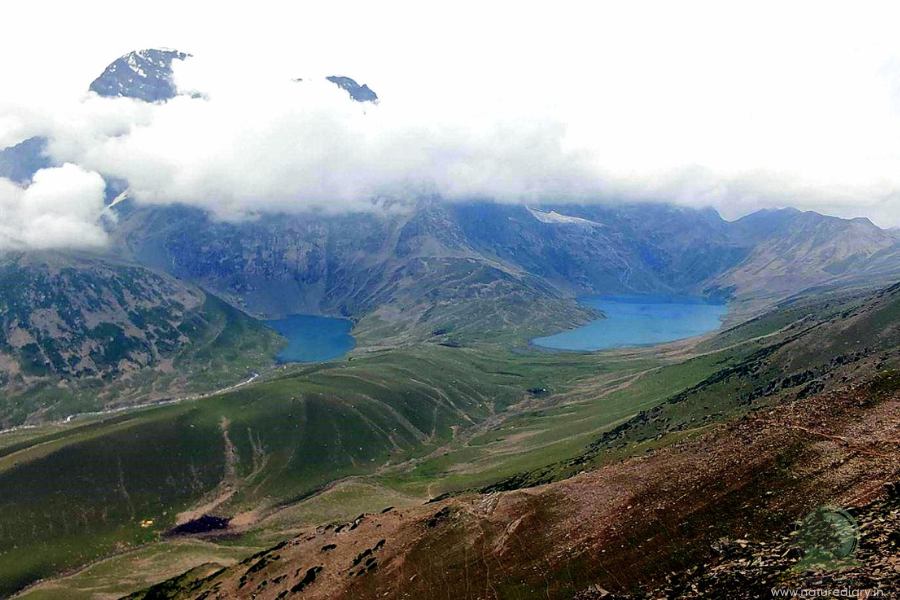
Kashmir Great Lakes Trek Routes
There is only one Trek route when you explore Kashmir Great Lakes. Most importantly, once you set your path, there’s no easy exit point. The most common route is to drive from Srinagar to Sonmarg and reach Shitkari, where you can pitch your camps on the first day. However, some trekkers drive from Srinagar to Naranag and then to Sonmarg before starting to take on the trails. After crossing the lakes and valleys for seven days, the trek ends at Naranag.
Kashmir Great Lakes Trek Itinerary
Day 1 (drive from srinagar to sonmarg and reach shitkari campsite).
- Distance: 80 Km
- Drive time: 2.5-3 hours
- Altitude: 7800 ft.
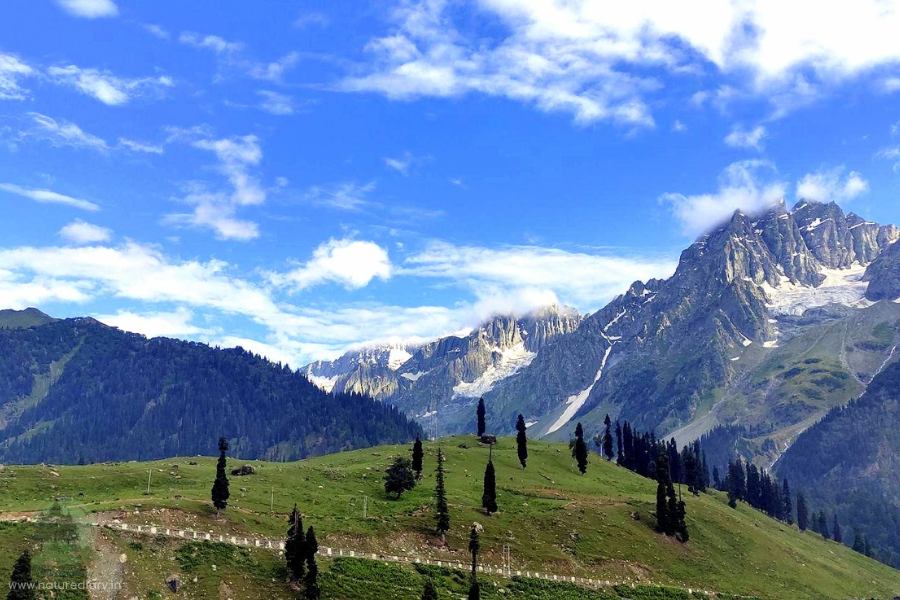
Sonmarg camping is one of the best camping places in India for its picturesque view, weather and facilities. While the actual trek to KGL starts from the Shitkari campsite at Sonmarg, there’s no need to walk on the first day. You need to drive from Srinagar to the campsite, the last fringes of civilization, where cars can access the road. The mighty Sindh river traverses sonorously through the valley just beside the picturesque camp.
Starting your journey at noon, you can reach the campsite by 3 pm. It would be wise to use the rest of the day to familiarize yourself with the trails and trek conditions. In Kashmir Valley, the sun sets around 8 pm. So, the days are pretty long, which provides plenty of time for trekkers to prepare their dinner and get their tents ready.
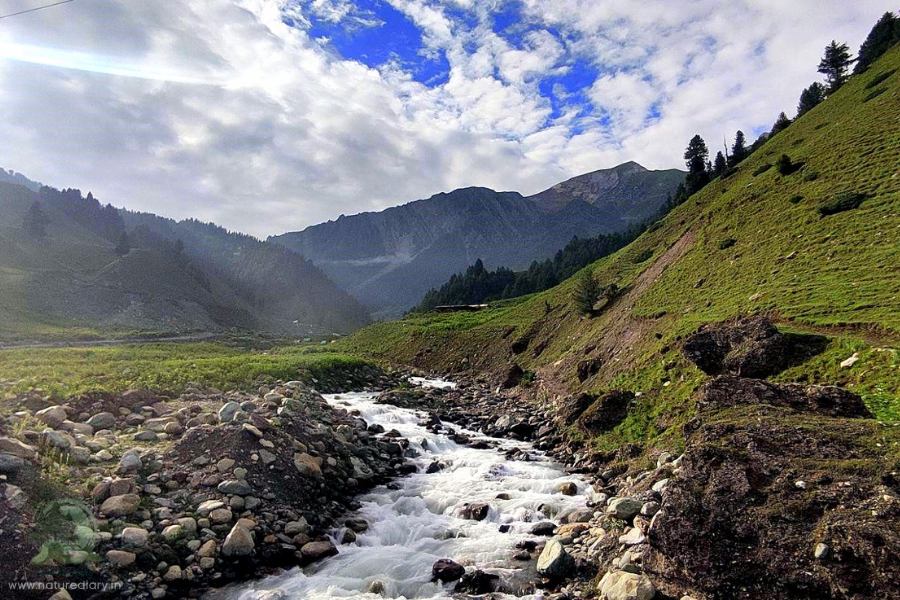
Day 2 (Trek from Shitkari Campsite to Nichnai)
- Distance: 12 Km
- Trek time: 7 hours
- Altitude gain: 7800 ft. to 11607 ft.
Leaving behind the Sindh river and the jeep track close to the campsite at Shitkari, a mud track elevates high into the mountains. This is the trail you need to take that would lead to the second day’s destination Nichnai. You would be gaining altitude quickly for the first three hours. While there’s a sharp descent along this trail for the next hour, you would enjoy a pleasant ascend to Nichnai for the last couple of hours.
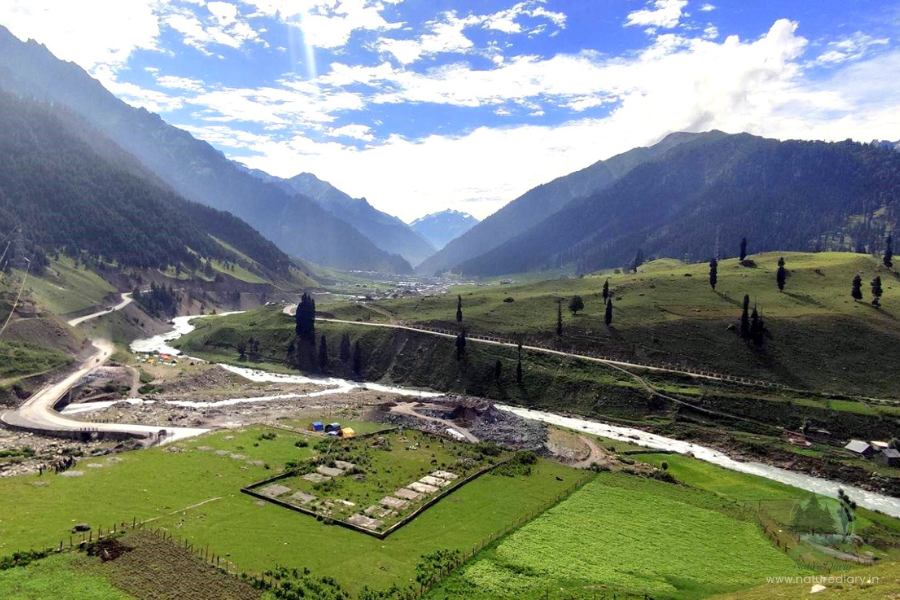
After trekking for 15 minutes of starting at 8:30 in the morning, you would find a left turn, giving way to a serene green meadow. Below, you can spot the first campsite overlooking Sonmarg town.
Then you have to trek for 1-2 Km and you would come across a flat ground where the Indian Army would check your credentials and collect photocopies of your ID card. These formalities during the Kashmir Great Lakes trek might take around half an hour, depending on the size of your team.
Next, you would find the Pine and Maple forests sprouting along the green carpet. While you cherish the rolling meadows at your feet, the splendid canopy of the Maples would define the typical beauty of Kashmir. This forest ends at the top of the ridge, and you will get a view of the narrow river snaking through the valley.
It’s time for descent after a hectic climb! Looking back, you can catch one last glance at the picturesque Sonmarg valley with all its greenery. On the front, the meadow shows the way down, along with pines and the rugged river valley.
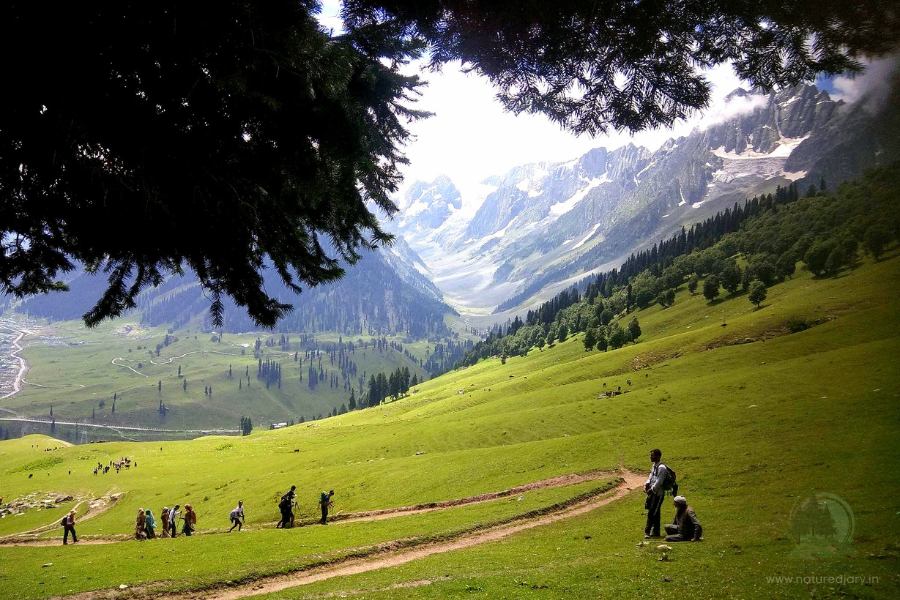
Marching amidst Silver Birches and scattered huts of the shepherds, the middle trail through the forest would lead your way down. Along the way, you can spot thick foliage with the sun rays peeking through the leaves. Trekking along the river valley boulders would test your skills; trails would frequently show up later in the trek.
The view around the river valley would be quite different from what you had witnessed so long amidst the meadows. The snow-capped peaks stand as ever-alert sentinels, with the mountains blocking the access to the green valley you just crossed. With mules showing up frequently along the path, your progress along the river valley would be a sloth.
After an hour or so, the rocky floor embraces a green meadow, gradually widening between a couple of ranges. Well, that’s Nichnai Campsite, the destination to pitch the tent on the second day of the KGL trek!
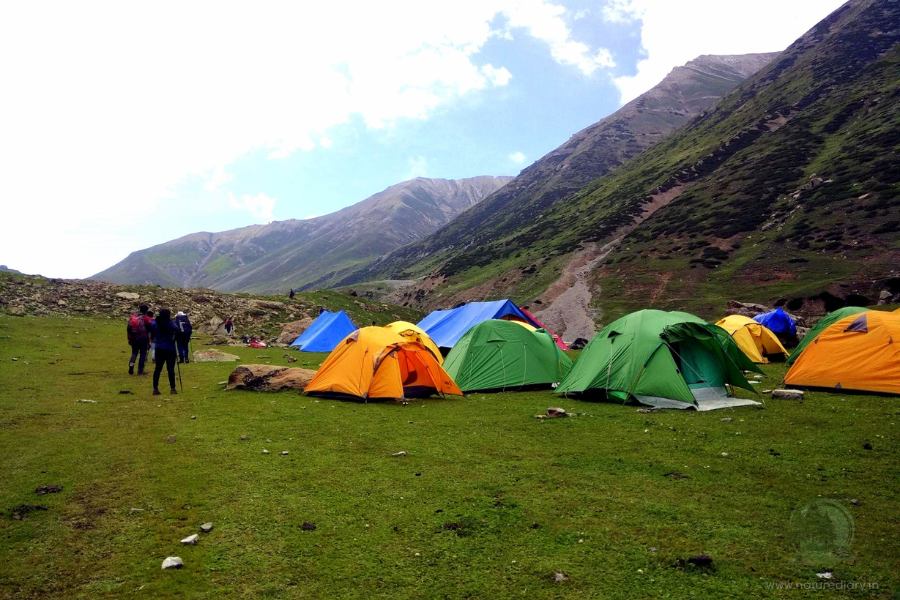
Day 3 (Trek from Nichnai Campsite to Vishnusar)
- Distance: 13.5-14 Km
- Altitude gain: 11,607 ft. to 12011 ft. (Highest Point: 13229 ft.)
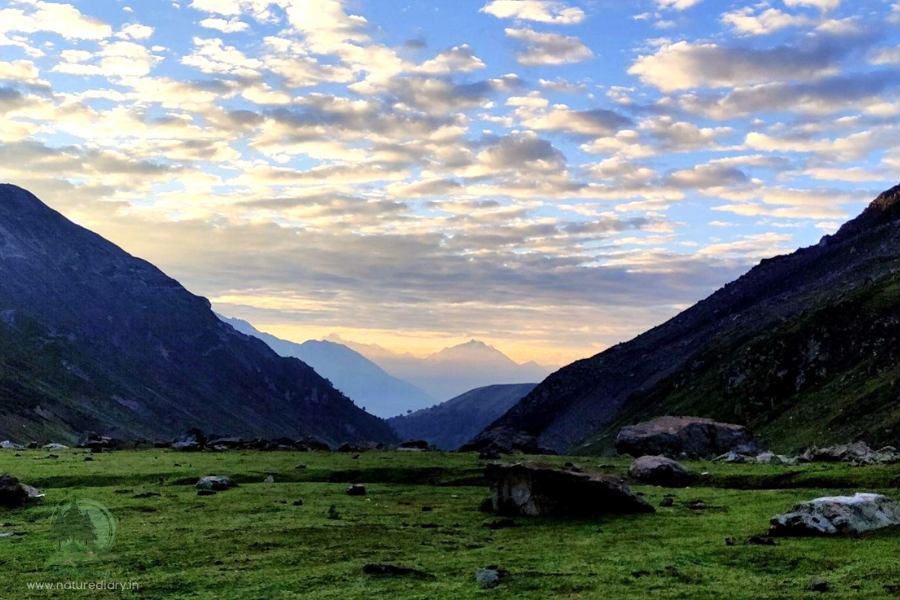
On the third day of the trek, you would see the first lake of the KGL trek. This is one of the most happening days, with various landscapes to pamper your views. You must leave the campsite at Nichnai early, around 8 in the morning. Today, you need to cross Nichnai Pass, the first high-altitude pass of the trek at 13,229 ft. With the heavenly beauty of the meadows nestled amidst rugged mountains, undulating plains stretching for miles, and gradual descent into the valley, the day’s going to create memories!
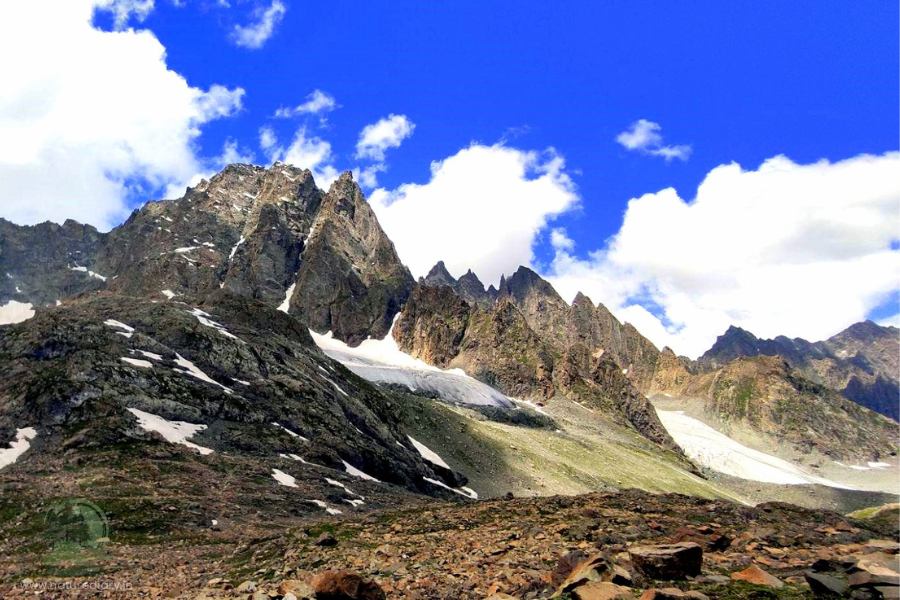
You need to be tactical while navigating through molten ice packs and boulders for the first one and a half hours. Next, the steep climb to the Nichnai pass would give you a tough time. This pass would be visible from the campsite, just adjacent to the snow-clad peaks. Starting with the right bank of the river, trekkers need to cross it and shift to the left bank after an hour. For the next hour, keep to this bank as you ascend the path.
After you cross the pass, you will see the landscape changing. The typical wallpapers on your PC would come alive on the smooth grass. Dotted with yellow wildflowers, the undulating trail of the Kashmir Great Lakes trek would keep your spirits high as you descend.
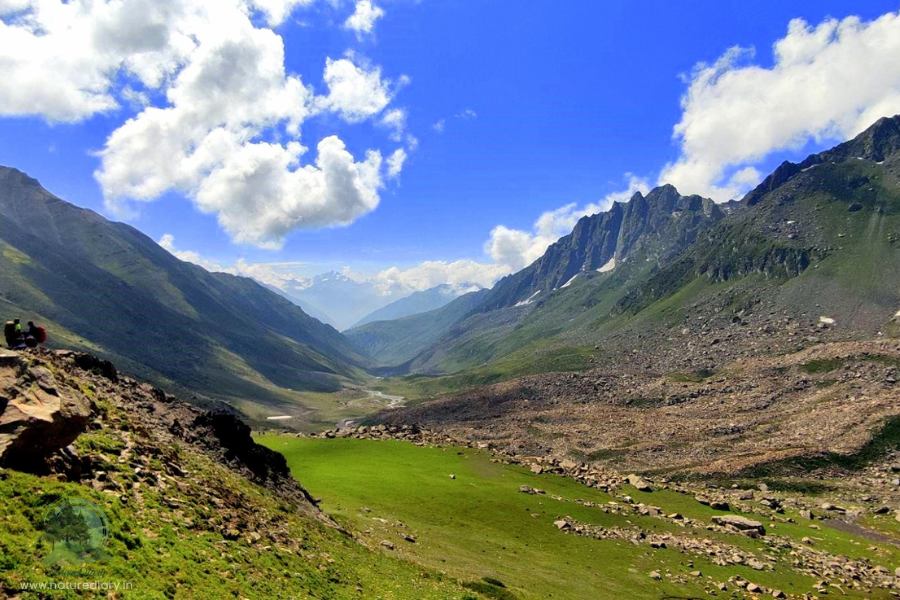
Trekkers often get an illusion of the Nichnai Pass from the campsite. A rugged ridge is visible from the meadow below. However, this is not the actual pass. Reaching the top of the pass can be hectic, as the trail bends inwards more than once.
The pass is a jagged assembly of rocks, some of which remain scattered over the trail. A long range of snow-covered peaks dominates the views on the left, with ice packs melting on their laps. Although you won’t spot any peaks on the right, the picturesque meadows would enthral your views during the KGL trek.

Once you reach the top, the trail jumps sharply from the pass. The rocks disappear from the path, and you would love to return to the pastures. Large flocks of sheep graze in the valleys, with flowers blooming at your feet. The meadows are wide, stretching for several kilometres. You have the mighty mountains on either side while charged-up rivulets cross your path in the meadow.
With the flowery meadows and peaks defining the valley’s charm, you would find yourself in the paradise of the Kashmir Great Lakes. The snow-clad Himalayan mountains remain conspicuous on your left, while the barren heights of the Ladakh ranges show up on the right. You would be trekking through a canvas of grass with lush green views on either side.
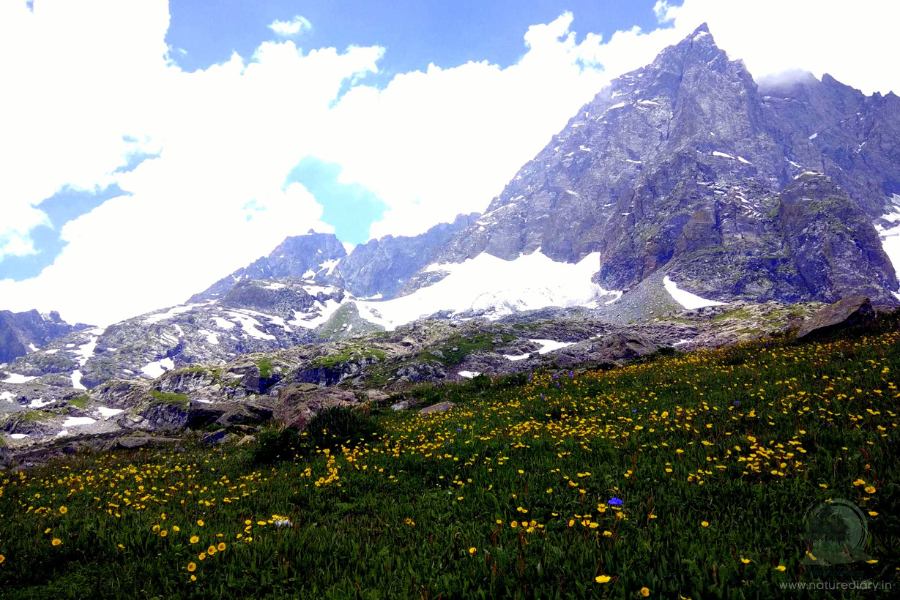
The Vishnusar Lake is not visible from the meadows, and you need to climb around a hundred feet from the campsite. There’s a stream snaking along the meadow from the lake, and you need to keep to its left. Once you pitch the tent, walk for another half a mile along the stream.
The beautiful Vishnusar Lake sits peacefully between four mountains. It reflects a clear view of the Krishnasar peak, which lies half a kilometre away. The still waters of the lake can picture a splendid view of this peak during the KGL trek. Interestingly, the Vishnusar Lake has cobalt-blue waters, like a typical alpine lake. This is due to the absence of algae, unlike the Gadar Lake, which has a greenish hue.
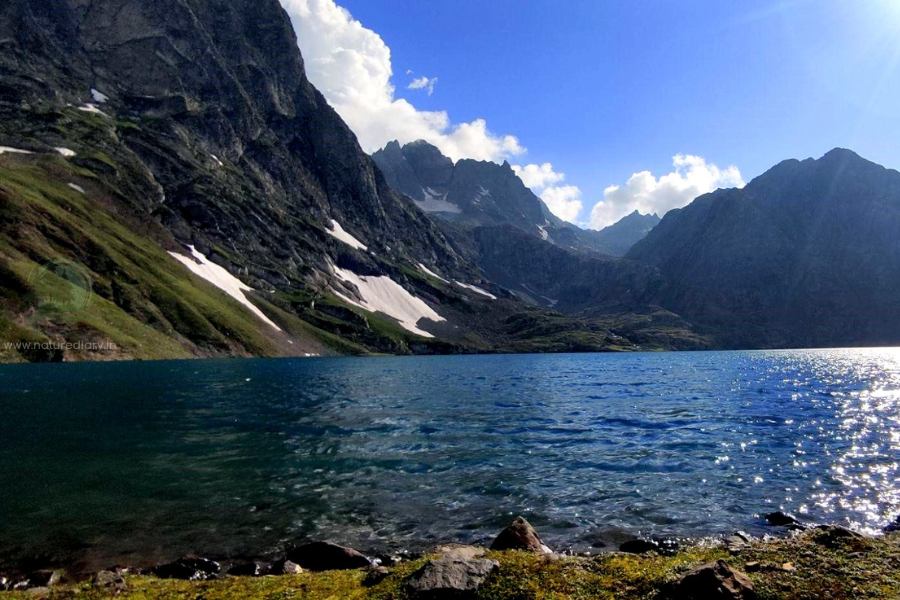
The campsite at Vishnusar Lake offers splendid views as the day gives way to dusk. With horses grazing along the stream, boulders dividing the flow of the tide, and distant colours of the campsite fading into the evening, you have hours to sit and cherish the peaceful ambience. While the high ranges of the Gadsar Pass dominate your frontal view, you can take a glimpse of the mighty ranges of the Ladakh ranges in the opposite direction.
Day 4 (Trek from Vishnusar Campsite to Gadsar via Gadsar Pass)
- Distance: 16 Km
- Trek time: 9 hours
- Altitude gain/loss: 12,011 ft. to 10,706 ft. (Highest point: 13,800 ft.)
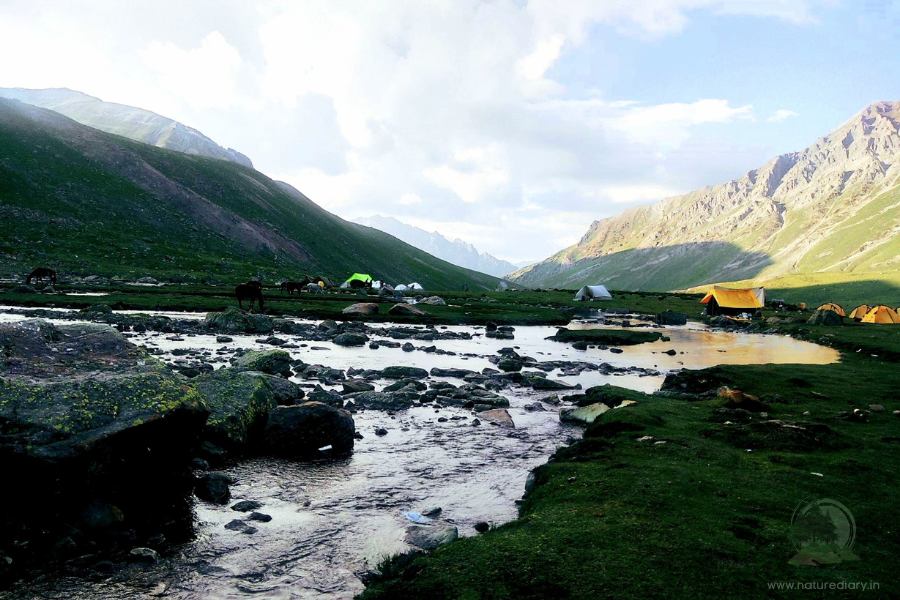
The beauty of trekking on the fourth day lies in the exotic flowers and picturesque lakes nested below the snow-clad mountains. Brace up for the longest march and probably the most hectic day of your KGL trek. On the fourth day, you need to start early from your campsite at Vishnusar, preferably by 7:30. The highest point of your trek awaits your weary presence at 13,800 ft.
The mornings are chilly, and trekkers love photo sessions along the clear reflection of the Krishnasar Peak, casting its reflection on the crystal clear blue waters of the Vishnusar Lake. Behind the campsite, there’s a moderate stretch of boulders. Around 500 ft. above the last camp, you have the Krishnasar Peak, leading to the Gadsar pass further higher.
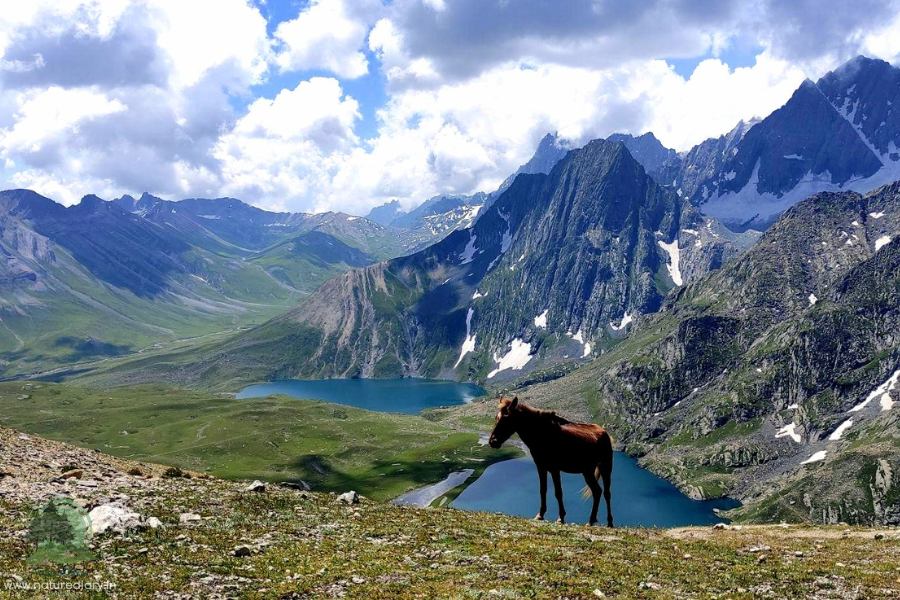
The trail leads you to the other side of the mountain. From the top, you can get a clear view of the azure blue waters of the twin lakes- Vishnusar and Krishnasar. The terrain is moderately wide, although you might feel cramped for space in some areas. Long queues of mules frequently interrupt the trekker’s progress unless the latter takes steep shortcuts.
You can catch the mesmerizing view of the twin lakes for nearly an hour until you reach the trek’s highest point at Gadsar Pass (13,800 ft). It takes nearly 2.5 hours to reach this spot from Vishnasar campsite if you walk at a moderate pace. The ascend is steep, but once you cross the pass, you will love the gentle trot downhill.
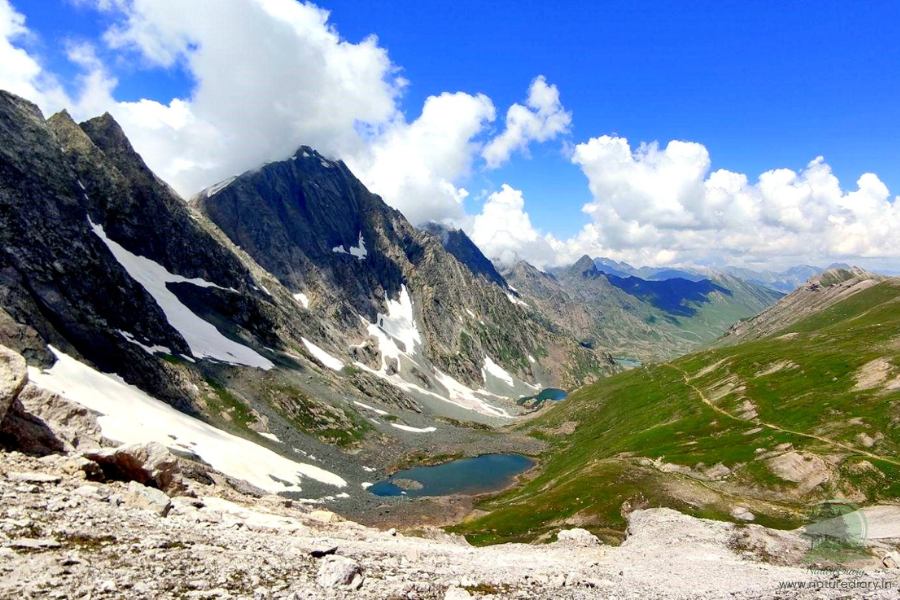
Starting early in the morning, trekkers should try to cross the Gadsar pass in the first three hours, as they still have more than an 11 Km downhill journey awaiting them. From the top of the Gadsar Pass, you can actually get a splendid view of five lakes: Krishnasar and Vishnusar at the back, and Gadsar, Yamsar, and another small lake at the front.
The downhill trek to Kashmir Great Lakes would give you lasting memories, as it is no less than the Valley of Flowers in Uttarakhand. Initially, the descent would be steep, followed by a gentle walk down the meadows. While you let your vision feast on the yellow, purple (Iris), and red flowers in the valley, the snow-clad peaks compose a perfect wallpaper in the backdrop. Even in the middle of July, you can find snow along the downhill trail on the other side of Gadsar Pass in the KGL trek.
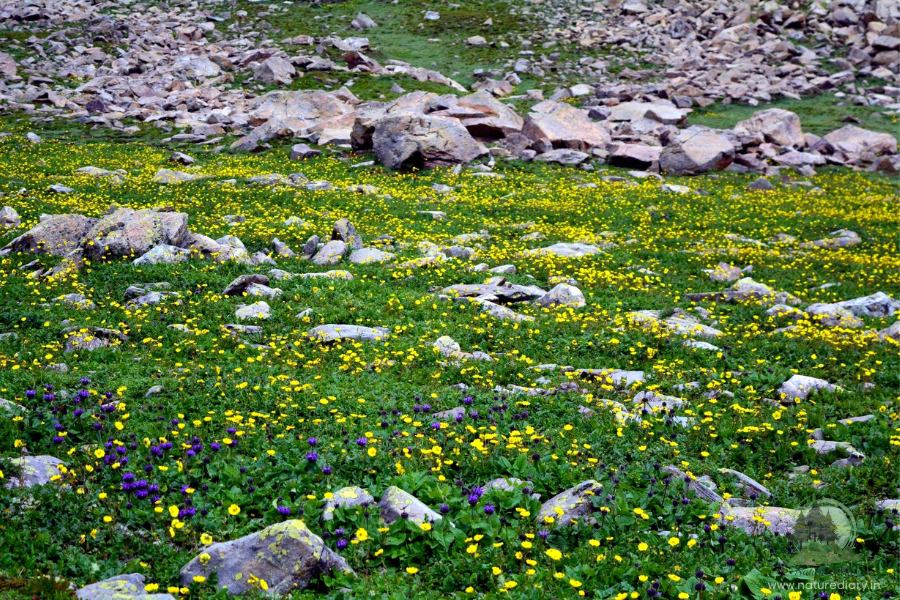
After descending for an hour, you would land in the gentle meadows with flocks of sheep once again. The valley narrows up, and you would find ranges on both sides. Further marching downhill, you will come across Gadsar Lake (12,500 ft), the last of the three lakes you had seen from the top of Gadsar Pass. The lake has a green tinge on its surface, unlike the last two lakes, due to the presence of algae. This green layer, along with the rolling meadows and snow-clad cliffs surrounding it, is a paradise for photographers.
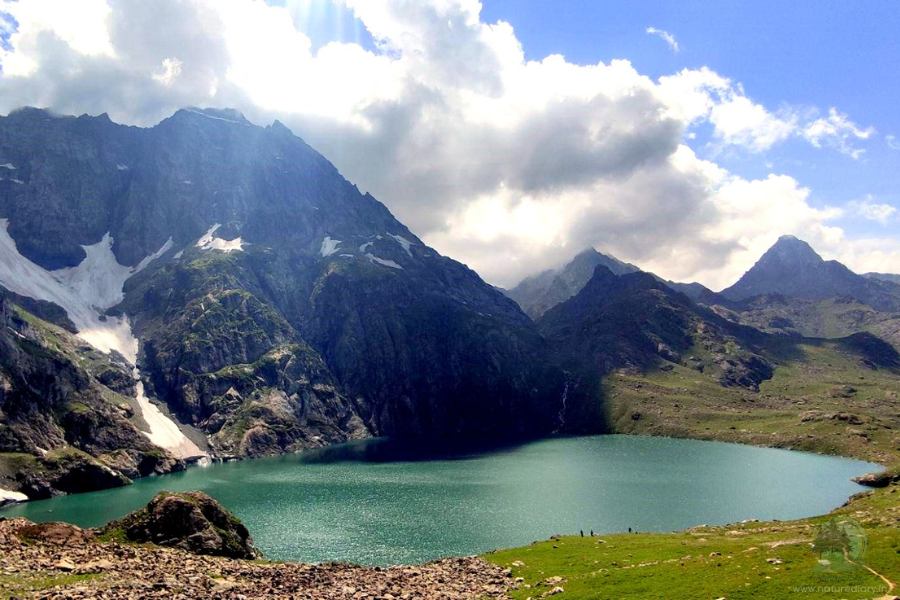
However, you need to pitch the camps further down the valley, close to the Army Camp. This abandoned army shelter lies another hour downhill, and the last stretch might take a toll on your ankles. The landscape looks pretty, just like a large green bowl of grass sitting between the green mountains. A stream trickles down the valley, connecting the three lakes.
Further down, you would come across what we call a ‘horseshoe bend’ of a stream before you reach the army camp. After verifying your identities, the Army personnel would allow you to go through the camp and pitch your tents.
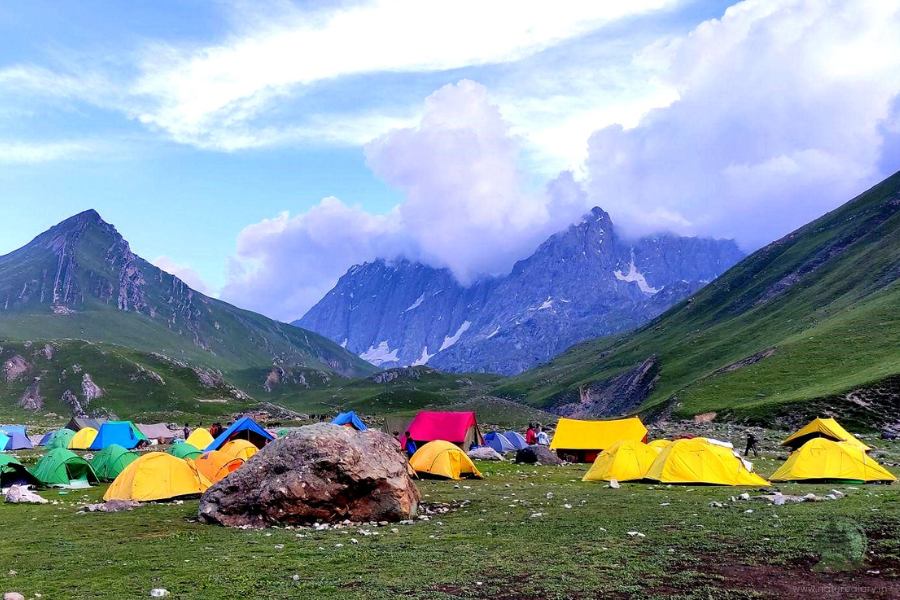
Day 5 (Trek from Gadsar to Satsar Lakes)
- Distance: 11.5-12 Km
- Trek time: 5 hours
- Altitude gain: 10,706 ft. to 11,985 ft.
The pleasant views of a stream welcome trekkers as they set their way on the fifth day for Satsar Lakes. This is a collection of as many as seven different lakes. However, you can view only four or five of these if weather permits, as the other great lakes are located on the other side of the cliffs.
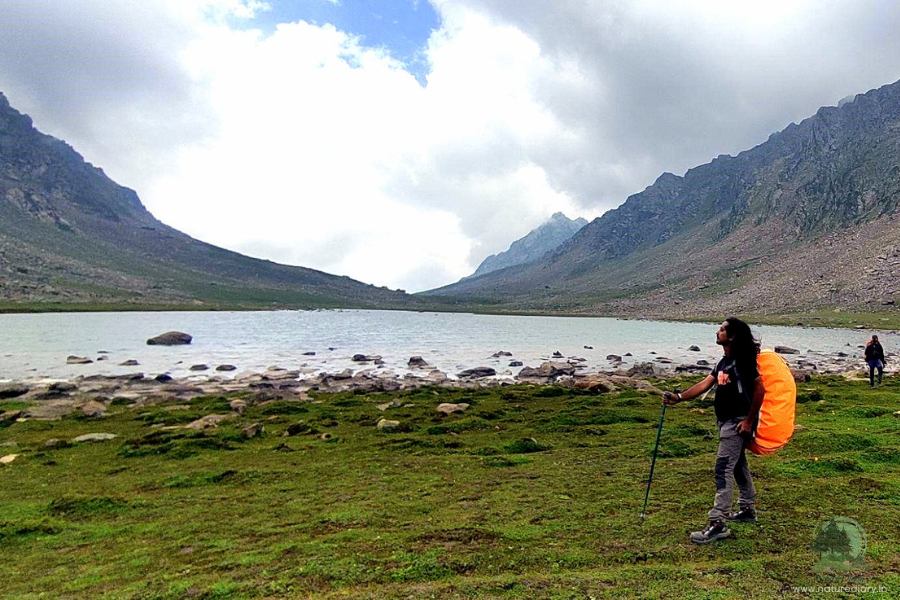
Prepare yourself for a steep ascend lasting for 1.5 hours after you cross the stream. As you gain altitude, you would find the stream narrowing down to just a glittering line far below. It’s easy to find the trail leading uphill after you cross the stream. While you can see the treeline below, the vegetation mostly consists of grass and small bushes. After reaching 11,500 feet, the trail would take you through a traverse.
Next, you can get a glimpse of POK as the trail takes you to the flat plains. Surrounded by mountains, the meadows look blissful with rolling turf on their surface. A few isolated mountains stand in front of you. A stream trickles through the flat lands, and you need to trek further down.
The tricky part of the journey lies in navigating through the boulder zone after the first of the Satsar Lakes becomes visible. The weather mostly remains cloudy here due to the geographical location of the lakes. A few showers with lightning are not uncommon in this region of the KGL trek.
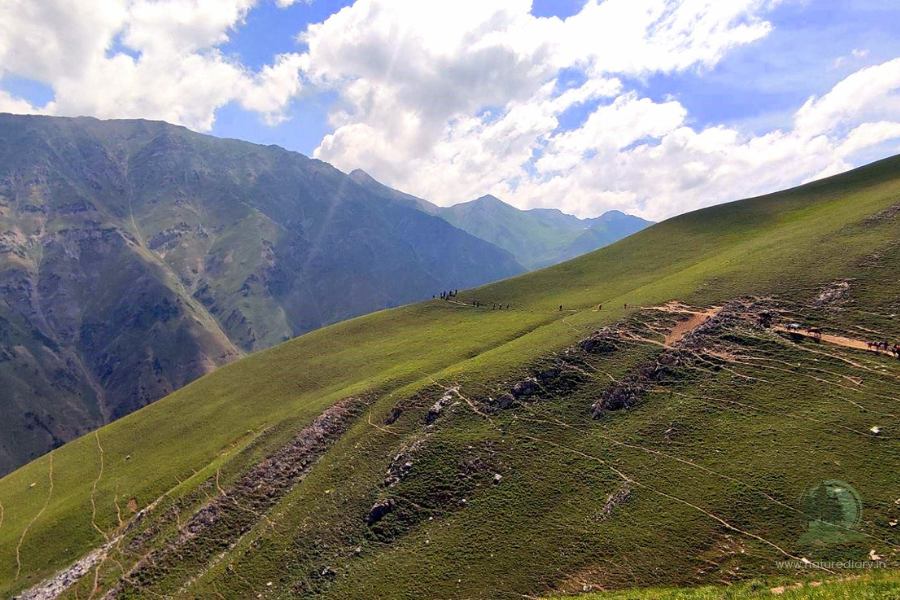
On the fifth day, the beauty of the trek lies in the distant mountains enveloping the clouds and the long stretches of flat lands with wildflowers. After you cross the bend from where you can view POK, a flat table-like landscape emerges at the backdrop, resembling the Windows 98 wallpaper.
After pitching the tent in the valley, you would have hours for the sunset to come. So, make the most of these moments and try to see as many lakes as possible during the Kashmir Great Lakes trekking.
Day 6 (Trek from Satsar Lakes to Gangabal via Zaj Pass)
- Distance: 9 Km
- Trek time: 6 hours
- Altitude gain/loss: 11,985 ft. to 11,486 ft. (Highest point: 13,276 ft.)
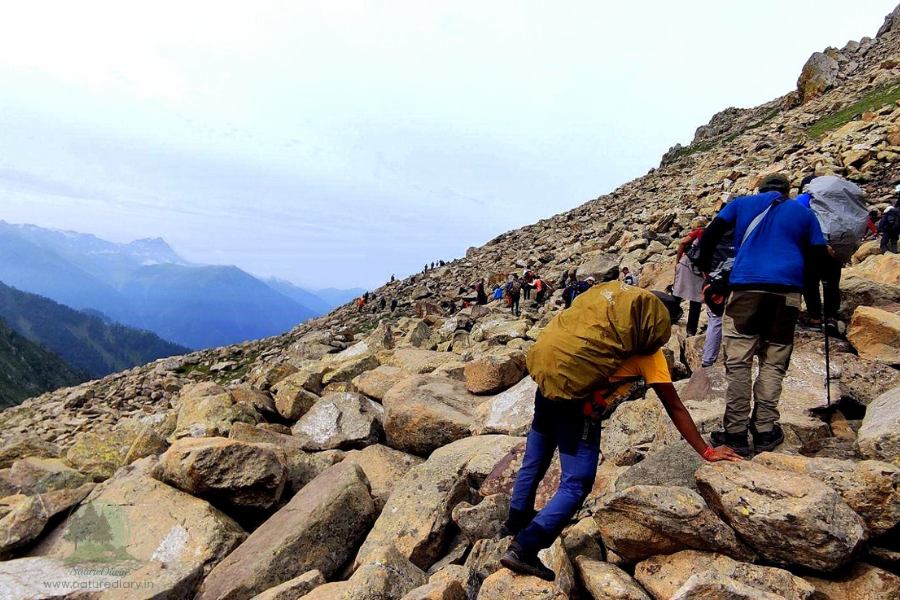
In terms of skills required, the sixth day of your Kashmir Great Lakes Trek will be the most challenging. A long boulder zone awaits you just after you leave the campsite in the morning. This would be an acid test for trekkers, particularly when you trudge through the uneven boulders. It would take around 1.5 hours to leave the Satsar Lakes behind.
Next, you would just touch the treeline before taking on a steep climb for the Zaj Pass (13,276 ft.). Altogether, this is the day to test your mental and physical stamina! This would actually be a boulder-hopping journey, and then the trail would go downhill for half an hour.
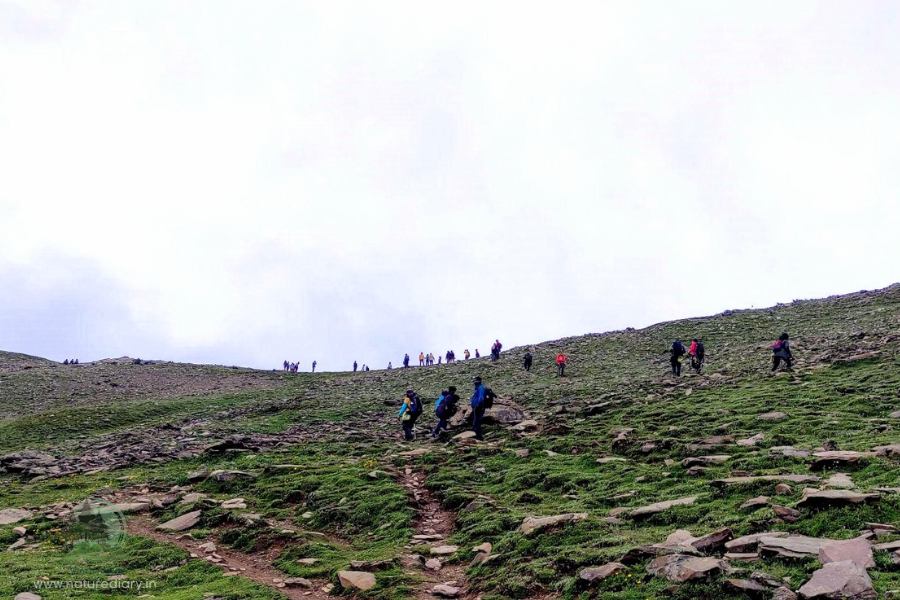
The ridge line visible from the tree line is around 1,000 feet high. On gaining this height (starting from 11,800 ft.), you need to zig-zag your path to the first ridge at the beginning. It would take around an hour to get to the top of this ridge. Once you reach here, you will find a couple of other ridges further up. The upper part is rocky and barren. As you gain altitude, you will appreciate the contrasting views of the greenery behind and the rugged barrenness ahead.
Reaching the third ridge would take more than two hours. This is the top of the Zaj Pass, and you would get a surprising view of Mount Harmukh, which is believed to be the abode of Lord Shiva. The twin lakes of Gangabal and Nundkol lie at the feet of Mount Harmukh. If you are lucky, you will get a crystal-clear view on a cloudless day!
This view of the twin lakes is one of the most striking scenes of the KGL trek. These two lakes are connected by a stream and lie adjacent to one another. On the right, the lake you see is Gangabal, while the other one is Nundkol.
Well, the destination for your camp is 1,400 feet below, so you know how sharp the descent should be. The stony path is full of loose rocks and large boulders, so take care of your footing. Most trekkers pitch their camp beside Nundkol Lake.
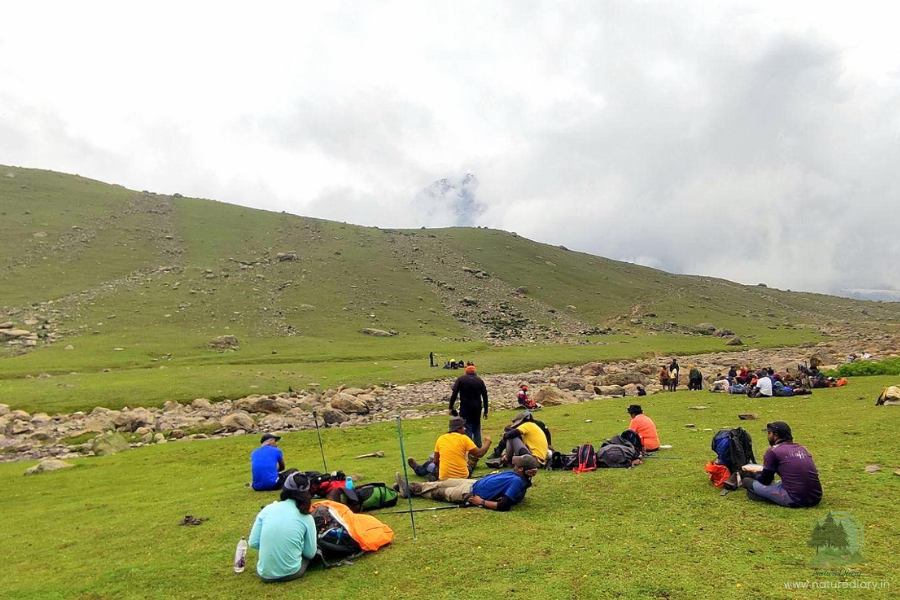
While you descend, take photos of the natural stone formations with green algae and vegetation, adding a mystic essence amidst the clouds at the backdrop. On the way, you would come across a charged-up stream sonorously making its way through the boulders. Fill your bottles if they are empty and make a steep descent to reach the green pastures again.
Well, this is a great place to have your lunch, as a short ascent awaits you before you can finally descend and reach the campsite. Lake Nundkol and Gangabal are favourite weekend destinations for local Kashmiris near Kashmir Great Lakes. So, it’s common to find them pitching their tents beside yours. These people are very friendly, and it would be a pleasure for you to experience the typical Kashmiri lifestyle.
On the rocky edges of the Harmukh, you can spot glaciers hanging. Trout fishing is a popular activity in both these lakes and the narrow stream connecting them. After pitching your tent, it would take around half an hour to trek to Gangabal Lake on the other side of the rocks. There’s a solid bridge close to the lake, so you need not risk yourself getting wet while trying to cross the stream on logs.
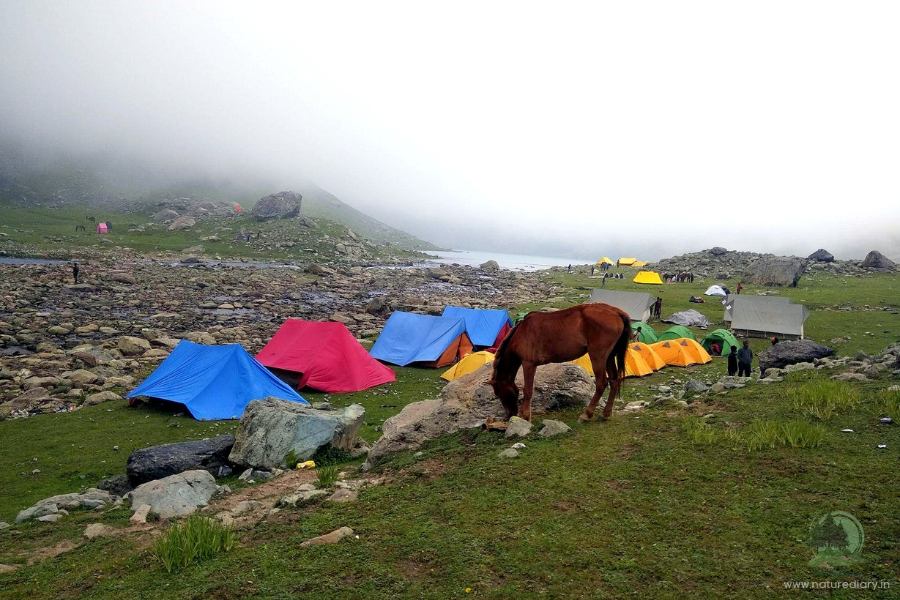
Day 7 (Trek from Gangabal Lake to Narnang and Drive to Srinagar)
- Distance: By trekking 13 Km and driving 52 Km
- Altitude loss: 11486 ft. to 7800 ft.
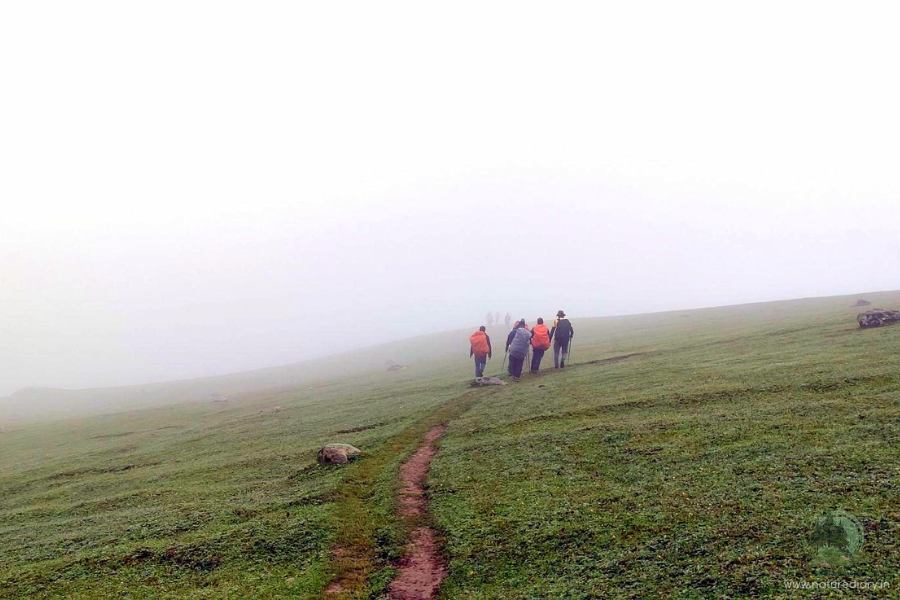
Well, they say nothing ends until it actually ends! The last day of your Kashmir Great Lakes Trek would probably strain your ankle or calf muscles or even break your toes if you aren’t habituated to steep down treks. Loose rocks and narrow trails further make the descent challenging. Moreover, mules and horses carrying luggage often get stuck or topple over the sharp bends downhill, unable to keep their balance. Therefore, navigating through this stretch is going to be a challenge.
Start early in the morning, preferably by 6 AM since a thorough luggage check session awaits you at the army camp. There’s a narrow log bridge (not more than a foot wide) over the stream connecting Nundkol lake to Gangabal Lake. After crossing this stream, take the trail through the tree line, keeping to the ridge at the right. After one hour or so, you would reach the army camp, and the verification process might take more than a couple of hours. This is why it is recommended not to schedule the flights on that day itself.
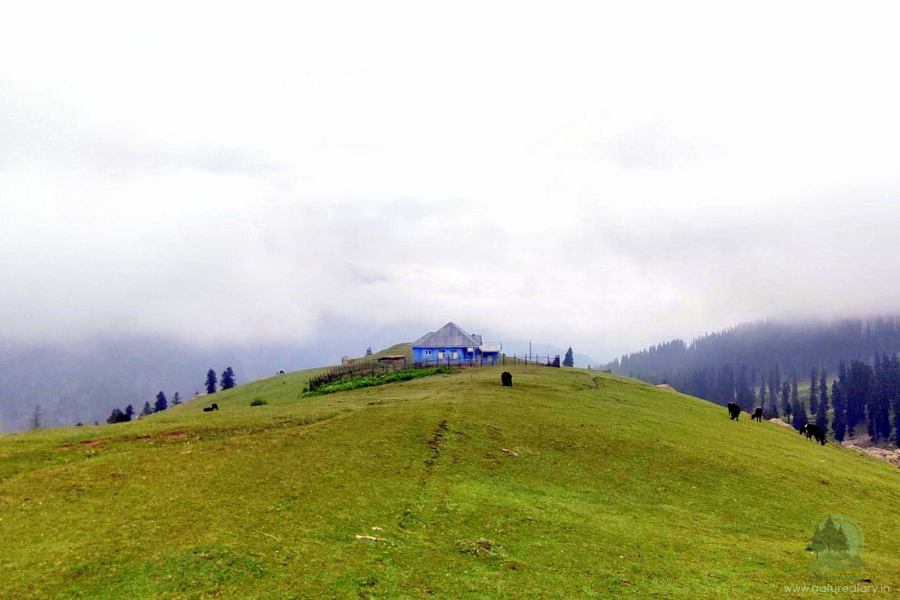
Sitting at the army camp, look at Harmukh peak if the sky is clear. However, photography by mobile phone, DSLR or drone camera is strictly prohibited at the army camp. Meanwhile, you can catch the phone tower here after 7 days of the KGL trek, so call home to inform them that you are doing great!
Well, the beginning of the pine tree lines marks a significant descent, and you would soon be getting back to civilization. Keep to the right without venturing into the forest; otherwise, you can lose your path. On the last day, the vegetation would be quite different from whatever you had seen throughout the trek. Tall pines, misty trails, and meandering boulder paths resemble typical cloudy hill stations of India.
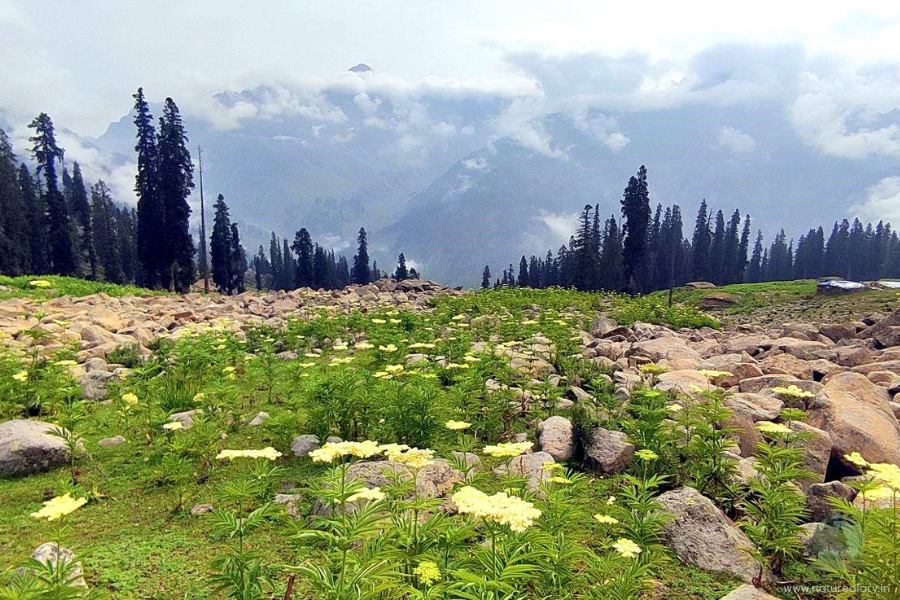
The actual descent begins after you trek 60% of the path on the last day. Brace up for a really steep descent through the muddy paths. Remember, you would be descending more than 3,000 ft. in the last 4 Km. So, you know how badly your toes might ache! The last stretch to Narnag would test your tenacity and endurance, as you can now see the civilization, yet the path seems never-ending.
Well, if you find yourself on the uneven stone track of the adjacent village, comfort your feet that Naranag is not far away. Once you get to the main road, don’t forget to take a selfie along with the hoarding welcoming you to the KGL trek.
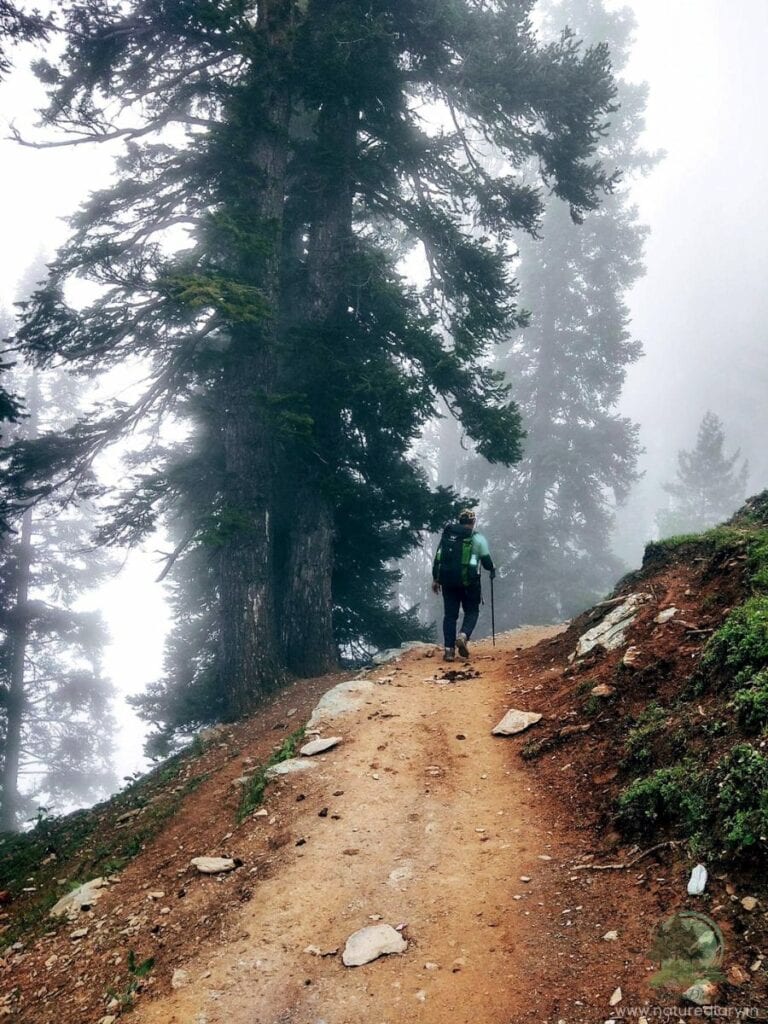
How Much Does Kashmir Great Lakes Trek Cost?
While calculating the cost of the Kashmir Great Lakes Trek, you need to factor in the cost of food, accommodation in tents, and the fees of your guide. Generally, you should be able to complete the trek within ₹12000 to ₹15000. If you want to offload your luggage, be ready to shell out ₹400-₹500 extra daily to the porter.
Although there are several reputed organizers for the KGL trek, I highly recommend Himalayan Passion for their excellent arrangements and professionalism during my trip. Not only Kashmir Great Lakes, but Himalayan Passion also arranges various treks in Uttarakhand, Himachal Pradesh, Sikkim and West Bengal.
- Plan Your Trek With Himalayan Passion
Activities During Kashmir Great Lakes Trek
Treks are loaded with adventures and activities. While we won’t recommend you wander away from the main trail, here are some activities you might try on the KGL trek.
- Take a Dip in a Glacial Lake: While you would be toiling all six days of the Kashmir Great Lakes trek, why not cherish the cool sensation at a glacial lake? The water would be chilly at Gangabal Lake when you reach it. Hold your breath and take a quick dip (unless you are prone to cold). This will be a good idea if you have a buffer day.
- Camping : During the KGL trek, you can camp by most of the lakes. It is a thrilling activity while enjoying the cool breeze and the view of the majestic Himalayas. If you love camping by a lake, visit Pawna lake camping in Maharashtra for a weekend.
- Taste Wild Berries : Trekking from Gadsar Lake to Satsar Lakes, you would come across wild berries growing on the grass. These are some of the sweetest berries you would ever find! It won’t be a sin to treat your taste buds with some of these berries as you cross the meadows.
- Explore Hidden Lakes : If you are an avid trekker, you won’t repent walking a few extra miles to find hidden lakes. While you would reach the campsite by 4 in the afternoon most days, you would have at least four hours of daylight left. Utilize this time to find the smaller and nameless lakes by taking small hikes from your campsite.
- Go Fishing : Fishing is popular among the locals at Gangabal Lake. Even Vishnusar Lake is known for its enormous reserves of trout fish. You simply need to obtain a permit so that you can spend the late afternoons fishing by the lakes.
- Stargazing : Kashmir Great Lakes are one of the magical places for stargazing in India . It is another exciting activity for adventure lovers during the KGL trek. As the sky remains mostly clear during the night, you can see stars, planets and galaxies with bare eyes. You can even capture the beautiful night sky using your camera that supports astrophotography.
- Bird Watching : As the KGL trek lies in the Himalayan mountain range, the nearby places are home to birds like finches (gold and rose), wagtails, pipits, and marmots. You can use a long-distance binocular to spot the birds or a camera to capture the moment.
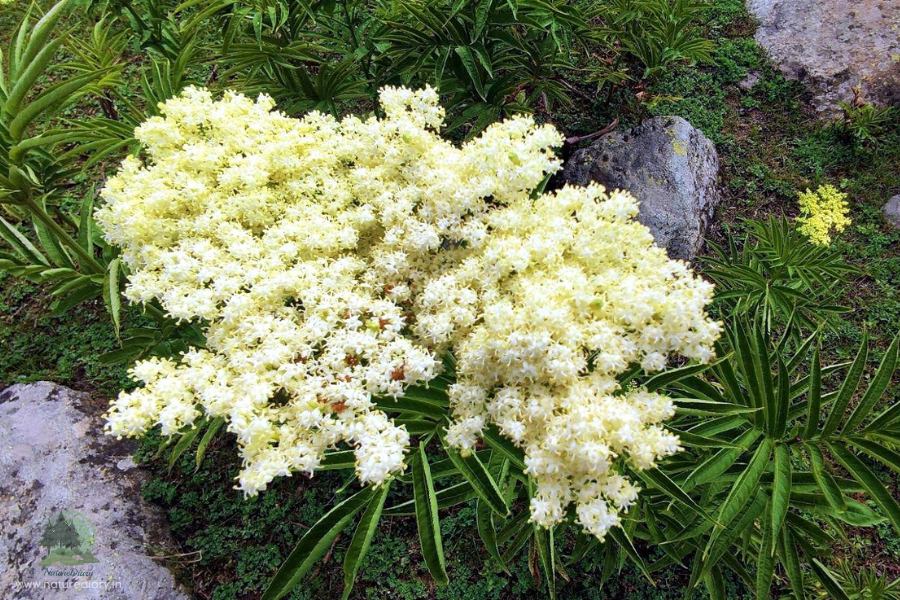
Things to Carry during KGL Trek
- Documents : Among all trekking essentials for the KGL trek, documents are the most important. Carry the original and Xerox copies of the Aadhar card or other photo ID cards issued by the government. Also, you would need a medical certificate validating your fitness issued by a practising doctor for trekking to the Kashmir Great Lakes.
- Trekking Shoes : Considering the rugged terrain on KGL Trek, you would need the comfortable and waterproof trekking shoes capable of walking on snow. Ensure proper ankle support and grip since you would cover long distances, including boulder sections and muddy terrains.
- Rucksack or Trekking Backpack : Get a backpack of 50 to 60 litres with good shoulder and hip support. The pockets should be quickly accessible. Thus, choose a water-resistant rucksack with rain cover since there is a possibility of a shower at any time.
- Clothes : While going for the KGL trek, you need at least three to four layers. So, carry 3 synthetic T-shirts, 2 light fleece jackets , 1 full-sleeve sweater, and a waterproof outer layer like a jacket. 2 trekking trousers would be adequate. Don’t miss out on your sun cap, woollen cap, synthetic gloves, socks (3 pairs), sunglasses, and sunscreen.
- LED Torch or Headlamp : Since no electricity would be available throughout the trek, it would be wise to carry your LED torch or headlamp. Make sure to carry enough batteries so that they last 7 days. We recommend a headlamp since it would keep your hands free, whether you pack your bag inside the tent or visit the toilet tent.
- Other Accessories : Carry other necessary accessories like a power bank, sanitiser, soap paper, wet wipes, and a raincoat. Also, carry trekking poles, binoculars, insect repellants, medicines, water bottles, lunch boxes, and reusable plastic bags. You don’t have to worry about tents or sleeping bags as the tour operator facilitates them.
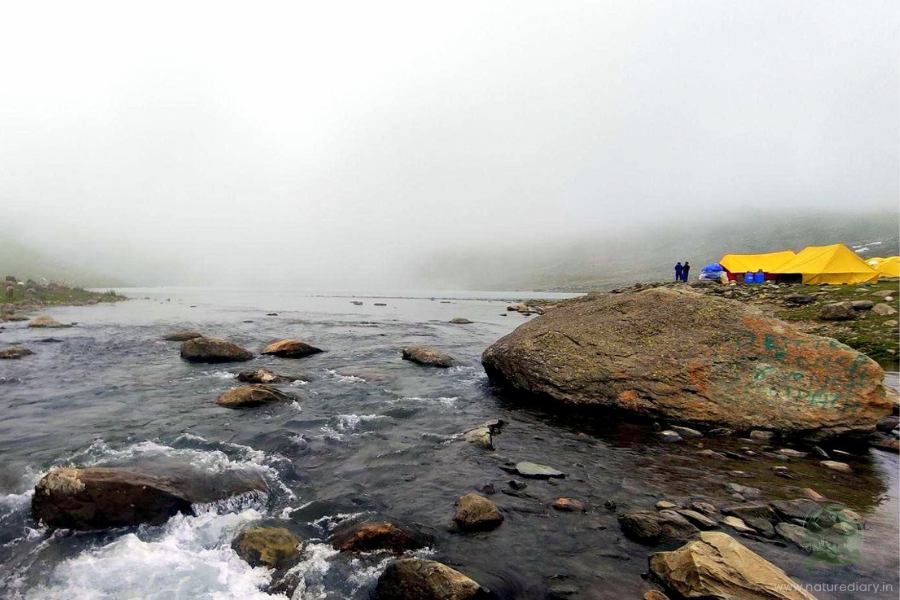
Tips For Trekking to the Kashmir Great Lakes
- Fitness matters the most when you take on a challenging trek like KGL. Prepare yourself by running or jogging for a week thrice. You should be able to comfortably cover a distance of 5 Km. in 40 minutes. Apart from developing lung capacity, get some resistance workouts like lunges and squats for your legs.
- During the Kashmir Great Lakes trek, staying hydrated is key to maintaining fitness. Drink at least 4 litres of water each day. While you can carry 2 litres of water during the trek, make sure to fill up the bottles from the streams on the way.
- Make sure to put on your suncap and sunscreen to beat the heat. Although the temperature would remain under 20 degrees C most of the time, the long exposure to the sun (6-8 hours each day) can take a toll on your skin and stamina.
- Listen to your trek leader and guide, and do not stray away on other trails. While taking photos, avoid queuing up on boulder zones to avoid accidents.
- Carry a postpaid sim card to communicate with your family members since prepaid sims do not work in Kashmir.
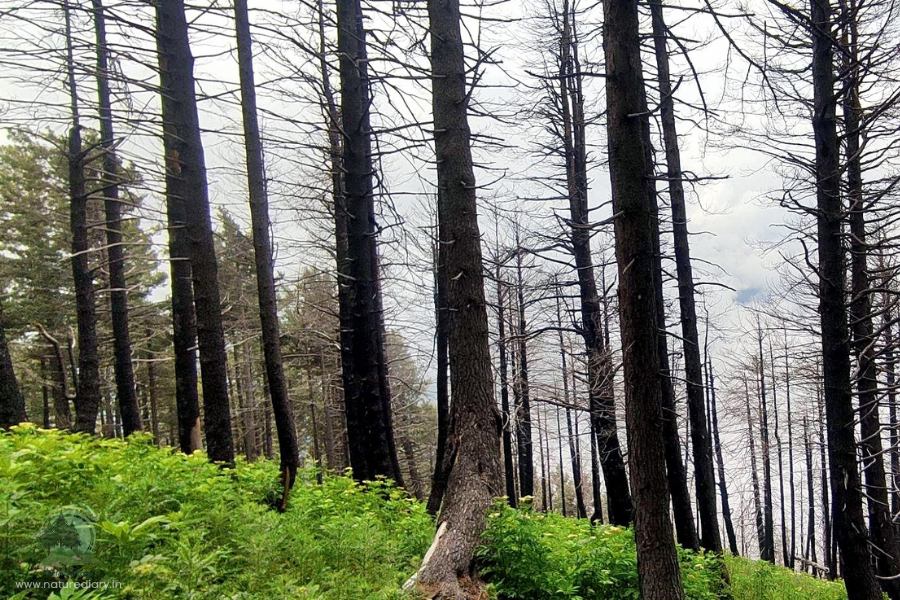
Frequently Asked Questions (FAQ)
The Kashmir Great Lakes Trek has a moderate to challenging level. Although the pictures look beautiful, you need to toil your way through the trek. The factors making it a tough trek include the long distances each day (12-16 Kilometers), a considerable gain in altitude, and three high-altitude pass crossings.
Yes, the KGL trek is absolutely safe. It is away from the border areas and disturbances. The trek lies in the Sonmarg region, which attracts lots of tourists. Besides, the trekking trail has as many as 3 army camps. You would be camping close to these camps, which makes the trek safe.
In 7 days, you need to cover around 75-80 Km. Therefore, on average, you would be trekking around 9-16 Km each day.
You can cherish as many as 6 alpine lakes in the KGL trek. Apart from these, you can try and find some of the smaller lakes along the trail.
Yes, Kashmir Great Lakes Trek is one of the most diverse and picturesque treks in India. If you can make it, you should consider yourself lucky to witness the pristine waters of the lakes, rolling meadows, high-altitude peaks, and snow-clad mountains.
Trekkers usually go for KGL from July to mid-September. Heavy snowfall keeps the trails buried during the other seasons. Although the rest of the country, and even Uttarakhand, experiences monsoon during these three months, this is the ideal time for trekking the Kashmir valley. Thanks to the Pir Panjal Range, Kashmir remains in the rain shadow side as it blocks the clouds from Uttarakhand. Nature bursts into bloom, although you can spot melting ice caps all around.
Kashmir Great Lakes Trek is a high-altitude trek. So, you need to carry your tents and other necessary tools to pitch them. Starting from Shitkari, you would pitch these tents in the respective campsites each day until you reach Gangabal. No other accommodations, such as hotels or homestays, are available amidst the wilderness.
Generally, the trek organizers provide wholesome meals during breakfast, lunch, evening snacks, and dinner. They also supply dry fruits and chocolates. Trekkers can also carry cashews, almonds, nuts, raisins, and dry foods on their own. Chapatis, rice, bread, cornflakes, vegetables, rajma, dal, sweet dishes, and milk are available with most of the trek organizers. All supplies must be carried on mules or horses, along with other cooling accessories and gas cylinders.
We hope that you have enjoyed this article. Let us know your experience! If you like us to write on any specific topic, send your request to [email protected] . Your feedback is highly appreciated. We will love to hear from you!
Is This Article Helpful? Cancel Reply
- Rating 5 4 3 2 1

- Trekking & Travel Events
- Travel Organizations
- Himalayan Treks
- Maharashtra Treks
- Karnataka Treks
- Travel Guides
- Weekend Getaways
- Trekking Tips & Advice
Kashmir Great Lakes Trek: Ultimate Guide
- Trekking Destinations
Are you an adventure enthusiast looking to embark on a thrilling journey amidst nature’s breathtaking beauty? Look no further than the Kashmir Great Lakes Trek.
Nestled in the picturesque region of Kashmir, this trek in India offers a mesmerizing experience that combines pristine alpine lakes, snow-capped mountains, and lush meadows.
This article explores the amazing trek and provides the information you need to plan an unforgettable adventure.
- Max Altitude: 13,750 Ft. (4,191M)
- Average Trekking Fees: ₹14,000 – ₹17,000
- Distance: 70 – 75 kms
- Difficulty: Moderate-Difficult
- Duration: 7-8 days
- Ideal For: Experienced Trekkers
- Best Season: July – September
- Region: Jammu & Kashmir
Table of Contents
Overview: A Glimpse of the Kashmir Great Lakes Trek

The KGL Trek is a mesmerizing adventure that takes you through some of the most stunning landscapes in the Indian Himalayas. This trek is renowned for its pristine alpine lakes, vibrant meadows, dense pine forests, and majestic snow-capped peaks. It offers a visual feast for nature lovers and avid trekkers alike.
The trek spans approximately 63 kilometres, usually completed in 7 to 8 days , starting from Sonamarg and concluding at Naranag. Along the way, trekkers are treated to seven breathtaking lakes, each with its distinct charm. From the serene Vishansar Lake to the mirrored beauty of Gangabal Lake, the shimmering waters create a surreal backdrop against the surrounding mountains.
The journey also presents diverse terrains, from gentle meandering trails to steep ascents, adding an element of challenge and thrill. Trekkers traverse through lush meadows adorned with colourful wildflowers, cross gushing streams, and navigate rocky paths, all while being enveloped in the grandeur of the Himalayas.
Camping under the starry skies and experiencing the remote mountainous region’s tranquillity adds to the trek’s overall charm. Trekkers often encounter local shepherds and nomads, providing a glimpse into this picturesque region’s traditional way of life.
With its awe-inspiring landscapes, azure lakes, and a sense of adventure at every step, the KGL Trek is a bucket-list-worthy experience that leaves an indelible mark on every trekker’s heart.
Additional Information for the Kashmir Great Lakes Trek
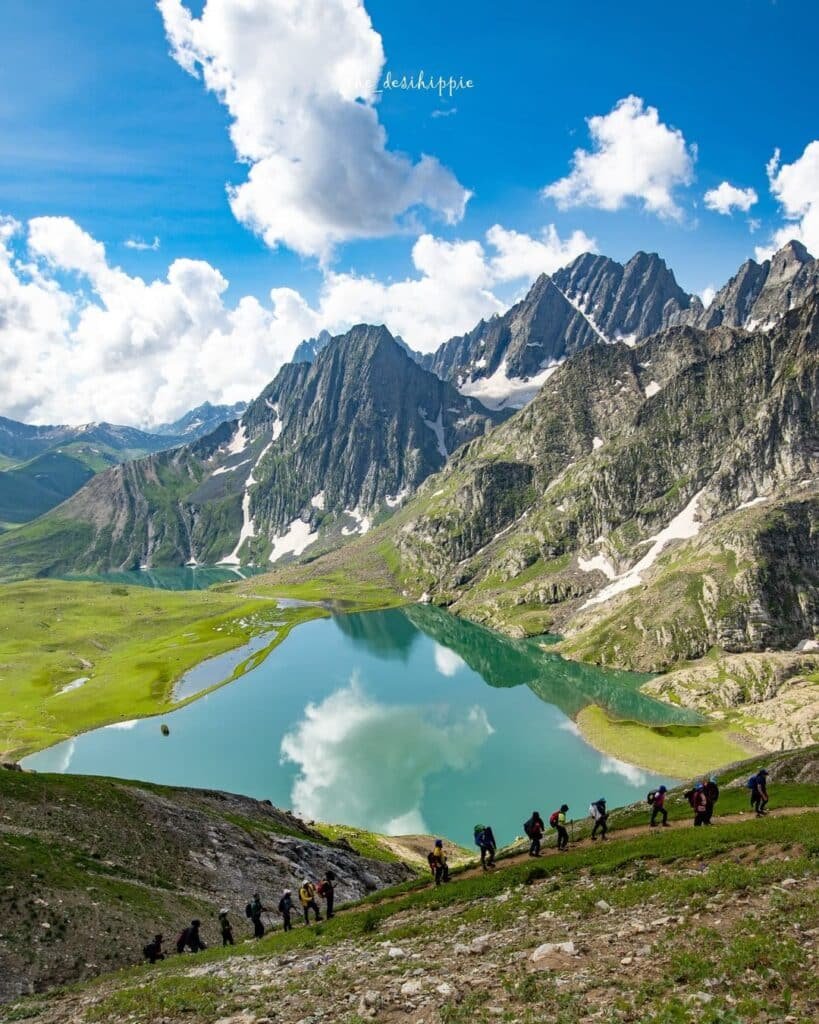
Trek Difficulty & Duration for the Kashmir Great Lakes Trek
The Trek offers moderate to difficult difficulty, making it suitable for experienced trekkers and those with a good fitness level. The trail involves gradual ascents and steep sections, with rugged terrain and occasional rocky patches. Trekkers should be prepared for varying weather conditions, including cold temperatures at higher altitudes.
The trek typically spans 7 to 8 days, covering a distance of approximately 70-75 kilometres from the base camp to the end point . Each day involves an average of 6 to 8 hours of trekking , allowing ample time to enjoy the breathtaking scenery and acclimatize to the altitude. It’s important to pace oneself, take regular breaks and stay hydrated.
Altitude sickness can be a concern on this trek, as it reaches heights above 4,191 meters (13,750 feet) . Listening to experienced trek leaders and following their instructions regarding acclimatization and safety precautions is crucial.
While the trek requires a certain level of physical endurance, trekkers are rewarded with awe-inspiring views of the majestic Himalayan ranges, pristine lakes, and vibrant meadows. With proper preparation, including cardiovascular exercises and stamina-building activities, adventurers can fully enjoy the enchanting beauty of the KGL Trek.
Best Time For the Kashmir Great Lakes Trek
The best time to embark on the trek is during the monsoon months of July to September . This period offers favourable weather conditions and ensures a safe and enjoyable trekking experience.
During this time, the region experiences pleasant daytime temperatures are around 15°C to 25°C (59°F to 77°F) in lower altitudes . The nights can get very cold, with temperatures going as low as 5°C to 10°C (41°F to 50°F) . The weather is relatively stable, with clear skies and minimal chances of rainfall, allowing trekkers to fully immerse themselves in the beauty of the surroundings.
Additionally, the monsoon months bring forth an abundance of colourful wildflowers and lush greenery, enhancing the visual appeal of the trek. The lakes are at their most enchanting, reflecting the surrounding mountains and creating stunning vistas.
It’s important to note that the region during the winter months there is a chance of heavy snowfall, making the trail inaccessible and increasing the risks associated with trekking. Monsoon season, from early July to mid-August, can bring unpredictable weather conditions and hinder the trekking experience .
Planning your trek between July and September lets you make the most of the pleasant weather, breathtaking landscapes, and optimal trail conditions, ensuring a memorable and safe trek.
Budget & Costing for the Trek
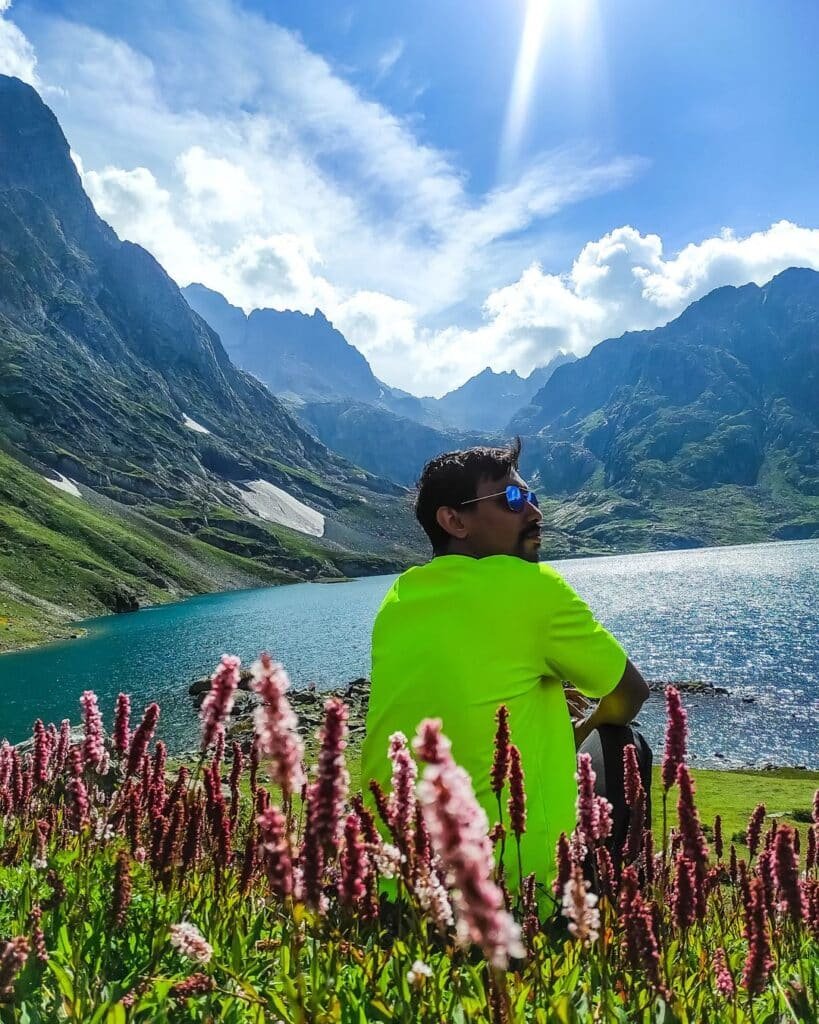
A breakdown of the costing and budgeting for the trek:
- Trekking Packages: Trekking packages are available from various trek operators and typically include services such as guides, porters, camping equipment, meals, permits, and transportation. The cost can range from approximately ₹14,000 to ₹17,000 per person , depending on the inclusions, duration, and quality of services.
- Flights: If you’re travelling from outside Jammu and Kashmir, you must budget for flights to Srinagar or Jammu. The cost can vary depending on the city you are flying from and the time of booking but generally ranges from ₹10,000 to ₹15,000 for a round trip from all the major cities in India.
- Local Transportation: Transportation from Srinagar or Jammu to the trek starting point (usually Sonamarg) and from the trek endpoint (usually Naranag) back to Srinagar or Jammu will incur additional costs, amounting to approximately ₹2,000 to ₹4,000 .
- Accommodation: During the trek, accommodation is usually provided in tents by the trekking organisations.
- Food and Water: Most trek packages include meals during the trek. However, it’s advisable to carry some extra snacks and energy bars. Budget around ₹100 to ₹300 per day for additional food and water supplies.
- Miscellaneous Expenses: Consider setting aside a budget for miscellaneous expenses such as trekking gear, personal medication, tips for guides and porters, and any additional activities or souvenirs. Depending on your requirements, allocate around ₹2,000 to ₹5,000 for miscellaneous expenses.
It’s important to note that these figures are estimates and can vary based on factors such as the trek operator, individual preferences, and exchange rates.
Researching and comparing prices from different trek operators is recommended to find the best package that suits your budget and requirements.
How To Reach?
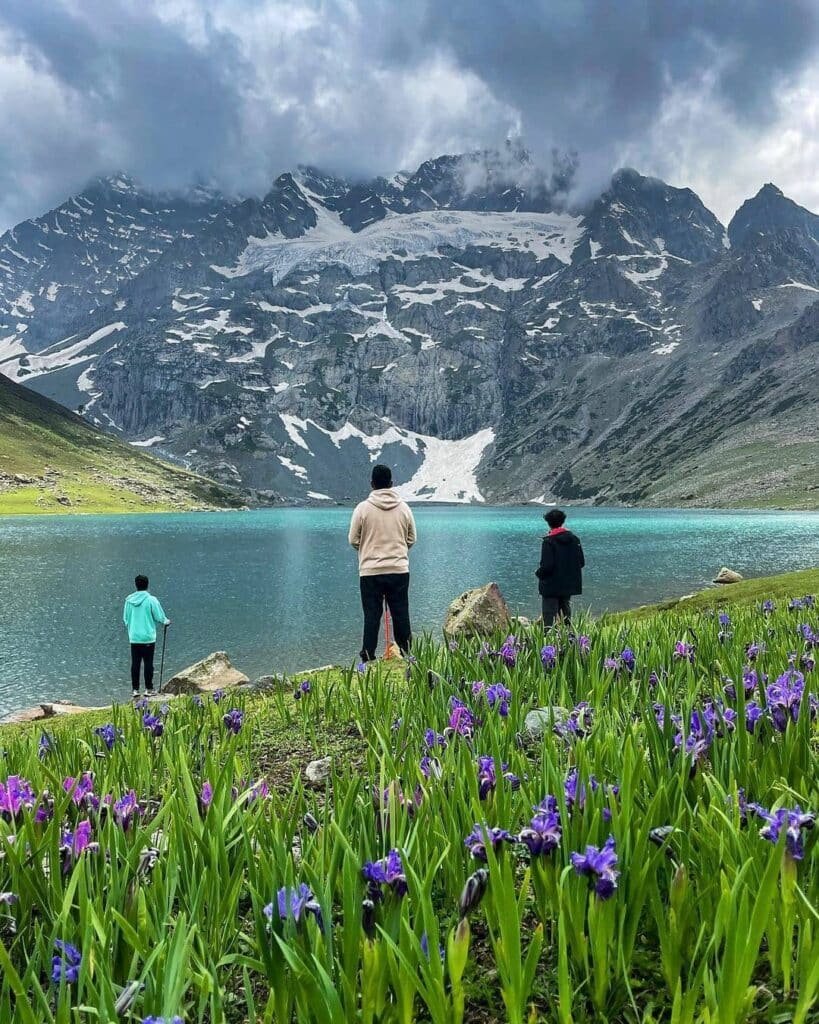
Reaching the start point of the trek involves travelling to Sonamarg, which serves as the gateway to the trek. Here are three standard modes of transportation to reach Sonamarg:
- Via Flights to Srinagar: The nearest airport to Sonamarg is the Srinagar International Airport. Several domestic airlines operate regular flights to Srinagar from major cities in India, including Delhi, Mumbai, Bangalore, and Kolkata. You can hire a pre-paid taxi from the airport or take a shared cab to reach Sonamarg. The journey from Srinagar to Sonamarg takes approximately 3 to 4 hours by road.
- Via Train: The nearest railway station to Sonamarg is the Jammu Tawi Railway Station in Jammu City. Jammu is well-connected to major cities in India by train. You can hire a taxi from Jammu or take a bus to Sonamarg. The journey from Jammu to Sonamarg takes around 8 to 9 hours, a distance of approximately 270 kilometres.
- Via Road: Sonamarg is accessible by road from Srinagar and other major regional cities. Srinagar is well-connected to cities like Delhi, Chandigarh, and Jammu by a network of national highways. You can drive to Sonamarg in a private vehicle or hire a taxi from Srinagar. The road journey from Srinagar to Sonamarg takes approximately 3 to 4 hours.
It’s important to note that road conditions in the mountainous region can be challenging, particularly during winters or adverse weather conditions.
It’s advisable to check the weather and road conditions beforehand and plan your journey accordingly. Hiring a local driver familiar with the terrain can also be beneficial.
Always leave ample time for travel, especially if you arrive on the same day as the trek departure. Reaching Sonamarg a day in advance is recommended to ensure a smooth start to your KGL Trek.
Detailed Itinerary For The Kashmir Great Lakes Trek
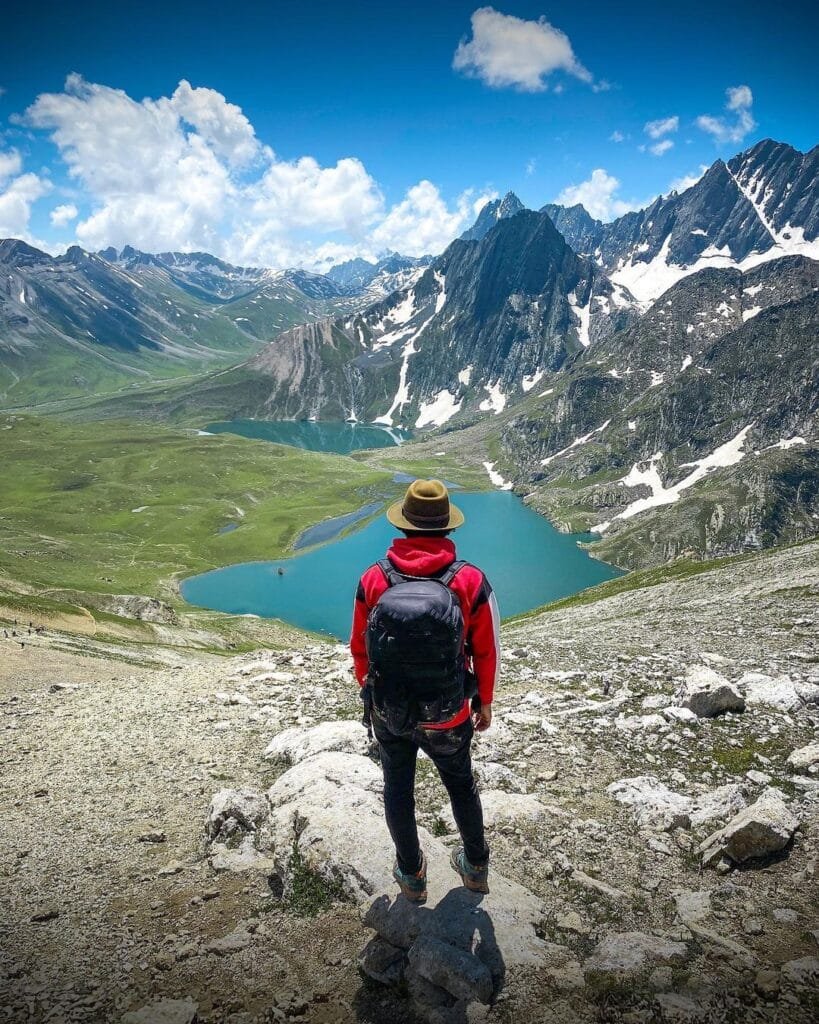
Day 1: Srinagar to Sonamarg
On the first day of the trek, you will begin your journey from the beautiful city of Srinagar, often called the “Venice of the East.” From Srinagar, you will travel to Sonamarg, the gateway to the trek. The scenic drive to Sonamarg takes you through picturesque landscapes, lush green meadows, pine trees and the gushing Sindh river.
Day 2: Sonamarg to Nichnai – 11 KM | 8 Hours
After a restful night in Sonamarg, your trekking adventure commences. The trail from Sonamarg to Nichnai is relatively moderate, allowing you to gradually acclimate to higher altitudes. As you hike through dense pine and maple forests, you will be captivated by the vibrant flora and fauna surrounding you.
Day 3: Nichnai to Vishansar Lake – 12 KM | 7 Hours
As you leave Nichnai behind, the trail leads you to the captivating Vishansar Lake via Nichnai Pass. This azure gem nestled amidst towering mountains will leave you amazed. The peaceful ambience and the mirror-like reflections of the mountains on the lake’s surface create a surreal setting.
Day 4: Vishansar Lake to Gadsar Lake – 14 KM | 10 Hours
Continuing your journey, you will trek from Vishansar Lake to Gadsar Lake via Gadsar Pass, known as the “Lake of Flowers.” The trail presents a stark contrast as you traverse the rocky terrain and witness the dramatic change in the landscape. Gadsar Lake, with its turquoise waters, surrounded by snow-clad peaks, offers a serene escape from the challenges of the trail.
Day 5: Gadsar Lake to Satsar Lake – 9 KM | 6 Hours
From Gadsar Lake, your next destination is the stunning Satsar Lake. This cluster of seven interconnected lakes, each with its distinct character, is a true marvel of nature. The tranquil ambience and the breathtaking views make this leg of the trek a memorable experience.
Day 6: Satsar Lake to Gangabal Twin Lakes – 11 KM | 6 Hours
The penultimate day of the trek takes you to the mesmerising Gangabal Twin Lakes. These twin lakes, nestled amidst pristine meadows and surrounded by lofty mountains, offer a sense of tranquillity and solitude. The reflections of the surrounding peaks on the crystal-clear waters create a magical sight.
Day 7: Gangabal Twin Lakes to Naranag – 15 KM | 7 Hours
On the final day of the trek, you bid farewell to the enchanting Gangabal Twin Lakes and make your way to Naranag. The trail descends through lush green meadows and picturesque landscapes, giving you a chance to reflect on your incredible journey.
Highlights of the Kashmir Great Lakes Trek
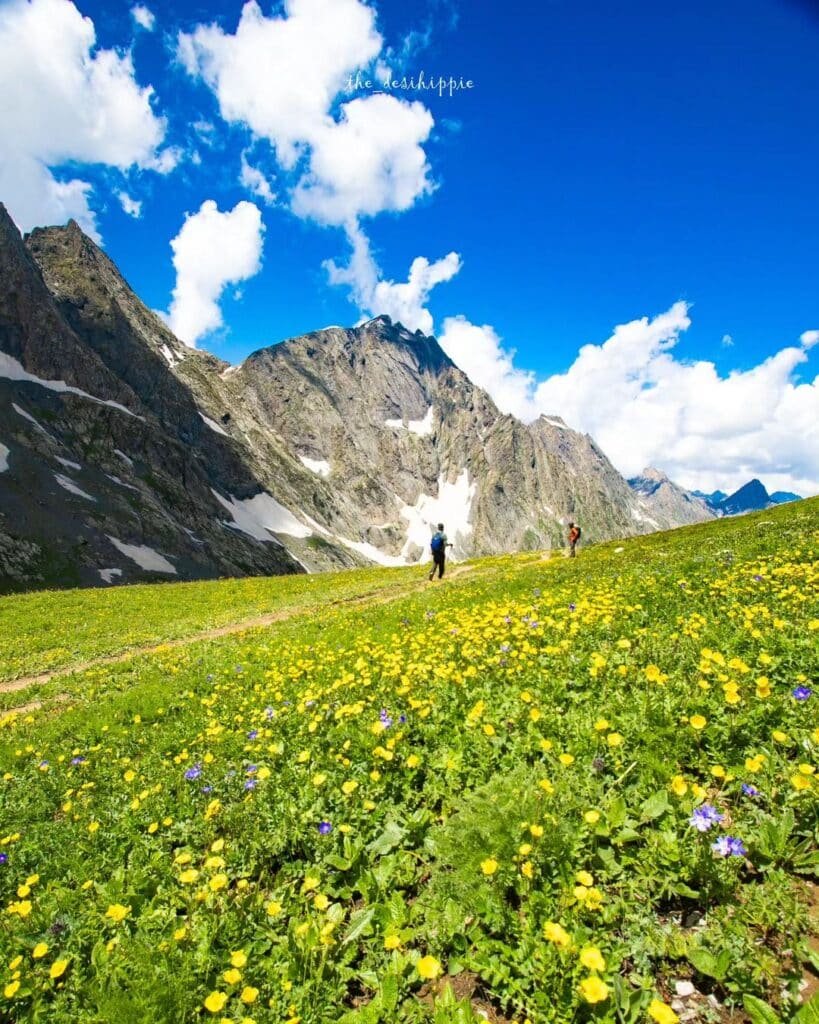
- Breathtaking Alpine Lakes: The trek showcases a series of seven stunning alpine lakes, each with its unique charm. From the crystal-clear waters of Vishansar and Krishansar Lakes to the picturesque Gangabal Lake nestled amidst snow-capped peaks, the beauty of these lakes is truly mesmerising. The tranquil surroundings and mirrored reflections create postcard-worthy vistas.
- Enchanting Landscapes of Kashmir: The trek takes you through some of the most awe-inspiring landscapes in Kashmir. From lush meadows adorned with colourful wildflowers to dense pine forests and majestic mountains, every step offers a feast for the eyes. The picturesque beauty of the region, with its rolling hills, towering peaks, and vibrant flora, showcases the natural splendour of the Himalayas.
- Challenging Trekking Experience: The trek provides a thrilling and rewarding experience. The trail involves a mix of moderate and challenging sections, including steep ascents and rocky terrain. It pushes trekkers out of their comfort zones, testing their physical endurance and mental resilience. Overcoming these challenges and reaching the high-altitude lakes brings excellent accomplishment.
- Immersion in the Kashmiri Culture: During the trek, trekkers interact with the local people, including shepherds and nomads. This allows for a cultural immersion experience, gaining insights into the traditional way of life in the region. Interacting with warm and welcoming locals adds a special touch to the trekking experience.
- Remote and Pristine Wilderness: Embark on an adventure into remote and untouched wilderness. The Kashmir Great Lakes Trek takes you through off-the-beaten-path trails, away from the hustle and bustle of civilisation. Experience the serenity and solitude of the mountains, surrounded by the pristine beauty of nature.
The Kashmir Great Lakes Trek truly captivates with its serene lakes, breathtaking landscapes, and the sense of adventure that comes with stepping out of one’s comfort zone.
Essential Gear and Equipment for the Trek
Before embarking on the trek, it is essential to pack the right gear and equipment to ensure a safe and comfortable journey. Here is a list of items you should consider carrying:
- Trekking shoes with good ankle support
- Backpack with rain cover
- Trekking gaiters
- Warm and waterproof clothing layers
- Sleeping bag suitable for sub-zero temperatures
- Trekking poles for better stability on uneven terrains
- UV-protected sunglasses and sunscreen
- Water bottles and water purification tablets
- Headlamp or flashlight with extra batteries
- First aid kit with essential medications
- Portable power bank for charging electronic devices
- Portable oxygen cylinders
Safety Tips & Precautions
While embarking on any trek, safety should always be a top priority. Here are some essential safety tips to keep in mind during the Kashmir Great Lakes Trek:
- Trek with an experienced guide and follow their instructions.
- Stay hydrated and carry an adequate supply of water.
- Pack light and carry only the essential items.
- Dress in layers to adapt to changing weather conditions.
- Respect the environment and maintain cleanliness.
- Inform someone about your trekking plans and expected return.
- Stay updated about weather conditions and local regulations.
- Avoid alcohol and smoking during the trek.
The Kashmir Great Lakes Trek is a journey of a lifetime, offering adventure seekers an unparalleled opportunity to witness nature’s grandeur.
From the tranquil alpine lakes to the majestic snow-capped peaks, every step of the trek is filled with awe-inspiring beauty.
So lace up your boots, pack your backpack, and prepare to embark on an unforgettable adventure in the paradise of Kashmir.
The Great Lakes of Kashmir trek is moderately difficult and suitable for experienced trekkers. It involves steep ascents, rocky terrain, and high altitude, requiring good physical fitness and prior trekking experience.
The cost of trekking the Great Kashmir Lakes can vary depending on factors such as the trekking company, duration, and inclusions. The average cost ranges from ₹14,000 – ₹17,000 per person, covering permits, guides, accommodation, meals, and transportation.
The Kashmir Great Lakes trek is typically completed in 7 to 8 days. It covers a distance of approximately 70-75 kilometres through breathtaking landscapes, passing by the stunning alpine lakes of Kashmir.
The 7 Lakes trek near Srinagar refers to the Kashmir Great Lakes trek. It is called the 7 lakes trek because trekkers get to witness seven beautiful alpine lakes along the trail, including Vishansar Lake, Krishansar Lake, Gadsar Lake, Satsar Lake, Nundkol Lake, Gangabal Lake, and Naranag Lake. Each lake offers its own unique beauty and charm.
Kuari Pass , Bhrigu Lake , Brahmatal Trek , Sar Pass Trek , Shrikhand Mahadev Trek , Buran Ghati Trek , Bali Pass Trek , Kareri Lake Trek , Rupin Pass , Tarsar Marsar Trek
- trekking guides
Your Ultimate Guide to the Kashmir Great Lakes Trek is a treasure trove of invaluable information! From detailed trail insights to practical tips, this guide is a must-read for anyone seeking an unforgettable adventure in the breathtaking landscapes of Kashmir.
Nomads of India
Thank you, Yogiraj for the kind words.
Add a comment
Leave a reply · cancel reply.
Your email address will not be published. Required fields are marked *
This site uses Akismet to reduce spam. Learn how your comment data is processed .
- Share via...
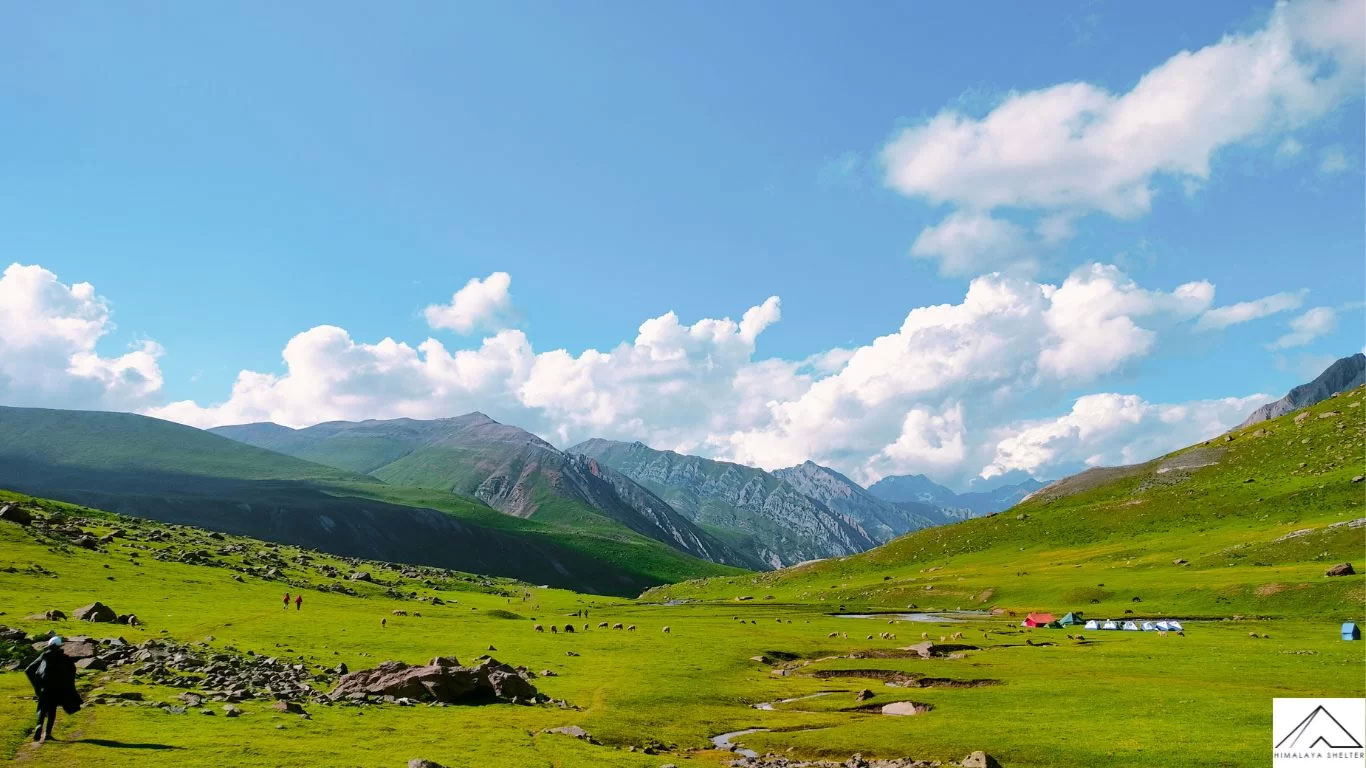
Kashmir Great Lakes Trek
Kashmir great lakes, one of the most beautiful trek in india, kashmir great lakes trek highlights:.
The Kashmir Great Lakes Walk, also known as the KGL Trek, is a must-have for most adventure enthusiasts visiting trek in India. This trek is 75 km long. This trek includes mountain lakes and vast collection of meadows in the Himalayas in West Kashmir, including the famous Sonamarg hill station and Harmukh mountain The route becomes gradual as you pass Pir Panjal,Karakoram, Zanskar ranges and see some of the most magnificent landscapes in India this route takes you to major places of interest like Zaz Pass,Nichinai Pass,Gadsar Pass, etc. Be sure to bring a camera and this is memorable start from Srinagar and take a scenic drive of 3 to 4 hours to sonamarg before starting the trek. Enjoy the beauty of the Kashmir Great Lakes trek and make memories that will take you to the heaven.
Kashmir Great Lakes Trek Difficulty Level:
Weather during kashmir great lakes trek:, nearby places in kashmir great lakes trek:.
- Nundkol Lake: This beautiful alpine lake is one of the highlights of the Kashmir Great Lakes Trek.
- Gadsar Lake : Another stunning lake along the trek, Gadsar Lake is known for its crystal-clear waters and the scenic beauty of its surroundings. It's a great spot for photography and enjoying the pristine wilderness.
- Satsar Lakes : This cluster of seven alpine lakes is a sight to behold. Set against the backdrop of snow-capped peaks, these lakes offer a serene atmosphere and ample opportunities for photography and relaxation.
- Tarsar Lake : While not directly on the Kashmir Great Lakes Trek, Tarsar Lake is another beautiful destination nearby. Surrounded by meadows and pine forests, it's a popular camping spot and offers stunning views of the surrounding mountains.
- Sonamarg: This picturesque hill station is often the starting point for the Kashmir Great Lakes Trek. Known as the "Meadow of Gold," Sonamarg offers breathtaking views of the Thajiwas Glacier and serves as a gateway to the trekking routes in the region.
- Gangbal Lake: Although a bit farther from the usual Kashmir Great Lakes Trek route, Gangbal Lake is worth visiting if you have the time and energy. It is one of the largest high-altitude lakes in Kashmir and is surrounded by snow-capped peaks, making it a scenic spot for camping and photography.
- Nichnai Pass: While not a destination Nichnai Pass is a high mountain pass along the Kashmir Great Lakes Trek that offers stunning panoramic views of the surrounding mountains and valleys. It's a great spot to take a break and admire the beauty of the Himalayas.
Temperature During the Month of (July-September)
Physical requirements for the kashmir great lakes trek:, how long the kashmir great lakes trek is:.
- First-day climb to Nichnai Campsite.
- Continuous from Nichnai Campsite to Nichnai Pass.
- The challenging climb to Gadsar Pass.
- Boulder section from Satsar to Gangabal.
- The steep descent to Naranag.
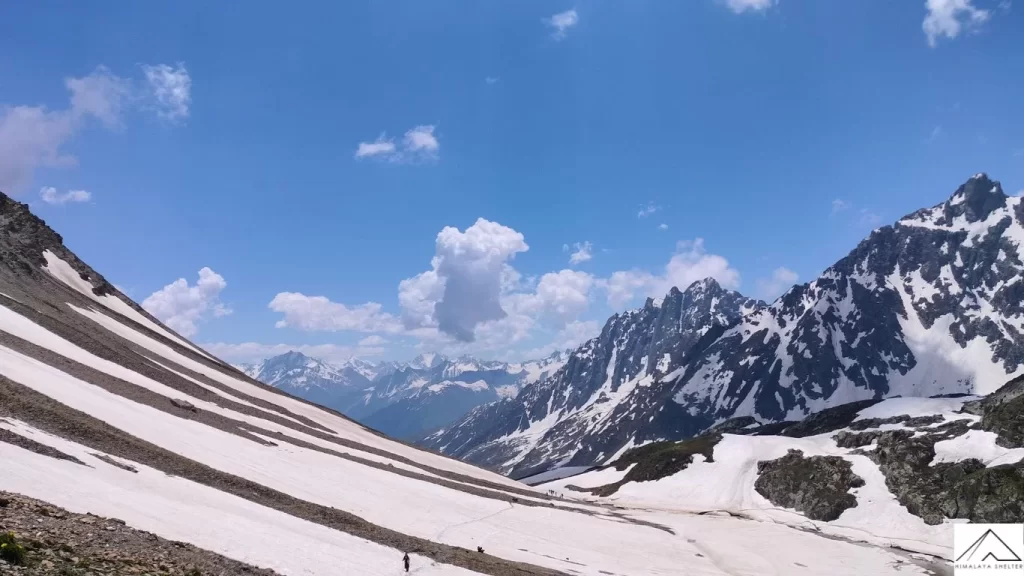
How to Reach Kashmir Great Lakes trek ?
- by Flight : The closest airport from Kashmir Great lakes Trek Srinagar International Airport which is popularly called Sheikh ul-Alam Airport . Srinagar Airport’s connectivity is not restricted to local flights but also gets routes from major cities of India, including Delhi, Mumbai, Bangalore among others. From the airport you can take a taxi or hack metered taxi or a pre-arranged shuttle service depending on your budget, to reach Sonamarg which is 80 kilometers away. Srinagar Airport to Sonamarg trip over the road on 3-4 hours doesn’t depend on traffic and weather conditions.
- by Road : Sonamarg is accessible by road from Srinagar, which is approximately 80 km away. Either you have to drive to Sonamarg yourself or hire a taxi from Srinagar. Our trip offers scenic views of Kashmir Valley and usually takes about 3 to 4 hours, depending on the kind of road conditions
- by Train : The nearest railway station from Kashmir Great Lakes is the Jammu Tawi Railway Station, located in Jammu well know for his name Jammu Tawi, and well-connected to major cities across India such as Delhi, Mumbai, Kolkata, and others. From Jammu, you can either take a direct bus or taxi to Great Lakes.
Kashmir Great Lake Trek Route:
- Arrival in Srinagar: Start your journey from Srinagar. You will be greeted at the airport and driven to the picturesque town of sonamarg, located about 80 kilometers away. The drive takes about 3-4 hours and offers stunning views of the countryside.
- Drive to Sonamarg: Enjoy a scenic 3- to 4-hour drive to Sonamarg before beginning your trek. Sonamarg is a popular tourist destination known for its beautiful meadows, snow-capped mountains, and glistening glaciers.
- Trek to Shitkadi: On the second day, you will begin your trek to the Great Lakes. After breakfast, you will start the trek from Sonamarg and make your way through lush green meadows and dense forests.
- Trek to Nichnai Pass: From there, you will make your way to Nichnai Pass, which is the first high-altitude pass on the trek. The pass is located at an altitude of approximately 13,500 feet and offers stunning views of the surrounding peaks and valleys.
- Trek to Vishansar Lake: The trek then takes you through a dense forest of pine and maple trees to the Vishansar Lake, which is the first of the seven lakes on the trek. The lake is surrounded by towering peaks and is a popular spot for camping.
- Gadsar Pass and Satsar Pass: The trek takes you through several other high-altitude passes, including the Gadsar Pass, which is located at an altitude of approximately 13,750 feet, and the Satsar Pass, which is located at an altitude of approximately 13,000 feet.
- End at Naranag: After crossing the lakes and valleys for seven days, the trek ends at Naranag. Remember, the trek is challenging and requires a good level of fitness and endurance. It’s important to carry the right gear and equipment. Himalaya Shelter provides a high-altitude medical first aid kit and high-quality trekking equipment. They also ensure small group sizes for the safety and well-being of all participants.
Kashmir Great Lake Trek Cost:
The cost of the Kashmir Great Lakes Trek varies depending on the trekking company and the duration of the trek. The cost typically includes permits, accommodations, meals, and the services of trained guides and support staff. Trekkers should research different trekking companies and compare prices before booking.
Qualified and Experienced Trek Leaders with Himalaya Shelter:
High altitude medical first aid kit:, small group sizes:, lakes situated in (kashmir great lakes), vishansar lake.
- Lake of Vishnu also know as vishansar lake in Kashmiri, is an alpine, high-altitude oligotrophic lake located near Sonamarg in the Ganderbal district of Jammu and Kashmir, India. The lake is situated at an elevation of 3,710 meters (12,170 ft)and has a maximum length of 1 km and a maximum width of 0.6 km. The lake is home to many types of fish, including brown trout. In winter it freezes over, and in summer the lake is surrounded by lush meadows where the local shepherds graze their flocks of sheep.
Krishnasar Lake:
- Krishnasar Lake, also known as Krishansar Lake, is an alpine high- altitude oligotrophic lake situated near Sonamarg in the Ganderbal district of Jammu and Kashmir, India. The lake is approximately 0.95 km long from northwest to southeast and about 0.6 km wide from east to west at the same time. The lake is very close to Vishansar Lake, which is less than 1 km from the northwest.
Gadsar Lake:
- Gadsar Lake, also known as Yemsar, is a high-altitude oligotrophic alpine lake located in the Ganderbal district of Kashmir. The lake is surrounded by alpine meadows full of various kinds of alpine flowers, therefore, the lake is also called the Valley of Flowers.
Satsar Lake:
- Satsar Lake, also known as Sat Sar, is a group of seven small alpine lakes located in the Ganderbal district of the Kashmir Valley in India. Kashmir Great Lakes Trek is known for its crystal clear waters and picturesque surroundings, with snow-capped peaks in the background. The trek to these lakes is a thrilling adventure that takes visitors through narrow trails, dense forests, and steep inclines, offering a unique experience of the natural beauty of the region.
Gangabal Lake:
- Gangabal Lake, known as Haramukh Ganga, is a high-altitude lake located at the foothills of Mount Haramukh in the Ganderbal district of Jammu and Kashmir, India. It is an oligotrophic lake with low nutrient content and high oxygen content that supports an individual aquatic ecosystem. The lake has a maximum length of 2km.
Nundkol Lake:
- The lake is considered sacred by Hindus, with legends stating that Nandi, the bull vahana of the Hindu god Shiva, was born as the son of sage Shilad near this lake. The inner blue color of the lake is believed to mark the presence of Shiva, while the outer light green portion represents Nandi
Essential Items to Pack for the Kashmir Great Lakes Trek?
- Backpack: A sturdy and comfortable backpack is essential for carrying all the necessary gear and supplies for the trek. Look for a backpack with good support, padding, and ventilation. Trekking shoes: A good pair of trekking shoes is essential for the rugged terrain and high altitudes. Look for shoes with good ankle support, waterproofing, and sturdy soles that can handle rough terrain.
- Warm clothes : The temperature may drop at night, and it's important to carry warm clothes like fleece jackets, thermal innerwear, and gloves to stay warm. Rain gear: The weather in the Himalayas can be unpredictable, and it's important to carry rain gear like a waterproof jacket and pants to stay dry in case of rain. Sunscreen and sunglasses: The sun can be intense at high altitudes, and it's important to carry sunscreen with high SPF and sunglasses to protect the skin and eyes from the harsh UV rays.
- Water bottles: Staying hydrated is essential for trekking at high altitudes, and it's important to carry at least two water bottles and a water purification system like a water filter or tablets. Snacks: Trekking at high altitudes can be physically demanding, and it's essential to carry high-energy snacks like energy bars, nuts, and dried fruits for quick energy boosts.
- First aid kit: A well-stocked first aid kit with essential medicines, bandages, antiseptics, and pain relievers is crucial in case of any injury or illness on the trek. Headlamp or torch: It's important to carry a headlamp or torch for navigating in the dark.
- Personal toiletries: Carry personal toiletries like toothbrushes, toothpaste, hand sanitizer, and wet wipes for personal hygiene.
Is the Kashmir Great Lakes Trek safe for me ?
- Physical Fitness: It occurs on rough surfaces, over huge rises, and up to12 to 15 kilometers every day. Take a body test to check if you are strong enough to face such challenges. Exercise and other high-stamina sports may probably improve your fitness level.
- Altitude Acclimatization : The Kashmir Great Lakes Trek reaches altitudes of over 4,000 meters (13,000 feet), which can increase the risk of altitude-related illnesses such as altitude sickness. Proper acclimatization is essential to minimize these risks. Plan your itinerary to include gradual altitude gain, stay hydrated, and be mindful of any symptoms of altitude sickness.
- Trekking Experience : Prior trekking experience can be beneficial for tackling the challenges of the Tarsar Marsar lake Trek, including navigating through uneven terrain, river crossings, and unpredictable weather conditions.
- Preparation and Gear : Adequate preparation and proper trekking gear are crucial for a safe trekking experience. Ensure that you have essential gear such as sturdy hiking boots, appropriate clothing for varying weather conditions, trekking poles, a first aid kit, and sufficient food and water supplies.
- Group or Guide : Consider trekking with a knowledgeable guide or in a group, especially if you are unfamiliar with the area or trekking in remote locations. Guides can provide valuable insights, assistance in navigating the trail, and ensure your safety throughout the trek.
- Weather Conditions : Be prepared for changing weather conditions, including rainfall, wind, and even snowfall, especially at higher altitudes. Check weather forecasts before embarking on the trek and carry appropriate clothing and gear to stay warm and dry. Ultimately, the Kashmir Great lake Trek can be a safe and rewarding experience for trekkers who are well-prepared, physically fit, and mindful of the potential challenges. Evaluate your readiness and take the necessary precautions to ensure a memorable and enjoyable trekking adventure.
What Peaks are Visible from the Kashmir Great Lakes Trek:
- Harmukh Peak : This is one of the most hightest peaks visible during the trek kashmir Great Lake. Rising to an elevation of around 5,142 meters (16,870 feet), Harmukh Peak is often referred to as the "Guardian of Kashmir Valley" due to its towering presence.
- Nanga Parbat : Nanga Parbat, the "Killer Mountain," graces the horizon of the Kashmir Great Lakes Trek with its awe-inspiring presence at 8,126 meters, it's a formidable sight, inspiring trekkers with its rugged beauty and storied history. Glimpses of Nanga Parbat remind adventurers of nature's raw power. Himalaya Shelter offers guided treks, allowing enthusiasts to experience this majestic icon up close. As the sun sets, casting a golden hue over the Himalayas, Nanga Parbat stands as a testament to the indomitable spirit of exploration, beckoning all who dare to dream.
- Sirbal Peak: Sirbal Peak, a hidden gem along the renowned Kashmir Great Lakes Trek, unveils its majestic charm to intrepid adventurers seeking pristine wilderness and breathtaking vistas. Rising to an elevation of this imposing peak stands as a silent sentinel amidst the picturesque landscape of the Indian-administered region of Jammu and Kashmir.
- Kolahoi Peak: Kolahoi Peak, a majestic presence on the Kashmir Great Lakes Trek, captivates with its towering grandeur. Rising amidst the Himalayan landscape, it offers trekkers a glimpse of nature's magnificence. Embark on a journey to behold its splendor with Himalaya Shelter's expert guidance.
- Machoi Peak : Machoi Peak, a towering sentinel along the Kashmir Great Lakes Trek, beckons adventurers with its rugged beauty. Join Himalaya Shelter's expert-guided trek to witness this majestic marvel, where each step unveils the pristine wilderness and awe-inspiring vistas of the Himalayas.
Trek Map of Kashmir Great Lakes:
Customize your trek with himalaya-shelter:.
- Custom Itinerary: Choose your dates and duration that best fit your schedule.
- Service Standards: Choose the comfort and service that fits your expectations and budget .
- Safety Guaranteed: Safety is our first priority for the trekkers.
himalaya-shelter
Day 1 drive from srinagar to sonamarg.
Drive: 81 km, 2-3 hrs
Trek: 0.5 km to reach the campsite
Altitude: 5,220 ft (1,590 m) – 9,022 ft (2,750 m)
Accommodation: Camping (Alpine Tents)
Meals: Dinner
We leave Srinagar around 1 PM and reach Sonamarg by 4:30 PM, following the Sind River. Once we cross over to the true right of the river at Wayil Bridge, which is 25 KM ahead of Srinagar, we encounter the Anchar lake of Srinagar on the way. The drive is a gradual climb all the way to Sonamarg, and from an altitude of 1,600 meters at Srinagar, we reach a modest altitude of slightly over 2,700 meters at Sonamarg. We will camp overnight at Shitkadi and will have to walk a short distance of 500 meters to reach our campsite.
Your trek leader will inform you in detail about the entire KGL trek, giving you all the details that you need. The campsite is located next to a stream offering a stunning view of Thajiwas Glacier. There is no sound other than the gentle music of the river.
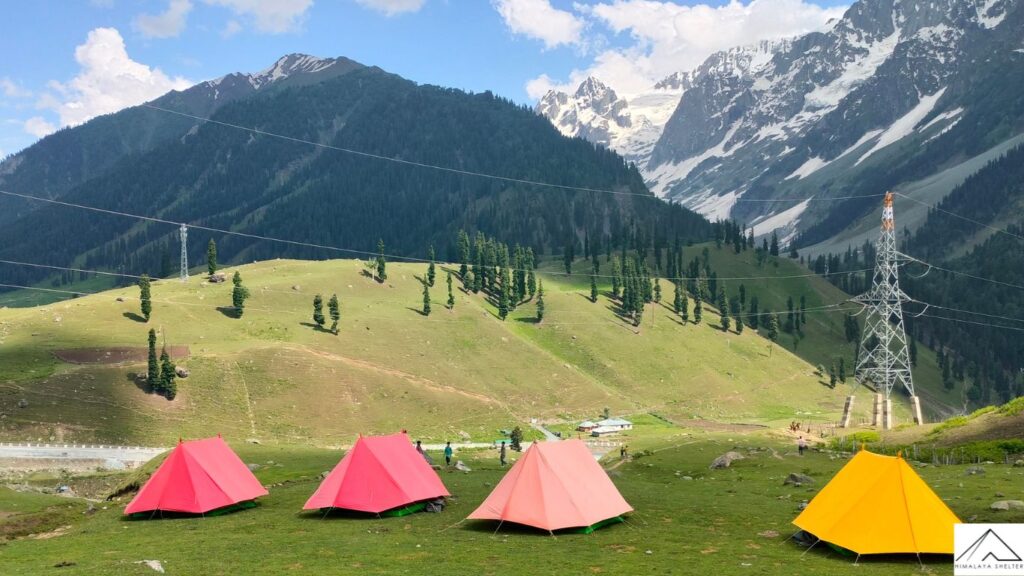
Day 2 Trek from Sonmarg camp to Nichinai Camp
Trek: 11 km, 5-6 hrs
Altitude: 9,022 ft (2,750 m) – 11,811 ft (3,600 m)
Meals: Breakfast + Lunch + Evening Snacks + Dinner
From our camp at Shitkadi, we start the trek towards the Nichinai camp. Throughout the day, we follow the Nichinai stream, which is on our right.
After a 1.5 KM trek upstream, we arrive at a meadow with maple trees dotting the landscape, along with pines. The trail continues to climb up the ridge, and as we gain more altitude, the view towards Sonamarg becomes quite picturesque.
The maples continue all the way up to the top of the ridge, lining the eastern slope of the ridge. As we reach the top of the ridge, the place is called Table Top, one of the highest points, providing spectacular views of both the Sonmarg Valley and the Amarnath Valley. From here you can engage the local people and shepherds. It is also a lunch point and you can eat Maggie and other local goodies placed by the shops around the Table Top after that an open grassland paves the way that gradually descends to some distance. To the west of the grassland, silver birch (Bhojpatra) trees stand tall, while to the east, the maples can still be seen. This meadow, known as Shekdur, runs almost 1.5 KM long. As we approach its end, the trail then enters the forest of silver birch for almost 1 KM before the treeline finally comes to an end.
Henceforth, we continue on the trail marked by patches of grassland and stone all the way to Nichinai. We are surrounded by tall mountains on either side and towards our back lie the snow-covered mountains far across the Sonamarg valley. We will reach Nichinai by early evening and set up the camps.
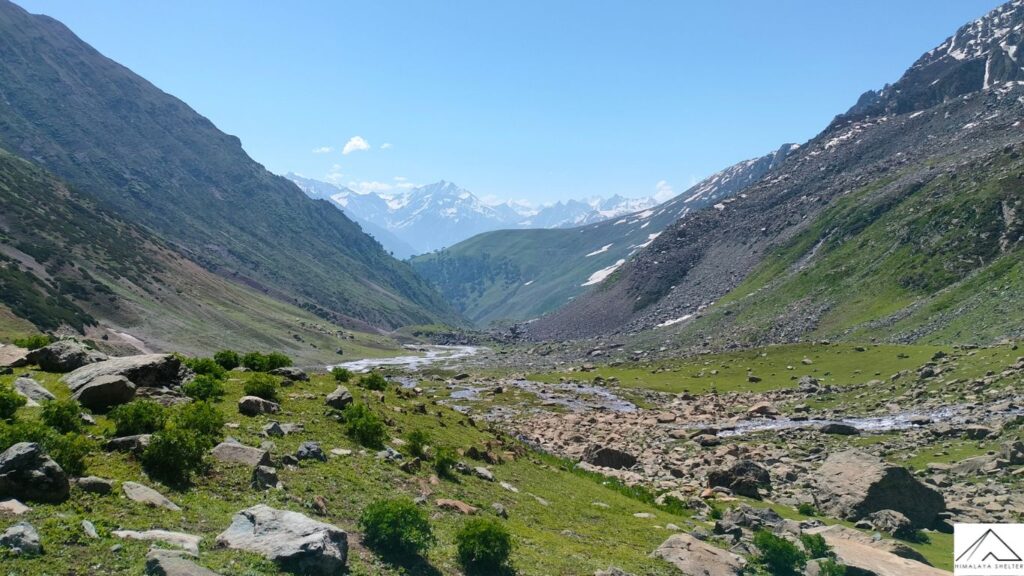
Day 3 Trek from Nichinai to Vishnusar (Vishansar) & Kishansar Lakes via Nichinai Pass
Trek: 13 km, 6 hrs
Altitude: 11,811 ft (3,600 m) – 13,100 ft (3,993 m)
The trek from Nichinai camp starts with an ascent to the Nichinai Pass. The altitude of Nichinai Pass is around 13,100 Feet, which is quite close to the altitude of Hampta Pass or the Sar Pass, and higher than Kuari Pass. So, take pride in the fact that so early into the trek, you have already crossed over a pass. The ascent takes a good couple of hours to reach the pass from the campsite at a moderate pace.
As soon as we cross over the Nichinai Pass, we can see a small lake at the base of the mountain to our left. There is another larger lake, almost 500 meters in length, around 2 KM ahead, but it cannot be seen unless we climb up to the ridge to our right.
The trail continues downhill from the pass and enters grassland with a gentle slope after an hour of descent. From here, the trail is gentle up to the Vishansar Lake. It’s a few KM before we reach the base of the lake and our campsite. The lake will require another 20 mins to reach as it is slightly higher in altitude. Kishansar is further ahead of the Vishansar lake and higher in altitude still.
The lakes are quite large, and while the Vishansar runs 1.1 KM long and a little over 700 meters wide, the Kishansar is slightly smaller at 900 meters long and 550 meters wide. The latter’s shape is more of a triangular one with an inward arc on one side.
After reaching the campsite which is near the Vishansar Lake or below the Vishansar Lake, you can spend some time over there around the lake, this campsite is considered one of the best campsites of this Kashmir Great Lakes (KGL) trek
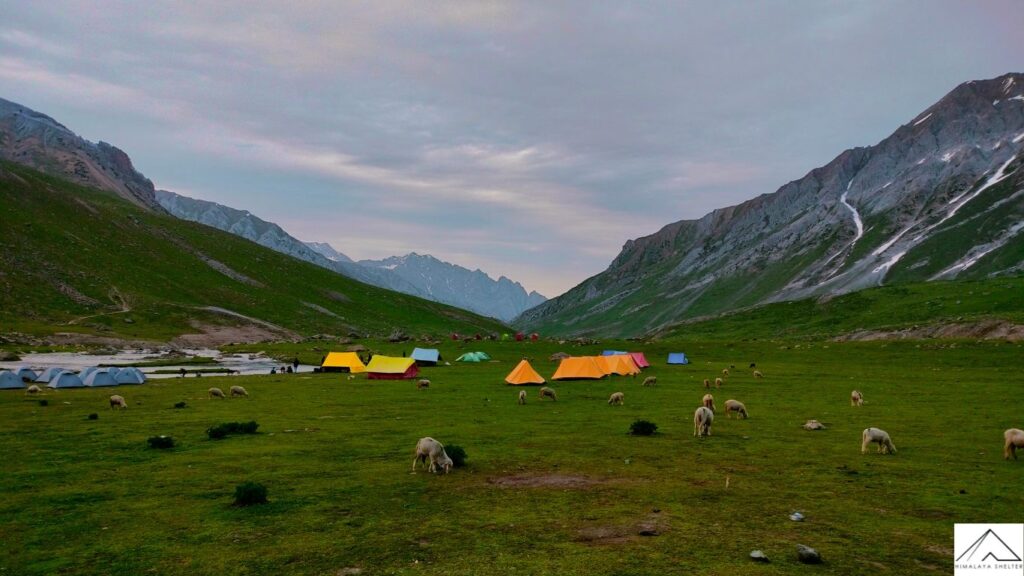
Day 4 Trek from Vishansar lake (Vishnusar) to Gadsar via Gadsar pass
Trek: 16 km, 7-8 hrs
Altitude: 13,100 ft (3,993 m) – 13, 813 ft (4,210 m) – 12,500 ft (3,810 m)
The trek from Vishansar to Gadsar is beautiful but demanding. Today’s trek will take you across the highest point of the entire trek, at a modest altitude of 4,210 meters at the Gadsar Pass.
The trail from the Vishansar campsite continues to the right, with Kishansar lake on our left as we cross it. The trail then starts climbing with a steep ascent all the way to the pass, and the trail that cuts across the mountain in zig-zags can be seen from far away.
It will take around 2 hours to reach the Gadsar Pass. As we climb higher, we are rewarded with magnificent views of the two lakes as we turn our backs. Take some time to capture these moments in your mind, as you will cherish them for the rest of your life.
As you come down from the Gadsar Pass, you will be amazed to see the beauty of Gadasr Lake. It is considered to be one of the most beautiful lakes of this trek and you can enjoy your packed lunch here while admiring the scenery.

From the Pass we can see a few smaller lakes and far off in the distance is the Gadsar lake.
Day 5 Trek from Gadsar to Satsar
Trek: 12 km, 6 hrs
Altitude: 12,500 ft (3,810 m) – 12,007 ft (3,660 m)
The trek from Gadsar to Satsar starts with an initial steep hike that will take a little over an hour, After that, gradually trek on the ridge. While passing that ridge, you will witness the majestic Nanga Parbat (8,126). The trail then opens to plain meadows and a water stream. You can have your packed lunch here. Afterward, gradually ascend to rocky terrain, and after some time, you will reach the Satsar campsite
This will be a relatively easier day compared to other trek days. The KGL Trek is indeed a trek with long walking distance but today, this trek will offer you a good time to rest/explore.

Day 6 Trek from Satsar to Gangabal Lake and Nund Kol Lake via Zaj Pass
Trek: 9 km, 5-6 hr
Altitude: 12,007 ft (3,660 m) – 11,482 ft (3,500 m)
The trek starts with an ascent to the Zaj Pass, the trail to the Zaj Pass you have to cross the boulder’s path
The altitude of the Zaj Pass is lower than the former two passes we crossed before along the trail with an altitude of 13,228 feet, it takes 2 hours to reach the pass from the pass you can see Gangbal and Nandkul lakes
The view from the pass is very beautiful The trail descends steeply and then gradually descends, making it enjoyable to walk upon.
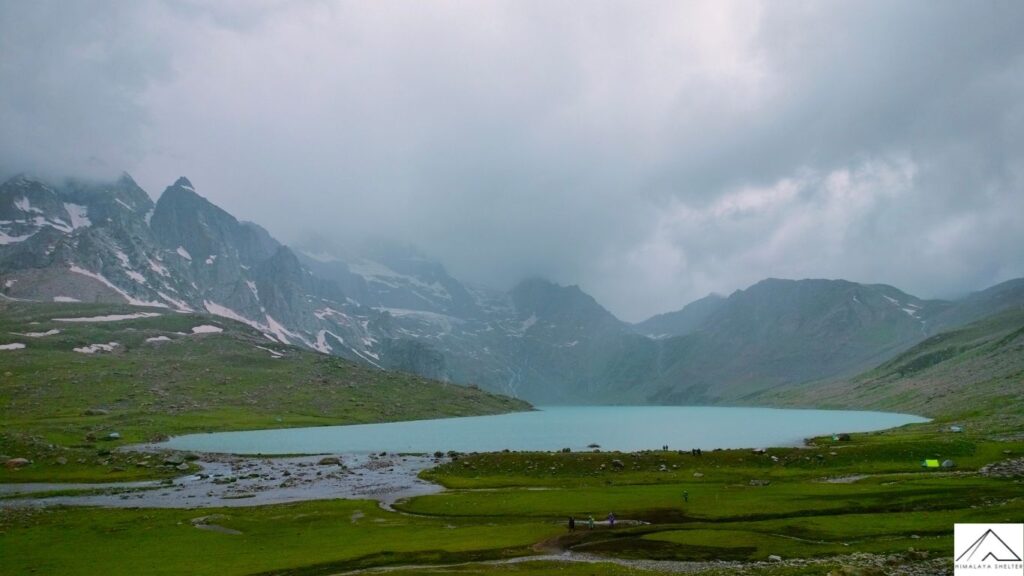
Day 7 Trek from Gangabal lake to Naranag & drive to Srinagar
Trek: 13 km, 5-6 hrs
Drive: 50 km, 2 hrs
Altitude: 11,482 ft (3,500 m) – 7,447 ft (2,270 m)
Meals: Breakfast
On the last trekking day, after half an hour of trekking, we reached the Army check post where it took half an hour to check the documents (Adhar Card) of all the trekkers.
Then, we move ahead while the trail oscillates between minor ascents and descents up to halfway, after which there is a steep descent amid pine forests all the way to Naranag. Our beautiful Kashmir Great Lakes (KGL) Trek ends here.
We arrive in Srinagar between 5 and 7 PM, depending on the start time from Gangabal. We are sure that you will get so many pleasant memories to cherish by embarking on the KGL Trek with Himalaya Shelter.
Day 2 How difficult is the trek & what are the challenges?
Kashmir great lakes photos.

Upcoming Treks
- July 6, 2024 full
- July 7, 2024 open
- July 13, 2024 open
- July 14, 2024 full
- July 20, 2024 open
- July 21, 2024 full
- July 27, 2024 open
- July 28, 2024 full
- August 3, 2024 full
- August 4, 2024 open
- August 10, 2024 open
- August 11, 2024 open
- August 14, 2024 open
- August 17, 2024 open
- August 18, 2024 open
- August 24, 2024 open
- August 25, 2024 full
- August 31, 2024 open
- September 7, 2024 open
- September 8, 2024 open
FAQs on Kashmir Great Lakes Trek:
What is the best time to do the kashmir great lakes trek.
The best time to visit Kashmir Great Lakes Trek is from July to September when the weather is relatively stable and the trail is clear of snow. These months offer pleasant daytime temperatures and clear skies.
Is the Kashmir Great Lakes Trek suitable for beginners?
While the Kashmir Great Lakes Trek is considered moderately challenging, it requires a reasonable level of fitness and hiking experience. It is recommended for individuals with prior trekking experience rather than complete beginners.
What kind of accommodation is available during the Kashmir Great Lakes Trek?
Accommodation options during the trek are limited to tents and campsites. Most trekkers carry their own camping gear, while some choose to hire equipment from local agencies. It is essential to be prepared for camping in remote areas.
What are the major highlights of the Kashmir Great Lakes Trek?
The Kashmir Great Lakes Trek offers stunning views of seven high-altitude lakes. Trekkers also get to experience the beauty of Zaj Pass, Gadsar Pass, Nichinai Pass.
What is the highest point of the Kashmir great Lakes Trek?
The Highest Altitude of the Kashmir Great Lakes will be faced while crossing the Gadsar Pass. Gadsar Pass is the highest point of the Kashmir Great Lakes Trek. It is located at a height of 13,800 ft (4,210 m). Gadsar pass, due to its high Altitude mostly remains covered in Snow.
Which time is the best to do the Kashmir Great lakes Trek?
The Beautiful Kashmir Great Lakes Trek Starts from the month of July and continues till October. It will be rainy in the months of July and August. However, you will love to do the Kashmir Great Lakes Trek in July and August since you will find that sometimes you are above the clouds and sometimes clouds are above you; you will feel as if the clouds are competing with you to complete the trek. In the months of September and October, the weather will be pleasant. In September beginning you may spot beautiful Himalayan wildflowers blooming in the Kashmir Great Lakes Trek. The month of October (especially October end) can be really cold and windy in the Kashmir Great Lakes Trek. If there will be heavy snowfall, you may not be able to cross the Gadsar Pass
From Where doest the Kashmir Great Lakes Treks start and Where does it end?
Kashmir Great Lakes Trek starts from Sonmarg and ends at Naranag.
How many days are needed to complete the Kashmir Great Lakes trek?
Kashmir Great Lakes Trek is a 7-day trek. However, it is advisable to keep 1 day extra as a buffer day so that you can complete the trek even if you cannot cross the Gadsar pass or Nichinai Pass due to heavy rainfall or any other unavoidable circumstances. Keeping 1 extra day can be used as an acclematisation day, too.
How should I prepare for Great Lakes Trek?
Kashmir Great Lakes Trek is a Moderately challenging trek where you will have to walk for at least 10-12 km every day at high altitude. Hence, a good level of Physical fitness and mental endurance are required to complete the KGL trek. Himalaya Shelter advises you to start practicing Yoga (Especially Surya Namaskar) at least two months prior to the departure Day. Running 3-4 km every day will make you fit enough to do the Kashmir Great Lakes Trek.
Is KGL a difficult Trek?
Kashmir Great Lakes Trek (KGL Trek) is a Moderately challenging trek where you will have to walk for at least 10-12 km every day at high altitude. If you are a first-time trekker then you may find it difficult but if you have done 2-3 Himalayan treks before, and you practice running and Yoga everyday, then you can easily complete this trek.
How many Lakes are there in KGL Tre?
In total, there are 6 beautiful lakes that you will witness during the Kashmir Great Lakes Trek. All these 6 lakes are Alpine Lakes located in the High Altitude Himalayan mountains. The name of the Lakes of Kashmir Great Lake (KGL) trek are as follows:
- Vishansar Lake (Vishnusar Lake)
- Krishansar Lake
- Gadsar Lake
- Satsar Lakes
- Gangabal Lake
- Nundkol Lake
What is the best time to do the trek and how is the weather?
What are the top highlights of the trek, 3 reviews for kashmir great lakes trek.
Daren Cheung – December 31, 2023
Just wanna comment that you have a very nice site, I the style and design it actually stands out.
Jack Dosan – April 12, 2024
The Kashmir Great Lakes trek is a mesmerizing journey through some of the most breathtaking landscapes in the Indian Himalayas with Himalaya shelter i love Himalaya Shelter because they provides a good quality equipment and facilities for there users..
Rose – April 15, 2024
A Journey to Remember: Kashmir Great Lakes Trek with Himalaya Shelter
Embarking on the Kashmir Great Lakes Trek with Himalaya Shelter was an experience that surpassed all expectations. From the moment we set foot on the trail, we were captivated by the sheer beauty of Kashmir’s landscapes.
The trek unfolded like a dream, with each day bringing new wonders to behold. From lush meadows carpeted in wildflowers to towering mountain passes offering breathtaking views of snow-capped peaks, every step of the journey was a feast for the senses.
But what truly made this trek unforgettable was the expertise and hospitality of the team at Himalaya Shelter. Led by knowledgeable guides, we felt safe and supported throughout the entire journey.
Your email address will not be published. Required fields are marked *
Your review *
Name *
Email *
Save my name, email, and website in this browser for the next time I comment.
- Transport support from Srinagr to Srinagar
- Pick-up location: Nishat Garden, Srinagar
- All vegetarian meals starting from dinner on day 1 to breakfast on the last day
- Professional Guide, Cook and Support staff
- First-Aid kit with Oximeter and Portable Oxygen Cylinder
- Kitchen tents, common tents, toilet tents with portable toilet seats
- Rent for camping equipment like Clean sleeping bags and foam mattresses, Good quality ‘A’ shaped or dome tents, Camping stools, Table and Crampons and gaiters if required
- Forest entry charges for Indian nationals (Additional charges will be applicable for international tourists)
- Porter and mule support to carry camping equipment and personal luggage
- Accommodation throughout the trek on a triple-sharing basis
- Guesthouse accommodation on the first and second last day on a triple-sharing basis
- All applicable taxes
- Your designated hotels may not reopen by the time you reach there. While we are making alternate arrangements, do understand that things may not be as “tip-top” as our designated hotels.
- The gurudwara, Hemkund Sahib may not be open. While we are trying to take permission to go to Hemkund Sahib, if it does not happen, then do understand that the pandemic has put restrictions beyond our control.
- Personal expenses like tips, personal medicines, phone calls etc.
- Any transport support during the trek apart from what is included above
- Any cost or services not mentioned in the Inclusions
- Accommodation in Srinagar
- Adventure Insurance
- Cost arising due to unforeseen incidents like bad weather, medical evacuation, roadblocks etc
- Porter and mule support to carry personal Luggage can be arranged at an additional cost of INR 500 per bag per day (weighing up to 12 kg)
- Please carry a lunch box for packed lunch/breakfast to avoid using polythenes and Aluminium foils. Keeping the Himalayas clean is our own responsibility. Reduce the use of Plastic when you are in the abode of the Sacred Himalaya. 🌱
- 17-07-2021 to 23-07-2021 open
- 17-07-2021 to 23-07-2021 close
Send Request
Your query has been successfully registered. we will contact you within 24 hours., something went wrong.try after sometime..
Choose Trek
Customise Trek
Suggest me a trek
Rent a gear
Volunteer Program
Blogs & Articles
Discounts & Offers

Kashmir Great Lakes Trek
Max Altitude
Moderate To Difficult
Trekking KM.
17,300 /Person
- +5% GST (Goods and Services Tax)
- Sonmarg to Naranaag
- Rs 280 Insurance (Mandatory) | Rs 1700 Transportation (Optional) | Meeting Point and Time: Srinagar Nishant Garden, 12PM.
Help & Support
- +91 9368692892
- 10:00 hrs to 18:00 hrs Monday - Saturday GMT +5:30 Sunday Closed
- [email protected]
- Cost & Cancellation Terms
- Risk & Respond
How To Reach
Trek essential, important links, fixed departure.
- Trail Type A cross over trail through passes. The trek starts at Sonmarg and ends at Naranag
- Rail Head Jammu is the nearest rail head to the base camp
- Airport Srinagar airport
- Base Camp Sonamarg (90 kms drive from Shrinagar, approx 3 hours)
- Monsoon Treks (Jul - Aug)
- Autumn Treks (Sep - Mid Nov)
- Snow More snow in the months of July
- Services from Sonamarg to Naranag
- Meals Meals while on trek & at Hotel/Guesthouse (Veg & Eggs)
- Stay Camping (Twin sharing) & Hotel/Guesthouse
- Region - Jammu and Kashmir
- Duration - 8 Days
- Grade - Moderate To Difficult
- Max Altitude - 13750 Ft.
- Approx Trekking Km - 72 Kms.
The Kashmir Great Lakes Trek is in no need of an introductory treatise. It presents the proem in itself. You can draw a preface of it by just hearing its name. Kashmir is a wonderful place and if you are on a Himalayan trek you are bound to taste the natural beauty and adventure. The trek to the Kashmir Great Lakes offers a lifetime of experience of memories that are so wonderfully reminiscent. The tranquil silence of the Kashmir lakes and their virgin beauty is spellbound. Apart from the lakes, even the barren milky snow-clad mountains stand out in might and pride.
The location of this trek is Kashmir, also known as the paradise of the earth. The trek duration is around 7-9 days and this trek is often graded as moderate in regards to the trekking challenges. The elevation circles around 13000 feet and the distance paths are approximately 63 km. On such a fulfilling trek you will learn so much learn about yourself- in a trifecta – physically, mentally, and emotionally. For a trekker, nothing can replace and prepare him for those paramount and conflicting emotions that whether his body will take so much strain and whether he will make it or not. But the joy of reaching the destination is obvious. This trek will always be happy and a cherishing trek for the trekkers that comes in handy with a few preparations.
As the trek to the Kashmir Great Lakes Trek demands physical fitness, you must take good care of your health, shape yourself well and be fit and fine. Trekkers can train themselves by working out regularly in the gym along with running, walking on an incline, cycling, cross-training, and stretching on a daily basis. Along with physical health mental fitness is important equally.
Coming to the details of the trek, it generally starts from almost 3 km out of Sonamarg, on the Srinagar road. You can find a few dhabas on your way. Its better for the trekkers to pick up short eats here for the next trace of a dwelling place will be at Naranag which would probably mark the end of the track.
A few of the trail and the trek enters a green meadow, overlooking the Sonamarg town. At the top of the meadows, trekkers reach the starting line of Maple and Pine trees. What follows is a lovey-dovey deep dense forest of Maple trees. Such an experience has always been unique to this trek in India.
You will always be amongst the meadows throughout this trek. The best time to enjoy the Kashmir Great Lakes trek is between June and September as the greenery and the blooming flowers are at their best during this calendar period. Its so that a beginner in trekking can also join this trek.
Trailing through the Maple trees uphill, trekkers can enjoy the crystal clear view of the nearby villages downhill and especially the Sonamarg village. Every bit of nature nestles to make a wonderful picture. From here the trail slopes down into yet another meadow lined by the Silver Birch trees and a few shepherd huts. Massively tiny brooks struggling through the meadows and snowy peaks of small mountains mark the land of Shekdur. Shekdur is the only campsite with trees on this trek. It is therefore an add-on to your clicks. The suns rays piercing through the forest, make it a nice show of dark and light. Further, the trail climbs back into a river valley which is the beginning of Nichanai. You have entered into a wide valley encompassed by the peaks.
After crossing a tunnel-like Nichinai pass followed up by miles of spreading meadow and the cascading waterfall comes the Vishansar Lake. The first impression that the lake imposes upon the trekker is its larger-than-life size and snow-clad mountain peaks surround the azure lake waters. It is been followed up by the Kishansar Lake which is only at a distance of 1.2 km. It has a big meadow stretching by its side. The trail follows up through a ridge. You can see the loveliest view of the two lakes that you have just crossed together from the Gadsar pass which is the highest point of this trek.
Then the time comes to descend. On the way back, the eye captures the view of Yamsir Lake, the nameless lake, and the Gadsar Lake which are all connected by streams. Further, you will come to a place called Maengandob where a few deep craters are found. The landscape ahead is magnificent as you get to visit Satsar Lakes-collection of seven Lakes and further the twin lakes among which the bigger is the Gangabal and the smaller one is Nundkol. At you arrive at your last destination, Naranag and you are greeted with awe-inspiring glaciers, meadows as well as mountain peaks.
The trek to the Kashmir Great Lakes Trek will provide the trekkers with a perfect flavour of all hues of the Kashmiri terrain- innumerable meadows, snow-clad glaciers, pinnacles, passes, rocky barren lands, and gurgling streams. The trail to the Great Lakes is worth trekking. It does justice to all the expectations of a trekker.
While trekking, trekkers must be equipped with the necessary equipment. Apart from the professional trekking gear including a pair of trekking shoes, and a trekking pole is important specifically. Trekkers must never compromise with their body requirements. Its better to understand your bodys needs and not proceed under peer pressure if you don’t feel well. Keep your luggage as light as possible. It will be in your comfort.
Who can participate
- Age; 15 years.
- Experience of any high altitude trek, at least 1 treks of 4,000m/13,100ft.
- The climber must be fit and have sufficient stamina to cover 5 km of distance in 30 minutes without a stress.
- The climber should be able to carry a 12-16 kg backpack.
Health Awareness
- Pulse rate at rest must be in between (60 to 90 beats per minute)
- Blood Pressure Reading must be in between (DIASTOLIC 75 – 85, SYSTOLIC 100 - 130 mm Hg)
- Respiratory rate at rest must be in between (12 to 20 breaths per minute)
- Should not have Liver and kidney issues
- Should not have Diabetes Mellitus, Bronchial Asthma, Epilepsy, Heart problems, Hypertension etc
- No pacemaker implant
- People with the Sinus issues please contact to trek coordinator before booking the trek
- If your BMI is not normal, Please contact our Trek coordinator before Trek booking.
Government Employees {SCL}
Government Employees can avail the benefit of Special Casual Leave (SCL) when you join us for a trekking expedition. As per the rules of the Pay Commission, Special Casual Leave can be availed for up to 30 days in a calendar year for trekking/mountaineering expeditions through a registered organization. Trek The Himalayas is a registered adventure tour operator by Indian Mountaineering Foundation (IMF) and Ministry Of Tourism (MOT) Trekkers have to apply for leave at least 20 days before trek departure date.
- Junior trekkers (below 15 years) should have a company of parent/guardian.
- Trekkers between 15 to 18 years can come solo with the disclaimer form signed by parent/guardian.
- Medical & Disclaimer Form (Mandatory Documents) Click here
- Altitude: 2,400 m/ 7,800 ft
- 90 km drive from Srinagar, approx 3 hrs
- If booked in advance, TTH can arrange pickup from Nishant Garden, at 12 pm
- Our campsite is near the Sindh River (Shitkadi Village)
- Since there are no shops around ensure that you have all that you need already
- Remember to carry your ID proof in original and 2 photocopies as we have to submit them at the army check post.
The journey to Kashmir Great Lakes begins from Shitkadi Village, which is a little ahead of Sonamarg and about a 3 hr drive from Srinagar. TTH representatives will pick you up from Sonamarg and drive all the way to Shiitkadi, where you will rest for the night before beginning your trekking adventure the next day. Before you begin your trekking adventure, you will spend the day in the beautiful surroundings of Shitkadi Village. You can spot some of the great mountain peaks like Kolahoi, Tribal, Machoi, Amarnath Peak, and Machoi Glacier. The view en route to the campsite is very scenic and all along the route, you will see the vast expanse of grasslands and meadows on either side of the road. The stay is arranged at Shitkudi Campsite. There will be a briefing session in the evening before dinner. Dine early and give your body enough rest to begin your trek tomorrow.
- Altitude: 3,500 m/ 11,500 ft
- 11 km trek, approx. 8 hrs
- Altitude Gain: 1,100 m/ 3,700 ft
- After breakfast, we trek to Nichinai via Shekdur
- The trail takes you through meadows, and dense forests with Maple, Pine, and Bhoj trees.
- After approx. half an hour, we get to an army check post where we have to submit our ID proofs
- While you are at it, you can enjoy an awesome view of the Sonmarg Valley or the Thajiwas Glacier
- The trek from Shitkadi to Shekdur goes through thick forests of pine trees and will take approx. 2 and half hours
- At Shekdur, you can indulge in instant noodles and an omelette if you wish to
- We follow the Nichinai stream as we trek from Shekdur to Nichinai
- We have lunch at the Nichinai stream
3 hours ascent followed by 1 hr descent and finally a gentle ascent to Nichinai (6 hrs, 9 km).
The trek starts 3 km out of Sonamarg, on Srinagar Road. Exactly at the 3 km mark, spot a lone Dhaba on the right. The place also sells packaged water, biscuits, etc., and is your last place to pick up any snacks or little bites. The next trace of civilization can be spotted at Naranang after the trek.
A jeep track diverts to the right off the main road at the shop. The track goes down to the level of the Sindh River that flows in between the mud track and the main road. The trekking trail starts along the track but quickly diverts higher up. 10 minutes into the trek, the trail bends and enters a green meadow. The meadow directly overlooks Sonamarg town. In half an hour, you reach the top of the meadow from where tree lines of Maple and Pine start. Once you reach the tree line, the trail descends until a tiny brook and then climbs up again and what follows next is a lovely dense forest of Maple trees. Walking on green beds of grass amidst the Maple cover is an experience unique to Kashmir in India.
For the next hour and a half, the trail winds up through Maple trees. Stick to the trail that goes in an uphill direction as the one heading down diverts into the nearby villages. Occasionally, the trees give way to clearings. Turn around and delight in the spectacular view of the Sonamarg Valley that gets bigger and fuller as you keep gaining altitude. The Maple cover accompanies you to the top of the ridge and on one side a meadow gently slopes down. Spend a few moments on the ridge, enjoying the view of Sonamarg and the neighbouring Valley. The streams, the meadows, the pines, and the towns nestled together make a wonderful picture. The climb now gradually goes downhill as the trail slopes down towards the meadow that is lined with Silver Birch trees and a few shepherd huts. The carpet of green rolls down from the treeline all the way to the end of the 40 ft wide meadow. There are a couple of small brooks that cross the meadow, which can be your source of water. On your right, you can see a small group of peaks covered in snow. You are now in Shekdur. If you wish to keep your trek short for the day, you can also opt for pitching your tent here. From the road head, it takes 2 1/2 hours to reach Shekdur meadows, it will take about half an hour more if you decide to end your trek at the edge of the meadow.
The Shekdur Campsite is surrounded by Bhoj trees on all sides and this is the single such campsite that has tree covers thus this is a good spot to take some Instagram-worthy photographs. If you have started from Srinagar in the morning, make Shekdur your first camp. The next campsite Nichinai is at least 2 more hours away.
If you started from Sonamarg then Shekdur is just three hours away which makes it too early to camp. Having lunch at Shekdur campsite head to Nichinai campsite. The meadows of Shekdur stretch for half an hour. The gentle descent of the meadow now ends in forests of Bhoj or Silver Birch. Take the trail that goes in the middle of the forest and continue to descend gently. Watch out for sun rays making their way in between the thick foliage making it a nice show of light and dark.
In 45 minutes, you reach the end of the Birch trees and the trail goes down and climbs back into a river valley. The River Valley is the beginning of Nichinai. The trail is now along with the right bank of the river going upstream. Look behind to see the snow-clad peaks of the Sonmarg Valley. You are now in a wide valley enclosed by mountains on either side. The river, which joins the Sindh eventually flows with speed through the valley. The first 30 minutes is over rocks and if you are taking mules, they will walk very slowly over here.
An hour more into the river valley, green patches devoid of rocks open up. The river valley widens and you can see the green meadow widening in between the two mountain ranges. Far ahead lie triangular twin snow-clad peaks. At Nichinai campsite, find a clear spot to pitch your tents, ending the first day of the trek.
- Altitude: 3,650 m/ 12,000 ft via 4,000 m/ 13,100 ft
- Distance: 12 km | Duration: 7 hr
- Trek from Nichinai to Nichinai Pass is approximate 1 and half hours accent. At the top of Nichinai Pass, you can get the BSNL network, which is the last point under the mobile coverage area.
- From Nichinai Pass to Vishansar there is a descent
- At Vishansar campsite lunch will be offered.
- We can visit the Vishansar Lake, which is just 15 minutes walk from the campsite
- The first lake of the trek and one of the most beautiful ones
- If the trek is in July, the lake will be frozen. Otherwise, we can go fishing at the lake, with the permission from Srinagar fishing department.
- Vishansar is visited by hoards of sheep and their shepherds who always have some interesting stories to tell.
- A campsite is a unique place with open ground and you can play volleyball, cricket, etc.
- Beware of dogs at the campsite.
Moderate climb to Nichinai Pass (13,000 ft). Small descent followed by a long flat meadow walk ending near Vishansar Lake (12 km, 6 hrs).
We start the day early around 7 or 8 in the morning to begin our trek towards the first of the Great Lakes, the Vishansar Lake. The days trek is more or less a long walk on the alpine grasslands of Kashmir. Start your trek from Nichinai to Nichinai Pass, which is visible from the campsite. Half an hour into the walk and you have to cross the gurgling stream to reach its left bank. The trail starts ascending here and for the next one hour, you will climb up gradually to the Nichinai Pass. The Nichinai Pass is the highest point in today’s trek and is located at an altitude of 13,500 ft. From the pass, it’s a small descent and then a flat walk on the meadow all the way to the Vishansar Lake.
As you continue climbing the Pass, you will see the lake down below at the foot of the mountains, it appears to be a small deep-blue enclosure. The trail that you are walking on now is not the original ridge and it will turn inwards two times before you arrive at the Nichinai Pass. The Nichinai Pass is like a big tunnel and from the top, you can observe the Sonamarg Valley down below. BSNL network is erratic here and this is the last point where you will get any network. The next traces of the network is available when you have moved past Gangabal. On the left of the pass lies the mighty peaks of the Himalayan region, whereas on the right side, there are no mountains but the ground raises up. While some may find the climb to the Nichnai Pass a little strenuous as it is a straight climb, however, there is good news as the trek post the pass is a downward climb. The trail from the pass descends rapidly and in about an hour, you will reach grassy lands from the rocky area. The meadow is a vast expanse of land spreading far and wide with snow-clad mountains surrounding the entire meadow. There’s another river flowing from the pass into the meadow ahead. To your left, you will also see a big waterfall cascading down and mingling with the river. As you walk on the meadows, you will notice two streams crossing the meadows, stick to the banks of the one on the left, and in about half an hour, you will have to make a stream crossing but be prepared as the water is going to be icy cold.
At the end of the valley, a river flows perpendicularly from left to right and this river actually originates at the Vishansar Lake. The lake is not visible yet as it is a little higher on the top. This is a good place to pitch your tents by the river. After the trek, if you have ample time, you can explore the twin lakes or wait for it until the 6th day. From your campsite, the Vishansar Lake may be about 0.5 km away and about 100 ft high. The Vshnusar Lake is nestled beautifully between 4 mountains and the Kishansar Lake beautifully reflects in the lake waters. The colour of the lake changes according to the time of the day and the cloud cover. Before sunrise, the lake is usually colourless and on a clear day, as the sun rises, the water of the lake starts getting blue on a sunny day, the water of the lake is a deep aquamarine blue. As the sun gets closer to setting, towards the end of the day and it becomes a greenish-blue towards the end of the day. This is the first lake you will see on the trek and eventually, you will check other lakes as well. Today we will camp close to Vishansar Lake.
- You may visit Kishansar Lake, which is approximately 1 and half km from our camp site.
- If weather is not good we will use acclimatization day at Vishansar or else move towards our next camp site, rest day can be used at Gangbal camp site.
Day 4 is reserved for acclimatization as you need to give your body enough time to adjust to the conditions of higher altitude. The next lake following the Vishansar lake is the Kishansar Lake. Kishansar is 0.5 km away from Vishansar and is situated at the base of the Kishansar Peak. It will take about 45 minutes to trek to Kishansar from Vishansar. You can take a short acclimatization walk to Krishansar Lake for acclimatization purposes. The trail to the Kishansar Lake climbs from the right side of the Vishansar Lake. On the right-hand side of the Kishansar Lake lies a big meadow which is a perfect spot for capturing photographs.
Note: The use of acclimatization day is subject to change to weather conditions. If the weather is really good then we wont stop for acclimatization but rather move forward to the next campsite. Acclimatization day can be used layer at Gangabal campsite.
- Altitude: 3,650 m/ 12,000 ft via 4,200 m/ 13,750 ft
- 14 km trek, approx. 10 hrs
- We start the trek earlier than usual
- The trail passes from Vishansar To Gadsar via Gadsar Pass, the highest point of the trek.
- From Vishansar, the trail takes a steep ascent till Gadsar Pass
- We can spot the Kishansar Lake on the way
- From the Gadasr Pas till the campsite, we descend gradually
- We can spot the Gadsar Lake en route
- You might also spot the glacier of the Gadsar Lake
- After the Gadsar Lake, we will reach the campsite in two hours
- Just a few minutes before our campsite, we will have another army checkpoint and we will have to share our IDs
- Packed lunch will be provided during the trek
Steep 2 hours ascent followed by a steep descent following a gentle walk in the meadows (5 hrs, 10 km)
Today we will trek to Kishansar Lake via Gadsar Pass. From your campsite, you can spot a very thin line traveling through the side of the mountain, this is the trail that you need to follow today. A climb of about an hour and a half will take you to the top of a ridge, another 45 minutes in the climb and you will arrive at a spot that will totally captivate you with an amazing view. There comes a point from which you can see the Kishansar and Vishansar Lakes together in full view. This enchanting view accompanies you all the way to the top of the Gadsar Pass. The Gadsar Pass lies at an altitude of 13,750 ft and is the highest point on today’s trek. Relish the view from the top of the Gadsar Pass for a while before moving ahead. On the horizon line on one side are the snow-clad majesties of the Himalayas and on the other side, a gorgeous valley stretches with 2-3 small lakes visible from the top. The peaks that you can see from the top of Gadsar Pass lie out of the Line Of Control (LOC).
Once you reach the Gadsar Pass, it is a steep descent below and en route, you will first spot the Yamsar Lake, a quaint little lake not very popular among the people. Yamsar Lake can serve as the first landmark that takes you to Kishansar Lake. Continue from Yamsar and about an hour of descent will bring you again to flat grasslands or meadows of the beautiful Kashmir Valley. This time the valley is a bit narrower, the mountains surrounding the meadow on either side. Multi-colored flowers line the green grass of the valley and give it an ethereal look. Once you have arrived at the area near the blue Irises, Gadsar is not far away. Soon you will reach Gadsar, one of the prettiest alpine lakes you have ever seen. Gadsar Lake lies at an altitude of 12,000 ft and the sheer beauty of it will leave you speechless. Gadsar is located at the base of mighty snow-covered peaks. On the one side, you will see snow blocks cascading down to the lake from the mountains, and on the other side, you can see colorful flowers and greenery making for a mesmerizing sight.
Gadsar Lake area will be our campsite for the day, although not many people camp here. If you are camping near Gadsar, make sure that you leave the campsite as clean as you found it. If you do not opt for camping by the lake then continue your climb further downhill to the Gadsar army camp. About half an hour into the trek, the narrow valley opens up and becomes wider, you can see another blue lake on the left-hand side of the valley. As you move on, you are losing a considerable amount of altitude. Continue for another half an hour and you will start noticing the Shepherd huts lining the edge of the valley, keep walking and after about half an hour you will arrive at the army camp. The army camp is a small hut that houses 5-8 army men and to move further beyond the camp, you will have to obtain permits from the army headquarters. The headquarter is located three miles from the checkpoint, follow the tree line into the village to find the HQ. The Gadsar army camp communicates with walkie talkie and the HQ is equipped with a satellite phone. A pro tip: When you are near the army camp, report as quickly as possible as it takes about 2 to 3 hours for the green signal to come through from the headquarters. Your ID proofs will be checked, collected, and recorded before you can proceed further.
- Altitude: 3,650 m/ 12000 ft
- Distance: 9 km | Duration: 6 hrs
- Mid-July to mid-August, the trail is laden with vibrant flowers
- We need to share our IDs at another army check post en route
- Moving on, we see two small lakes which are often mistaken for Satsar Lakes
- We will visit Satsar twin lakes in the afternoon, which are approx. 1.3 hr apart
- Satsar Twin Lake is also known as Mengen Top
- The twin lakes are situated in the middle of two mountains.
Gentle descent or 1 hr followed by a steep ascent for 3 hrs followed by a flat meadow walk (6 hrs, 12 km)
From the army camp, move left towards the stream, to head up into the mountain. You are now above the tree line and you can see the tree cover and the rivers below you. The climb continues for an hour and a half and you gain an altitude of 1,100 ft. Once you cross past the 11,500 ft mark, the climb transforms into a traverse and bends towards the left leaving the river valley. Once you are out of the river valley, you will be walking on a flat meadow surrounded by mountains on all sides. This section of the trail is called Maegandob and you may also spot a few craters to your right. Soon you will spot first of the Satsar Lakes. The name Satsar translates to ‘Sat’ meaning seven and ‘Sar’ meaning lake. Satsar is a collection of seven lakes which justifies the significance of the name.
If Gadsar Lake was your last camping spot, you can choose to camp here. However, if you camped in the army camp then it is justifiable that you trek a little further and camp near one of the Satsar Lakes. Out of all the lakes, you may find 4 to 5 lakes with water, depending on the season you are visiting Kashmir in. Once you cross the bridge, you will come across another army check post, this will be the third check post on your route, and the same process of checking, collecting, and recording your ID and information will continue. After the procedures are done, you can continue on your trail and after 10 minutes of walking, you will arrive at the first of the Sat Sar lakes. The lake is set in a picturesque setting with lush greenery and mountain views, and the emerald-blue color of the lake changes hues with time.
Satsar Lake is our camping ground for the day. Find an ideal spot for camping near the lake and pitch your tents. Retire early in your tents and give your body the rest it deserves after a long day of hiking.
- Altitude: 3,500 m/ 11,500 ft via 3,950 m/ 13,000 ft
- Distance: 11 km | Duration: 6 hours approx.
- We walk on rocky paths for approximately an hour and ascend to Jazz Pass
- At the Pass, you can enjoy views of the 4 lakes as well as Mt. Harmukh and its glacier.
- From the pass, we descend till Gangabal Lake and camp at Nandkol Lake
- We visit the Gangabl Lake, which is one of the largest lakes on the trek
Mild ascent followed by a gradual descent followed by long steep ascent long steep descent followed by gradual up and down walk. (6 hours, 9 km)
The trail follows the same pattern of going up and down. From our campsite, we will begin our trek and after half an hour of climbing, you will arrive at the biggest of the Satsar Lakes and also the last one in the sequence. The terrain is mostly rocky and filled with boulders. From the lake, the trail keeps descending and continues for about half an hour on this trail and you will arrive at the first forest line. On your right is a ridge and on your left is the forest line. From here, you will again gain altitude through a zig-zag trail to the top of the first ridge you have to climb two more ridges to reach the top and the terrain from the base to the ridge top is barren and rocky. On the opposite side, you can spot some Gujjar huts and some greenery that is in stark contrast to the barrenness of the trail you are on.
An ascent of about two hours will bring you to the top of the third ridge, which is approximately 13,000 ft. From the top of the ridge, you get an amazing view of two lakes with the stream taking water from the higher lake to the lower, which is one of the most wonderful sights to behold. Look more closely and you will see two more lakes on either side, the name of the smaller lake is not known while the biggest lake amidst all of them is Gangabal with its companion Nandkol. The route descends and ascends as you climb down about 1,400 ft to the lake.
There are no water sources on the ascent, during the descent, you will come across a stream, and crossing the wooden bridge, you will arrive at Nandkol your camping site for the night. Nandkol campsite is a popular camping ground and as such a Green Trails Hotspot. You can spot remnants of camping here and there. A lot of people come from Naranang to Gangbal for a weekend outing and that leaves the places with a good deal of waste. Nandkol and Gangbal are also famous fishing destinations, especially trout fish. The Gangbal Lake is at a distance of 20 minutes from Nandkol and a stream connects both of them. We have to cross the stream to reach one lake from the other. Avoid crossing the stream from the lower level, instead, go all the way to Gangbal and you will find a bridge laid out. Gangbal Lake is a big one and circling it will take at least an hour.
- Altitude: 2,250 m/ 7,450 ft
- Distance: 15 km | Duration: 7 hrs approx.
- The trail is a descent till the last point of the trek - Naranang, so take care of your knees and ankles.
- The trail will pass through pine tree forests
- On advance booking, TTH can arrange transport to Srinagar at a charge
* Please Note that prepaid sim cards do not work in Kashmir
Don’t forget your ID proof in original and 2 photocopies
On Day 8, you’ll reach Srinagar between 6:30 pm and 7:30 pm. You can book your travel any time after 8 pm
Gradual descent followed by steep descent (6 hrs, 11 km)
Although today is a complete downhill climb the steep descent is going to be hard on your knees so be prepared. From your Gangabal campsite, climb down through the ridge following the stream towards the tree covers. 30 minutes into the trek and the airtel network begins to catch network, you can inform your home that you have made it down safely! As the ridge ends, you arrive at a flat meadow. From here you can look back and see an impressive image of Harmukh Peak, standing tall and mighty.
An hour into the trek and you will begin to enter the treeline, which mostly consists of Pine trees and you will also begin to see signs of civilization as a log hut comes into view. For about 6 km you will keep making your way in and out of the forest not really losing much altitude. After two-thirds of the distance is covered, the trail begins to descend and it is a really steep descent. The trail here is muddy and well-trodden and through thick pine covers. The last 4 km of the trek is a huge drop where you lose an altitude of more than 3000 ft. You may even spot a lot of trekkers on your way down, they are trekking from Naranang to Gangabal. Naranang slowly comes into sight, a little bit more to go. The last part can be a test of your endurance as it is quite steep. A little further and stone-paved path comes along and in a few minutes, you enter the village of Naranang. From here, you will drive to Srinagar. Expect to reach Srinagar by 6:30 pm. From here on you can book your further travel ahead.
- Pick Up Place
Everyone needs to reach Srinagar Pick-up location: Nishant Garden in Srinagar. We advise you to come by air and avoid journey by bus. Do reach Srinagar one day before your trek date for safer side. Pick- up Time: 12:00 PM – 1:00 PM
- Please note that the transportation cost is not included in the trek cost.
Options to Reach Srinagar: 1. If you are planning to take a bus, you can reach bus stand in Srinagar from any major city. It will take approx. 30 minutes to reach Nishant Garden from bus stand. 2. If you are planning to fly to Srinagar which is well connected to all major airports in India, you can reach Nishant Garden by 45 to 60 minutes via taxi from airport. 3. If you’re coming by train, there are two railway stations. - Jammu railway station is about 260 km away and takes around 8 hours by bus. - Udhampur is 200 km away and from there it is 6 hours bus journey to Srinagar.
- TTH’s Tata Sumo, Tempo Traveller or similar vehicles will pick-up you.
- If you wish to upgrade the transport service, please contact the Trek Coordinator.
Trekkers will be dropped at Srinagar Nishant Garden by 06:00 PM, for onward journey from Srinagar it is advised to make arrangements for next day.
- Cancellation Policy
1. Accommodation. (Camping) 2. Meals while on trek (Veg & Egg) 3. Trek equipments like Sleeping bag, mattress, tent, kitchen tent, toilet tent 4. Trekking Permits 5. First aid medical kits and oxygen cylinders. 6. Insurance (For Indian trekkers only) 7. Qualified & experienced trek Leader, Guide, and Support staff
1. Transport from Srinagar to Sonmarg and Narnag to Srinagar (Rs1,700) 2. Hotel Stay in Srinagar. 3. Food during the transit. 4. Mules or porters to carry personal luggage. 5. Anything not specifically mentioned under the head.
Things can be provided on demand and availability (participant has to pay extra for these things)
1- Satellite phone/setphone - is a type of mobile phone that connects via radio links via satellites orbiting the Earth instead of terrestrial cell sites like cellphones. Therefore, they can operate in most geographic locations on the Earth's surface.
2- Gamow/PAC HAPO Bag (Portable Hyperbaric Bag) - is a unique, portable hyperbaric chamber for the treatment of acute mountain sickness (AMS), also known as altitude sickness.
3- AEDs (Automated External Defibrillators) - are portable life-saving devices designed to treat people experiencing sudden cardiac arrest, a medical condition in which the heart stops beating suddenly and unexpectedly
Insurance is mandatory and can be obtained through TTH or other providers. Non-Indian rates are slightly higher, trek coordinator will share the balance payment link after booking. If you choose not to book through us, we will refund your insurance fee; email us immediately after booking for the refund.
Normally TTH expect to carry your personal luggage on your own, if you wish to offload your backpack, you can give it to Mule. Charges of offloading backpack:- INR 2100/- if you make an online payment, 10 days in advance INR 2400/- if you inform us after reaching Sonmarg The backpack cannot weigh more than 10 kgs. Backpack should have waterproof cover. Suitcases/strolleys/ bags will not be allowed.
Special Offers
Make a single payment and trek the number of times you want.
If you book a trek with Trek The Himalayas and are unable to complete the same or you have successfully completed that trek and want to do it again, you can repeat it multiple times without paying the cost of the trek.
Terms and conditions
- This offer is a non-transferable.
- This offer is valid for Trek The Himalayas limited fixed departures.
- This offer is valid for 5 years from the date of booking.
- This offer is not valid if the participant has received a cash refund or voucher at the time of cancellation.
- Participants don’t have to pay for the trek cost but have to pay for transportation and trek permit costs.
The fee can be paid by online transfer/Check deposit/Cash deposit/Demand draft. Instruction for payment will be forwarded along with your confirmation email. When your transfer is done, please e-mail us a confirmation mail with your transfer details, so that we can follow up your reservation efficiently.
Cancellation terms:
For the cancellation of services due to any avoidable/unavoidable reasons, Trek The Himalayas must be notified of the same in writing at [email protected] At the time we receive your written cancellation, refunds based on the total fare are as follows.
Cancellations prior to 25 days from the start of the Trip
Refund options
- 5% deduction of trek fee
- 100% cash voucher for any trip till one year
Cancellation between 24 days and 15 days to the start of the Trip
- 30% deduction of trek fee
- 100% cash voucher for same trip till one year
- 85% cash voucher for any trip till one year
Cancellation between 14 days and 10 days to the start of the Trip
- Book the same trek, in the same season, with any other batch
- 50% deduction of trek fee
- 80% cash voucher for same trip till one year
- 70% cash voucher for any trip till one year
Cancellation less than 9 days to the start of the trek
- Transfer your trek (same trek, same batch) to your friend
- No cash refund
- 20% cash voucher for the same trip till one year
- 10% cash voucher for any trip till one year
In the unlikely event that TTH cancels a trek prior to the scheduled departure date:
While it is extremely rare for TTH to cancel a trek, we understand that unforeseen circumstances or natural disasters may occasionally require us to do so before the scheduled departure. These circumstances could include continuous rain or snow, thunderstorms, snowstorms, landslides, floods, earthquakes, or any other natural calamity that poses a risk to the safety of our trekkers. Additionally, unforeseeable events such as local riots, curfews, pandemics, lockdowns, government orders, or any similar situations that compromise the safety of the trekking experience may also necessitate a cancellation.
In the event of such a cancellation, TTH will provide you with a voucher equivalent to the amount you paid for the trek. This voucher can be redeemed for any of our treks within the next year, allowing you to still enjoy an adventure with us at a later date.
- The issuance of a voucher is not applicable in situations where you are required to descend from the trek for any reason. The trek leader may make the decision to send you down from the trek due to factors such as insufficient fitness level, symptoms of Acute Mountain Sickness (AMS), high blood pressure, exceeding the designated turn-around-time, health concerns, or if you are found smoking, drinking, or violating the rules set for the trek. In such cases, the provision of a voucher does not apply.
In the rare event that TTH shifts a trek:
We would like to emphasize that weather conditions in high-altitude areas are highly unpredictable and can undergo sudden changes at any time, irrespective of the day. Additionally, circumstances beyond our control, such as natural disasters, political unrest, pandemics, and lockdowns, may impact the feasibility of conducting a trek. In cases where we are unable to proceed with an event due to such circumstances that are beyond our direct control, we will make every effort to provide you with an alternative trek that is safer and more suitable.
In such situations, we will issue a voucher to offset the cost difference between the originally scheduled trek and the alternative trek. This voucher can be redeemed at any time within one year from the date of issue. Please note that a refund fee or reimbursement of the cost difference is not applicable in these cases.
- Change of trek batch is dependent on the availability of seats in the batch
- In case of transferring a trek to a friend, he/she should satisfy all the mandatory requirements put forward by TTH
- TTH holds the right to change/cancel the policies, without prior notice
- Cash refund is applicable only in case of bookings made without using any promotional offer code or vouchers
Cash Voucher Terms:
- This is a non-transferable voucher
- The voucher cannot be merged with any other offer of Trek The Himalayas
- The voucher is valid for Trek booked directly with Trek The Himalayas in India
- To avail the voucher please use your register phone number or e-mail id
- All the other Terms of booking a trek with Trek The Himalayas are applicable to the voucher
- Trek The Himalayas holds rights to add/remove any of the Terms and Conditions without prior notice
Itineraries are based on information available at the time of planning and are subject to change. "Trek The Himalayas" reserves the right to change expedition dates, people or itineraries as conditions warrant. If a trip must be delayed or the itinerary changed due to bad weather, road conditions, transportation delays, government intervention, airline schedules, sickness, or other contingency for which TTH or its agents cannot make provision, the cost of delays and/or other changes are the responsibility of the participant. TTH reserves the right to decline, or accept, any individual as a trip member for any reason whatsoever.
- Personal Utilities
- Medical & Disclaimer Form (Mandatory Documents) Read more
- Health Awareness for Trekking in the Himalayas Read more
Fitness regime for:
Calculate Your BMI :
Your BMI value is
Congratulations, your body is in good conditions!
- If your BMI is normal, you can plan your fitness regime as mentioned.
- If your BMI is not normal, consult your trusted physician before you plan your fitness regime.
- If you're suffering from any chronic illnesses consult a medical practitioner.

Similar Treks
Buran Ghati Pass Trek
Himachal Pradesh
Gaumukh Tapovan Trek
Uttarakhand
Goechala Trek
Kedar tal trek, panchkedar trek & drive, roopkund trek, sandakphu trek.
West Bengal
Annapurna Base Camp
Doodhpathri trek.
Jammu and Kashmir

Nafran Valley Trek
Frequently asked questions.
We do camping throughout the trek. We provide twin sharing tent all season tent .
Yes, we will provide sleeping, tent, mattress. It is among the central equipment.
During trekking day time is always pleasant as temperature stay between 15C-22C throughout the season. At night time, temperature varies between 8 C to 0 C. Our morning, evening and nights are quite cold so you need to be prepared by wearing layers around camp. In early July, high chances of getting snow at Nichnai Pass and Gadsar pass and around. From July mid to August, almost snow melts by July end. And then around August end to September mid expected night temperature around 4 C to 0 C and one can expect snowfall around 2nd week of September. Do expect light shower around evening time.
Pick-up location is TRC: Nishad Garden in Srinagar at 12:00 Noon, TTH will take care of your further travel arrangements. Options to Reach Srinagar: We advise you to reach Srinagar one day before trek date and by flight only. Better to avoid road route. If you are planning to take a bus, you can reach ISBT in Srinagar from any major city. It will take 1 hour to reach Nishad garden from ISBT. If you are planning to fly to Srinagar which is well connected to all major airports in India, you can reach TRC within 20 to 25 minutes via taxi. If you’re coming by train, there are two railway stations.
Reporting point is Nishad Garden in Srinagar and Reporting time is 12:00 noon on trek date.
We always share driver and vehicle number 1 days prior the trek date, so you can call him on your arrival if you’re having problem with finding vehicle.
No. We don’t but we can suggest you good hotel/Stay nearby pick up location.
To run a batch we need 12 people and maximum batch size 20 to 24 people.
You can take out transport service; do contact your trek coordinator to book transport service. We use Sumo/Bolero/Max/Tavera or equivalent (shared by 6/7 people). We arrange vehicle depending on availability and final batch size.
Best time to do Kashmir Great Lakes Trek is July, August and September 2nd week. One can see lush green meadows, alpine lakes and beautiful colourful flowers. To enjoy it’s beauty, it is advisable to plan this trek July and August month. In September time one can see green meadows turning brown and flowers also changes its colour, but still this change in scenery is pleasing to watch.
Yes, we do provide gears on rent. You can book it using you TTH account directly.
Yes, we recommend this trek to first timer as well as experienced one. Make sure that you should have good fitness. People suffering from Bronchitis, Asthma, High blood pressure, Epilepsy (got faints), TB , Heart problem or on higher BMI side are strictly not allowed to go on any Himalayan trek. Apart from this if you had any medical history, please let us know.
Yes, Offloading facility is available. You should book it in advance and pay us Rs.2100/- in total or book it after reaching there, and for that you need to pay Rs.2400/- in total. Bag weight should not more than 11 kgs.
We allow minimum 15 years kid in this trek and maximum depend on trekker’s fitness.
Mountaineering qualified Experienced and first aid certified Trek Leader, First Aid Certify local guide, Cook, helpers and supporting staff.
Toilet tents would be there. Basically we use dry toilet which is one of the best way to answer nature call in forest. Dry toilet means, we dig a pita and keep mud and shovel so once you are done with your business you can cover it up using mud. It is most hygienic way. You should carry toiletries as we mention in essential.
We serve Indian vegetarian food with occasional eggs while on trek, to give you general idea it is like this, Dal sabji roti, rice in lunch & dinner and daliya, poha, sandwich etc in breakfast with morning & evening tea.
Yes, trekker must carry 2 water bottles 1 litre each so they can refill it at campsite for drinking and keep themselves hydrate.
No network while trekking. Idea, Airtel and BSNL networks available in Sonamarg and after that you will not get any network during the trek. Only post-paid connection works in Kashmir.
There isn’t any charging point. And you need to rely on your power bank or batteries.
You should buy shoes which has these three features –Good grip, Ankle Support and additional water resistant layers. Generally, we advise Quechua Trek 100, MH 500 and MH 100.
Yes, it is necessary. It is additional support which helps you reduce tiredness and give you strength and balance.
No. Alcohol and smocking isn’t allowed while on trek. It is totally misconception that it will keep you warm. Your body need to acclimatize properly and for that eat properly and drink enough water; these things will keep you warm.
Layer Up From Head To Toe Eat Full Meals, never sleep empty stomach Use sleeping bag in right way and don’t leave free space in sleeping bag. For upper body – Thermal layer – T-shirt (full-sleeves preferred) – Fleece layer – Thick Jacket – Waterproof or Windproof jacket (outermost layer when it is snowing or raining) For Lower Body – Thermal layer – Hiking pants (normal) or only one Winter hiking pants can work Based on how warm you feel you can skip any of the above layers.
A) Mandatory documents: 2 xerox of ID having address (addhar card/driving license), 2 Passport size photograph, Medical form signed & sealed by doctor and soft/hard copy of vaccination certificate and Adventure Insurance. B) Essential list: Upper body warmer - 1 Quick dry t-shirts -3 Fleece jacket -1 Down feather/hollow fill jacket -1 Rain poncho/rain proof jacket- 1 Lower body warmer - 1 Quick dry convertible trek pants - 3 Rain proof water pants/poncho - 1 Suncap- 1 Woollen cap/Balaclava - 1 Sunglasses (UV protected with side cover)- 1 Neck gaiter/muffler - 1 Cotton trekking socks 4-5 pair Woollen socks 2-3 pair Waterproof high ankle trekking shoes -1 pair Waterproof hand gloves with fleece layer inside- 1 pair Woollen gloves -1 pair Head torch- 1 Lunch box -1 Water bottle- 2(1 litre each) Extra batteries for head torch Toiletries (toilet paper, wet tissue, sanitizer, tooth brush, tooth paste, hand wash, sunscreen lotion) Menstrual hygiene kit for female trekkers.
Yes, it is totally safe. Our leading staffs has years of experience in Trekking and known about the situation we may face while on treks because of weather or emergency and take action accordingly.
For the cancellation of services due to any avoidable/unavoidable reasons, Trek The Himalayas must be notified of the same in writing at [email protected]. At the time we receive your written cancellation, refunds based on the total fare are as follows. Cancellations prior to 25 days from the start of the Trip Refund options • Refund after 5% deduction of trek fee • 100% cash voucher for any trip till one year Cancellation between 24 days and 15 days to the start of the Trip Refund options • Refund after 30% deduction of trek fee • 100% cash voucher for same trip till one year • 85% cash voucher for any trip till one year Cancellation between 14 days and 10 days to the start of the Trip Refund options • Book the same trek, in the same season, with any other batch • Refund after 50% deduction of trek fee • 80% cash voucher for same trip till one year • 70% cash voucher for any trip till one year Cancellation less than 9 days to the start of the trek Refund options • Transfer your trek (same trek, same batch) to your friend • No cash refund • 10% cash voucher for any trip till one year To know more check cost terms in website.
We provide micro spikes and gaiters, if required.
.png?w=auto&h=400)
Kashmir Great Lakes Trek
Kashmir great lakes trek overview.
Veritably called paradise on Earth, Kashmir offers some of the most visually spectacular and adrenaline pumping treks in the entire country. The Kashmir Great Lakes trek is one such expedition that is flanked by stunning beauty and promises the experience of a lifetime. Although this is one of the lesser known treks in the area, it attracts advanced and passionate expeditioners looking for an experience that’s almost therapeutic.
The trek begins at Sonamarg and trails through some of the most picturesque areas comprising a variety of ecological zones of the mighty Himalayas. The trail begins with temperate forests of pine, firs deodars, and spruces, as well as huge expanses of lush green meadows and grasslands. As you go along the trek, you will encounter pristine blue lakes and breathtaking views of snow clad mountain peaks. The trail is also dotted with quintessential rustic villages, unrestrained streams, and craggy terrains, all of which make your trekking experience truly special and unforgettable.
Experience Kashmir’s sheer beauty and nature’s abundance in its most raw and unspoiled form that are otherwise not accessible or motorable, with Kashmir Great Lakes Trek, an absolute must-try trek for adventure seekers.
Book Kashmir Great Lakes Trek Package
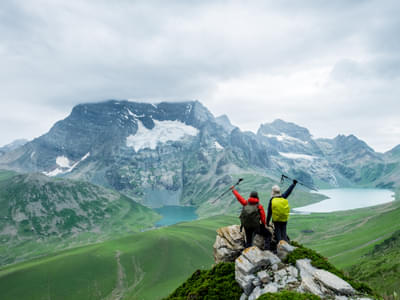
Have an ultimate trekking adventure with the Kashmir Great Lakes Trek, where you'll pass through diverse landscapes and rocky terrain to achieve great heights.
Immerse yourself in the beauty of Vishansar Lake, where crystal-clear waters reflect the surrounding peaks, creating a scene straight out of a dream.
Experience achievement standing at the Gadsar Pass, the highest point of the trek at 13,800 ft., and admire the views of the snow-capped peaks.
Reward yourself with the panoramic views of the two most amazing lakes of Kashmir, Gangabal and Nundkol, as you ascend to a height of 13,400 ft.
- Take your time adjusting to high altitudes, as the weather conditions can be different from lower areas.
- Listen to your trek leaders or instructors carefully for a safe and enjoyable experience.
- Carry basic medications and a first-aid kit during the tour.
- Please carry a valid ID proof.
- No bill will be reimbursed for any missed service/facility.
- Keep your luggage minimum; the more you carry, the more you hassle.
- Any personal expenses, items of personal nature, meals not mentioned, etc. will not be in part of the package.
- Mobile & laptop charging points may/may not be available on campsites at a common point.
- Avoid using plastic bags and maintain the ecological balance of the destinations.
- It is recommended to carry enough warm clothes and the right kind of shoes for the trek.
- Please note that in the event of emergencies or natural calamities, the management reserves the right to modify the trek itinerary. However, any changes due to circumstances beyond our control is not covered in the package cost.
Highlights of Kashmir Great Lakes Trek
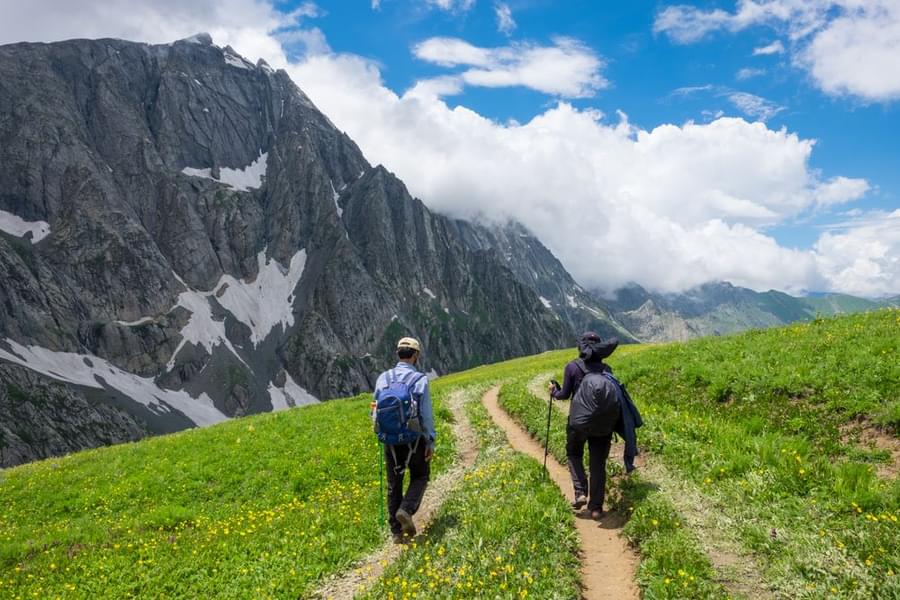
Maximum altitude: 13,715 ft
Grade: Moderate - Difficult, Level 2
Duration: 7 days
Trekking distance: 72 kms approximately
Trail type: This is a cross over trail through a number of passes starting at Sonamarg and ending at Naranag.
Rail head: Jammu is the nearest railway station
Airport: Srinagar Airport
Snow Season: Around the month of June - July
Service from: Sonamarg to Naranag
Base camp: Sonamarg, which is a 90 kms drive from Srinagar and takes about 3 hours
Best season: During the monsoon from the beginning of July to the middle of September
Region: Jammu and Kashmir
Who can participate: The trek is open for participants between the age of 12 and 55 years and are physically fit. Participants should have experience of any high altitude trek, should be able to carry a 12-kg backpack, and must have enough stamina to cover a distance of 6 kms in 30 minutes without stress.
Kashmir Great Lakes Trek Itinerary
Itinerary at a glance/ Quick Itinerary
Day 1: Srinagar to Sonmarg, Welcome to the 'Meadow of Gold'
Day 2: Sonmarg to Nichnai via Shekdur, Walk beside the Overlooking Waterfalls
Day 3: Nichnai to Vishansar Lake, The Color Changing Lake
Day 4: Vishansar to Gadsar, The Mysterious Lake of Demon
Day 5: Gadsar to Satsar, Cross the First Glacier of your Trek
Day 6: Satsar to Gangabal, Twin Lakes, The Serene Nature's Delight
Day 7: Gangabal to Naranag, Descend with the Traditional Nomadic Hamlets
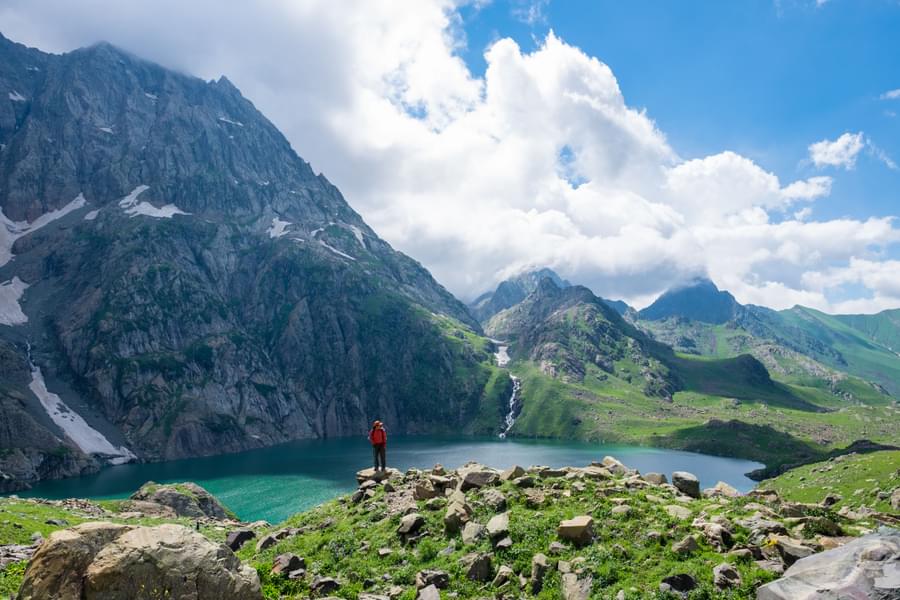
Srinagar to Sonmarg, Welcome to the 'Meadow of Gold'
Altitude: 7800 ft
Distance: 90 kms drive
Duration: 3 hours approx
The Kashmir Great Lakes Trek commences at Srinagar from where you will be driven to the starting point of the trek at Sonamarg.
You will depart around afternoon from Srinagar and it will take around 3 hours to reach Sonamarg.
You can spend the first day of your trek enjoying the scenic beauty of Srinagar with its lakes, gardens, and houseboats.
Walk through the Mughal Gardens or take a Shikara ride on Dal Lake.
You will spend the night at the camp site in Sonmarg.
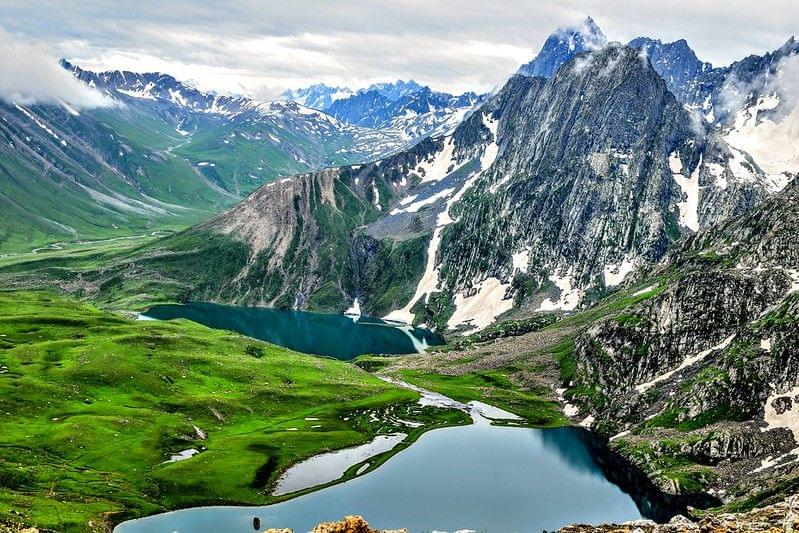
Sonmarg to Nichnai via Shekdur, Walk beside the Overlooking Waterfalls
Altitude: 11,500 ft
Distance: 11 kms
Duration: 6 hours approx.
Day 2 trek begins right after breakfast and you embark on a trail that meanders through beautiful Kashmiri meadows, dense forests comprising trees like pine, maple, and Bhoj and offers magnificent views of the Sonamarg Valley and Thajiwas Glacier.
Your trek will be alongside the Sindh River with exceptional views of the Sonmarg Valley and picturesque streams.
After this, you will start a long trek of abot 2.5 hours through thick pine forests, right up to Shekdur.
You can stop for a short noodle and tea break here and continue your trek to Nichnai along the Nichnai Stream.
Dinner and overnight camping will be at the Nichnai Stream.
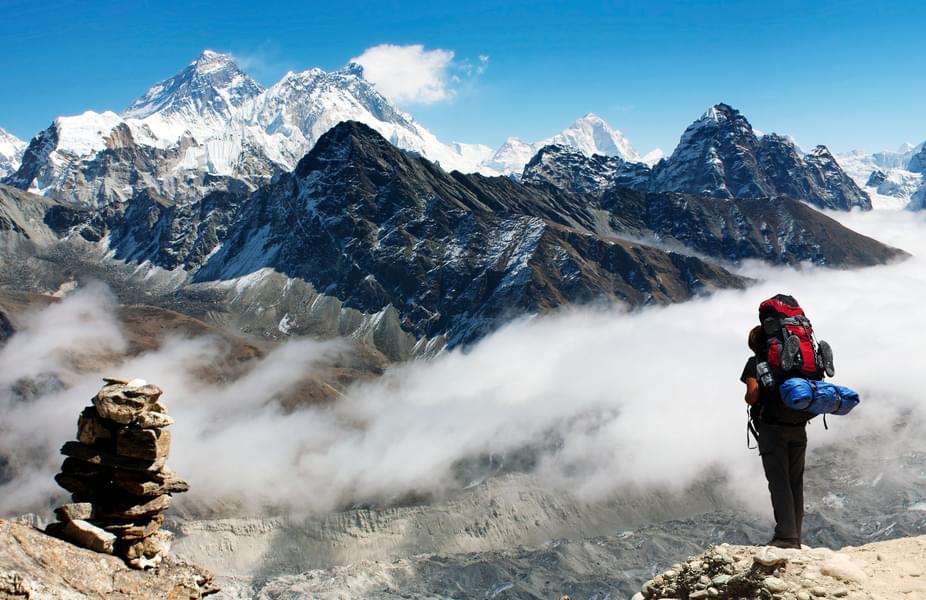
Nichnai to Vishansar Lake, The Color Changing Lake
Altitude: 12,000 ft
Distance: 13.5 kms
Duration: 6 hours
Nichnai Pass is the last point in your trek that falls under mobile coverage. From here, you have to descend to Vishansar Berry where you will stop for lunch.
The Vishansar Lake lies at a distance of just 15 minutes’ walk from the campsite, so you can visit the lake while here.
This is the first of many lakes that you will come across in the course of your trek and also one of the most stunning.
If the lake is not frozen, you can also go fishing here with permission from the Srinagar Fishing Department.
From here the trek will take a steep descent up to a scenic meadow of colorful flowers.
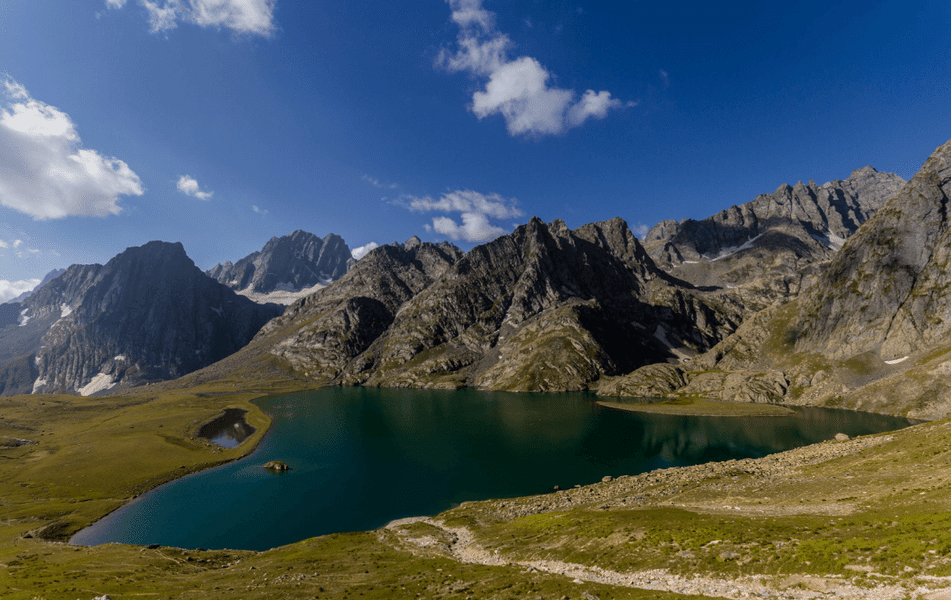
Vishansar to Gadsar, The Mysterious Lake of Demon
Altitude: 13,800 ft
Distance: 16 kms
Duration: 5 hours
Wake up to the sight of the Kishansar Peak with its reflection on the clear waters of the lake below.
The trek commences by the lakeside all the way up to the Kishansar Peak around 500ft above the campsite.
The trek will comprise of both easy and difficult stretches. Once you reach the Kishansar Lake and finally to the Gadsar Pass that is situated at a height of 13,800ft and is the highest point of this trek.
You will cross scenic meadows and lakes including the famous Yamsar Lake.
Start your descent after crossing Iris, and reach Gadsar Lake.
Once here, you will have to report to the nearest Army Camp where you will have to provide the necessary documents and complete all formalities to pass Gadsar.
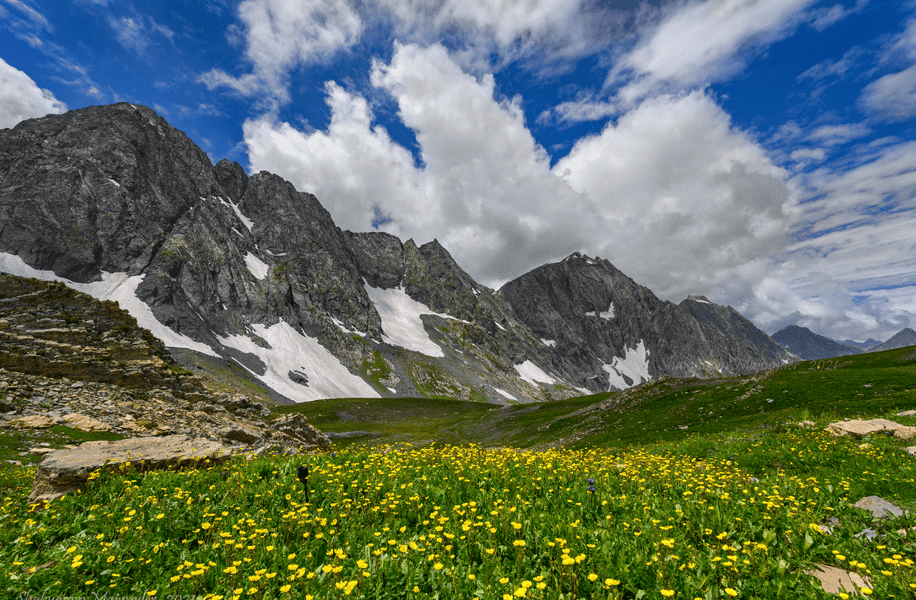
Gadsar to Satsar, Cross the First Glacier of your trek
Distance: 11.3 kms
The trek starts early the next morning and you start off on a trail that will take you from the army camp towards the stream crossing a variety of terrains including terrains from super steep, flat, and even land.
After a short break at Maengandob you will head towards the first of Satsar lakes, a group of seven different lakes.
The campsite can be reached in about 2 hours from Gadsar Lake.
Another army check post lies just before the campsite where your id proofs will again have to be shared.
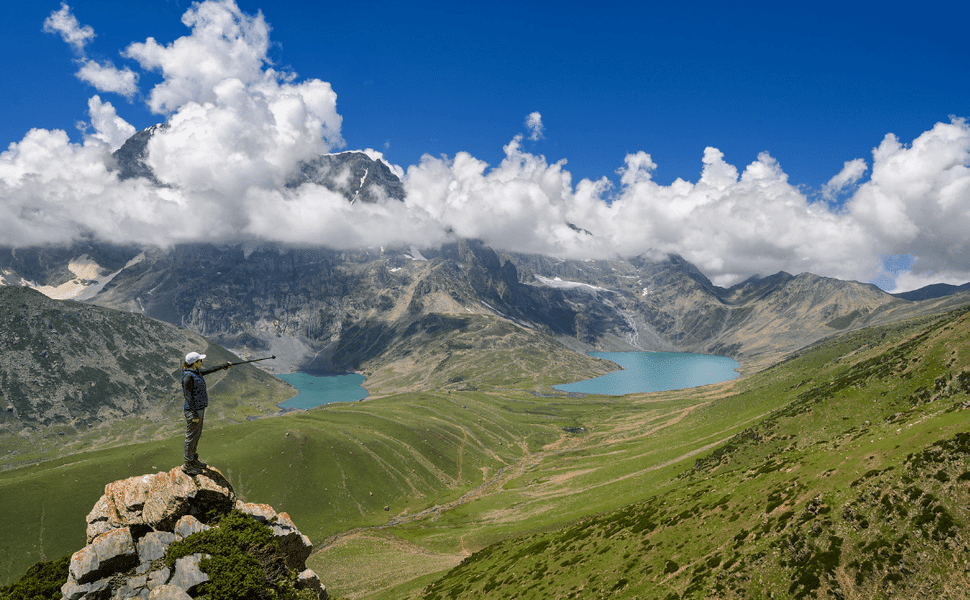
Satsar to Gangabal Twin Lakes, The Serene Nature's Delight
Distance: 9 kms
This leg of the trail is particularly spectacular around the months of July through August when the flowers are in full bloom.
Yet another army check post lies en route where IDs will be checked again followed by two small lakes that you will come across before reaching the Satsar Twin Lakes.
You will reach the twin lakes around afternoon when you can admire the beauty of the lakes that lie between the middle of the mountain.
With rock and boulder-ridden terrain, this is a test of physical and mental acumen as you pass the last of the Satsar lakes, and start hiking downwards for half an hour till you reach the forest line.
From here you will climb upwards to an altitude of 13,400ft till the summit. Witness the wonderful Gangabal and Nundkol lakes also popular for trout fishing.
Head towards the Nundkol Lake and after trekking about 20 minutes from here, you will reach the next campsite at Gangabal Lake for dinner and overnight stay.
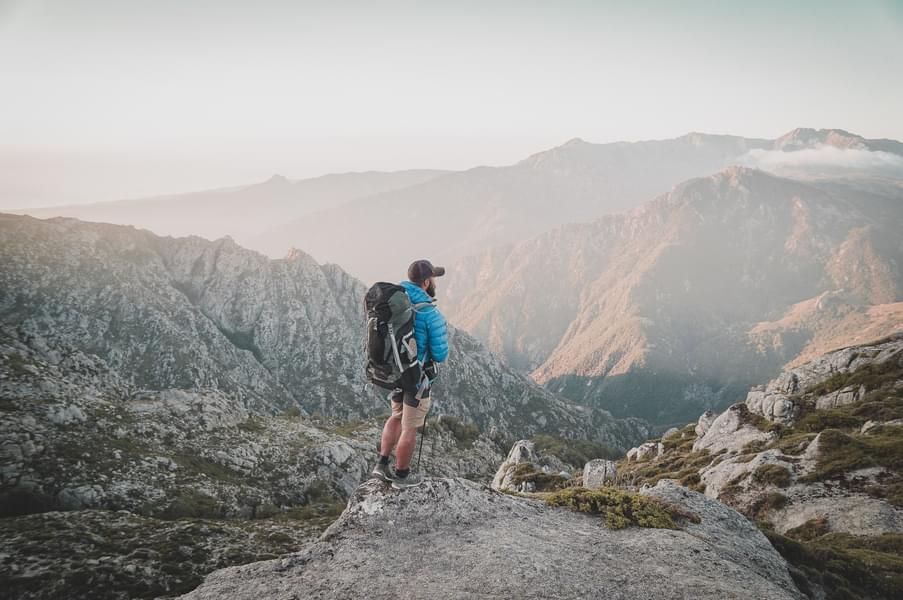
Gangabal to Naranag | Descend with the Traditional Nomadic Hamlets
Altitude: 7,500 ft
Distance: 13 kms
Duration: 6 hours approx
This is the final day of your Kashmir Great Lakes Trek that commences from the Gangabal camp, and takes you through a grassy stretch dotted with yellow flowers and pine forests.
Start a downward descent to reach Naranag which is the last leg of your trek.
After reaching Naranag Village in Ganderbal District you can also go exploring the village and the famous Naranag Temple until you are driven back to Srinagar.
What to Pack for KGL Trek
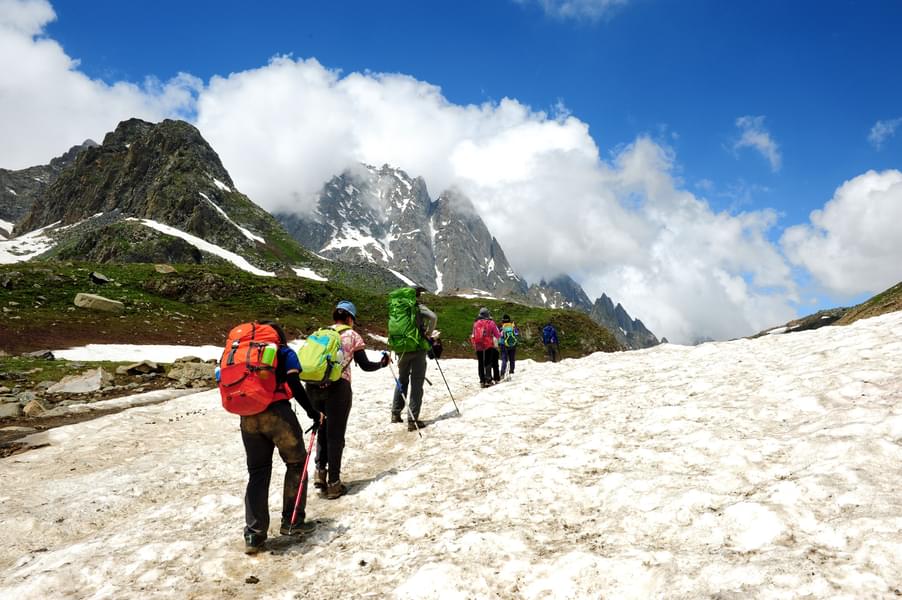
Documents: Government photo identity card: Bring any identity proof in its original as well as photocopied form, this can either be your Aadhar card or passport. It will be required by the forest department for your identification.
Disclaimer certificate: You have to download the PDF, read it carefully and sign it. It is a legal requirement and needs to be handed over to your Trek Leader during the registration at the base camp.
Medical certificate: You need to take care of two individual parts of this, one of which must be filled by a practicing doctor and the other must be filled by you. Without this certificate, you will not be issued permission to trek by the forest department.
Other Essentials:
- Sturdy trekking shoes with good grip, ankle support, and ability to handle snow.
- A 50 to 60-liter backpack with good hip and shoulder support, and quick access pockets.
- Clothes should include 3 t-shirts and 3 insulation layers, an outer layer, and 2 trek pants.
- Sunglasses with UV protection to prevent snow blindness.
- Synthetic hand gloves with waterproofing on the outside and a padded lining on the inside.
- Sun cap to prevent headaches, sunstrokes, and quick dehydration.
- Woolen cap that will cover your ears.
- 3 pairs of socks including 2 pairs sports and 1 pair woolen socks.
- Trekking poles for balance and stability.
- Headlamp to leave your hands free.
- Rainwear such as a poncho or a rain jacket.
- Rain cover for backpack.
- Daypack with rainwear, water bottles, headlamp, medical essentials, a warm layer, and snacks.
- Cutlery with a lunch box, a mug, and a spoon.
- Toilet kit with basics such as toothbrush, toothpaste, a small moisturizer, lip balm, small soap, toilet tissue roll, and a roll-on deodorant.
- 3 or 4 plastic covers.
- Medical kit.
Know Before You Go to KGL Trek
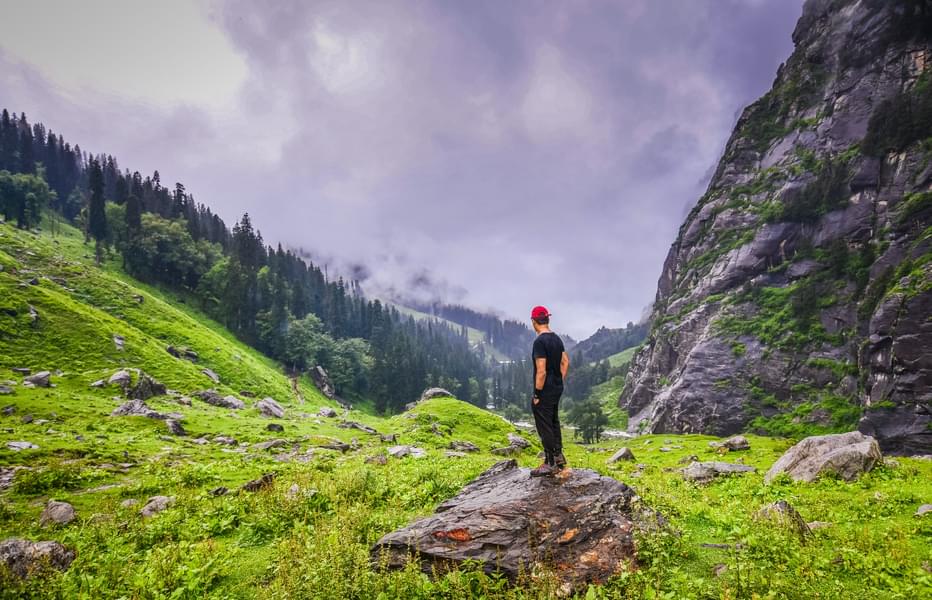
- If you are planning to spend the night at Srinagar, stay in touristy areas like Dal Lake or Lal Chowk.
- Tourist spaces are more protected and safer than downtown areas, so try to avoid such places. This will also keep you safe during times of unrest.
- Try to merge in with the crowds by dressing and behaving like a local.
- In case a curfew is imposed, keep indoors, wait for it to pass, and do not panic.
- Consistently jog for 5 km and try to do it in under 32 minutes a few months prior to your trek, to prepare yourself for the long climb and steep ascents and descents.
- Go for hopping exercises and strengthen your glutes and the muscles around your knees to get comfortable with intense boulder sections and difficult terrains.
- If you feel sick or ill at ease, check your oxygen levels, rest, drink water, and go on a curative course of Diamox.
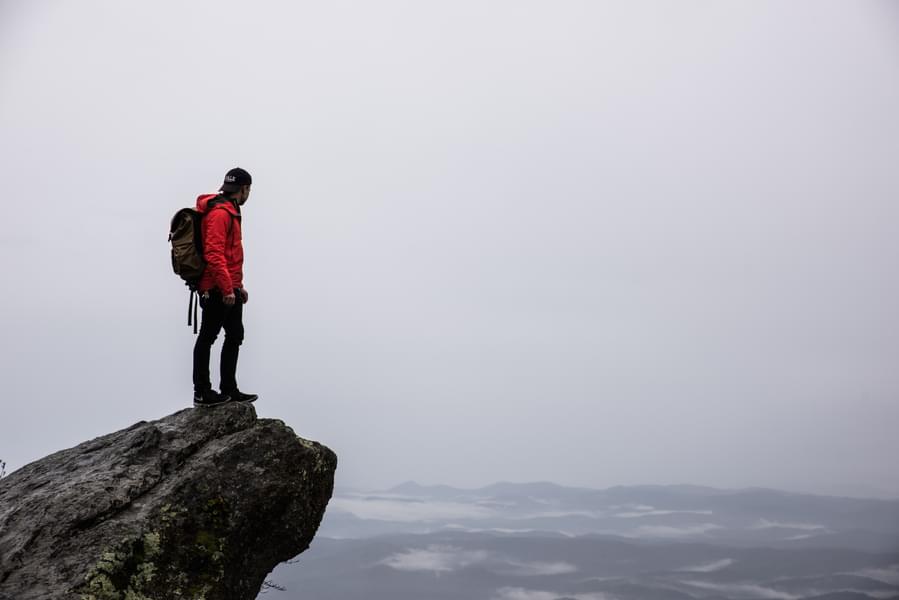
By Flight: You can reach Srinagar by air where you can stay for a day and then travel to Sonamarg. If you reach Srinagar in the morning, you can also go to Sonamarg on the same day. However, it is recommended that you stay back at Srinagar for a day to get the much-required rest as well as pack in some local sightseeing while here.
By Train/bus: You can also opt to take a train or bus to Jammu from where you can travel to Srinagar by a shared cab. If you are taking a bus to Jammu, you will get these scared cabs from either of the two gates outside Jammu ISBT. If you reach the railway station at Jammu, the share cabs from here to Srinagar will cost you approximately Rs. 700 to Rs. 1000 to cover the distance of 260 km. You can also take a train to Udhampur railway station which is 200 km away from Srinagar and takes about 6 hours to reach by bus.
From Srinagar you will be driven to the starting point of your trek on the morning of Day 1.
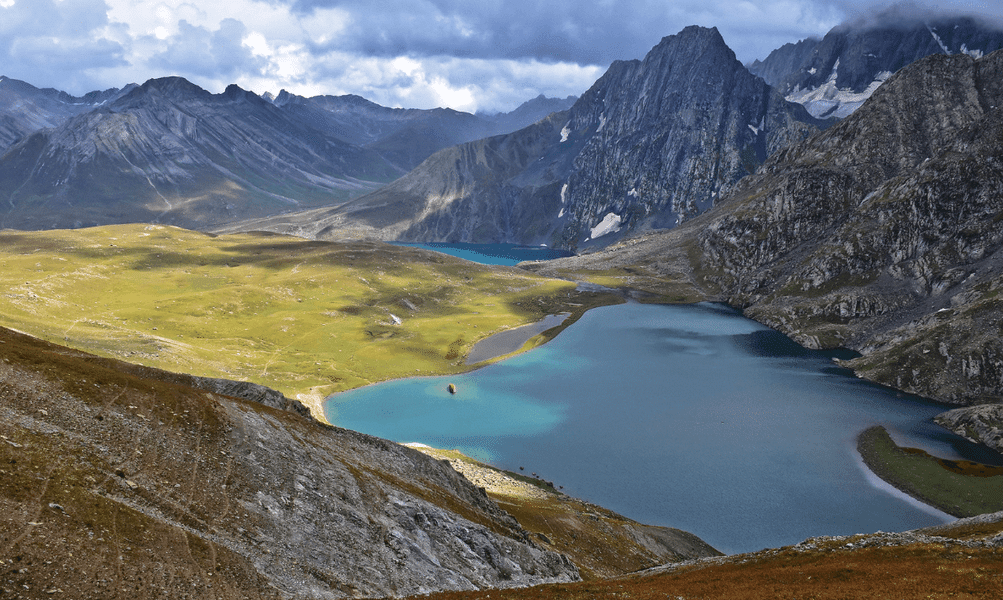
July to September: The best time to go on the Kashmir Great Lakes Trek is from the beginning of July to the middle of September as this is the only time of the year when the trail is not covered with snow. July to September is essentially when the monsoons hit the rest of the country and it may puzzle you why this is a good time for the trek. Unlike other places like Uttarakhand where most treks are closed during the monsoons as trails tend to get slippery and dangerous, things are different when it comes to Kashmir.
The mighty Pir Panjal range that segregates Kashmir from the rest of the subcontinent stretches almost 288 kms in length and about 40 – 50 kms in width. This creates a rain-shadow area as it curtails most of the heavy rain clouds from passing over into the Kashmir Valley. Thus, when it comes to the nature of precipitation and the vegetation in this region, it stands in sharp contrast with the rest of the country.
Thus July to September in the Kashmir Valley is the period when summer slowly transitions into autumn making it the best time to trek here. Moreover, the entire landscape of the surrounding areas becomes vibrant which makes this one of the most picturesque treks in the country.
General Trivia About KGL Trek
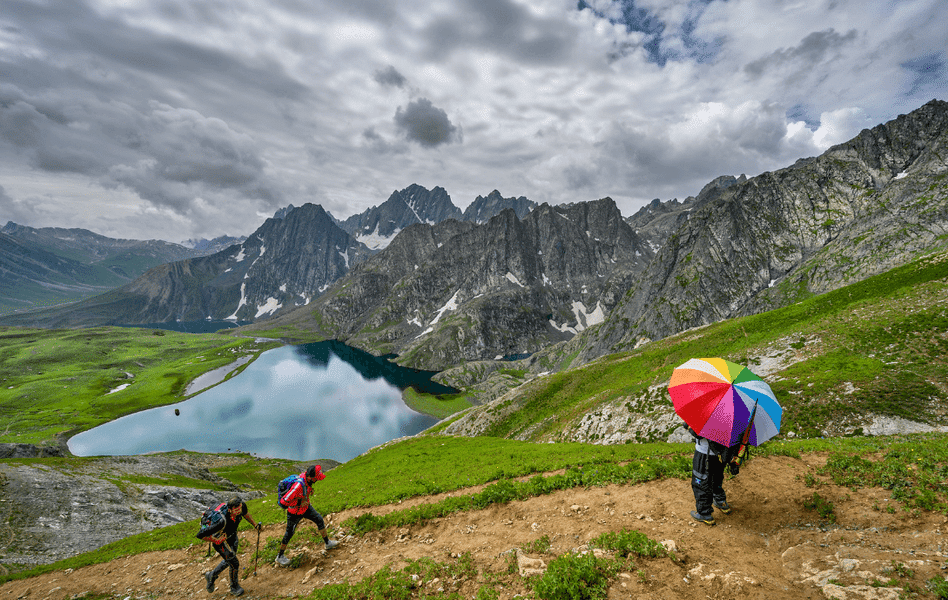
You will come across the Naranag Temple in the course of your Kashmir Great Lakes trek which is a famous religious and archaeological site. It was built by Lalitaditya Muktapida of the ancient Kayastha Naga Karkota Dynasty and is believed to be built in the honor of Lord Shiva. You will witness a Shivling and multiple carvings that can be linked with Lord Shiva here. You can also discern characteristics of the Aryan style of the 8th century in the place that mostly lies in ruins today.
Although not known by many, the Kishansar and Vishansar lakes are connected and the same water flows in both. Surprisingly, Vishansar means ‘The home of Vishnu’ and Kishansar translates to ‘the lake of Krishna’. Besides this, both lakes show no signs of algae formation unlike the Gadsar lake which always appears green due to the algae growth.
According to local mythology, Lord Shiva resides at the top of the Harmukh mountain, at a height of more than 16,000 feet. A local folklore states that a man once set out on a treacherous journey up the mountain to meet Shiva and after 12 years of rigorous trek, he could not meet the god but ultimately achieved nirvana.
Why to Go for Kashmir Great Lakes Trek?
The Kashmir Great Lakes Trek is one of the most beautiful treks in India that offers magnificent scenic beauty of the surrounding mountains, umpteen lakes, and forests along the way. The trek lasts almost seven to eight days during which time you get to explore about seven different valleys in the region. Each of these valleys and meadows are unique in themselves and have much to offer in terms of visual magnificence. Six of these valleys are also distinct grasslands or high altitude meadows that are inter-linked via high passes.
There is the Shekdur meadow set in the midst of Maples and Birch trees, the Nichnai grasslands that descend into acres of wildflowers alongside a gentle river. There is also the Gadsar meadow that is lined by narrow and jagged mountains on either side with vibrant flowers blooming in the entire area. The trek also encompasses some of the most spectacular and crystal clear high altitude lakes that are known to change color throughout the day.
You May Also Book
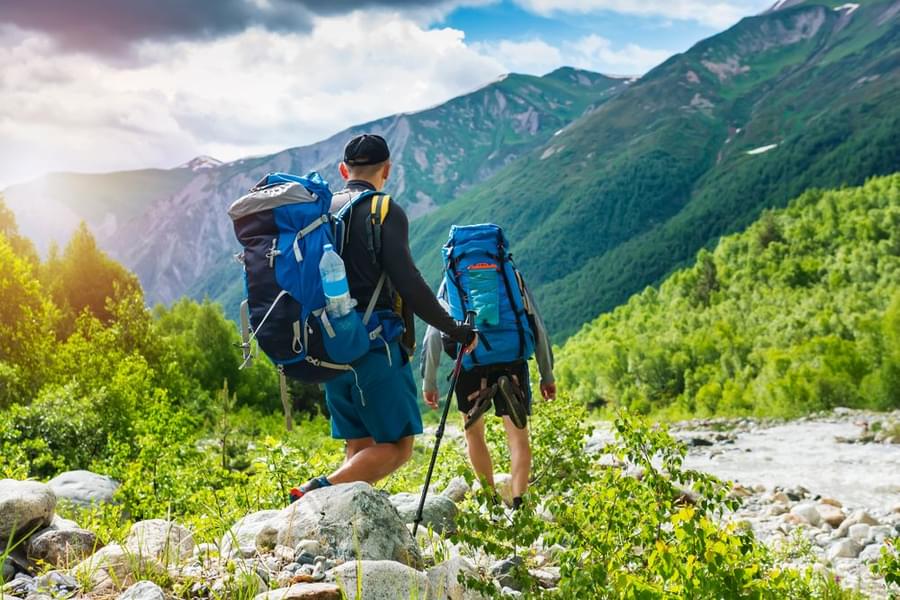
FAQ's of Kashmir Great Lakes Trek
If i am a first-timer, is the kashmir great lakes trek good for me.
Yes, for a first timer the Kashmir Great Lakes trek is a good start off, like it is for an experienced one. However, you should ensure that you maintain a good fitness level and are not suffering from ailments like Bronchitis, high blood pressure, asthma, TB, epilepsy, heart problem, or are on the higher BMI side. Moreover, if you have a medical history, you need to inform the team beforehand.
What is the age limit for the Kashmir Great Lakes trek?
The minimum age to go on a Kashmir Lake trek is about 12 to 15 years and the maximum age is 55 years. The maximum age however, can go higher depending upon your level of fitness.
Who will accompany the group on the KGL trek?
You will be accompanied by skilled and well qualified professionals who are equipped to handle any kind of emergency that may occur on the way. These include an experienced first-aid certified trek leader, a first-aid certified local guide, helpers, a cook, and other support staff.
Will I get a mobile network while during the KGL Trek?
There will be no network available during trekking. In Sonamarg you will get Airtel, BSNL, and Idea networks but not after that. In Kashmir, only postpaid connections work.
How can I handle extreme cold during the KGL trek?
You should layer up well during your trek and ensure that you eat full meals. Never go to sleep on an empty stomach. Use your sleeping bags in the proper way and make sure no empty space is left in it. Wear a thermal layer, full sleeves t-shirt, a fleece layer, thick jacket, and a waterproof or windproof jacket. On your lower body wear a thermal layer and hiking pants.
More Treks in Himalayas
- Treks in Himachal
- Treks in Uttarakhand
- Treks in Ladakh
- Treks in Nepal
- Treks in North-East
.png?w=auto&h=400)
The content and images used on this site are copyright protected and copyrights vests with the respective owners.
You will receive an email containing a link allowing you to reset your password to a new preferred one.
Verification mail has been sent.
Please check your mail to verify your account.
Click Here to Login
- How To Reach
- Dates & Price

34°25'15.9"N 75°03'24.3"E
Kashmir Great Lakes Trek

Sonamarg, Kashmir
Pickup Point
Tourist Reception Center, Srinagar
Minimum Age
- Kashmir Great Lakes Trek offers Magnificent Alpine Lakes
- Vast Green Meadows and Valleys
- Breathtaking Views
- A must-do High Altitude Trek
Kashmir Great Lakes Trek is one of the Top Treks in India and it is t he most popular trek in Kashmir, . The stellar beauty of five alpine lakes lapped in the dreamscape of Kashmir - can you think of a more beautiful combination? Kashmir Great Lakes is a name that sets every trekker's heart racing - and for good reason! The Great Lakes of Kashmir Trek is easily the most beautiful, picture-perfect, postcard-worthy trek we run. The trail of this Himalayan Trekking leads you through five alpine lakes, each as beautiful as the other. The lakes follow one after the other every day, making each day equally exciting. Remember the rush and excitement of a pass day/summit day? Well, multiply all of that by 5, and you have the Kashmir Great Lakes Trekking - each day a beautiful, new lake to look forward to. What's more interesting is that you get to see these lakes just as they are being fed by the snow-clad mountains. If you are lucky enough, you may even chance upon an occasional iceberg floating across the pristine blues and greens of the lake. The beautiful, albeit distorted reflections of the surrounding mountains on the surface of the lake, is also something to look forward to. Given the arduous, undulating trail, Kashmir Great Lakes Trekking demands commendable fitness.
Kashmir Great Lakes
Trekking Alpine Lakes in the Himalayas plunges into the beautiful, lush meadows of Kashmir, each one competing with the other in terms of beauty. Every day brings a new meadow to explore. From pine and maple lining the meadows to the verdant valleys of Kashmir, the trek is essentially a patchwork of different terrains. On the fourth day of the trek, you can see the sweeping Satsar Plains looking phenomenal as a gurgling stream snakes through the middle. Climbing up to 13,800 ft., Kashmir great lakes trek difficulty is fairly challenging and demands a rigorous fitness regime to be followed. The fitter you are, the more you can explore. If you are a nature lover, you cannot miss this trek! If adventure and mountain trails are your callings, book your Kashmir Great Lakes trek in India with us. Check out the Kashmir great lakes trek guide now and Kashmir great lakes trek reviews. Head to our dates for the Kashmir Great Lakes Trek 2019 and book your slots today.
Best Time To visit Kashmir Great Lakes
The best time for Kashmir great lakes trek is from July to August when the floral colours and greenery are in full bloom. The snow cover melts in June, leaving behind a lush carpet of colours behind. The weather is also quite pleasant during this window.
Temperature at Kashmir Great Lakes Trek
The temperature ranges from 17 to 20 degrees Celsius during the daytime and 3 to 4 degrees Celsius at night.
Advisory Note : Please include a buffer day in your travel plans to accommodate bad weather on the trek or any political instability. All this totally depends on circumstances in the state of Kashmir. You are liable to pay Rs 1800/- per day if buffer day is used.
Prior to your your adventure with Trekmunk, it will be mandatory to sign the waiver form and get a medical certificate from a doctor 15 days before the trek, without these, you will not be allowed to start the trek. You'll also need to upload your ID on the website. We need these paperwork of yours to get the permit from tourism department which only issues the permits 10 days or earlier before the trek date.
Brief Itinerary
Detailed itinerary, day 1 : getting to base camp - arrive at shitkadi.
Shitkadi is a beautiful, quaint little place just a few kilometers beyond Sonamarg. The drive to Shitkadi is very picturesque and will take around 4 hours. You will reach the campsite by evening.
Note: The pick you up will be arranged from Tourist Reception Center, Near Dal Gate 1 from 12 pm -1 pm. Cost of 5-6 seater cab is approx Rs. 4,500 Which is shared between the fellow trekkers.
Day 2 : Trek from Sonamarg to Nichnai via Shekdur
The Kashmir Great Lakes trek begins about 3 km away from Sonamarg, along the Srinagar road. Once you cross 3 km, a solitary little dhaba can be seen on your right. If you’re short on edible supplies, this dhaba is the last place until Naranag to buy them. The trail follows a moderate ascent for the first 3 hours, followed by an hour-long descent before another mild ascent leads you to Nichnai. After the first 10 minutes, the trail climbs into a lush, green meadow that offers sweeping views of Sonamarg. Another 30 minutes into the trek, trees of maple and pine spring around, beyond which the trail dips down to a small stream and then moves up again. You’re now treading through a dense Maple forest – a dreamy experience that is exclusive to Kashmir treks. Continue along the trail climbing up until the forest finally ends at a ridge, giving you a beautiful glimpse of the Sonamarg valley.
You now begin descending to another meadow graced generously by beautiful trees of Silver Birch. What comes next is a beautiful blanket of greenery that spans the meadow. There are a few books here where you can refill your water bottles. The right side of the meadow is the Shekdur meadow and is flanked by lofty, snow-capped peaks. Have your lunch under the canopy of the Bhoj trees that Shekdur is home to. The trail dips gently into a beautiful Silver Birch forest, after which it climbs back up to a river valley. This is the beginning of Nichnai. Soon, the inviting meadow of Nichani opens up, perched in the laps of two mountain ranges. Camp overnight at Nichnai.
Day 3 : Trek from Nichnai to Vishnusar Lake
It is a slight long day, with the trail winding through yet another set of lovely meadows. There is also a noticeable change in scenery beyond Nichnai! We start early in the morning by 08:00 AM so that there’s sufficient time for you to wander around and admire the beauty of the meadows. The Nichnai Pass or Vishnusar Berry almost marks the halfway point of the day’s trek. About half an hour later, a river-crossing awaits you and the trail runs along the left bank of the river. The trail now begins ascending gradually through the meadow, with the pass being just an hour’s climb away now. The climb to Nichani pass is a moderate one before it descends and eases off into a flat walk as you approach Vishnusar Lake. Nichnai Pass opens up yet again to stunning views of the Sonamarg valley. You can get a decent BSNL connection here. The climb to Nichani pass is a fast one, and you can actually feel the altitude shift even as you climb. Nothing to worry about though, as, beyond the pass, the trail begins depending quickly into a large meadow through which a beautiful river flows. The meadow stretches for another half hour till the valley ends. You can now see a whispering stream here, which originated from Vishnusar Lake. Settle here for the camp, and rest for a while. The lake is now only 500 meters away. It bears a striking reflection of the Kishansar peak. The color of the lake changes throughout the day, depending on the weather and skies. The next destination to explore is the Kishansar lake, just 500 meters away from Vishnusar lake. It thrives right at the foot of the Kishansar peak and takes 45 minutes to reach. It is accompanied by a magnificent meadow on the right, while the ridge on another end of the lake rises up to the famous Gadsar Pass.
Day 4 : Trek from Vishnusar to Gadsar Via Kishansar lake & Gadsar Pass
The trek starts from the side of Kishansar Lake, and the trail leads to the ridge’s top. Follow the narrow trail that unfolds along the mountain side, and stick to the ascending trail. Reaching the top should take you about 1.5 hours or 2, depending on your pace. Soon, you are treated with the views of Vishnusar and Kishansar lakes in entirety. It is a rare view and follows you right up to the tip of the ridge i.e. Gadsar Pass. Reigning atop 13,800 ft., Gadsar Pass is the highest point of the Kashmir Great Lakes Trek. The ascent is a steep one, and takes about 2 hours, followed by an equally steep descent which eases out into a mild walk through the meadows. You can see some tall and lofty mountains in the distance; these are beyond our Line of Control. You will most likely find some snow at the pass.
Yamsar Lake is the first small lake visible on your left. Another hour’s descent dips into the meadows, with two glorious ranges bordering both sides of the valley. The grassy meadow is spiked with beautiful floral colours crisscrossing its surface – an amalgamation of reds, blues, purples, and yellows. Once you enter the blue Iris region, Gadsar is not far. It thrives at foot of snowy mountains, with lovely blue flowers popping up on the side. On the other side, you can see snow slabs sliding off from the mountain and into the lake! Camp overnight near Gadsar.
Day 5 : Trek from Gadsar to Satsar
Being the trek by crossing the stream and following the trail that climbs up the mountains. The terrain starkly resembles that of the Western Ghats here. You can see the river valley and tree line right beneath you. It is a level walkthrough Maengandob, a place identified by its iconic, deep craters. The riveting views of the mountains and valleys take your breath away. Satsar is a cluster of 7 beautiful lakes On the right side, just next to the ridge is the Satsar army check post, where some ID proofs must again be shown. The first Satsar lake appears 10 minutes away from the army post. Camp overnight at Satsar.
Day 6 : Trek from Satsar to Gangabal twin lakes
The trail starts out as a mild ascent, alternating between ascents and descents. Reaching the targets Satsar lake takes about a half-hour, and the trail essentially involves hopping over boulders. This lake is the last one for the trek. The trail begins descending now as a lovely forest appears on the left. The trail is an undulating one throughout. As you reach the top for a ridge atop 13,400 ft., you can see the two beautiful lakes side by side, out of which the biggest one is Gangabal, accompanied by Nandkol. The route climbs up and down yet again followed by a stiff descent, which lasts for 1.5 hours and brings you to lush, green meadows. Another kilometer into the trail, the tree line springs up again. A short climb followed by a quick descent brings you to the lake. You can see that Nandkol lake, right at the foot of Mt. Harmukh, is not nearly as untouched and clean as the other lakes of the trek. A lot of trekking residue can be seen scattered along the sides as the trek from Naranag to Gangabal is a famous weekend trail. You can try to clean up if you want here, making sure it is in a better condition than when you had found it. Gangabal is merely 20 minutes away from Nandkol, and the two are linked by a whispering stream which must be crossed via a bridge. Camp overnight.
Day 7 : Trek from Gangabal to Naranag, Drive to Srinagar
Though it is the last day of the Kashmir Great Lakes trek, it is an exhausting one and takes a toll on your knees and toes. The trail descends gradually initially, followed by a steep descent all the way. About 30 – 45 minutes into the trail you can find traces of Airtel connection. The Harmukh peak still dominated the landscape, tall and mighty as you enter a beautiful meadow with blooming yellow flowers covering its face. An hour later, the tree line emerges again, and the pine trees are a welcoming sight. We stick to the borders of the forest, instead of heading straight into it. For the next 6 km, you keep weaving in and out go the first before finally entering it. Soon, the descent becomes really steep through the pine forest. Soon, the main road of Naranag can be seen, from where Srinagar is a short drive away. The cab arrangement will be same as before. Overnight stay at Srinagar. Arrange for your stay in Srinagar.
Day 8: Buffer day
Advisory Note : Please include a buffer day in your travel plans to accommodate bad weather on the trek or any political instability. All this totally depends on circumstances in the Union Territory of Jammu and Kashmir.
If the buffer day is used, you have to p ay us Rs. 1,800 per day (INR) +5% GST. The money will be collected by the Trek Leader only if we use the buffer day.
We can arrange a cab for you from the pickup point in Srinagar, the charges for the same are not included in the package. The cost of the cab can be shared among the trekkers joining the trek. For communications purposes, we will create a Whatsapp Group before the departure date of the trek and will share the details regarding the transportation. The drop at Srinagar after the trek will be arranged in a similar way.
Cab cost keeps fluctuating but they tend to be approx 4500/- one way for Innova or similar class vehicle.
How To Reach Great Lakes Trek in Kashmir:
Srinagar Airport is well connected to the major cities of the country. Frequent flights ply from Delhi, Jammu, Mumbai, Bangalore, Chandigarh, and Kolkata. Srinagar airport is about 70 km away from Sonamarg.
Sonamarg is accessible from the other parts of the country via the National Highway 1D. The Srinagar bus stand is about 87 km away from Sonamarg, and sufficient public buses are available from Srinagar to Sonamarg. The Srinagar Bus Stand is well connected to Delhi, Chandigarh, and Jammu
The Jammu Tawi Railway station is the most convenient stop, from where frequent buses and cabs are available for Srinagar and then Sonamarg.
Latest Stories
Why trek with us .
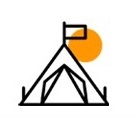
Fixed Departures All
Get yourself fit, nutrition tips, things to take, health & safety.
- Accommodations at Kashmir Great Lakes Trek: All accommodations on the trek will be on twin sharing basis in Tents.
- Great Lakes Trek Guides: An experienced and professional guide will accompany you for the trek. The team will have years of experience and well equipped for any emergency situation.
- Services of a Professional Trekking Team: A team of an experienced Cook, Camp Staff, Porters/Mules will accompany you for all the arrangements on the trek.
- Meals at KGL Trek: All Meals on the Trek are included. We will serve Vegetarian Indian food on the trek which will be cooked by our high altitude chefs. You will be given packed lunch everyday which you will have to carry in your lunch box.
- Camping and Safety Equipment: All the camping equipment such as Tents, Sleeping bags, Toilet Tents, Dining Tent, Mattresses, and other things will be provided by us and we guarantee the quality. Safety Equipment including Medical kit, Oxygen Cylinder, Oximeter will be provided by us. We recommend you to bring your own sleeping bags if possible.
- Trek Permits and Forest Camping Charges: Only for Indian Clients, All the applicable trekking permits, Camping Charges, Forest Entry Fee, etc will be paid by us. Foreigners have to pay these charges if not mentioned.
- A Life-Changing Experience: We assure you that by trekking in the Himalayas you will have a life-changing experience and we will do everything we can to provide you with the best services and make your venture in the wild an unforgettable one.
Note: Prior to your your adventure with Trekmunk, it will be mandatory to sign the waiver form and get a medical certificate from a doctor 15 days before the trek, without these, you will not be allowed to start the trek. You'll also need to upload your ID on the website. We need these paperwork of yours to get the permit from tourism department which only issues the permits 10 days or earlier before the trek date. All this can also be done online without using any paper.
- GST and Other Taxes: The goods and services tax is not included in the price mentioned with the trek. They are subjected to change according to the government rules of India.
- Accommodation and Food in Srinagar: Food and stay in Srinagar and during transit to Shitkadi, Sonamarg and back are not included in the package. You can book your hotels or homestays in Srinagar, we can recommend a few good options.
- Flights and Transportation to and fro base camp: Flights or other means of transport are not included in the package. Transportation from Srinagar to Sonamarg and Naranag to Srinagar (Cab cost keeps fluctuating but they tend to be approx 4500 for 5-6 seater Innova or similar class vehicles one way which is shared between the fellow trekkers which will pick you up from Tourist Reception Center, Dal Gate 1, Srinagar) is not included in the package. We can arrange a cab for you according to your requirements but you will be liable to pay for the same. Any expenses occurred during the journey are not included in the package cost.
- Personal Equipment: Your Rucksack, personal clothing, shoes, trek poles, and other personal trekking gear is not included in this package. You have to bring your own gear according to the weather and difficulty of the trek.
- Portage of Personal Bags(Offloading): We highly advise you to carry your own burden (your rucksack) but due to any reason, if you wish to not carry your rucksack, we can arrange for a porter/mule to carry it. For this service, you will be charged over and above the trek cost. The charges for offloading vary with every trek.
- Travel Insurance: Travel Insurance is not included in this package. You need to have travel insurance before opting for such adventures. You can buy insurance from providers like ASC360, Religare etc.
- Personal Expenses: Any personal expenses incurred (Laundry, Bottled Water, Beverages, Snacks, Orders at tea houses or dhabas, Tips for guides, Camera fees, etc) are not included in the package.
- Emergency Expenses: Any costs arising out of unforeseen circumstances such as accidents, bad weather, landslides, road conditions and any other circumstances beyond our control are not included in the package.
- Anything not mentioned in Inclusions of the package.
Cancellation Policy And More Information
Booking terms:, confirmation policy:.
Upon Booking, An invoice will be sent to your mail & within 12 to 24 hours the booking confirmation with additional details will be sent to your mail.
Cancellation Policy:
This image is only a brief visual representation of the policy.
Please read the detailed policy carefully by clicking on this text.
_1655191763393.jpg)
Refund Policy:
Any refund applicable will be processed within 10 to 15 business days as per the company policy.
Postpone/Transfer of a booked trek:
a) You can postpone your booked trek for a period of two months (61 days) but Trekmunk will charge a 20% processing fee. The last date for the postponement will be 15 days before the start of the trek. You can book any slot for the same trek in the next 2 months (61 days) which will totally depend on the availability. You will have to confirm your slot for your future trek 15 days prior to that trek. Failing to book the slot in 2 months (61 days) time, would be considered a cancellation with no refund of any kind. The 2 months (61 days) time frame will be from the start date of the initial trek you booked for. Postponing a booked trek can only be done once. If it is postponed 45 days before the departure date, we will not charge any fee.
b) You can transfer your booked slot for the trek to any fit person till 15 days before the trek. You just have to mail us the request and rest we will handle. The new person has to get all the mandatory documents duly signed for the trek and is bound with this booking contract. It is the participant's responsibility to read and agree to all these terms.
More Information:
1. We Trek for a Cause: For overall development of the areas we run our operations in, we donate Rs 100/- per booking from our profits which are used for the upliftment of the local people and conserving nature. We have named this initiative as - Trek for a Cause. For more details, follow: https://www.trekmunk.com/trek-for-a-cause
2. We are paperless: We are focusing on Sustainable Tourism and to do that we are trying all measures to convert our trek operations to be Eco-Friendly. Going Paperless is one step closer to our aim.
3. Single-Use Plastic: Trekmunk does not encourage the use of single-use plastic items. We are ensuring that our team is working together to reduce the problem and educate those around them. We will send you instructions on how to go plastic-free on your adventures.
4. Preparing for your Holiday: Getting some additional exercise makes a lot of sense to spend time before coming on a trekking adventure. The fitter you are, the more enjoyable you will find the experience. Hiking in the hill country is the best training but jogging, squash and swimming are also good for developing cardiovascular fitness and stamina. To read more on how to get fit, follow: https://www.trekmunk.com/get-fit-for-trek
5. Electricity Supply & Plug: You will get electricity supply till the starting point of the trek. If not Indian, We recommend you check if you require an adaptor for your electrical items at: http://www.worldstandards.eu/electricity/plugs-and-sockets/
6. Currency: The unit of currency in India is the Indian Rupees.
7. Health & Vaccinations:
Severe Allergies: If you have a severe allergy please inform the Trekmunk office before you travel. We will do all we can to help, but we cannot guarantee an allergy-free environment on trekmunk trips. You will need to carry your own treatment for the allergy with you, as 'adrenaline auto-injectors' are not carried as standard by our leaders and staff. You should inform your leader on the arrival of your allergy, and let them know where you keep your adrenaline pen.
Vaccinations: You should contact your doctor or travel clinic to check whether you require any specific vaccinations or other preventive measures. You should be up to date with routine courses and boosters as recommended e.g. diphtheria-tetanus-polio and measles-mumps-rubella, along with hepatitis A and typhoid. Malarial prophylaxis is not usually required for trips in the mountains, however, if you are visiting rural and remote low lying areas then they might be necessary.
8. Passport & Visas/Identity Proofs: If foreigner, Validity for 6 months, should have blank pages, and should be kept with yourself all the time.
9. Water: If you are on a trekking or cycling holiday, water is supplied to fill up your individual bottles. This will be boiled or filtered. Additionally, you should take purification tablets or a filter bottle (such as a LifeStraw, Sawyer Filter) to treat your water when in towns or where water is not supplied. We do not encourage the purchasing of single-use plastic bottles.
10. Altitude: This adventure involves going to a very high altitude. This is not something that you should worry about; the human body is quite capable of adapting to a very wide range of altitudes, but it is important that we follow some simple rules in order to acclimatize successfully. We will send you the information in your mailbox about Acute Mountain Sickness and trekking in high altitudes. On this trip, we carry bottled oxygen for use in emergencies.
11. Guidance on Tipping: Tipping is the accepted way of saying thank you for good service. Normally the guide and any other trek staff are given their tips at the end of the trek and this is best done as a group. The main guide will make sure that the tip is appropriately distributed among all the staff members on the trek.
12. Spending/Emergency Money: Approximately Rs. 8000-10000/- (in Indian Currency)should be carried for miscellaneous expenses including porter and trek crew tips, drinks, soft drinks, etc. We recommend that you carry your travel money in the form of cash as the availability of ATM is less in these remote areas. This can also serve as your emergency spending money.
13. Travel Insurance: It is mandatory to have an insurance for this trek. When taking out insurance please ensure the policy you choose covers you for the activities and altitude included in your itinerary. We will ask for the Travel Insurance Details over a mail.
Our 7 days trip to Meghalaya was a truly memorable experience. Thank you Trekmunk for arranging such an adventurous backpacking trip and a special thanks to Mohit Goswami our trip leader for giving us an experience of what true travelling is. From hitchhiking to traversing the un ...
I and my friends went to Markha Valley trek with Trekmunk and we all had a great time. Walking up and down the hill, coming across some beautiful sites was mesmerizing. Staying in tents was so much fun. And our guide had all the knowledge about the trek. Trekmunk is really good w ...
Traveling with these people is surely an insanely enthralling experience. This is my second backpacking trip with these people and the way I had imagined backpacking to be has been fulfilled by them and they have given me surely more. The best thing about travelling with these pe ...
Our 7 days trip to Meghalaya was a truly memorable experience. Thank you Trekmunk for arranging such an adventurous backpacking trip and a special thanks to Mohit Goswami our trip leader for giving us an experience of what true travelling is. From hitchhiking to traversing the unknown places to eating delicious Momo's to climbing 3000 steps, we did it all in those 7 days which came to end so quickly and none of us wanted to go back home. Such an experience where you just pick up your rucksacks and walk down the roads of a traveller could have been only possible because of Trekmunk!
I and my friends went to Markha Valley trek with Trekmunk and we all had a great time. Walking up and down the hill, coming across some beautiful sites was mesmerizing. Staying in tents was so much fun. And our guide had all the knowledge about the trek. Trekmunk is really good with its food and accommodation facilities. I highly recommend Trekmunk. Kudos to their Team.
Traveling with these people is surely an insanely enthralling experience. This is my second backpacking trip with these people and the way I had imagined backpacking to be has been fulfilled by them and they have given me surely more. The best thing about travelling with these people is that you understand the true meaning of travelling and experience it very closely. You are given great freedom but at the same time taking care of. You participate in the process of backpacking. You have a trip leader with you but he acts more like a friend as the days pass by! We attended the hornbill festival and did a wonderful trek to Dzukuo valley in Nagaland with the leadership of this group. You break the boundaries of yourself when you travel like a true traveller and that is possible with these people.
I had the most wonderful experience trekking through the ranges of Chandrashila with Trekmunk. The small moments of achievement were phenomenal. Chandrashila is the most astonishing peak that I've ever trekked through; I've never been so fascinated. I think I am going to go for another trek with Trekmunk soon enough! The kind of hospitality that is provided to us is worth appreciating. I made many new friends and have enjoyed each and every day of this trek to its fullest.
We were a group of 12 friends and booked a trek to Kedartal with Trekmunk, it was an amazing experience..even though it was our first trek to the Himalayas and Kedartal being a difficult terrain trek we were guided excellently by the Trekmunk team. They served us nutritious food, took complete care of our safety and health and gave us the right advice to overcome AMS. Eagerly awaiting our next trek with them.

Related Blogs
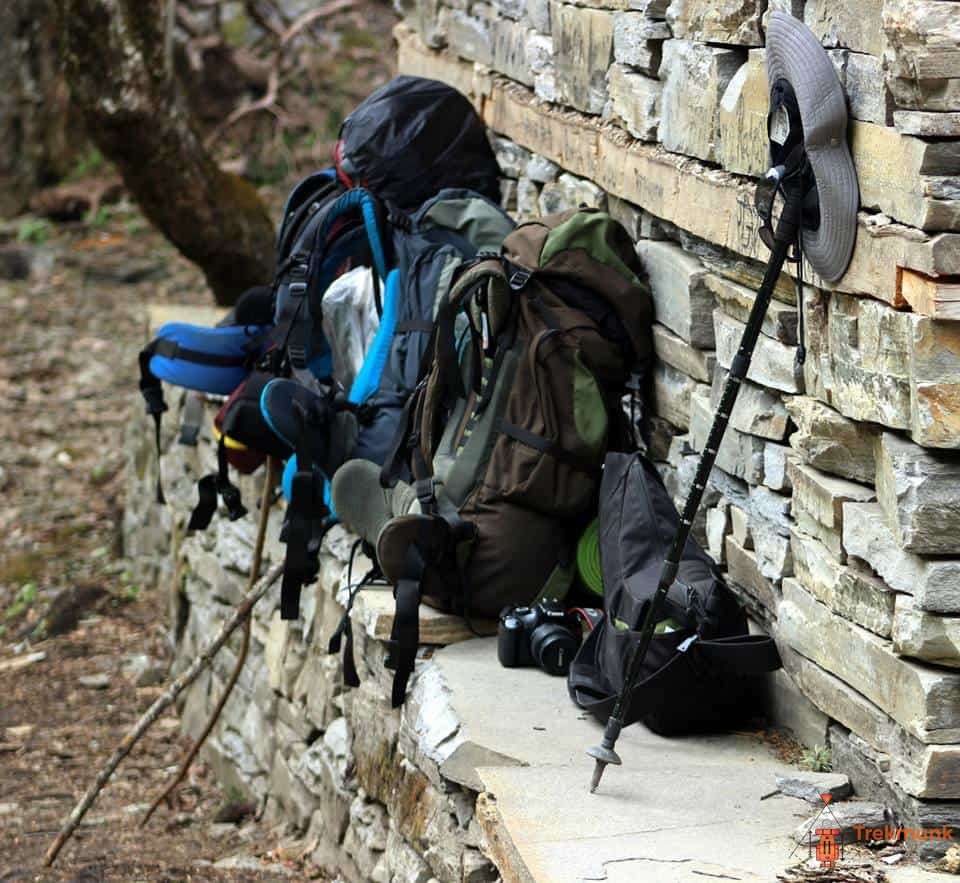
Related Tours
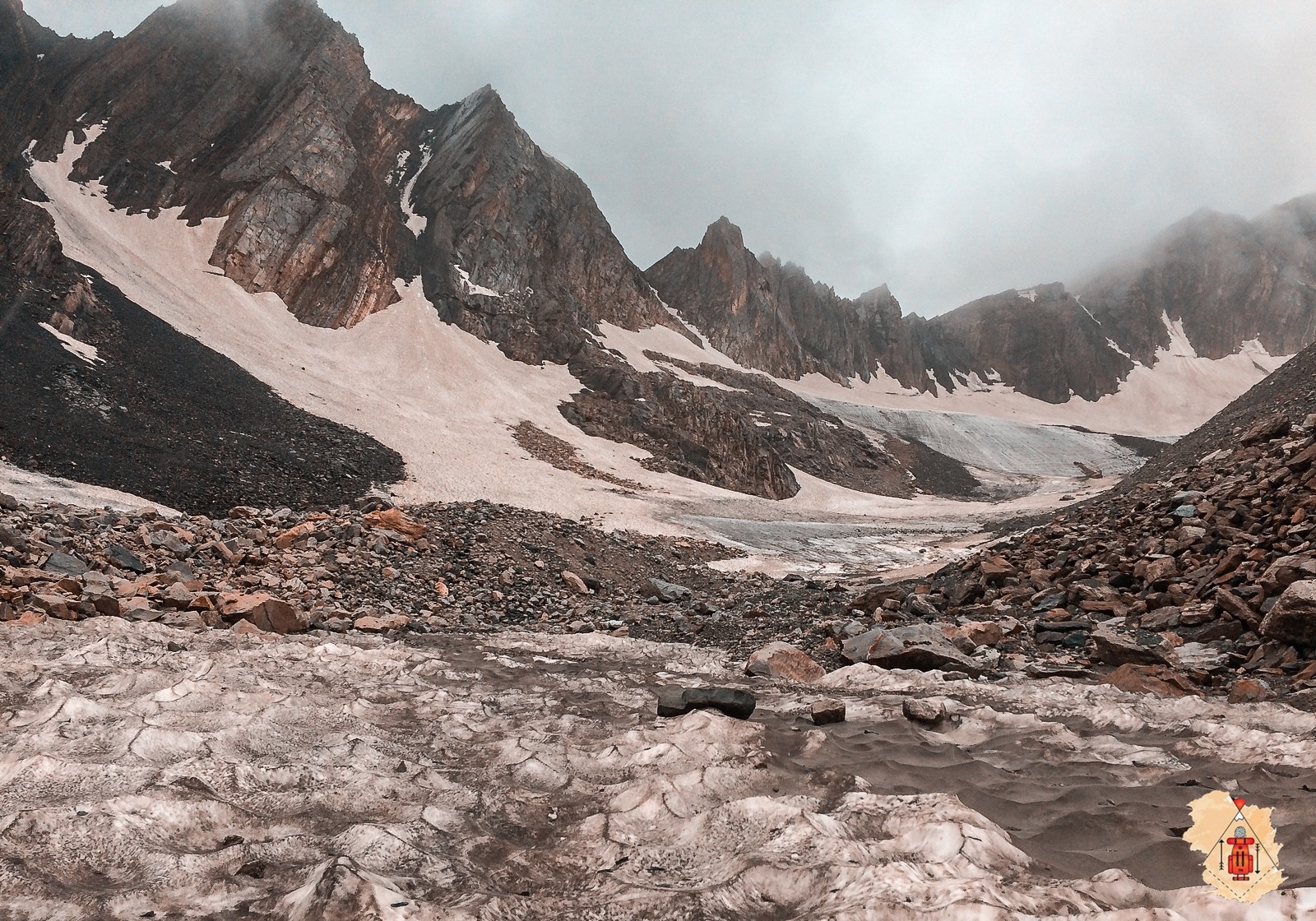
Basmai - Soun Valley Trek
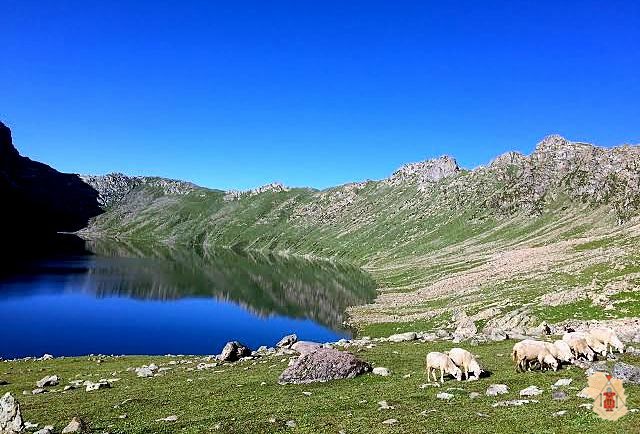
Basmai Pass - Tarsar Marsar Lake Trek
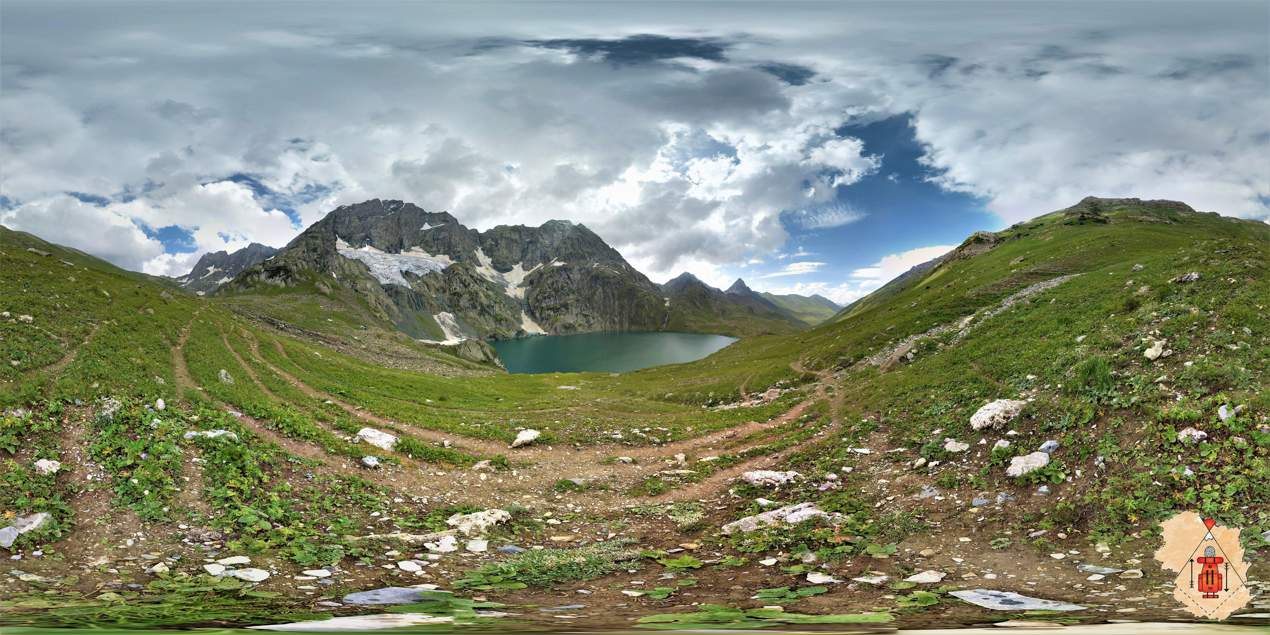
Gangabal Lake Trek -Largest Alpine Lake of Kashmir
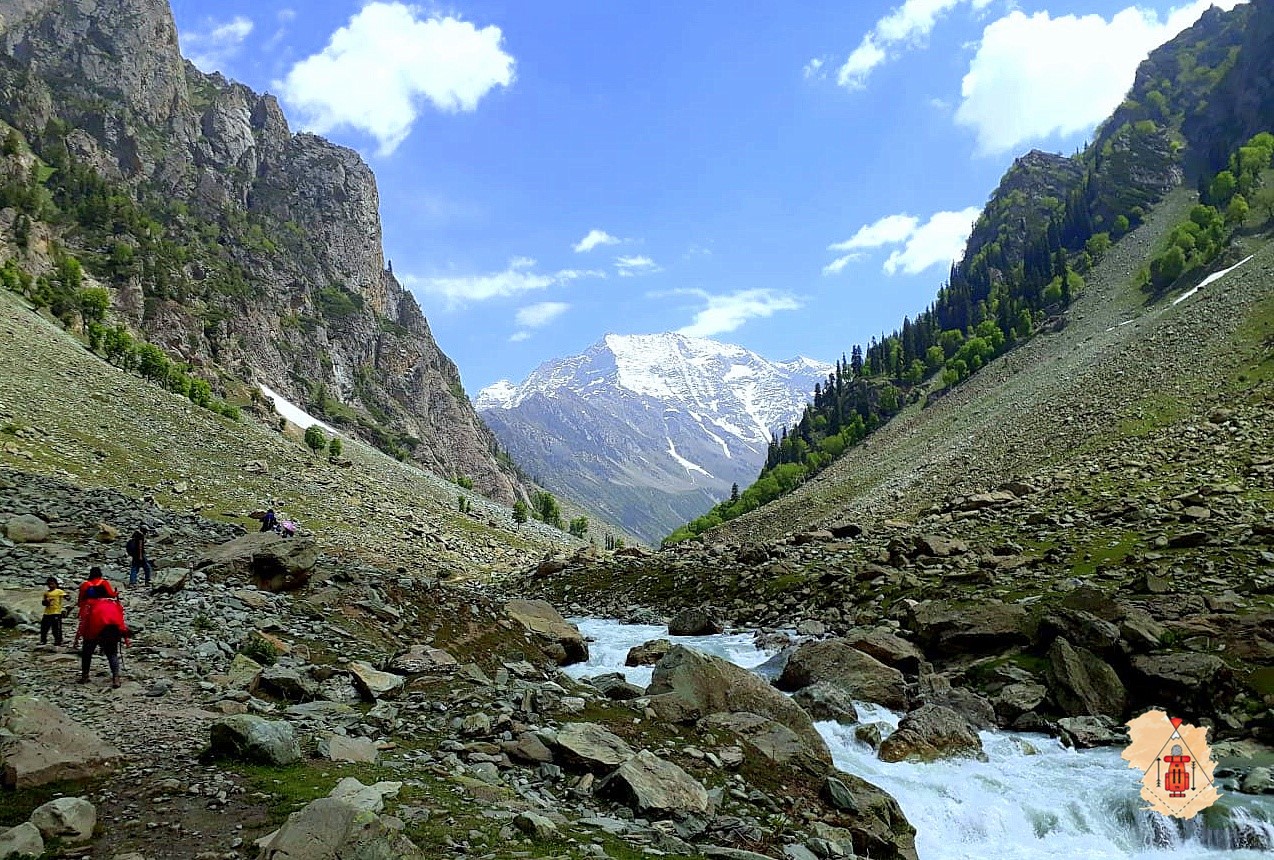
Kolahoi Glacier Trek
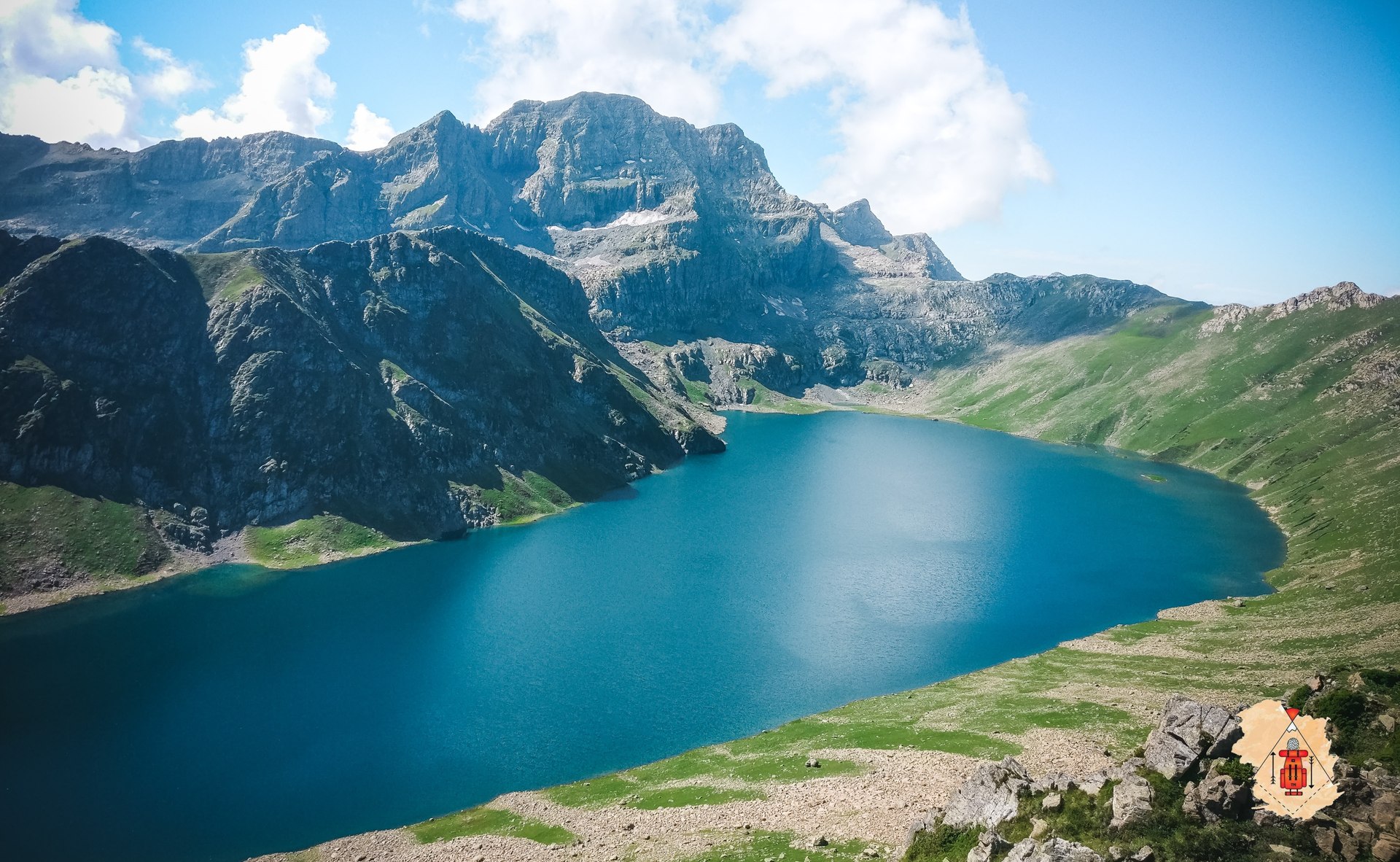
Tarsar Marsar Trek
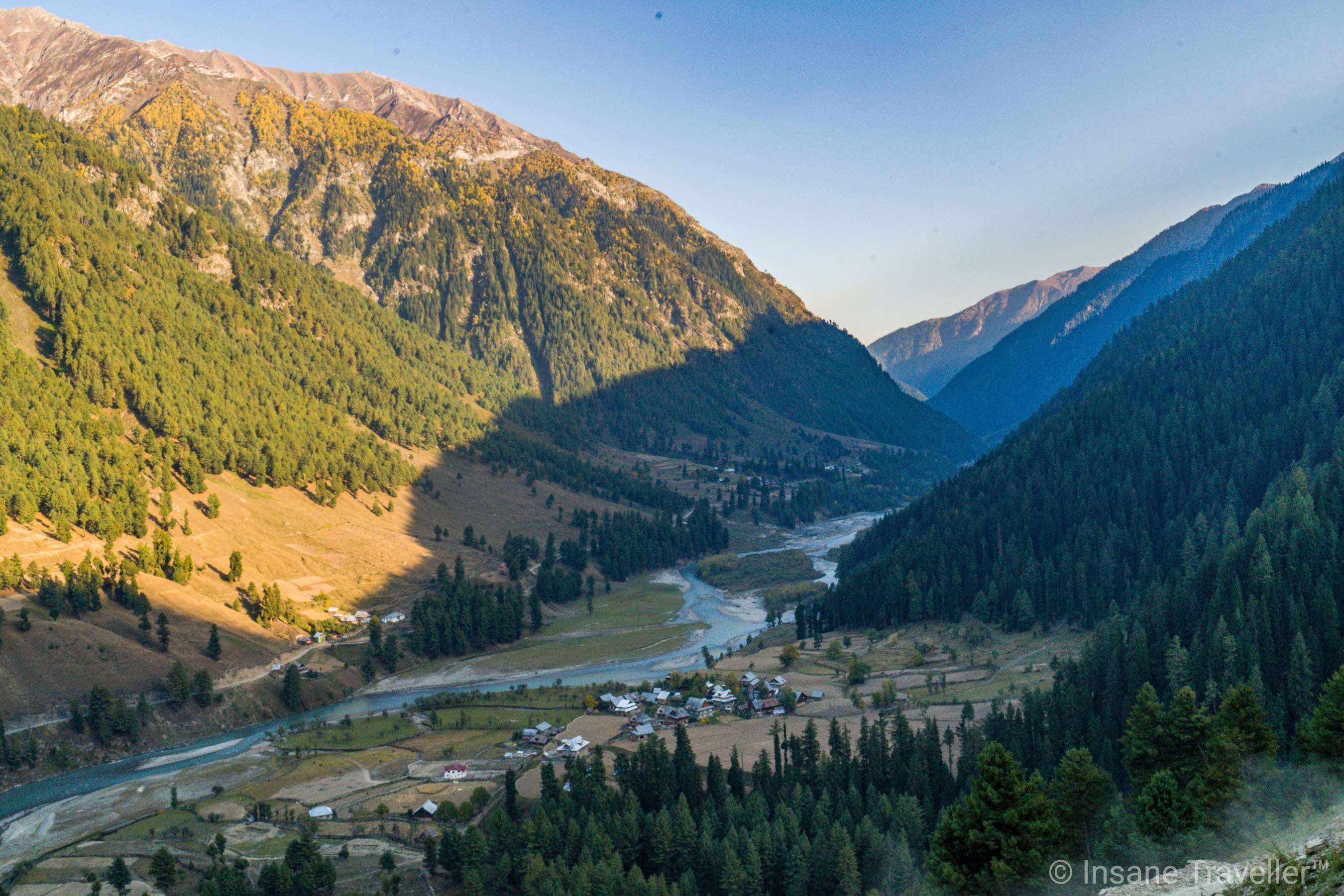
Warwan Valley Trek

"Trekmunk is changing the indian trekking industry"
"10 Most Promising Adventure Sporting and Trekking Companies - 2020"

" Things you do for the Passion for Travel"
Hello there, How can we help you ?
Timing: 10 am to 6 pm IST (GMT +5:30)
Whats App Us
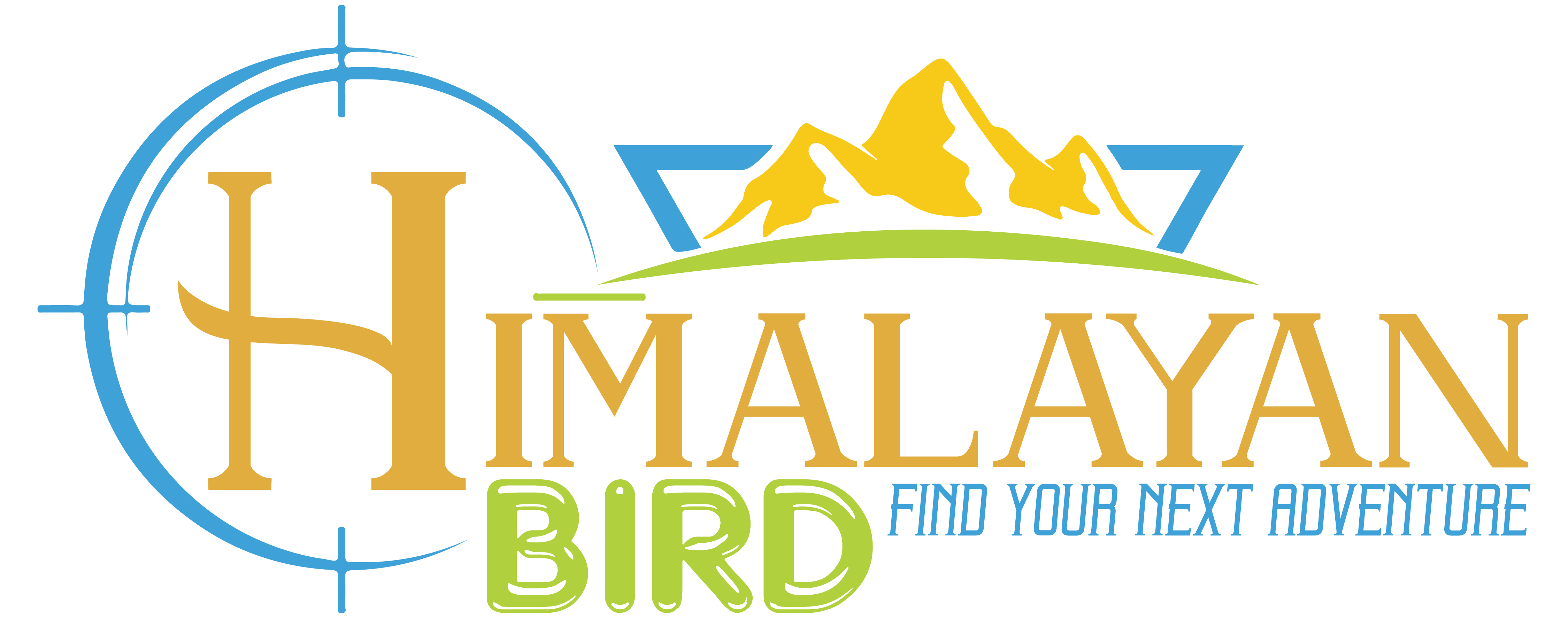
Kashmir Great Lakes Trek
- 6 night, 7 days
- Moderately Difficult
- Max. Altitude 4160 m.
Overview of Kashmir Great Lakes
Trek info navigation, what is included.
- INR 17000 INR On Fixed Dates
- 7 days, 6 nights
- Sharing Cab Transfers (Sxr to Sxr)
- Breakfast, Packed Lunch, Dinner
- Tea, Coffee, Snacks, Soup and Desserts
- Dinning Tents
- Kitchen Team And Tent
- Dome Tents (2P)
- Toilet Tents
- First Aid + BLS
- Professional And Experienced Trek Leader
- Hiking Assistance
- Bonfire + Veg Barbeque (Once)
- All camping Gears
- Trekking And Forest Permits
- Dal Lake Sightseeing
What is Excluded?
- Trek or Travel Insurance
- Load ferrying (offloading) - optional and costs Extra
- Meals During Travel (Enroute Basecamp and return)
- Internal Cab Transfers
- Personal Trekking Gear
- Medical Certificate
- Personal Medications
- Airport Pickup and Drop
- Accommodation
Quick Booing for KGL
Questions call us.
- +91-8899210442 (24*7)
Visit Our Office
Beauty of Kashmir Great Lakes Trek
Himalayan landscapes reflect a luminosity that is not present on the plains. Kashmir great lakes trek is full of psychedelic scenes of mountains peaks, meadows, and feelings of distant planet emerges from the heart while witnessing the sunrise and dawn breaking over the alpine lakes. After crossing the tree line at an elevation of 2000 meters the route of the great lakes trek provide amazing views of cliff valleys, glaciers views with sweet flowing water streams, and the meadows which are full of wildflowers. Great lakes trek is listed among the 5 best treks of India and is permitted for trekking purposes during the right season only by the Department of Tourism Jammu and Kashmir. The popular trails heads for great lakes trek are Naranag and Sonamarg. If you are gonna start trek from Naranag (closest village to this trekking trail), it will end up at Sonamarg and vice versa. We the team of Himalayan Bird offer you an amazing all-inclusive trekking deal for this trek with fixed group departures apart from that we operate private treks on the trail throughout the season.
Departure Dates for KGL 2024
- 27 June to 4 July | Group of 8 | 4 Vacant
- 5 July to 12 July | Group of 10 | 6 Vacant.
- 13 July to 20 July | Group of 10 | 6 Vacant.
- 21 July to 28 July | Group of 10 | 5 Vacant .
- 29 July to 5 August | Group of 10 | 6 Vacant.
- 9 August to 16 August | Group of 10 | 4 Vacant.
- 17 August to 24 August | Group of 10 | 9 Vacant.
- 26 August | 2 September | Group of 10 | 5 Vacant.
- 4 Sep to 11 Sep | Group of 10 | 6 Vacant
- 13 Sep to 20 Sep | Group of 10 | 5 Vacant
- 22 Sep to 29 Sep | Group of 10 | 8 Vacant
- 5 Oct to 12 Oct | Group of 12 | 10 Vacant
Harsh Weather Conditions, The Kashmir Great Lakes Trek is not permitted before 21 of June and after second week of October by the Department of Tourism Jammu And Kashmir.
How To Reach Srinagar, Kashmir
- Direct flights
Kashmir does have only one commercial Airport which we can reach by a direct flight of 1 hour 30 minutes from Delhi (DEL) Airport. All the flights from other parts of India reach via Delhi to Srinagar (SXR), Kashmir.
Direct Bus service to Kashmir from different states of India isn’t available but guests are advised to reach Jammu using Red Bus or any other bus service. Tourist taxi, Public transport And UT Government Bus Service will be available easily from Jammu to Srinagar.
The train services can be used up to Jammu And Banihal only. Tourist taxi, Public transport And UT Government Bus Service will be available easily from Jammu to Srinagar. The distance of 270 Km from Jammu to Srinagar is usually been covered in 6 to 7 hours.
Detailed Itinerary of Kashmir Great Lakes Trek.
Day 1: srinagar to sonamarg base camp (shitkadi)..
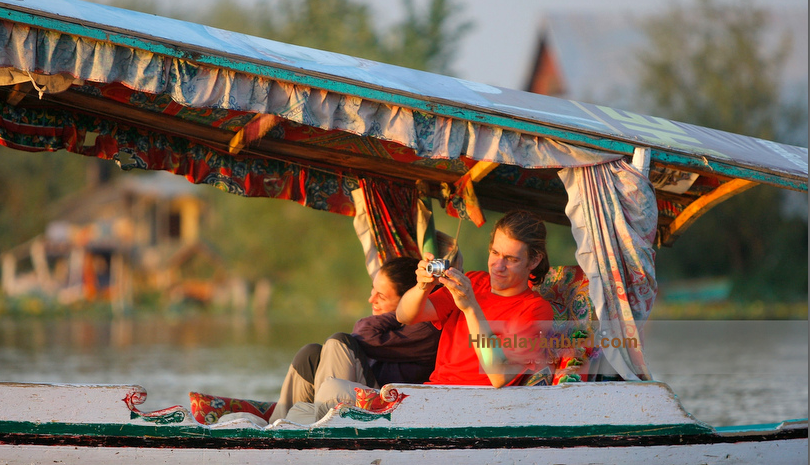
Day 2: Sonamarg Base Camp to Nichnai.

This awesome mountain journey starts from the popular and trending hill station which is Sonamarg. The first day of the trek is the easiest part of the trail. Our campsite for the Kashmir Great lakes trek is located at an elevation of 2500 meters above sea level on the banks of Sind river Sonamarg. Heading towards Shekdur, With the gradual ascent of one hour, we will be touching the tree line of pine forests. While looking behind an amazing panoramic view of Sonamarg, Tajiwas Glacier and surrounding snow-capped mountains make the view magnificent. The route seems to get to an end in between the tree line.
A narrow ridge that takes 30 minutes from its left corner to get into the beautiful meadow of Shekdur. This place is surrounded by different types of tree species like Birch ( Bhoj Patra), Boxwood (Shamshad), Deodar (Cedar), and Dogwood. This meadow is been used by gypsies and local shepherds for pasturing during summers. The gypsy houses and tents could be seen around the meadow. This mountain spot is a beautiful camping site too and by omission, the place is named Tabletop but in actual the name is given to the summit of the mountain nearby. Taking our early lunch break in this beautiful landscape makes the day memorable.
Experience during the first day of the trek.
After the break, it is 30 minutes gentle descend through the birch forests and one and a half hour gentle up ascent trek to the Nichnai campsite. During this normal up ascent trek to Nichnai Valley, trekkers will leave the tree line behind. Following the riverside, the route provides mind-blowing views of small waterfalls, snow-clad mountains, wildflowers. Kashmir’s great lake trek is full of adventure and joy also holds geographical importance. As we go higher from the left banks of the Nichnai river, the stream gets out of vision but splashing sound is always there.
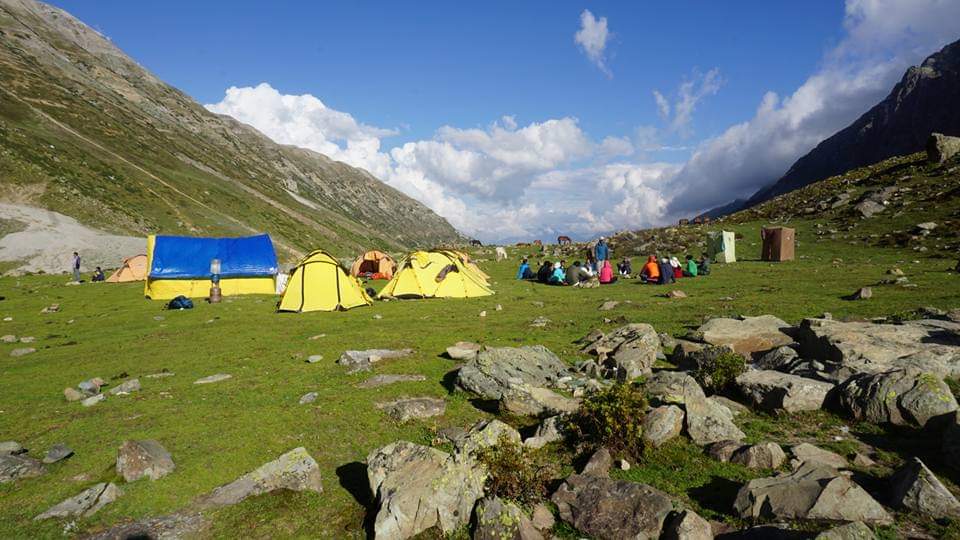
The landscape in the middle of Nichnai is mostly rough with rocky terrains and slopes so providing less land for comfortable camping. A green flat piece could be seen after leaving 2 parallel ridges behind. Sokhnai ( Valley of Rest ) is a small valley of the Nichnai Valley used for pitching tents. The great lakes trail remains covered with snow till the end of summer and the temperature remains around 8-15 degrees Celcius during the night. Nichnai is our camping site for tonight, Enjoy delicious and energy-boosting meals for dinner and sleep on time to stay fit. Tomorrow is going to be another day of thrilling adventure, explore different types of landscapes, and 2 breathtaking alpine lakes.
Day 3: Nichnai to Vishansar Lake.
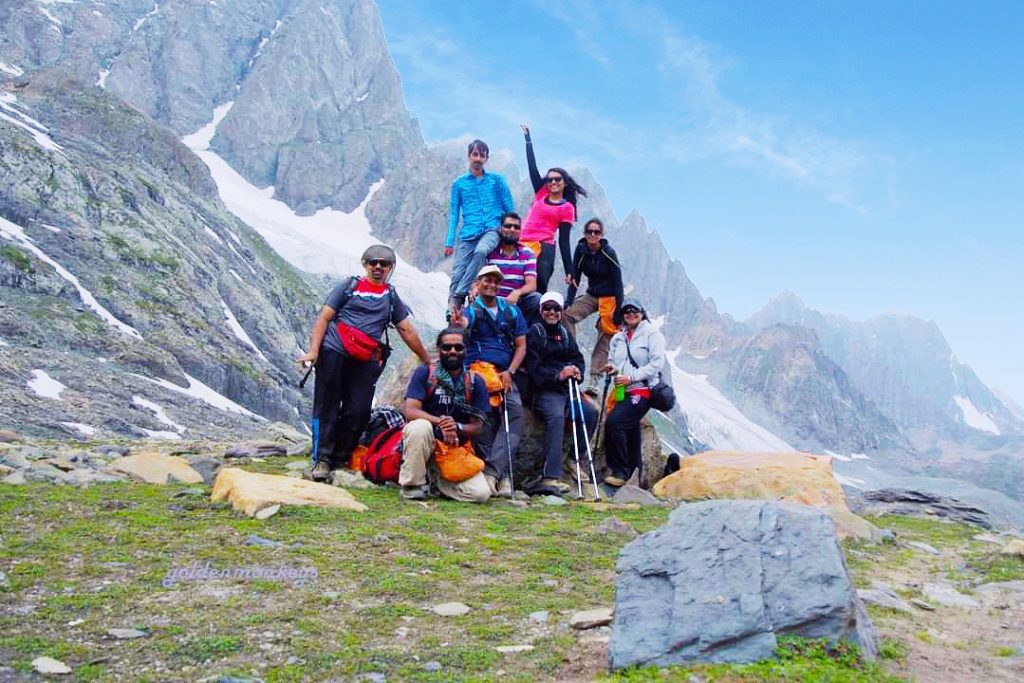
The trek from the camping site starts with a normal walk of 30 minutes and a moderate steep ascend of 180 minutes to get over the pass. The terrain towards pass is not too rough but due to high altitude and steepness in the up climb, it needs more push. The water stream of Nichnai comes to an end and the mind blowing view of lofty snow peaks provides the sense of the ore. The toughest part of the trek is over and we are at the elevation of 4114.8 MAMSL. (13500 feet.) The Herd of sheep grazing on slopes, small meadows, gypsy houses, and the mountain range of Zanskar is visible from Nichnai pass. This spot is named also Maggie point and the best match to relax, eat, and experience joyful views.
Easiest part of the trek, Nichnai Pass to Vishansar lake.

After crossing the pass the route turns right. Itis time to descend for the next 30 minutes with 2 hours of normal walk to cross the Valley of Vishansar Lake. The mountain peaks of this beautiful landscape remain under the convoy of clouds most of the time. A number of small snow-fed waterfalls mingle and form a crystal clear water stream that connects to the outflow of 2 great lakes. Small pebbles and stones fall down occasionally, due to the footsteps of folks of sheep and goats, grazing on the steep grass-covered slopes. Standing and walking in the valley of spiky mountain peaks fills the trek with the real wilderness. Walking parallel to the water stream will lead us to our campsite of Vishansar and Krishansar Lakes. Right after taking some rest, we will be exploring the Vishansar Lake which takes just 15 minutes from the camp.
Next to this Lake, there is another lake named Krishansar, the lake is triangular in shape and is 2 times bigger than Vishansar Lake. These lakes are the main sources of the Kishanganga river. In between a major river flowing from Dras, Kargil joins the stream and changes it to one of the biggest hydroelectric power-generating rivers of India. The river later enters Pakistan and called with the name of the Neelum river. Such giant water resources are building blocks for vegetation, drinking water, hydroelectricity for a huge human population.
Day 4: Vishansar Lake to Gadsar Campsite via Gadsar Pass.
The Kashmir great lakes trek is considered a moderate + difficult trek but also trek itinerary does have a direct impact on your physical stamina. Camping a full day and 2 nights at two great lakes is enough time to acclimatize and explore. One more step from us which makes your trekking more moderate is that your rucksack (10-15 kg ) is being carried out by horses during the whole trail.
Today is going to be more amazing and adventurous. We are at the elevation of 3600 meters and getting to Gadsar pass (Elevation – 4200 meter) is the first part of today’s trek. ( In the Kashmiri language ” Gad ” means Fish and “ Sar “ means High altitude water body). Starting the trek with a normal walk of 30 minutes and 90 minutes of a steep climb up to the top of Bari (“ Pass” ). On every step towards the ridge, the view of the beautiful mountain range gets bigger and adds a new thrill to the adventure.
Gadsar Pass of Great Lakes Trek
Most beautiful view of kashmir great lakes.
The most epic and popular view of the great lakes trail is from Gadsar pass. Two green bluish alpine lakes ( Vishansar and Krishansar ) in the lap of snow-capped peaks with the view of cliff valleys and snow dotted slopes in the background provide a breathtaking panoramic view. Such epic views of alpine landscapes are no were found in the whole world.
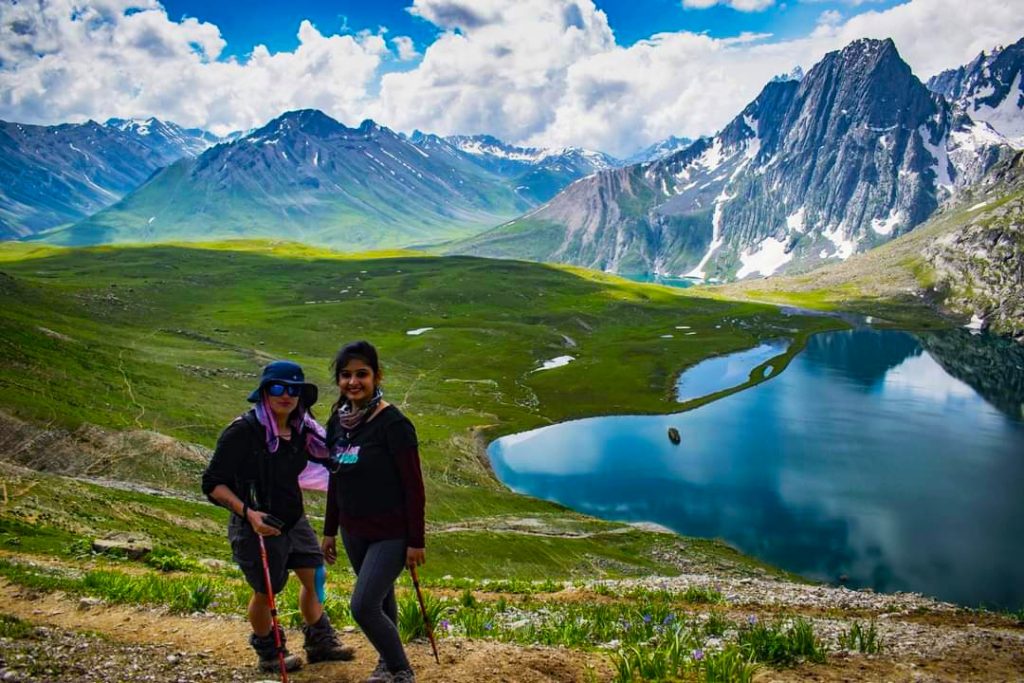
Alpine lakes covered with a vast zone of green lush grass and wildflowers are the next part of the trek. The route onwards the Gadsar pass is an almost normal walk through rolling slopes. Descending from the pass to 3500 meters, the route will take us to the third lake of the trail which is Yumsar. This high altitude water body is covered with wildflowers from the northern side and with solid rocky mountains from the other sides. Lake Gadsar is more than 60 minutes from a normal trek from Yumsar Lake. The surrounding landscape is a living habitat for Himalayan marmots and red foxes. The lake doesn’t provide optimum breeding conditions for trout fish, so they are not found in Yumsar.
A True Story about Nearest Village of Great Lakes Trek
We are walking parallel to a historic mountain village named Jabdoor. The village was one of the remotest villages of Gurez valley, connected through Tulail to district Bandipora of Kashmir. Till late 1990 Jabdoor was the closest village to the Kashmir great lakes trail, stretching to 2 square km. The village used to get hit by snow avalanches once in a decade. But the geographical phenomenon of nature changed and this human settlement got extremely dangerous avalanches in 1995. The villagers started moving to other nearby high altitude Villages and settled there. The remains of wooden structures and cemented bases are still there.
Day 5: Gadsar to Satsar Lakes.
The trail bends and forms a traverse to a small valley known as Mengondob, leaving the river of Menandob behind will take us to Satsar Lakes. The Lakes are providing different scenic views which depend on the season. During the month of June and July, the mountains are partially covered with snow which adds glory to the Valley but very few trekkers trek during this season. When it comes to flora, Kashmir’s great lakes trek always remains with wildflowers and a number of herbal plants from the time snow melts till the end of September. Exploring Satsar Lakes right after providing identity proof at Satsar Amry Camp ( 3rd line of control ). Our campsite is going to be an isolated valley of Satsar Valley and getting free after delicious having delicious meals. Tomorrow is going to an epic day of adventure, clear sky can give us chances to spot the 8000 m Peak of Nanga Parbat from Zajiball Top. Get free after dinner and proper rest will keep you ready for another day of adventure.
Day 6: Satsar to Harmukh Valley (Gangabal Lakes).
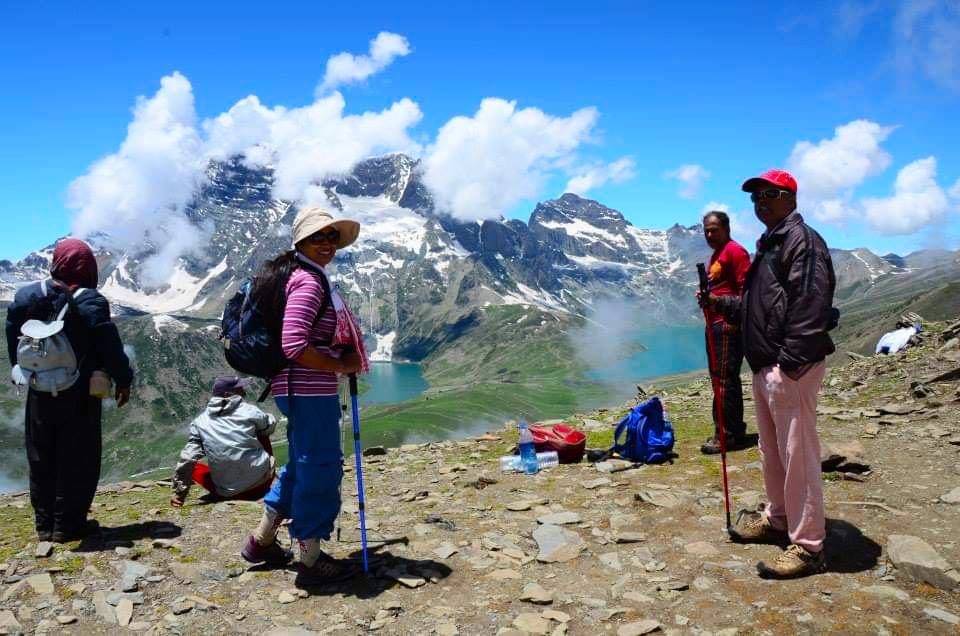
Waking up in this part of the Himalayan region is an adventure in itself and today is gonna be an epic day of the trek. Getting to Zojiball top from the Satsar campsite will take up to 3 – 4 hours which starts with a gradual ascent and descends with a steep ascent. The 40 percent of trek terrain is tricky and needs a little bit more push. Going through boulder walk and gaining altitude through the rough rocky mountain ridges. Going through zigzag routes over ridges will take you to the summit. The view is mesmerizing from the summit of the Zojiball, a mind-blowing view of two alpine lakes Nundkhol and Gangabal Lake in the lap of Mount Harmukh 5146 m ASL.
Once you are on the top Zojiball, the trekkers will have the chance to spot one among 8000 m mountain peaks of the world which is Nangaparbat 8126 m ASL using Binoculars. After taking a rest at the top and enjoying 360-degree views of the surrounding landscape it time for a steep descend of 50 minutes with a gradual descent of 30 minutes. Our campsite for tonight will be on the banks of Gangabal Lake with a giant mountain in the front. The temperature remains around 7 degrees Celcius (44 degrees Fahrenheit ). The campsite provides options for a campfire in good weather conditions, it is not uncommon to rain in the Valley of Harmukh during the late evening. We are at an elevation of 3500 meters and camping next to the lakes provides a fantastic camping experience with the real wilderness of the Himalayas.
Day 7: Harmukh Valley (Gangabal Lakes) to Naranag.
Kashmir Great Lakes Trek provides a lifetime adventure experience with picturizing views of Valleys, mountain passes, alpine lakes, cascading waterfalls with exotic wildflower beds. Kashmir Great Lakes but it does have great history too. In 1856 by members of the Great Trigonometric Survey led by Thomas Montgomerie, Mt. Harmukh was climbed for the first time. Montgomerie and other British Climbers made the first survey of the Karakoram mountain range from the summit of this mountain. The climbers sketched the two most prominent peaks, labeling them K1 (Masherbrum) and K2 about 130 miles ( 210 km) to the north of Mt. Harmukh. The surroundings mountains had been part of early climbing expeditions even when Tenzing Norgay wasn’t born. During this period of time, advanced mountaineering was just about conquering 4000 and 5000 m peaks.
Descending through the slopes of Mt.Harmukh towards Trundkhol meadow is the easiest part of the whole trek. The meadow of Trundkhol is pasturing mountain land for nearby Gujjar tribes and Shepherds. A number of gypsy houses and a Hut of the Department of Forest Protection will pass through the trek. Facing the Amry Camp while getting to the end of the meadow where we need to provide our identity information. Right after the Amry camp, we will enter the tree line at the elevation of 2950 m. For the next 40 minutes, the trekking route is moderate normal decent and provides a broad view of alpine valleys and glaciers. There are a number of small waterfalls on the route which could be used as a drinking water resource. The Gangabal route remains busy with gypsies grazing their cattle and transporting their needs on horses. The route makes turn through the forest and takes you to a small meadow which is actually Budhseri top. At this mountain spot, a Tea stall is set up during the summers where Maggie, Tea/Coffee, and Snacks are available.
FAQ's of the Trek.
1. what is the best time for kashmir great lakes trek.
The best time to do Kashmir great lakes trek is from July to the end of September . During this time, Kashmir Great Lakes Trek provides a lifetime adventure experience. The trekkers will able to explore picturizing views of Valleys, mountain passes, alpine lakes, glaciers, meadows, and cascading waterfalls with exotic wildflower beds. The route of Kashmir’s great lakes trek remains under the large scale of snow till mid of June.
Basically the best time to do trekking in Kashmir is from 15 May onwards but for the Great lakes trek, the perfect time is July to the end of Sep. During the month of June, the great lakes trekking trail is partially covered with snow, and the view is much different when compared to the remaining summertime. The trek can be performed during June also but needs crampons and some previous experience of high altitude trekking.
2. Can we do Kashmir Great Lakes in June?
The mountaineers and frequent high altitude trekkers can do this trek in June also. When it comes to nature lovers and adventure enthusiasts the best time to explore this landscape is July to Sep. During the month of October, the meadows of Kashmir great lakes trek turn brownish and the temperature also decreases. During winters everything changes to magical white icing but only peak summertime is meant to witness the miracles of nature. We, the team of Himalayan Bird operate treks and adventure tours in Kashmir and Ladakh throughout the year from more than a decade. We operate private treks also got fixed departure dates for all short and multi-day treks in Kashmir and Ladakh.
3. How difficult is Kashmir Great Lakes Trek?
The Great Lakes trek is a moderate difficult trek and on every Himalayan trek mental and physical strength is needed. If workout is already in your schedule that will surely help you to remain fit during the trek. Beginners and experienced trekkers must add walking plus running for 6 to10 km a day in your schedule. On an average trekkers will cover 6 to 7 km during this trek. The route of the trek is touching the valleys, passes and vast meadows with scenic view of mountains. The route is located in between the elevation of 3500 to 4000 m above sea level. Great lakes trek is an awesome lifetime trekking experience in the Himalayas of Kashmir. The trek can be too difficult for those who are totally new to trekking and not physically prepared.
Getting to Naranag - End of the Trek
The last part of the trek to Naranag is just a gradual descent of 10 Km. The zigzag route with steep descent over the small ridges of Harmukh Mountain. Mobile network coverage can be found at this point of the trek. The trail is surrounded by trees (Alder, Birch, and Deodar) on all sides. This part of Kashmir’s great lakes trek is a living habitat for a number of Himalayan birds and wild animals. The and Himalayan Monal, Himalayan snowcock (Tetraogallus Himalayensis), Snow partridge (Lewa), and snow pigeons are found in this region. Wangath river which originates from the Gangabal Lake and nearby Glaciers produces a melodious sound that makes the walk joyful. Due to the steep descent and roughness of the route the knees and toes get a lot of stress. Finally, a mountain village Naranag could be seen at an elevation of 2450 m ASL. The villagers earn their livelihood during summers by carrying loads of trekkers on their mules. Staying overnight in the guesthouses and relax with delicious food and traditional music ends the adventure. The trekkers will be transferred to the Airport or Srinagar on the next day. Enjoy free Dal Lake sightseeing before your departure to home.
Terms And Conditions for KGL Trek
* cancellation policy.
- Cancellation of any expedition/trek/tour must be notified immediately by writing an email to [email protected] or [email protected]. The cancellation of the trek will take place only after receiving a cancellation mail from your end.
- For any cancellation requested 40 days prior to the first day of any expedition/trek/tour, the full amount will be refunded with 10% of the amount deducted as a processing fee.
- For any cancellation requested between 40 to 30 days prior to the first day of expedition/trek/tour, only 50% of the amount will be refunded without any processing fee deduction.
- If cancellation is requested 30 days prior to the first day of expedition/trek/tour, there will be no refund.
- The rates/fees for the trek once decided will remain the same; however, if the group size is decreased from the client end, the trek fees may vary.
- In case of any untoward situation like a natural disaster, national emergency, terrorist activity, adverse weather conditions, or any other unforeseen situations, the refund may or may not be entertained which will solely be upon Himalayan Bird to decide.
* Medical Fitness for Great Lakes Trek
- Trekkers must get a recommendation from a registered medical officer/institute; getting a medical certificate is a must before embarking on an expedition/trekking. If you suffer from severe lung/heart/muscle disorders or any disease that can turn fatal, you are advised not to take any expedition/trekking with us.
- In case you lack the required fitness, or are suffering from diseases that have the potential of becoming fatal in the mountains/ high altitude, Himalayan Bird reserves the right to bar your participation from any expedition/trekking without any refund/compensation.
* Travel Insurance
- Trekkers/Guests are advised to have travel insurance cover. Our prices/fees don’t cover insurance or any other travel cover. Your travel insurance must cover accidents, injury, illness, and death medical expenses including any related to pre-existing medical conditions, emergency repatriation including helicopter rescue and air ambulance where applicable, and personal liability.
* Promotional Material And Identity Proof
- Himalayanbird.com reserves the right to take photographs/videos of participants and use them for any marketing/promotional activity. Any objection should be sent in writing before the commencement of any expedition/trek with us.
- Please carry valid Identity Proof. A valid passport and visa for all the tourists from outside India, and for Indians a valid identity proof preferably Aadhaar Card.
Kashmir Great Lakes Trek Operator/Guide
We are based in Srinagar, Kashmir and specified for Adventure and Eco Tourism.
Chandpora, Harwan Rd, Srinagar, Jammu and Kashmir 191123
If you got any questions? Talk To Your Trek Coordinator..
+91-8899210442
Get awesome deals by writing us an Email.
get social:
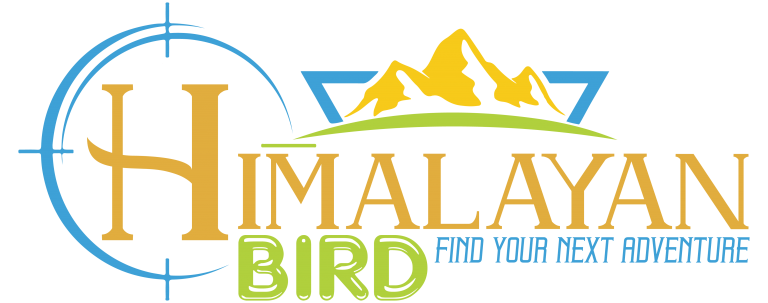
Immerse yourself in the lush landscapes, pristine lakes, and majestic peaks that define this region.
- Kashmir Great Lakes
- Tarsar Marsar Trek
- Gangabal Lakes Trek
- Short Treks in Kashmir
- Tulian Lake Trek
- Marchoi (Winter Trek)
QUICK lINKS
- Enquire Now
- Privacy Policy
Get In Touch
Chandpora, Harwan, Srinagar, Kashmir(UT), India
- Email: [email protected]
- Phone: +91-8899210442
- Hours: Mon-Sat 8:00AM - 9:00PM
© 2024 All Rights Reserved.
Embark on the extraordinary
Unveil the magic of Kashmir through our exclusive trekking offers
- Weekend +91 87 6262 3333
- Himalayan +91 9886 444 809
- International +91 84968 85968
- [email protected]
- One Day Treks
- Two Day Treks
- Himalayan Treks
- International Treks
- Private Treks
- Group Adventures
![Kashmir Great Lakes Trek [Premium] - Tour Kashmir Great Lakes Trek [Premium] - Tour](https://vl-prod-static.b-cdn.net/system/images/000/414/735/bed5a46f080cd0e89659ed19c0c6d7aa/x600gt/TrekNomads_Website_Banner__13_.png?1684931452)
- Kashmir Great Lakes Trek [Premium]
- Secure & Easy Booking
- Best Price Guaranteed
- 1000+ Happy Customers
Secure your registration with just a 20% deposit today and pay the remainder 30 days before the departure date. Your journey awaits! ✈️
Kashmir trekking is undoubtedly one of the most heavenly places on Earth. Kashmir hiking is on the wish list of most trekkers. Trekking in Kashmir involves beautiful breathtaking valleys and mountains that exude serenity, Kashmir is easily a trekker's paradise. Kashmir's altitude is an average of 1,850 metres (6,070 ft) above sea-level . is With pristine high-altitude lakes such as - Gadasar, Satsar, Nundkol, Gangbal, Vishansar and Krishnasar, the trail that explores these lakes is one the most sought after treks in the region.
The trek exudes beauty like no other and validates the statement - "Kashmir is heaven on Earth". The Kashmir Great Lakes trail is meandering and takes you to superbly diverse terrains that will be etched in your memories forever. The trail was closed to civilians until a couple of years and was later opened up as a boon to the trekking community who could see the real beauty of Kashmir through its valleys and mountains.
The High-Altitude Alpine Lakes in Kashmir Great Lakes Trek
On the Kashmir Great Lakes trek, you get to explore and camp 5 high-altitude lakes in various mesmerizing valleys. with emerald green waters, these untouched water bodies look straight out of HD wallpaper. These lakes are surrounded and guarded by tall mountains and are extremely scenic. One of the less explored lakes in this category is Gadsar Lake. Not only does it require a hard trek, but it is also less visited by tourists. Gadsar is fed by a gigantic glacier near it and the trail will remind you of the Valley of Flowers trek . The meadowed grasslands and the wildflowers that grow here will make you feel like you're in the middle of a movie set!
You get a glimpse of all 5 lakes from Gadsar pass on the Kashmir Great Lakes trek
While the Gadsar lake is immensely beautiful, the Gadsar pass is incredibly magnificent in itself. The higher you climb, the better the view gets. Right from the twin lakes - Vishansar & Kishansar, you can also get a glimpse of the three Gadsar lakes which would be located towards the right. If you have a good camera, a panoramic picture of this view will be worth millions! With lush green meadows sprawling out near the crystal blue waters and snow-clad mountains in the backdrop, this sight will make you fall in love with nature all over again. Another surprising element here is that the Gadsar pass will also show you a glimpse of many smaller lakes on the way. Don't forget to count the lakes you've come across here!
Breathtaking drive from Srinagar to Sonmarg/Sitkari
The base camp for the Kashmir Great Lakes Trek is an enthralling hill station called Sitkari near Sonmarg. According to Kashmir Great Lakes trek map, post arrival in Srinagar, you will be driving down to Sonmarg and then to Sitkari. The drive to Sitkari will give you views of scattered forests, meandering streams, extremely treacherous roads, and incredibly majestic snow-clad mountains.
Visit Zoji La Pass & Zero Point
On your day of arrival at Sitkari, to help you acclimatize to higher altitudes, you will be driven to Zero points near Kargil and will get to travel through the super famous high mountain pass - Zoji La Pass for sightseeing.
Trekking to the treeline from Gangbal
Another promising aspect of this trek is the descent from Gangbal to the tree line. This picture-perfect hike will take your breath away and leave you awed. While you would leave behind the view of Harmukh Peak which is engulfed by the humongous glacier near the Nundkol Lake. you will begin to realize that the beauty you see in Kashmir is something you would never find elsewhere.
Gangbal - The Ganges of Kashmir Great Lakes trek
Here's an interesting fact: The name Gangbal was derived from the river Ganges. The lake is extremely sacred to Kashmiri Pandits and is also considered to be a holy pilgrimage site. They take part in what is called a Gangbal-Harmukh yatra, the annual pilgrimage to the 14,500 feet-high Harmukh-Gangbal lake shrine. It is also believed that Lord Shiva resided near the Gangbal lake which makes it religiously significant.
Cancellation Policy:
With the changing travel advisories and newer regulations coming into the picture, we understand that deciding and booking a trek can get tricky. We have relaxed our cancellation policy, read our new terms and conditions for cancellation here
- Boat-house stay at Nigeen/Dal Lake
- Drive from Srinagar to Sonmarg
- Visit Zoji La pass and Zero Point
- Camping on the beautiful meadows in Kashmir
- Witness the great lakes of Kashmir.
- 3-star hotel accommodation in Srinagar
- Porter for your extra luggage during the trek
You need more information?
Day 1: arrive in srinagar for the kashmir great lakes trek.
Altitude: 5,200 ft (1,585 m) Accommodation: Houseboat Meals included: Dinner at the boathouse
Srinagar elevation is 5,200 ft (1,585 m). On the day of arrival, we start the routine of briefing the group and introducing you to fellow group members and take you through the itinerary and plan for the next 10 days. Post this, you will check in to the houseboat and relax for the day. You can check out Kashmir great lakes trek photos in this blog.
Day 2: Drive from Srinagar to Sitkari/Sonamarg
Travel Distance: 87 km Time Taken: 2-3 hr Altitude: 9,186 ft (2,800 m) Accommodation: Camp stay Meals Included: Breakfast at the boathouse & lunch, tea, and dinner at the campsite
According to Kashmir great lakes trek map, on day 2, we start our journey towards Sitkari. This will primarily help you acclimatize to the higher altitude we will be attaining in the next couple of days. The drive from Srinagar to Sonmarg and then to Sitkari is extremely scenic and will present you with a lot of photo opportunities. You will come across grasslands, scattered forests and snow-covered mountains. As an added, we will also take you to Zero Point and Zoji La Pass for sightseeing. Post the sightseeing, you will return back to our campsite at Sitkari and rest for the rest of the day by the lakeside.
Day 3: Trek from Sitkari village to Nichnai
Trek Distance: 13 km Time Taken: 4-5 hr Altitude: 11,500 ft (3,505 m) Accommodation: Camp stay Meals Included: Breakfast, lunch, tea & snacks and dinner
You start your day early today and start trekking towards the Shokdhari campsite. This trail is lined with maple & pine trees and is mesmerizingly beautiful during fall & autumn. Although, Kashmir great lakes trek best time is between July to September. You will get glimpses of Sonmarg and various glaciers en route from the campsite. You will descend into the Nichani grazing ground. The trail we take to descend will be lined with Silver Birch making. You will stay the night at Nichani campsite.
To check out Kashmir great lakes trek cost and other Kashmir trekking packages, visit our website or reach out to us today!
Day 4: Trek from Nichnai to the Vishansar Lake
Trek Distance: 15 km Time Taken: 6-7 hr Altitude: 12,172 ft (3,710 m) Accommodation: Camp stay Meals Included: Breakfast, Lunch, Tea & Snacks, Dinner
The trek to Vishnasar Lake is a steep ascent where you will have to cross the Nichani pass which stands at a gruelling altitude of 4,080 m. You descend towards Vishansar and Kishansar lakes and into the Vishansar campsite.
You can visit the Vishansar lake which is situated about 1 Km from the campsite. Nothing that we say or write can prepare you for the beauty of the alpine lakes in Kashmir. Surrounded by mountains and being hard to access, the waters of the lake are crystal clear and change colour as the day proceeds. You are guaranteed to start feeling rejuvenated just sitting by the lake and listening to the lapping sounds of the water and soaking in the scenic beauty.
Day 5: Trek from Vishansar Lake to Gadsar Lake
Trek Distance: 13 km Time Taken: 5-6 hr Altitude: 13,800 ft (4,200 m) Accommodation: Camp stay Meals Included: Breakfast, lunch, tea and snacks, dinner
Today you trek to attain another height of 250 m from the Vishansar Lake to see the Kishansar Lake. This lake is situated about 1-2 km from the Vishansar Lake. While these alpine lakes in Kashmir are situated quite close to each other, they can only be seen as twin lakes from Gadsar Pass.
Gadsar Pass is located at an altitude of 4,191 m and the trek up to Gadsar Lake trek is quite challenging and will put a lot of pressure on your back and legs. Having said that, the breathtaking views from the pass will compensate for the effort you've put in. Upon reaching the pass, you will start descending into flat meadows, that are entirely covered by wildflowers to finally reach Gadsar Lake. Considering the high altitude, Kashmir great lakes trek temperature at this height will be pretty low.
Day 6: Trek from Gadsar lake to Mengandob/Satsar lake
Trek Distance: 12km Time Taken: 5-7 hr Altitude: 11,810 ft (3,600 m) Accommodation: Camp stay Meals Included: Breakfast, lunch, tea & snacks and dinner
You start your day early today and start the trek with a steep ascent to enter into the flatlands of Mengandob. You continue trekking ahead crossing an army camp to Satsar lakes. Interestingly, the Satsar Lakes are a collection of 7 lakes that are in a cascade formation. These lakes are primarily fed by the melting snow of the mountains and end up dry in summer and autumn.
Day 7: Trek from Satsar Lakes to Gangbal twin lakes
Trek Distance: 10km Trek Time: 6 hr Altitude: 11,730 ft (3,575 m) Accommodation: Camp stay Meals Included: Breakfast, lunch, tea & snacks and dinner
Today's trek to the alpine lakes in Kashmir - the Gangbal Lake will test you both physically and mentally. To reach Gangbal Lake, you start the trek from Satsar Lake campsite and cross rocky boulder terrain, cross multiple ridges, climb mountains and break at a ridge at 3,570 m. You break here for a while and continue trekking up to reach the final ridge located at 3,000 m. You can get a great view of Gangbal and Nundkol lakes from here and they will look a lot like twin lakes. Post reaching the ridge, you will start your descent which will be rather steep into green meadows that will eventually lead you to Nundkol and Gangbal lakes.
Day 8: Trek from Gangbal twin lakes to Naranag
Trek Distance: 11 km Trek Time: 6-7 hr Altitude: 6,982 ft (2,128 m) Accommodation: 3/4 Star hotel in Srinagar Meals Included: Breakfast, lunch, tea, snacks, and dinner
On the final day of the trek, we trek through a tree line, meadows and enter a pine forest cover. The forest line extends for up to 6-7 Kms post which we descend into Narang Village. You relax for a while at Narang Village and then travel back to Srinagar. You check into a hotel, freshen up and rest for the day.
Day 9: End of Kashmir Trek. Departure from Srinagar
Altitude: 5,200 ft (1,585 m) Accommodation: Hotel Meals included: Breakfast at the campsite
Today, we wrap up this wonderful experience of trekking in Kashmir and head back to Srinagar. You wake up leisurely, have breakfast, check out and start heading to the airport or choose to stay back in Srinagar (at an added cost).
Important things to note for the Kashmir great lakes trek:
- Bring 4 copies of your ID proof and 4 photographs on the KGL trek
- Cellular network is available only on the post-paid number
- Consumption of alcohol and smoking is strictly prohibited
- If you don't want to carry your backpack so you can hire a porter, but you have to keep us informed about this in advance and you have to pay INR 300 to 350 (subject to change) extra per day per bag.
- We strongly suggest that you should carry your own backpack and the weight of the backpack should not be more than 10 Kg maximum.
- If the Minimum group strength is not met, we have the right to cancel the departure. Should you wish to customize the trip as per your preferred date, separate charges will apply.
- Itineraries are based on information available at the time of planning and are subject to change.
- TrekNomads reserves the right to change expedition dates or itineraries as conditions warrant.
Risk and Liability Kashmir great lakes trek:
We will endeavour to make your program smooth and as pleasant as possible. However, the entire course of trekking depends on the ranges of the mighty mountains, physical health, and environmental conditions. Therefore, TrekNomads shall not be responsible for any changes in the itineraries due to unavoidable circumstances and natural disasters such as landslides, road blockage, flood, snowing, cancellation of flight and delay, or any type of sickness including altitude sickness.
Fitness Criteria for Kashmir great lakes trek:
This trek requires a good level of fitness.
To register for this trek you are required to complete a 5K run in under 35 minutes. Once you do register, please share the run details with our Trek Captain.
If you're not already following a fitness regime, you would need to follow the regime that will be shared with you. The training routine is spread over four months and you would be expected to work out at least 4 times a week. The regime is designed to help you climb smarter even in higher altitudes. The regime consists of a good combination of exercises that works on all parts of your body including - Upper Body, Core, Endurance, Lower Body, Shoulder strength and streamlining your breathing pattern. When followed religiously, you can rest assured that you will be ready for the trek. Not only does this regime help you with the trek, but it will also help you inculcate a sense of fitness in your day-to-day life.
Do’s and Don’ts for the Kashmir great lakes trek:
- We believe in leaving the mountains in a better condition, which is why we follow a no-litter policy on our treks. Each trekker will have to bring back the waste that is created during the trek.
- Trekking is best enjoyed when you’ve worn comfortable clothes. Try and avoid wearing Jeans, bright colors and heavy apparel as much as possible.
- A lighter backpack always helps you have a better trek, try and carry just as much as needed.
- Always be in sight of your trek lead, if you feel the need to stop for any reason at all, please keep the trek lead informed.
- If you do come across any reptiles, animals or even insects during the trek, please keep your calm and let it patiently pass by. Any kind of noise and panic will scare them as well.
- Do not venture out into the forest/waterfalls on your own as it may be dangerous.
- Trekking is a good adventure, having said that, it is our primary responsibility to take good care of ourselves and be compassionate towards fellow trekkers
- If, at any point, during the trek, you feel uneasy or unwell, please inform the trek lead immediately
- Tune in to the sounds of nature while on a trek and avoid carrying speakers or playing music during the course of the trek
- To help you enjoy the trek to the fullest, we avoid smoking and consumption of alcohol, and other intoxicants during the course of the trek.
What is included in the tour
- Airport Pick up and Drop Off by NAC vehicle
- 1 Night stay on a deluxe house-boat at Nigeen/Dal Lake on the day of arrival (Double/Triple sharing basis)
- 1 Night stay at a three/four-star hotel at Srinagar post return from the trek (Double/Triple sharing basis)
- 6 Nights Camp stay along the trail during the trek (Double/triple sharing basis)
- Meals included: Breakfast + Dinner at Srinagar & Breakfast+ Lunch+ Evening Snacks + Dinner on all camping days
- Standard vegetarian food for breakfast, lunch, evening snacks and dinner during trekking days
- Hot water for drinking during trekking days
- Transportation as per the itinerary by NAC Vehicle, Srinagar to Sitkari/Sonamarg & Naranag to Srinagar
- Transportation to Zero Point crossing Zojila Pass from Sonamarg for acclimatisation/sightseeing
- Porter for 1 - 60 ltr Bag (Max 10 kgs)
- Personal Accident, Travel & Medical Insurance
- Trek equipment: Sleeping bags, Mattresses, Utensils, Ropes
- Tents: Trekkers tent (twin/triple sharing), Kitchen & Dining tent, Toilet tent
- 1 Mountaineering qualified & professional trek Leader
- Local Guide (Number of guides depending on the group size)
- 1 High Altitude chef & support staff
- Porters for carrying common equipment (like rations/tents/utensils/groceries)
- Basic First Aid Kit with a portable oxygen cylinder.
- TrekNomads Fee, Trek Captain support and expertise
- ~15% discount on Fast&Up products
- 15% discount on BMore products
- Personalized Dri-Fit T-shirt and Cap
- TrekNomads goodies
What is NOT included in the tour
- Travel to Srinagar and back
- Meals, tea, coffee, mineral water, soft drinks, etc that are not mentioned in the inclusions
- Medical, Emergency Rescue and Evacuation cost
- Personal trekking gear
- Tips for guide, chef, porter, etc
- Local sightseeing, entrance fee, camera fee, etc
- Any other expenses incurred apart from inclusions
- All personal, medical, evacuation and emergency expenses like extra day stay out of itinerary, helicopter services and vehicle charges due to delays, landslides, evacuation
- Expenses incurred for guide or porter during extra days stay, transport, flight, helicopter service, etc (divided amongst the group which utilises the services of guides/porters on extra days)
Altitude Map:
- Srinagar: 5,200 ft (1,585 m)
- Sitkari/Sonamarg: 9,186 ft (2,800 m)
- Nichnai: 11,500 ft (3,505 m)
- Vishansar: 12,172 ft (3,710 m)
- Gadsar Pass: 13,800 ft (4,200 m)
- Satsar: 11,810 ft (3,600 m)
- Gangbal: 11,730 ft (3,575 m)
- Naranag: 6,982 ft (2,128 m)
Other Details:
- Trek Gradient: Moderate
- Trek Distance: 60+ Km
- Assembling Point: Srinagar
- Trek Duration: 40+ hours
- Average Temperature: 25°C to 5°C
- Best Months to trek: July, August & Mid-September
Loading the map...
- CONNECT WITH US
- TREKNICAL DETAILS

Recognitions

OTHER POPULAR TOURS
![Valley of Flowers Trek and Hemkund Sahib [Premium] - Tour Valley of Flowers Trek and Hemkund Sahib [Premium] - Tour](https://vl-prod-static.b-cdn.net/system/images/000/326/464/f004eeac1383bb5aea2b18eb9400c343/x400gt/VOF_Banner.png?1684915067)
Valley of Flowers Trek and Hemkund Sahib [Premium]
![Everest Base Camp Trek [Premium] - Tour Everest Base Camp Trek [Premium] - Tour](https://vl-prod-static.b-cdn.net/system/images/000/352/493/2f06596a5543585d0f67bc5c9eabe2dd/x400gt/Everest_Base_Camp.png?1684317973)
Everest Base Camp Trek [Premium]
![Chadar Frozen River Trek [Premium] - Tour Chadar Frozen River Trek [Premium] - Tour](https://vl-prod-static.b-cdn.net/system/images/000/368/624/b01f657970710dd69fd60e5a8a5fe331/x400gt/30897158504_d919736d36_o.jpg?1688435753)
Chadar Frozen River Trek [Premium]
OTHER ACTIVITIES

- Testimonials
- Customized Private Treks
- Corporate Outings
- Cancellation Policy
Online booking system by Vacation Labs | © 2024 TrekNomads
Kashmir Great Lakes Trek
Available batches, august 2024, september 2024.
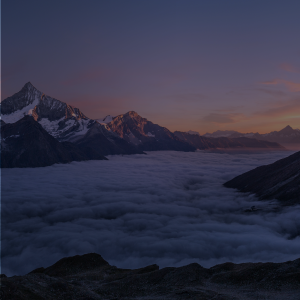
Brief description
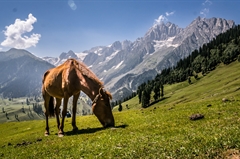
Brief Itinerary
Detailed itinerary.
Arrival at Sonamarg (2, 730 M)
Distance: 81 kms (Srinagar to Sonamarg)
Duration: 3 hours
Sonamarg, which translates to Meadow of Gold, is the starting point of the KGL trek. If you have opted for transport with Bikat Adventures, please ensure you board the vehicle from Dal Gate No. 1 in Srinagar latest by 12 PM. If you are traveling on your own, try to reach Sonamarg by 3-4 PM.
Although you have to report at the base camp only by 3 P.M, we recommend you come here early to explore the region. Home to some renowned peaks and glaciers of the Kashmir National Park, one can spot the Sirbal Peak, Kolahoi Peak, Amarnath Peak and Machoi Peak alongside the Machoi Glacier from here.
The drive from Srinagar to Sonamarg, although short, is a pleasant one to undertake. Once you are out of the city, there is barely any traffic and charming countryside vistas replace the cityscapes. About 30 kilometres into the drive, snow-capped mountains take over the horizon and sprawling, grassy meadows cover the lands on either side of the road as far as the eyes can see. The views enroute to Sonamarg are well worth a day trip from Srinagar!
The stay will be arranged in camps for the day. We will have a Team introduction after evening tea followed by an early dinner.
Sonamarg (2, 730 M) to Nichnai (3, 500 M) (Click to View GPS data)
Distance: 10 kms
Duration: 6 hours
We begin our trek at 9 am today from Shitkadi. The trail is a fair mix of ascent and descent. The gradient is moderate and plenty of water sources will be available for refilling water bottles along the way.
We begin by following a vehicle track that heads out of the main road of Sonamarg. This track descends all the way down to the Sind River from where the trail head for the Kashmir Great Lakes Trek begins.
The trekking trail from the trail head quickly ascends up. About ten minutes into the trek, the trail unanticipatedly enters a patch of rolling, green meadows overlooking the town of Sonamarg. This marks the end of civilization as we know it and the beginning of the beauty that is the Kashmir Great Lakes Trek!
Take a couple of moments to soak in the view here. The waters of the Sindh river glistening in the early morning sunlight as she makes her way through this tiny town hugged snugly on either side by gorgeous mountains is a sight to behold.
This view only gets fuller and more resplendent as you ascend further up the trail. It takes 30 minutes to the reach the top of the meadow. Maple, pine and silver birch trees dot the landscape here. From here onwards, it is an undulating climb across vibrant meadows marked by clear brooks and streams all the way up to Nichnai, your campsite for the day!
Nichnai (3,505 M) to Vishansar Lake (3,658 M) via Nichnai Pass (4,150 M) (Click to View GPS data)
Distance: 11 kms
We will be breaking camp early for the day and starting at 8 a.m. While the gradient is moderate, be prepared for long hours of walking. The scenery shifts winningly through the day ranging from a leisurely walk through expansive meadows, ambling along the banks of a river to a moderate ascent up the Nichnai pass followed by a sharp descent from the top of the pass.
We begin by walking along the river running through the Nichnai Campsite. On the way, look for feasible spots where you can cross the river. The Nichnai Pass is located at a distance on the other side of the river.
Once you reach the other side, continue walking along the river bank in the direction of the Pass (which can be spotted from the campsite itself). The trail ascends steadily for the next hour all the way to the top of the ridgeline that was visible from the meadow below. This ridgeline is not the Pass however. The actual pass begins after a couple of bends along the ridge.
The Nichnai Pass is a striking passageway set at 4, 150 M with snow clad mountains lining its left. There are no peaks on its right but the land rises there as well giving it the illusion of walking through a tunnel.
Once you reach the top of the Pass, it is a rapid and steep descent on rocky terrain to the meadows below. You will notice that colourful little flowers dot the grass here. A new river now flows from the Pass into this region. Multiple, narrow trails run into the horizon as far as the eyes can see.
Take one of these trails and continue walking ahead. Snow-clad mountains rise against the skyline on your left while your right hand side contains stretches of barren and rugged mountain faces. The sharp contrast in scenery only exaggerated further by the dewiness of the grass and flowers at your feet makes this one of loveliest meadow walk experiences on the Kashmir Great Lakes Trek.
Our campsite for the day is located two hours away beyond yet another river crossing and not far from an alpine lake with startlingly blue waters that is bound to have you hooked right from the moment you lay eyes on it. This is the all famous Vishansar Lake with its twin, Kishansar Lake, not far behind.
Buffer Day (Subjected to Weather Condition)
If the weather condition is bad, then we will use the buffer day which can be used to explore the lakes & acclimatize. The decision to use the buffer will solely be taken by the trek leader.
Vishansar Lake (3, 658 M) to Gadsar Lake (3, 810 M) via Gadsar Pass (4, 206 M) (Click to View GPS data)
Duration: 6 hours
Today’s trek is a steep two hour ascent followed by a steep two hour descent and then a gentle walk through the meadows. There will be ample water sources along the way to refill your water bottles.
Our trail begins with climbing a pencil thin ridge running along the mountain side near Kishansar lake. It takes about an hour and a half to reach the top of this ridge. About midway through your ascent, the mountains unfurl an arresting view of the Kishansar and Vishansar lakes together!
This view lasts until you reach the top of the ridge. What follows is an hour of steep descent after which the trail opens up into a bright valley with mountain ranges guarding it on either side.
The meadows of this valley are by far one of the most colorful you will be encountering on the trek, thanks to the bright red, yellow, purple and blue flowers popping out of the green grass. It makes you want to flop down and sneak in a nap after the steep climb up the pass. The Gadsar Lake lies beyond this meadow.
With piercing blue waters, the Gadsar lake is the most pristine of the seven alpine lakes primarily because it is the least visited. Quite a few make weekend trips from Sonamarg to Vishansar and Kishansar, more so make the trip on the other side of the trail; from Naranag to Gangabal. Gadsar, however remains untouched because of its location at the highest point of the trek which makes its accessibility tough.
Our campsite is one and a half hours away from the Gadsar lake, close to an Indian Army camp where all of our original ID cards will be collected, checked and recorded.
Gadsar Lake (3, 810 M) to Satsar Lake (3, 658 M) (Click to View GPS data)
Distance: 12 kms
The gradient for the day is mostly moderate barring the first one and half hours of steep ascent. Post that, it is a level walk all the way up to the next campsite.
The landscape on today’s trail stands in sharp contrast to the river valleys we have been trekking through till now. The terrain is rugged, desolate and captivating in its isolation. Meadows are scant and are marked by scattered patches of white flowers. Boulders and rocky terrain dominate the landscape with an occasional brook cutting through them.
We will be crossing an army camp today as well where our original ID cards will be collected, checked and recorded before letting us cross. Rolling grasslands once again take over the terrain beyond the army camp. Ten minutes away lay the first of the Satsar Lakes. Satsar is actually a group of seven inter-connected lakes situated in a narrow alpine valley stretching north to south. The lakes drain out into the Wangath Nallah which is a tributary of the Sindh.
Big and picturesque in its greenery and backdrop of the mountains, we will be setting up camp here for the day.
Satsar Lake (3, 658 M) to Gangabal Lake (3, 505 M) (Click to View GPS data)
Distance: 13 kms
Duration: 7 hours
We begin by taking the trail heading out of the Satsar Campsite. This section of the trail is exciting primarily because it is dominated by boulders. Most trekkers, we have noticed, are comfortable getting down on all fours when hopping from one boulder to the next. As fun as it may seem, do watch out for loose rocks that can make you lose your balance.
Beyond these boulders lie the largest and the last of the Satsar Lakes. After this, the trail descends for a good half an hour until we are confronted by ridge lines running across the mountains. It is time to gain altitude again. Be prepared for a steep ascent for the next three and a half hours. The terrain, you will notice, turns distinctly rocky and barren the farther we climb from the base.
Perhaps, it is to make up for the starkness of the landscape that KGL treats you with one of the most theatrical views of the trek right on top of this ridge- a vertigo inducing scene of the Gangabal and Nandakol lakes nestled snugly in the valley. Mist and fog playfully flit in and out of the scene hiding and revealing the twin lakes impelling you to take a break to watch the spectacle unfolding in front of you.
We will be setting up camp on the banks of the Gangabal lake. As is evident from the Pass, it is a very long descent from the top of the ridge to the campsite.
Unlike the other campsites, you will notice more trekkers and tents here. Gangabal and Nandakol are famous for trout fishing in the region. The Nandakol lake is bewitching in its setting. A jagged glacier clinging to slopes of the Harmukh Peak feeds the lake at its base. The play of light and clouds on the glacier are fascinating to watch!
Once you set up camp at Nandakol, take some time out to explore the Gangabal lake.
It is a short walk and a river crossing away from the campsite. The Gangabal lake, you will notice, is far less crowded than Nandakol and more tranquil in its setting. The water is clear near the banks revealing colourful pebbles on the waterbed. A mountain sits right on top of it. Remnants of a glacier clinging to its base feed this lake. It is a long and pleasant walk along its banks.
Once you are done exploring, ensure you return to your campsites before it gets dark.
Gangabal Lake (3, 505 M) to Naranag (2, 271 M) (Click to View GPS data)
Watch your toes and knees on the trail today because, as you have guessed it, we will be descending to the Naranag road head which is where our trek comes to an end. The distance is long and the trail gets steep at the end.
From the Gangabal campsite walk along the ridgeline that runs downstream towards the trees. It takes about an hour to reach the treeline. Continue walking along its fringe. For the first 7 kms or so, you don’t really lose altitude. There are gentle ascents followed by flat walks on lush grassy meadows.
You also begin to notice the beginning of civilization on the way. A hut or two dot the landscape and makes you wonder what it would be like to live there. Once you cross the 7km mark, the trail begins descending sharply. The track is mostly muddy and runs under a cover of pine trees. One or two kilometres into the descent, Naranag appears in sight but it is still a long way to go.
Expect to reach Naranag by afternoon. Our vehicles to Srinagar will be waiting there. We should be in Srinagar by half past 6 in the evening. If you are planning to travel out of Srinagar the same day, ensure you book your transport that leaves the city post 9 to account for any delays on the way.
What's Included
- Veg/ Egg Meals during the trek - Starting evening snacks on Day 1 till Lunch on Day 8
- Forest Permits/Camping Charges/Permits, Trek Permit Fee/IMF Permission (Upto the amount charged for Indian nationals)
- Camping tents (Twin sharing), Temp rated sleeping bags, mattress
- Safety Equipment includes static rescue rope, seat harness, carabiners, pulleys
- Mountaineering course certified Trek Leader with First Aid certification & customized rescue course from NIM
- Experienced Local guide, cook, helpers
- Porters or mules for carrying common luggage
- Exhaustive First Aid kit including portable oxygen cylinder
What's Not Included
- Meals during road journeys
- Any kind of Insurance
- Any expense of personal nature
- Any expense not specified in the inclusion list
- Portage of personal backpack
- Transportation to and from Srinagar
Are you Eligible for this Adventure?
Max Altitude

BRS Level Required
Kashmir Great Lakes Trek is a level 5 adventure on the Bikat Rating Scale.
This makes it mandatory for you to have high-altitude experience of preferably multiple treks marked at level 5 on the BRS. The altitude, the terrain and the nature of the climb demand a certain level of skill and a need for you to be aware of how your body reacts to the various features of high altitude environment.
If you do not know what level of BRS trek would suit you best, worry not! Fill out this Form:

we will send you a progression chart to help you comfortably get out of your comfort zone in order to level up and ultimately reach your highest potential in the big, bad world of outdoor adventure.
Climbing up to an altitude of 4,206 M, the trail switches between ascents and descents on most days making it relatively easy to navigate. The only challenge lies in building endurance needed to tackle the long distances (10 kms or more) one needs to cover each day. The trek is 69 kms long and is an excellent choice for beginners looking to step up their trekking game in the Himalayas. We recommend this trail for experienced trekkers as well, not for the challenges but for the sheer beauty and extravagance it houses.
Prequisite Skills
The trek demands a few mountain skills:

fitness benchmark
If you can do the following, physically you are ready to take on this trek:
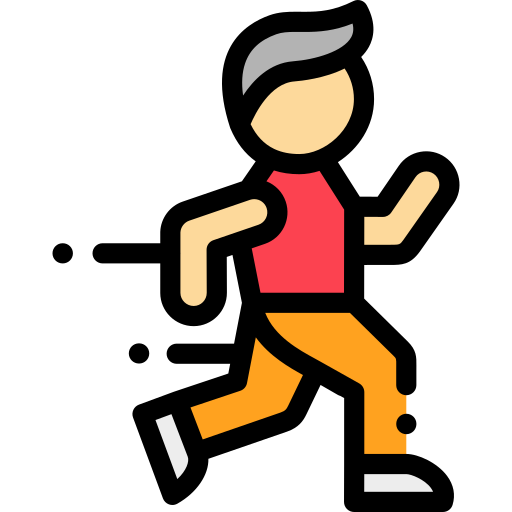
Packing List
This is a list of essential items for individuals doing the trek with Bikat Adventures. This list contains only those items which the participants are required to bring with them. The list excludes those items which are provided by Bikat Adventures on the trek. We have divided the items into five categories. All the items in the list are essential except for those marked as optional.
Trekking Gear
- Ruck sack bag with rain cover. Qty -1
- Day Pack Bag - Recommended for treks with summit day
- Head Torch with spare Batteries. Qty -1
- U V protection sunglasses. Qty -1 Here is how you can choose the best sunglasses for trekking.
- Water Bottles: 2 bottles of 1 liter each
- Non-skid, deep treaded, high-ankle trekking shoes Qty -1
- Pair of light weight Slipper/Sandals Qty -1
- Quick Dry Warm lower or Track Pants. Qty - 2
- Full sleeves T-shirts/ Sweatshirts. 1 for every 2 days of trekking
- Pair of thick woolen socks. 1 pair for every two days of trekking
- Thermal Body warmer Upper & Lower. Qty-1
- Undergarments. Qty - 1 for every day of trekking
- Warm jacket closed at wrist & neck .Qty-1
- Full sleeves sweater. Qty -1
- Rain wear ( Jacket & Pants ) . Qty-1
- Pair of waterproof, warm gloves. Qty-1
- Woolen cap. Qty-1
- Sun shielding Hat. Qty -1
- Personal toiletries kit (Small Towel, Toilet paper, paper soap, Bar soap, toothbrush, toothpaste, cold cream, etc.)
- Sun screen lotion small pack. Qty -1 Here is your Sun Protection 101 to stay safe in the bright sunny outdoors.
- Lip Balm small pack. Qty-1
- Small size, Light weight & Leak proof lunch box. Qty-1
- Plate. Qty- 1
- Spoon.Qty-1
- Tea/Coffee (plastic) Mug.Qty-1
Miscellaneous
- Camera (Optional)
- Carry your medicines in plenty in case you have any specific ailment. Consult your doctor before joining the trek.
- Dry fruits, Nuts, Chocolate bars (Optional)
Frequently Asked Questions
Eligibility, is this adventure good for me, what’s a good fitness benchmark for this adventure, what skills do i need to complete this adventure, what is the minimum and maximum age limit, about the activity, where is it located, what are some of its highlights, what are some of its challenges, what is the best season for this, what is the accommodation type, what is the temperature like here, is it technically challenging, connectivity, how do i reach the starting point, is there cellular network available throughout, where is the nearest atm, if i choose to travel to the base with you, what is the pick-up point, what time is the drop-off on the last day, what are the nearby attractions that i can explore, equipment & gear, what equipment is provided to us, what can i rent from you, where will i receive the rented items, where do i have to return the rented items, what gear do i need to bring, are there local shops to rent/buy equipment, facilities & additional services, can i offload my bag, can i leave any extra luggage i carry at the base of this adventure, what are the meals like, what are the washroom/ toilet facilities like, what should i do if i get my period on this adventure, what are the medical facilities available to me on this adventure, are there any electricity charging points on this adventure, mandatory documents, what documents do i need to carry, do i need insurance for this, do i need a permit for this, certification, do you provide a certificate of completion, when and how will i get the certificate of completion, international travel, will i need a visa, when should i apply for the visa, what kinds of insurance do i need to travel here, what is the specialty of this when compared to other mountain ranges, till which month can i make a booking for this, what is the qualification of the outdoor leader provided to us, how do you choose your outdoor leaders, is it safe for women, what is the ratio of outdoor leader to participants, what do you do in case of an emergency, what are the rescue options on this adventure, how do you choose your equipment, can i attempt this adventure if i have a specific medical condition, sustainability, what kind of camping do you practice on your outdoor adventures, why are you against fixed camping in the outdoors, how do you manage overcrowding on certain trails, what are some things to remember when using a dry toilet, why should i avoid wet wipes in the outdoors, where should i dispose of my sanitary waste if i am on my period, why should i carry my own utensils on an outdoor adventure, booking process, what happens after i make the payment, do you create a whatsapp group of participants before the start date of the activity, do i need to submit a medical certificate, do i need to submit an undertaking form.
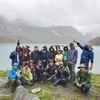
Small Group Size
Our batch sizes are capped at 15 for smaller treks with the trek leader and trekker ratio of 1:8. This ratio, in our years of experience, has proven to deliver the best trekking experience for individuals as well as groups. Capping the size of the group ensures individual attention to each trekker so that no signs of distress or need during the trek go unnoticed. It also helps to form a more cohesive cohort with better group energy which helps define the rhythm and pace of days on the trek. As you go higher up on the BRS scale, since the stakes are higher, expeditions have an even smaller group size with the ratio of expedition leader to climber set at 1:2.
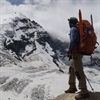
Qualified Trek Leaders
We follow a rigorous regime of hiring and training our experts in the field. Each trek leader is a certified mountaineer with years of experience in the field. In addition to their qualification, they also go through practical and situational training to tackle any and all kinds of sudden conditions that may present themselves on the ground. Being unpredictable is the core nature of the mountains but being ready for any circumstance as best as possible is a controllable asset that we try to nurture. Our field experts are also trained in basic medicine and first-aid response. Watch: Forerunners - The Making of A Trek Leader At Bikat Adventures
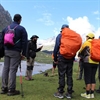
Guided Progression
Since Bikat Adventures is a learning-based organization, we help you climb up the ladder of difficulty within the sphere of outdoor adventure systematically. Our on-ground training modules are designed to handhold you through the upskilling process so that you are ready to take on bigger challenges.
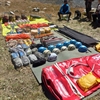
Equipment Quality and Check
All the gear used on our treks and expeditions is tried and tested, maintained for good quality, and is overall top-notch in quality and condition. We are continually looking to obtain the best of everything there is in the market so as to ensure optimum safety.
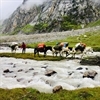
Support Systems
Along with the staff you see on-ground, we have a team of superheroes working in the background to give you the best experience possible. Our background team also comprises local staff from each area who know the region best. Having local support helps with studying the area, pre-planning, execution, and in receiving timely support in case of emergencies in these remote locations.
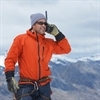
Communication
Our on-field staff is in constant contact with our teams based in primary locations so as to eliminate any avoidable delay in reaching additional help and support when required. We try to use the best tools for communication available, including satellite phones, in regions where they are not restricted.
What our customers Say

Cancellation Policy
Cash refund
Cancellations up to 30 days prior to departure date
5% deduction
Cancellations between 30 days to 15 days prior to departure date
50% deduction
Cancellations within 15 days prior to departure date
Voucher refund
Cancellations up to 5 days prior to departure date
No Deduction
Cancellations within 5 days prior to departure date
- Cash refund is applicable only in case of bookings made without using any promotional offer code or vouchers
- This is only a brief of cancellation terms. For finer details please refer Detailed Cancellation Policy.
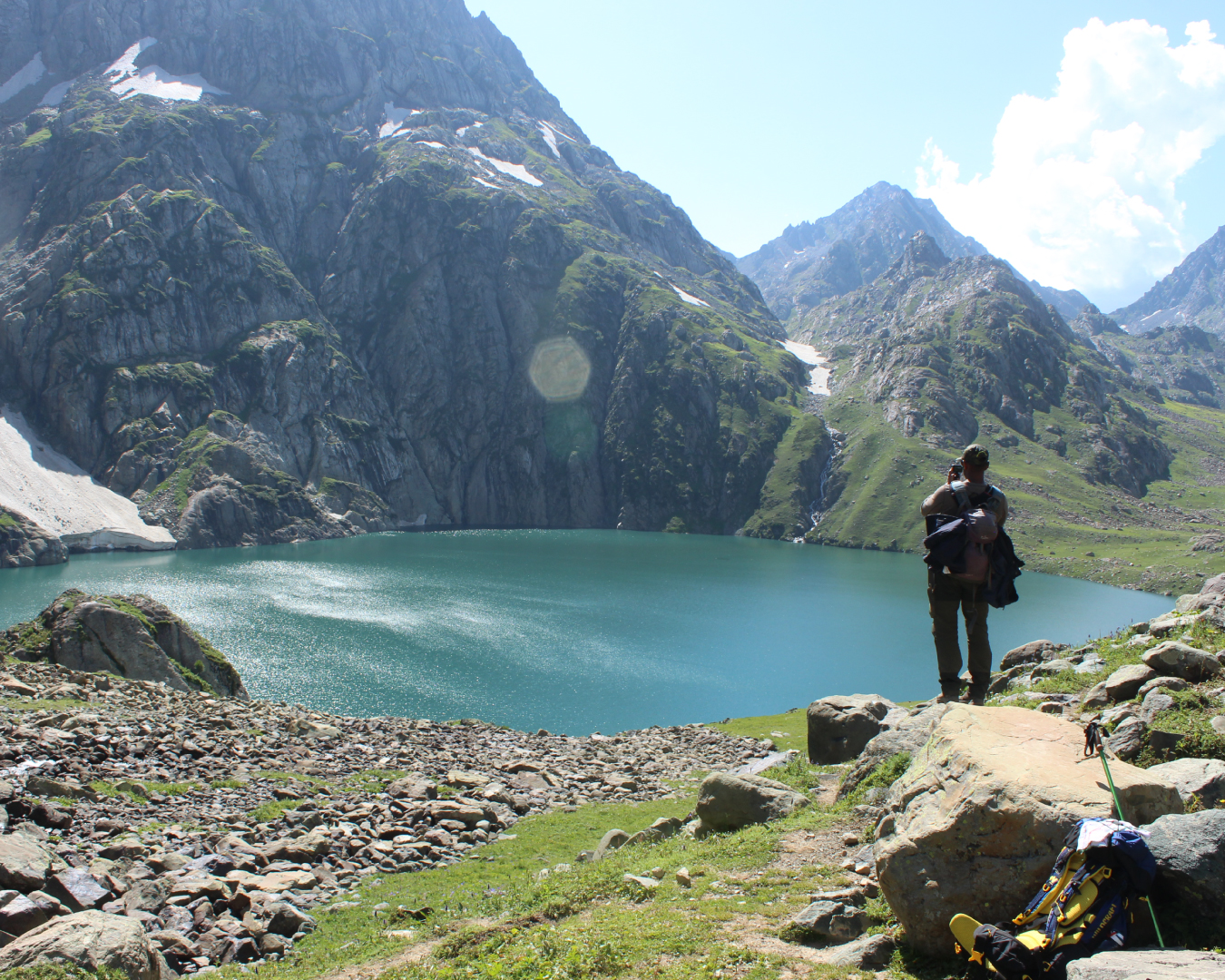
Subscribe for latest updates & offers
Similar adventures.
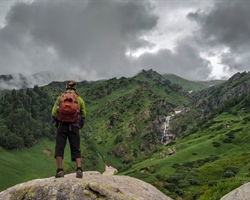
Kalihani Pass Trek
A challenging and off-beat gem of himachal.
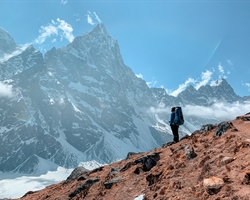
Everest Base Camp Trek
Walk where the legends walked..
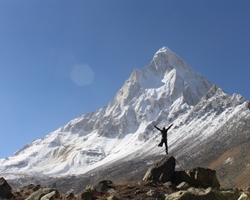
Vasuki Tal Trek
The closest one can get to mt shivling on a trek.
Uttarakhand
Enter your Email
Events by categories.

Mountaineering

Scuba Diving
Events by months.
- January July
- February August
- March September
- April October
- May November
- June December
Events By Nights
- 5 & More Night
- Environmental Policy
- Privacy Policy
- Term & Conditions
- Work With Us
- Address: 303, 3rd Floor, Tower B4, Spaze Itech Park, Sector 49. Gurgaon
- Pre Sale - 8448680062 , Post Sale - 8588878499, 9667639126
Bikat Adventures
- Cancellation & Refunds
- Content Sharing
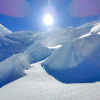
© 2024 Bikat Adventures - All Rights Reserved
Powered by: novel knett software solutions, submit enquiry.

Kashmir Great Lakes Trek
- Trekking in Kashmir
Have you ever wanted to go on the best trek of India? If so, then embark on Kashmir Great Lakes Trek – a trek unmatched across India. This trek has remained now the most popular and sought-after trek during the summer months. It has quite a great variety and offers a scenic landscape. There are around a dozen alpine lakes present in the stunning meadows. It indeed has the most alpine lakes that any trek can offer.
This trek is also called the 7 Lakes of Kashmir Trek. Owing to the many alpine lakes one sees on this trek.
The trek starts from Shitkadi Sonamarg – the famous tourist place in Kashmir. And goes up through jungles, meadows, gullies, and the huge expanse of grasslands. It goes over 3 high altitude passes, different valleys, and landscapes. The trek ends at Naranag – a simple yet beautiful village in Kashmir.
The most followed duration of the trek is 7 days including one day for an acclimatization. However, based on your personal preference you can reduce or increase the days. The difficulty of the trek is moderate to difficult. It is best suited for experienced trekkers. This trek is not for beginners. Before the hike, prepare yourself physically if you’re hoping to get on this trial.
Summer is the best time to do this trek and the months from June to September are the ideal months. It remains closed during the winter season. This trek in September is least crowded.
Cliffhangers India offers the complete package for Great Lakes Trek . From budget to premium fixed departures, from private customized options to the college/corporate groups, we have flexibility in the services and itinerary.
Explore Kashmir through: Kashmir Tour Packages
What are the Highlights of the Trek?
Meadows & Valleys: Thi s trek has a long valley full of lakes and grassland. The valleys are lush and flowery. As you walk, you enjoy the pristine beauty. The valley like Gangabal valley, Satsar valley, and Gadsar valley are the most famous ones.
High-Altitude Passes: This trek has beautiful high-altitude passes. These passes give you a panoramic view of the surrounding valleys and landscape. The highest of these passes is the Gadsar pass. From here you get the breathtaking view of Vishansar valley and its twin lakes. From Zajbal Pass you get to see Mt. Harmukh with its two famous lakes – Gangabal and Nundkol.
Alpine Lakes: Kashmir Great Lakes trek has the most alpine lakes than any trek in India. There are around a dozen lakes in and around this trek that you can access and see. All of these lakes are glacier-fed and most of them have the famous fish trout present in abundance.

Regular Fixed Departure Dates 2024
Book premium great lakes trek package.
If you are tired of large group sizes and the crowd in the treks, Cliffhangers has a fixed departure for Great Lakes Premium Package. The group size is small, and the services are premium click here to book and to learn more. Kashmir Great Lakes Premium 2024
Premium Fixed Departure
Kashmir great lakes – a detailed itinerary, day 1: srinagar to sonamarg.
- Altitude: 2,730 m
- Time taken: 3 hours drive
Drive from Srinagar to the base camp at Shitkadi Sonamarg. While driving you will get the best highlight of the Kashmir landscape. The drive winds through villages, and farmlands and the road is between two mountain ranges. You will be driving beside the shimmering and ever-flowing Sindh River. On the way, you can stop to feel the views of these mountains and pastures. You can book the cab to the base camp via our Kashmir Taxi Service .
By evening you will reach Shitkadi where you will be served with welcome drink and evening snacks, later you will be served dinner.
You will spend the night camping at Shitkadi which is surrounded by luring mountain peaks. The reason to spend the night at Shitkadi is for acclimatization. You will be briefed by your trek leader about an entire trek, and you will be given all the details about the trek.
Day 2: Sonamarg to Nichnai
- Altitude: 2,730m to 3,505 m
- Time taken: 6.5 hours, 9 km
This is the first day you will be taking your backpack and start ascending towards the next campsite.
It is a gradual ascend. Your first stop will be at Tabletop, a beautiful plateau that is surrounded by jungle but opens wide towards the Thajwas Mountian Range. This gives a fascinating wide look of the entire Sonamarg area and its mountain range. You will be able to see the famous Amarnath Peak from here.
Post this, you will trek towards Nichnai. You will be trekking beside the river canal that goes down, and after a patch of jungle, the trail opens up and gives way to tall mountains. There is a river crossing too, a small stream that cuts this valley. Your trek leader and guides will help you cross the stream.
The view becomes more and more breathtaking as you trek further towards the campsite. The trail has rocky patches as well and is dotted with maple, birch, and pine trees.
Day 3: Nichnai to Vishansar Valley
- Altitude: 3,505m to 3,650 m
- Time: 5.5 hours, 13 km
The gradient of the day is moderate with long hours of walk. After breakfast, you will be given the packed lunch as we will be lunching on our way to the next campsite.
We will be taking our first rest spot at Nichnai Pass. The pass is after the river stream. Just before the top, crossing the ridgeline you will see the beautiful valley down that you just traversed. There is a steady ascent towards the pass, don’t forget to take regular water breaks, keeping your feet firm and pace steady.
The pass has a steep and rocky descent towards the beautiful valley. The meadow below is dotted with wildflowers. You will be walking in this quiet and serene meadow with joy and delight. In the surroundings, you will see a long stretch of mountains to both the left and right sides of you. Towards the right, the mountain range is rugged, to your right the mountain line in contrast is snow peaked.
After walking for a couple of kilometers you will cross the river and reach our campsite. The campsite is beside the river stream that originates at the breathtaking Vishansar Lake.
In the river, you will see a wide range of trout fish which are very famous here. However, fishing and is forbidden here. You need to have a proper fishing license from the Fisheries Authority of Kashmir. During August month the entire valley is full of flowers.
Relax beside the lake and take your evening snacks that you will receive as you reach the campsite.
Day 4: Vishansar Valley to Gadsar
- Altitude: 3,650m to 3,810m via 4,200m Gadsar Pass
- Time taken: 8 hours, 16 km
This day is the longest and toughest day of the Kashmir Great Lakes trek . The gradient is difficult. On this day, you will cross over the highest altitude of the trek, which is Gadsar Pass standing tall at 4,200m. This day you will cross the highest altitude of this trekking route.
Your trek leader will guide you and start you early in the morning for the day. The first attraction and the best attraction of the trek will be visible within an hour of your trek. Behold the two gorgeous lakes cozily and calmly adjacent to each other: Vishansar and Kishansar Lakes.
The lakes are famous for their blue water and abundant trout fish. You will see trout fish swimming around. The fish are of different colors. Both of these lakes have a religious significance, and they drain into the Kishanganga River that meanders through Gurez Valley.
After the lakes, start the ardent steep ascend to Gadsar Pass. It has a narrow and sharp trail. Ascend carefully and steadily. It takes around 2 hours to reach the top of the pass.
Most of the breathtaking pictures that you see of the route are shot from this pass. Take some rest here for some time. Click your videos and pictures here to cherish the memories later on.
From the pass is a steep and a bit long descent. Place your steps carefully. The descent then finishes and merges into a long, lush meadow called Gadsar Meadow. The meadow is wavy breathtakingly placed between the two mountain stretches. It has lush grass and varied colourful flowers and herbs. The meadow is the most colourful of this trek.
Shortly afterward, you will see on your left a soothing, blue-coloured lake – Gadsar Lake. The lake is the least visited and is an essential part of the Great Lakes Trek. Since it is almost in the middle of this trek, this lake is the least visited and explored and is one of the best alpine lakes that you will see on the trek.
Legends say the water and fish from the Gadsar Lake have healing powers. The campsite is just a small walk from the lake.
Day 5: Gadsar to Satsar
- Altitude: 3,810m to 3,600 m
- Time taken: 5 hours, 12 km
The gradient of this day is easy. Only around one hour is an ascend until the trail opens on the Satsar Meadow. Then the walk turns into an easy walk on lush grass and trail.
The trail has small rocky patches amidst the lush meadow and some water-filled grassland. The landscape of the mountain is mostly rugged and desolate. The valley in total holds seven alpine lakes. The seven lakes are one of the sources of the famous Wangath River that you will be seeing on the way going towards Srinagar after finishing the trek.
Afterward, shortly, we will reach our campsite which is in the vicinity of the river stream.
Day 6: Satsar to Gangabal
- Altitude: 3,600m to 3,587 m
- Time taken: 5 hours, 9 km
This day is moderate to difficult and starts with a patch of boulders and rocky terrain. The boulder section will dominate the day, with the hopping from one boulder to another. The trail goes up and reaches the Zajibal Pass. There is a sharp ascend towards the pass for about 3 hours and then an equally long descent. The trail then has a succession of ascends and descends until it goes into Gangabal Valley. On the way comes the biggest of the Satsar Lakes. The lake is bigger and more gorgeous.
After the ascend, one reaches the highest altitude of the day at the top of the ridge called Zajibal Pass. The pass stands at an altitude of 4000m. However, the best part of this pass and the treat to the eyes is the first look you get of twin lakes: Nundkol and Gangabal Lakes.
After the descent from the pass, you will be walking in the narrow meadow after which there are small ups and downs in the terrain until you reach the twin lakes of the valley.
Both the lakes are glacial lakes and get the water from the melting of glacier that hangs on Mount Harmukh. You will be camping beside the Nundkol Lake which has this gorgeous Mount Harmukh in the background. Gangabal Lake is almost 25 minutes from Nundkol Lake. Both the lakes are abundant in trout fish.
Day 7: Gangabal to Naranag to Srinagar
- Altitude: 3,587m to 2,271 m
- Time taken: 6.5 hours, 13 km
This is the last day of great lakes kashmir trek. The gradient of this day is difficult. You will be leaving in the early morning after breakfast. The trek towards Naranag i.e. the endpoint of the trek is first a gradual descent and then a sharp descent through the jungle.
The gradual descent is through the meadow of Trunkhol. This is where you will see the government hut and wavy meadows in the middle of the surrounding mountains. The grass is lush and dotted with yellow flowers. And the land stretches far ahead of you. Take a rest at Trunkhol Meadow Hut. You will see a lot of shepherd houses made of mud and brick. You can stop, if time allows, to sip the local tea here in the mud houses.
Post-Trunkhol meadow, the trail immediately goes through the jungle. After walking for half an hour you will reach Butsheri Top, and it is from here a 3-hour steep descent starts. It is heavy on your knees. Make sure you tie your laces ankle-high, if you have kneecaps wear them. The trail isn’t tricky or dangerous but hard on your legs. After descending halfway, you will begin to see the houses below. It further takes a hard descent to reach the end of the trek.
At Naranag take some rest before leaving for your destination further. A cab from Naranag will ferry you to Srinagar.

What are the Inclusions & Exclusions
Inclusions:.
- All meals. Breakfast, lunch, evening snacks, dinner. We provide nutritious veg food and try not to repeat the dishes.
- Camp stay on all nights in high-quality tents on a double-sharing basis . Sleeping bags, sleeping mattresses, and dining tents.
- Mountaineering experienced trek leaders, guides, and experienced cooks.
- All the mountain medicine includes first aid, oxygen cylinder, etc.
- Passes and permits.
Exclusions:
- Lunch on the first day.
- Personal expenses.
- Anything not specifically mentioned in the inclusion list.
Extra Services:
If you wish to avail of our transportation service, then the extra cost will be 1800 per person . The transportation cost is to and fro. The pickup and drop place will be Srinagar.
Offloading charges: In case you want us to carry your backpack, the cost per bag is Rs 2800/ per bag. The maximum weight allowed is 10kg. Please note that only a proper trekking backpack will be allowed to offload. No trolly or suitcase will be allowed to offload. We strictly follow to adequately place the load on our ponies. The maximum weight on each pony will be 40kg as recommended by the Jammu and Kashmir Tourism Department.
Kashmir Great Lakes Trek Cost & Package
The Great Lakes Trek of Kashmir Package covers the total cost involved for the trek. The total cost includes all the camping equipment, transportation, meals, all qualified staff, medical facility on the trek, and other associated essentials. At Cliffhangers, you will get the most affordable package with the best of the services. Our high star rating is a testament to the blend of the best cost and services.
The Kashmir Great Lakes Trek Package starts from 14500 per person. The cost is inclusive of all the trekking essentials including all meals during the trek.
Why Choose Cliffhangers For KGL Trek?
- Experienced Trek Leaders: We provide the best and experienced trek guides to ensure safety during the trek. Their knowledge can improve your trekking adventure and guarantee enjoyment and safety all along the way. All of our trek leaders are Medical First Responders.
- Safety: Cliffhangers India is known for its emphasis on safety. We provide high safety standards, necessary equipment, medical support and well-trained persons to ensure emergencies are catered during the trek.
- Well-organised Itinerary: We create the trek itinerary very well, taking into account the difficulty levels, acclimatisation, trekking routes and the breathtaking beauty. We make sure that everyone has a well-rounded and entertaining experience.
- Good Quality Hiking Equipment: We provide good quality hiking equipment like waterproof tents, hiking poles, -15 sleeping bags and other trekking gears. Trekkers will have a more pleasant and comfortable journey through this.
- Affordable Prices: We are transparent about pricing, describing the expenses and the contents of the package, this helps trekkers to travel according to the budget they have.
- Customer Reviews: An important consideration when selecting Cliffhangers India can be the positive evaluations and testimonies of prior hikers. Many people base their assessment of the calibre of services received on the experiences of others.
- Educational Appeal: We frequently include educational elements in hikes, giving details about the local flora, wildlife, and geography. This gives the walk a more instructive and rewarding element.
Best Time for Kashmir Great Lakes Trek?
Since this trek is the summer trek, July to September is the best time to do this trek. This is the best summer trek in entire India. During winters, owing to the snow the trek closes and remains inaccessible. After October, the temperatures drop and there are chances of snowfall which make it impossible for porters and ponies to cross the passes.
However, if you want to finish this trek with some snow still on the passes and mountain tops, then do it in June. Cliffhangers is the only company that starts this trek in early June and ends it in mid-October.

How Difficult is Kashmir Great Lakes Trek?
This is what most of the trekkers ask. It should be noted that this is a moderate to difficult trek. It is not a beginner’s trek. This is recommended to only seasoned trekkers or fit beginners. During the rain, it becomes slightly more challenging. If you are living a sedentary/nonactive life, you need to hit the gym and prepare yourself for this trek.
The trek has long days of walking. It passes over three mountain passes; the trail is a mix of ascends and descends all along. It has boulder and rugged sections as well where you will be hopping from one boulder to another, and you will have to cross the river streams – sometimes walking on the log bridge or fording the stream through it.
The most difficult ascend is the climb to Gadsar Pass. The ascend is sharp and is the test of stamina and endurance. Immediately after reaching this pass, it has a steep and long descent and then a long walk in the meadow to the campsite.
The most difficult descent is on your last day. There is a sharp descent of around 1000m which will cause stress on your knees, ankles, and toes. This gives a challenge to most of the trekkers as they are about to finish the trek.
Kashmir Great Lakes trek gets more difficult during rain. The trail gets blurry and at times vanishes at all. The ascend and descend then gets tricky and you will have to be extra careful while putting your next step. However, you will be all safe as Cliffhangers India’s trek leader will guide you through how to walk and will help you cross the passes. You need to strictly follow his instructions.
There are boulder sections. You just have to be careful here as well, as the fall in the boulder section can give you an injury. Especially it gets difficult during rainy days.
- Book: Tarsar Marsar Trek
The Campsites Of KGL
One of the best attractions of this trek is its campsite. Here is the brief about the campsites of KGL.
Nichnai Campsite: This campsite is your first campsite after your first day of walk. The campsite is in the middle of a beautiful mountain landscape with snow-capped mountains surrounding you all the time. The grass is greener and lush. However, the campsite is small and gets crowded with the flow of trekkers.
Vishansar Campsite: You will be camping beside the river stream and just below some meters of Vishansar Lake. The campsite again is beautiful. One way of this campsite leads to Gurez Valley. In the river stream, you will see a lot of trout fish dancing.
Gadsar Campsite: This campsite again is just near the river streams, in a small valley surrounded by mountain ranges. The campsite has some shepherd houses and in its vicinity is an army check post.
Satsar Campsite: This campsite is just down the Zajbal Pass and is enclosed by mountains.
Gangabal Campsite: This is the prettiest and the expansive campsite of the Great Lakes of Kashmir. You will be camping by Nundkol Lake. From your tent, you will have a beautiful view of Nundkol Lake and towering Mount Harmukh. The campsite is quite expansive with a long meadow surrounding you.

How To Reach The Base Camp
By Air: Srinagar has an airport that has an airway service from all the states of India. The most convenient and short way to reach Srinagar is from New Delhi.
By Train: Kashmir doesn’t have a railway facility that connects to the other parts of the country. The nearest railway station is in Jammu. Jammu station is very well connected to the other major railway stations of the country. From Jammu, take a shared cab or bus to Srinagar.
By Bus: Srinagar has an NH1 highway that connects it to the rest of the places in India. There are regular bus and cab services from Delhi or Jammu. You will reach within a day from Jammu to Srinagar .
From Srinagar take the Cliffhangers shared taxi service to Sonamarg Campsite.
Essential Things For KGL Trek
- Clothing: Wear warm clothing to protect yourself from the cold at night, such as fleece, thermals, and heavy jackets.
- First Aid: Must have a first aid pack that contains all the prescription drugs and bandages that you will need for the walk, as well as medications for fever, headache, diarrhoea, cold, flu, and non-alcoholic beverages.
- Hiking Shoes: For the hike, high ankle hiking shoes are a good choice because they offer the right balance of comfort and durability on a range of terrain and activities.
- Woollen capes: Gloves and a woollen cap for the night. Sunscreens: Cold cream and lip balms.
- Backpacking: To carry all your equipment, it is necessary to carry a good quality of backpack with a minimum capacity of 50-60 litres.
- Electronic Equipment: Carry trekking poles which include torch, mobile phones, sunglasses, power bank, water bottle, Bluetooth, camera and some kind of music system.
- Toiletry: personal toiletry which includes towels, toothbrushes, toilet papers, tissues, nail slipper, sanitary pads for female travellers, shampoo and your personal essentials that you utilise every day.
- Sleeping Bags: Pack a sleeping bag that is small, light and appropriate for the temperatures you expect to experience on your hike.
Make sure this list fits your needs before starting your trek by adjusting it for the length of your trip and the requirements of your destination. While preparing for your adventure, keep comfort, safety, and the least amount of negative environmental impact in mind.
Safety & Exit Points of Trek?
We often get this question from our trekkers, wherein they are apprehensive and want to know how safe it is to go for the great lakes of Kashmir trek. Here are some of the points that we have tried to explain to trekkers.
At first, do know that this Trek is not easy. Its gradient is moderate to difficult. The trek is long and around 70 km, it has three passes and there are days when you will have to ascend a steep ridge and walk around more than 15km. Every day you trek till afternoon to evening.
The Terrain : The landscape no doubt will give you everything that you can ask for in mountains – it has jungle walks, meadows, boulder patches, ascends, descends, mountain passes, river crossings, and lakes.
However, to enjoy all this beauty you need to be prepared for tough trek days. There are boulder sections where you will have to hop from one boulder to another. Also, few river crossings, at times over a bridge, the log bridges and at times when the water level is high you will have to ford the streams by making a line.
There are steep ascends. The steepest you will encounter while going up to Gadsar Pass, this is the most tiresome day both length-wise and ascend-wise. Immediately after ascending Gadsar Pass, it has a sharp and long descent and then a long walk to the campsite.
Another pass that you will be ascending is the ridge of Zajibal Pass. This will take around 3 hours and then it also is followed by a long descent.
The sharpest and hardest descend in on your last day. There is a steep descent that is very much heavy on your knees. This day you will feel the stress on your knees, ankles, and even toes while descending to Naranag.
Altitude Gain: This trek has an altitude gain of around 2000m. You will expose yourself to altitude sickness in case you make your itinerary short. The ideal duration for this trek is 7 to 8 days. This has been developed to keep many things in consideration including altitude sickness.
The Kashmir Great Lakes trek starts at around 2700m, you are first made to spend the night at this altitude, and it is only after three days of the trek you will be gaining the highest altitude of this trek i.e. Gadsar Pass. By this time your body is well acclimatized to the altitude.
However, you need to follow the instructions that your trek leader will provide to finish your trek without any hiccups. Take plenty of water, both while trekking and at the campsite. You need to take frequent water breaks even if you are not thirsty and not let yourself dehydrate. Take small steps and have a moderate pace.
In case you feel a headache, nausea, or any altitude sickness symptoms, don’t ignore the symptoms and talk to your trek leader.
The Weather: Since this is a summer trek, weather is mostly sunny. During the day you need to keep the safety against sunburn and sunstroke.
However, it does rain at times mostly during July. In rain, the trail gets slippery and is quite risky. The most difficult is to ascend and descend and at some ascends the trail vanishes completely when it rains a lot. You need to be prepared for this.
It is times like this when the trek becomes difficult. However the leaders at Cliffhangers India are expert and learned trek leaders, they will help you in traversing during the rain quite safely. If the roping is required, they will make sure that it is done. From your side, you need to follow the instructions that the trek leader provides you must have sturdy trekking shoes.
Exit Points: In case you are feeling sick and feel you won’t be able to finish the trek, the best expert suggestion would be to exit the trek before going to Gadsar. You need to take a call till you are at the Vishansar campsite. It is a quick and easy evacuation from Vishansar or before that. However, if you cross over to Gadsar Pass, you reach almost the middle of the trek which makes the evacuation hard, although not impossible.
Once you reach the base camp Shitkadi, the nearest hospital is just around 4km from there at Sonamarg market.

How Long is the Great Lakes trek?
This trek is 65 km long. A beautiful landscape can be found along this trail, which includes three high-altitude passes, around a dozen gorgeous alpine lakes with varying shades of green, blue, and turquoise, and unending views of untamed meadows and jagged mountains. This trek can be finished in seven days, covering a portion of the area each day.
Which Lake in Kashmir is Very Famous?
Gadsar Lake, one of the highest and most beautiful lakes in Kashmir, is a secret treasure that must be reached by an alpine hike. The Gadsar Lake boasts an exceptionally stunning backdrop. It is situated in the “Valley of Flowers,” 28 kilometers from Sonamarg. Apart from this, Dal Lake, Gangabal Lake, and Vishansar Lake in Kashmir.
How Many Lakes One Sees on Kashmir Great Lakes ?
A total of 11 lakes are traversed in Kashmir Great Lake treks, including Gangabal Lake , the largest Alpine Lake in Kashmir, Nundkol Lake, Kishansar, Satsar Lake, Gadsar Lake & Vishansar Lake. This hike will be with you forever because of the verdant meadows, and high peaks. Other than this, depending on when you arrive, you might see a few more lakes.
Can we Swim in the Great Lakes?
You can enjoy swimming in the Great Lakes, only if you are a seasoned swimmer. One should also take good consideration of the fragile environment. These lakes are fresh and glacier-fed. You will have to be extra careful not to spoil the lakes of great lakes.
Is August the Best Time to Do Great Lakes Trek?
August attracts a lot of crowds. Most of the trekkers come for this trek in the middle part of this month. The day temperature is hot and the night temperature is pleasant. The weather is mostly dry.
Can we do this Trek in October?
October is the blend of summer and snow peaked mountains. October is the last month in which you can do this trek. After October there comes snowfall in the high passes of this trek. In this month the temperature is cold in the nights and pleasant during the day. The weather is dry and has least chances of rain. However, in the upper reaches it can snow anytime.
Can we do the Trek in June?
In June the mountain peaks are covered in snow and the meadows are fresh and green everywhere. The lakes are clean with some snow still covering the lakes. Hence, you can do this trek in June and it has a breathtaking blend of summer landscape and snow in the upper reaches. The temperature during this month is sunny during the day and slightly cold during the night. The weather remains mostly dry.
Can We Do the Trek in July?
The trek in July has the best of summer features. The entire landscape is full of greenery and the rivers are full of dancing water. All the alpine lakes are open and full of trout fish. This is the least crowded month to do this trek.
Is Kashmir Great Lakes Trek Crowded?
The trek is crowded in August. If you want to see less crowd then do the trek at the end of June or the end of September. During these times you will see the least crowd for this trek. Also, at the end of June, you will see snow in the upper reaches and passes.
Do I need a permit to do this trek?
Yes, you will need a permit to undertake the trek. The permission is granted by the Jammu and Kashmir Tourism Department.
Is Trekking Insurance a must for KGL?
Yes, the trekking insurance is mandatory for Kashmir Great Lakes. The tourism department will not issue any permission for the trek without insurance and a medical fitness certificate.
Are there any age or health restrictions for the trek?
While there is no strict age limit, participants should be in good physical health and should acclimatize properly to the high altitudes. It’s recommended to consult with a doctor before joining this trek, especially if you have any pre-existing medical conditions.
What are the other Himalayan treks in Kashmir?
Here are the other Himalayan treks in Kashmir:
- Warwan Valley Trek Gurez Valley Trek Tulian Lake Trek Bodpathri lakes trek Gangabal Lakes Trek Sheshnag Lake Trek Nafran Valley Trek Kolahoi Glacier Trek

Tour Reviews

We went to Kashmir Great Lakes with Cliffhangers India. The arrangements were fantastic with great people to guide. Highly recommended!!

If you are looking for Great Lakes trek options, then you can blindly choose Cliffhangers India. They are educated, trained and experienced in what they do and they make sure you get everything you want and make your trek unforgettable experience.
Hi Cliffhangers! We are a group of 15 pax. We want the premium great lakes trek but don’t want any extra person to be added. We tried to contact you also via WhatsApp.
Please do call ASAP. We are planning to come in August.
Regards Meenakshi L
Hi Meenakshi, Thanks for writing to us. In our premium treks, the group size is around 13 only. So, if you are already 15 trekkers, rest assured no extra trekker will be added in your group. The cost and facilities will remain the same as is in our premium trek.
Regards Team – Cliffhangers India
Leave a Review
Cancel reply.
Save my name, email, and website in this browser for the next time I comment.
You May Also Like

Brammah Valley Trek

Sheshnag Lake Trek

Sunset Peak Trek Expedition
Discovery Hike

- Nepal Treks
- EXPEDITIONS

KASHMIR GREAT LAKES
8 days - 7 night, low to moderate, srinagar to srignagar, * gst @ 5% extra.
Kashmir, a phrase that conjures up a thousand feelings of love, grandeur, exoticism, and, in Firdaus’ terms, “heaven.” Some say it’s a paradise on earth, while others say it’s a paradise by itself, but Kashmir truly stands out among the world’s most beautiful places. The lakes around here, whether Dal Lake, Vishansar Lake, or the Gangabal Twin Lakes, are surreal and a rare sight. We discover the most pristine mix of alpine lakes, far-reaching meadows, high altitude passes, and vast unexplored vistas of Kashmir Himalayas on the Kashmir Great Lakes Trek. As the saying goes, once you visit Kashmir, your heart will never leave. The KGL trek is a perfect example of the state’s natural beauty.
SHORT ITINERARY
Day 1 receive from airport to shitkari base camp day 2 trek from base camp to nichnaie day 3 trek from nichnaie to vishnusar day 4 trek from vishnusar to gadsar day 5 trek from gadsar to satsar day 6 trek from satsar to gangbal and campsite at nundkul lake day 7 buffer day at gangbal lake (t&c*) day 8 trek from gangbal lake to naranag and back drive to srinagar trek gallery, detailed itinerary, day 1: receive from airport to shitkari base camp.
Upon arrival at Srinagar airport, board a vehicle for a three-hour drive to Shitkari, through winding roads that lead to Kashmir’s golden meadows of Sonamarg. Shitkari is our base camp for the Kashmir Lakes Trek, and it is located 3 kilometers before Sonamarg. Stay overnight in tents at the open grassy campsite at Shitkari.
Day 2: Trek from Base Camp to Nichnaie
We begin our trek to Nichnai early in the morning, aiming for a 2 to 3-hour moderate ascent to the tabletop village of Shekdur, passing through a stretch of pine forests before arriving at the bank of Nichnai Nallah for lunch. We arrive at today’s campsite after a gradual climb along the Nallah, with breathtaking views of the Nichnai Pass ahead.
Day 3: Trek from Nichnaie to Vishnusar
The day’s trek begins with a 2-hour moderate to a steep climb to the top of Nichnai Pass (4100 m). While ascending towards the pass, we can see the Nichnai lake on the left side. After crossing the pass, we descend for an hour and re-group for lunch before walking through the valley meadows to today’s campsite, which is located just below the Vishnusar lake. The rest of the day can be spent exploring the surrounding area. Visiting the Vishnusar and Kishansar twin lakes
Day 4: Trek from Vishnusar to Gadsar
We begin the day by ascending gradually across the twin lakes. Following a steep climb to the top of Gadsar pass at 4200 m, which offers spectacular views of the twin lakes, a gradual descent follows, followed by a simple walk along the meadows towards Gadsar lake. We re-group at the lake for lunch before going on to the campsite further ahead.
Day 5: Trek from Gadsar to satsar
Today’s trek takes us through SATSAR, a series of seven lakes. We hike uphill from Gadsar campsite for 1.5 to 2 hours before descending to Satsar pass through the Satsar stream. We re-group for lunch on the bank of a lake just across the pass before carrying on for another hour to our campsite today.
Depending on the season, there are 4 or 5 lakes with water. The Satsar army check post is located on the right side of the hill, above the ridge. It is the LOC’s third line of defense. The same identity verification, data collection, and questioning procedures apply here. Finish this today to ensure a clean day of trekking tomorrow. The first of the Satsar lakes is situated ten minutes from the army camp. The lake is very big, and it is set in a beautiful green setting with mountains in the background.
Day 6: Trek from Satsar to Gangbal and campsite at Nundkul Lake
Today we trek towards the Nundkol and Gangbal twin lakes. Our initial climb takes us to Zach pass at 4100 m, where we can see the Harmukh mountain looming over the Nundkol and Gangbal twin lakes. We take a break for lunch along a small stream before ascending to the Nundkol campsite through a small ridge with views of the lakes.
Day 7: Buffer day at Gangbal Lake
This day is an extra day or buffer day (counted as 8D-7N trek) for those who want to take rest for the entire day and that will be charged an extra 3200Rs per person (exclusive from 15,500). If this day is cancelled, then trek will be of 7D-6N @15,500Rs.
Day 8: Trek from Gangbal Lake to Naranag and back drive to Srinagar
Today is our last day in the wilderness, and we’re heading back to civilization. We begin with a gradual ascent out of the valley, then descend towards the tree line to reach a forested trail that leads to a Tea-shop, where we will stop for lunch. After that, it is a three-hour steep descent to Naranag, an ancient temple settlement, and a road-head that connects to Srinagar. Move your luggage to the waiting vehicles, then relax and enjoy the ride to Srinagar.
Upon arrival at Srinagar airport, board a vehicle for a three-hour drive to Shitkari, through winding roads that lead to Kashmir's golden meadows of Sonamarg. Shitkari is our base camp for the Kashmir Lakes Trek, and it is located 3 kilometers before Sonamarg. Stay overnight in tents at the open grassy campsite at Shitkari.
We begin our trek to Nichnai early in the morning, aiming for a 2 to 3-hour moderate ascent to the tabletop village of Shekdur, passing through a stretch of pine forests before arriving at the bank of Nichnai Nallah for lunch. We arrive at today's campsite after a gradual climb along the Nallah, with breathtaking views of the Nichnai Pass ahead.
Day 3: Trek from Nichnaie to Vishnusar
The day's trek begins with a 2-hour moderate to a steep climb to the top of Nichnai Pass (4100 m). While ascending towards the pass, we can see the Nichnai lake on the left side. After crossing the pass, we descend for an hour and re-group for lunch before walking through the valley meadows to today's campsite, which is located just below the Vishnusar lake. The rest of the day can be spent exploring the surrounding area. Visiting the Vishnusar and Kishansar twin lakes
Today's trek takes us through SATSAR, a series of seven lakes. We hike uphill from Gadsar campsite for 1.5 to 2 hours before descending to Satsar pass through the Satsar stream. We re-group for lunch on the bank of a lake just across the pass before carrying on for another hour to our campsite today. Read More Depending on the season, there are 4 or 5 lakes with water. The Satsar army check post is located on the right side of the hill, above the ridge. It is the LOC's third line of defense. The same identity verification, data collection, and questioning procedures apply here. Finish this today to ensure a clean day of trekking tomorrow. The first of the Satsar lakes is situated ten minutes from the army camp. The lake is very big, and it is set in a beautiful green setting with mountains in the background.
Today is our last day in the wilderness, and we're heading back to civilization. We begin with a gradual ascent out of the valley, then descend towards the tree line to reach a forested trail that leads to a Tea-shop, where we will stop for lunch. After that, it is a three-hour steep descent to Naranag, an ancient temple settlement, and a road-head that connects to Srinagar. Move your luggage to the waiting vehicles, then relax and enjoy the ride to Srinagar.
subscribe Now
Depature date.
09 July to 14 July 16 July to 21 July 23 July to 28 July 30 July to 04 August
06 August to 11 August 13 August to 18 August 20 August to 25 August 27 August to 1 September
3 September to 8 September 10 September to 15 September
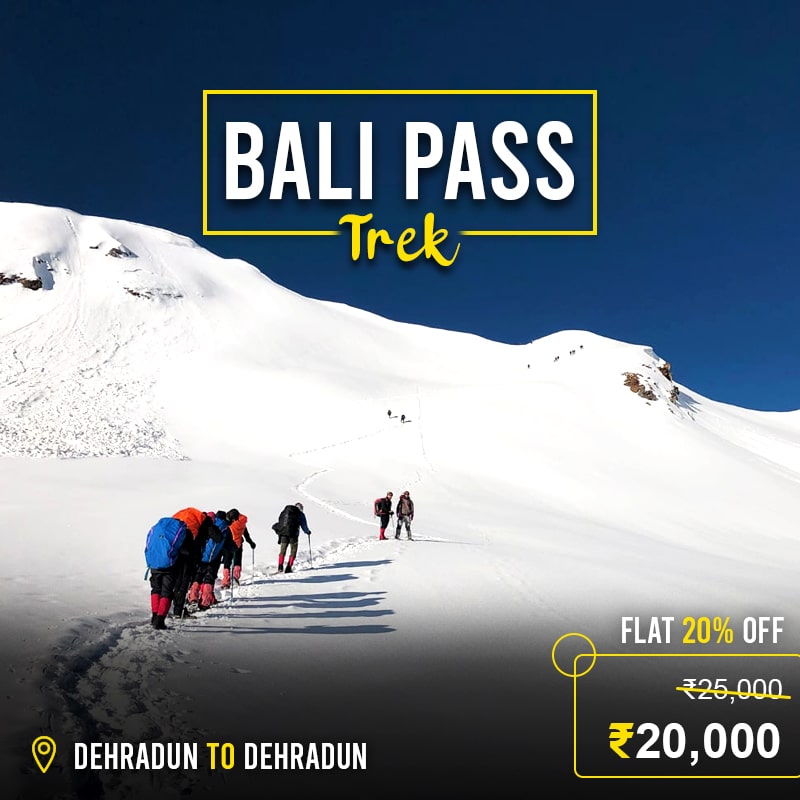
COST INCLUSION
Transport will from srinagar to sonamarg base camp trek leaders , guide,cook ,camp helpers and horses/porters as required taxes ,permit fee,and other charges imposed by local authorities ,national parks etc good quality of tents,sleeping bags,carry mats.tented accommodation be on double /triple sharing basis. safetyequipments –firstaidkit stretcher,pulsoximeter,portable oxygencylinder(where required for use of emergency service) all vegetarian meals (breakfast,lunch,dinner) on all trek days for the trek duration from shitkari base camp till end of trek at naranag cost exclusion, transport cost to reach srinagar and stay in srinagar. meals,snacks,mineral water ,telephone,tips and other incidental expenses during travel between srinagar and sonamarg. cost of doctors ,medical officers ,trek leaders are trained in first – aid to assist in case of medical emergencies emergency evacuation related costs owing to medical emergencies or weather conditions horse ride at thajwas glacier , transport for zero point transport for sightseen in and around sonamarg / srinagar before and after the trek. transport can be arranged but will be separately charged as per cost incurred. trekkers are expected to carry their own packpacks ,those intending to trek without backpacks or carry only a day pack and offloading their backpacks onto horses / porters will have to bear an additional cost of inr 3500 for whole trip per backpack. subscribe now, frequently asked question.
- Footwear : The trekking boots which must be waterproof and snow proof, normal boots, floaters, and woolen socks.
- Backpack: (50 ltr), Daypack (20-30 ltr), Duffel bag.
- Clothes : Jacket and trousers that are both waterproof and breathable. Jacket (synthetic or down feather fleece), synthetic insulated trousers, poncho, sweatshirt, inner thermal (upper & lower), fleece, t-shirts, cotton trekking pants, shorts
- Season wise Clothes :
- Hand and head protection includes liner gloves, bandannas, sun hats, woollen caps, and face masks, among other things.
- Accessories : Sunglasses/goggles, anti-glare lenses, water bottle, hydra bag, and headlamp with spare bulb and extra batteries are all recommended.
- Trekking Gears: Toolkit for an emergency. Sunscreen, a toiletry pack, water purification pills, Ziploc packs, ear plugs, first-aid kit, and the necessary medications are all recommended.
- Camping Equipment : Sleeping bags of lining (extreme -5 to +5 Celsius if you have one), trekking sticks, and so on.
- Warm top/light micro fleece pullover/full sleeve T shirt – 2/3
- Water resistant/repellent trekking pants with an inner lining for added warmth- 2 High-quality windproof/water-resistant outer shell (jacket) with a proper hood
- Thick Fleece / Full-sleeve Woollen Jumper, Down Jacket with at least 600 fill capacity Innerwear with a thermal component (upper and lower)
- Woolen hat, inner fleece gloves, and outer water-resistant gloves
- 4–5 pairs of thick woollen socks and standard socks, scarf/muffler (optional)
- Waterproof Trekking/Hiking shoes with a thick heel and high ankles that are comfortable to wear. Sneakers/sport shoes are ideal for camp.
- Poncho or raincoat. A small, light-weight towel
- A hydration pack and an insulated water bottle (optional)
- Sunglasses with UV cover and the potential to cut light, as well as a cap or floppy hat to shield the strong sun off your skin (important when traversing through snow)
- Trekking pole or sturdy walking stick Lip Balm, Sunscreen Lotion
- Flashlight / torch (with extra batteries) Medications, if any special prescription is needed Toiletries for personal use
- Carry a rain cover over your luggage • Day pack/small bag that you can carry on your back all day to keep your essentials in
- Keep a few poly bags or plastic containers in your bag to place your things in if you need to in case of heavy weather.
Personal Medical Kit (MANDATORY FOR ALL)
- 10 Diamox tablets (to prevent AMS)
- Nifedipine – 5 pills Dexamethasone – one strip
- 6 tablets of Crocin (fever)
- 4 tablets of avomine (motion sickness) 4 capsules of Avil 25mg (allergies)
- 4 tablets of Combiflam (Pain killer)
- 6 tablets each of Norflox TZ and Lomofen (diarrhea) 10 tablets of Digene (acidity)
- 10 Omez/Rantadine capsules (antacids) 3 to 5 metres of crepe bandage
- 1 tiny roll of gauze 10 strips of bandage 1 small roll of cotton 10 packets of ORS
- Moov spray Betadine or other antiseptic cream (aches, & sprains)
- If you're vulnerable to knee injuries, you should wear a knee cap. Powder with antifungal properties
- Cancellation: If a trek is cancelled at the last minute due to a natural disaster or unforeseeable circumstances (such as floods, earthquakes, landslides, attack, or bandh), Discoveryhike will have a trek voucher for the full number. The voucher can be used for the same or a different trek over the next year.
- In case you wish to cancel the trek, then please be aware of these things:
- Cancellations made within 30 days of the trek's launch date will include a complete refund.
- If you cancel within 30 and 20 days before the hike, you will get a 50% refund.
- There will be no refund if you cancel less than 20 days before the trek begins.
- Please keep in mind that if you get a refund, there will be a reduction of 4% (Cancellation charges) from the overall amount you pay. In addition, if you purchased trek insurance, you would not get a refund.
- Discoveryhike assumes no responsibility for any malfunction or injury to your clothes, supplies, or other belongings while on the trek. The trek fee covers all expenses associated with the trek from start to finish.
other Treks

WhatsApp us

- +91-7827999000
- [email protected]
.jpg)
Nice quality hostels of YHA all around the world. can be relied upon.Good for backpackers
NATIONAL HIMALAYAN TREKKING CUM TRAINING EXPEDITION 2019 - (MANALI - HP) - HAMPTA PASS & CHANDERTAL

CHETAN MITTAL
For experience the wonderful world of trekking first time, none is better than YHAI
3N/4D Family Package Mysuru-2019
Lifetime Members
Nationwide Hostels
Participants per year

- mission & story
- the organisation
- our network
- awards & achievements
- memorandum and rules & regulations
- Privacy Policy
- Cancellation Policy
- Terms & conditions
Memberships & Benefits
- apply for membership
- institutional
- membership benefits
- membership discounts
- national level
- state level
- Weekend Program
- hostel level
- yhai in news
- press releases
- photo gallery
- about youth hostels
- yhai hostels
- licensee youth hostels
Connect With Us
- [Timing 9:30 a.m to 5:30 p.m. (Mon - Sat)]
- (Second Saturday and Gazetted Holidays Off)

connect by app
Get our newsletter.
MiG 3 main list +
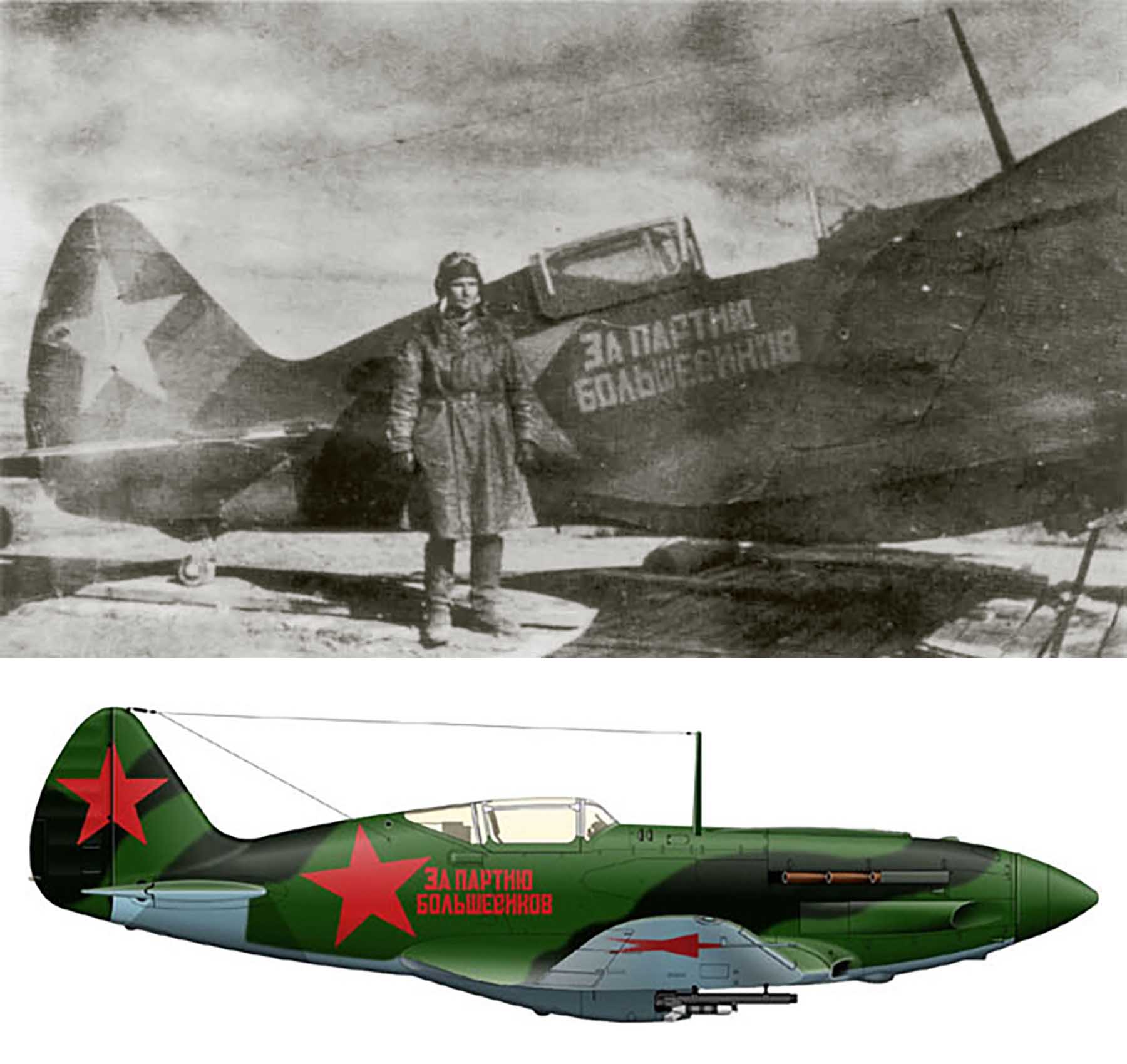
Mikoyan Gurevich MiG 3 172IAP For the Party of Bolsheviks with Nikolai Sheyenko May 1942 01
Mikoyan-Gurevich MiG-3
National origin:- Soviet Union Role:- Fighter Interceptor Manufacturer:- Mikoyan-Gurevich Designer:- First flight:- 29th October 1940 Introduction:- 1941 Status:- Retired 1945 Produced:- 1940-1941 Number built:- 3,422 Primary users:- Soviet Air Forces (VVS); Soviet Air Defence Forces (PVO); Soviet Naval Aviation Developed from:- Mikoyan-Gurevich MiG-1 Variants:- Mikoyan-Gurevich I-211 Operational history MiG-3s were delivered to frontline fighter regiments beginning in the spring of 1941 and were a handful for pilots accustomed to the lower-performance and docile Polikarpov I-152 and I-153 biplanes and the Polikarpov I-16 monoplane. It remained tricky and demanding to fly even after the extensive improvements made over the MiG-1. Many fighter regiments had not kept pace in training pilots to handle the MiG and the rapid pace of deliveries resulted in many units having more MiGs than trained pilots during the German invasion. By 1 June 1941, 1,029 MIG-3s were on strength, but there were only 494 trained pilots. In contrast to the untrained pilots of the 31st Fighter Regiment, those of the 4th Fighter Regiment were able to claim three German high-altitude reconnaissance aircraft shot down before war broke out in June 1941. However high-altitude combat of this sort was to prove to be uncommon on the Eastern Front where most air-to-air engagements were at altitudes well below 5,000 metres (16,000 ft). At these altitudes the MiG-3 was outclassed by the Bf 109 in all respects, and even by other new Soviet fighters such as the Yakovlev Yak-1. Furthermore, the shortage of ground-attack aircraft in 1941 forced it into that role as well, for which it was totally unsuited. Pilot Alexander E. Shvarev recalled: "The Mig was perfect at altitudes of 4,000 m and above. But at lower altitudes it was, as they say, 'a cow'. That was the first weakness. The second was its armament: weapons failure dogged this aircraft. The third weakness was its gunsights, which were inaccurate: that's why we closed in as much as we could and fired point blank." On 22 June 1941, most MiG-3s and MiG-1s were in the border military districts of the Soviet Union. The Leningrad Military District had 164, 135 were in the Baltic Military District, 233 in the Western Special Military District, 190 in the Kiev Military District and 195 in the Odessa Military District for a total of 917 on hand, of which only 81 were non-operational. An additional 64 MiGs were assigned to Naval Aviation, 38 in the Air Force of the Baltic Fleet and 26 in the Air Force of the Black Sea Fleet. The 4th and 55th Fighter Regiments had most of the MiG-3s assigned to the Odessa Military District and their experiences on the first day of the war may be taken as typical. The 4th, an experienced unit, shot down a Romanian Bristol Blenheim reconnaissance bomber, confirmed by postwar research, and lost one aircraft which crashed into an obstacle on takeoff. The 55th was much less experienced with the MiG-3 and claimed three aircraft shot down, although recent research confirms only one German Henschel Hs 126 was 40% damaged, and suffered three pilots killed and nine aircraft lost. The most unusual case was the pair of MiG-3s dispatched from the 55th on a reconnaissance mission to PloieÅŸti that failed to properly calculate their fuel consumption and both were forced to land when they ran out of fuel. Most of the MiG-3s assigned to the interior military districts were transferred to the PVO where their lack of performance at low altitudes was not so important. On 10 July 299 were assigned to the PVO, the bulk of them belonging to the 6th PVO Corps at Moscow, while only 293 remained with the VVS, and 60 with the Naval Air Forces, a total of only 652 despite deliveries of several hundred aircraft. By 1 October, on the eve of the German offensive towards Moscow codenamed Operation Typhoon, only 257 were assigned to VVS units, 209 to the PVO, and 46 to the Navy, a total of only 512, a decrease of 140 fighters since 10 July, despite deliveries of over a thousand aircraft in the intervening period. By 5 December, the start of the Soviet counter-offensive that drove the Germans back from the gates of Moscow, the Navy had 33 MiGs on hand, the VVS 210, and the PVO 309. This was a total of 552, an increase of only 40 aircraft from 1 October. Over the winter of 1941-42 the Soviets transferred all of the remaining MiG-3s to the Navy and PVO so that on 1 May 1942 none were left on strength with the VVS. By 1 May 1942, Naval Aviation had 37 MiGs on strength, while the PVO had 323 on hand on 10 May. By 1 June 1944, the Navy had transferred all its aircraft to the PVO, which reported only 17 on its own strength, and all of those were gone by 1 January 1945. Undoubtedly more remained in training units and the like, but none were assigned to combat units by then.

Send Mail Please help us to improve these articles with any additional information or photo's. If you should encounter any bugs broken links, or display errors just email us.
If you love our website please add a like on facebook
Please donate so we can make this site even better !!
This webpage was updated 2nd August 2021

IMAGES
VIDEO
COMMENTS
Participants take note, KGL trek is a high altitude, strenuous, challenging trek that requires moderately high to high degree of mental and physical fitness. ... YHAI at any time can refuse /deny the member-participant the opportunity to participate/further continue the trek. 3. YHAI will not be held liable for any delay, cancellation, or ...
This Trek Is Moderate To Hard. YHAI will provide adequate assistance in above circumstances but cannot be held responsible for any risk mentioned or not mentioned above. All participants should be physically fit, only those who fulfill the mentioned criteria will be allowed to participate in the expedition. YHAI decision will be final and all ...
Kashmir — you feel it everywhere. The larger-than-life scale of the mountains, meadows, and lakes on the trek of KGL. Picture by Rajshree Sarada. 2. The variety of the valleys and meadows. The Kashmir Great Lakes trek has 7 trekking days. And coincidentally you are also trekking in 7 different valleys.
The best part KGL Trek view of the Gadsar pass trek in Kashmir Great Lakes Trek. Get Amazed On Kashmir Great Lakes Trek, All of the lakes are amazing but Gadsar is untouched because of its high altitude (13800 feet above. It lies against a glacier and is surrounded by a meadow where wildflowers grow in abundance. Therefore, it perfectly adds ...
During the Kashmir Great Lakes trek, staying hydrated is key to maintaining fitness. Drink at least 4 litres of water each day. While you can carry 2 litres of water during the trek, make sure to fill up the bottles from the streams on the way. Make sure to put on your suncap and sunscreen to beat the heat.
The KGL Trek is a mesmerizing adventure that takes you through some of the most stunning landscapes in the Indian Himalayas. This trek is renowned for its pristine alpine lakes, vibrant meadows, dense pine forests, and majestic snow-capped peaks. It offers a visual feast for nature lovers and avid trekkers alike.
The Kashmir Great Lakes Walk, also known as the KGL Trek, is a must-have for most adventure enthusiasts visiting trek in India. This trek is 75 km long. This trek includes mountain lakes and vast collection of meadows in the Himalayas in West Kashmir, including the famous Sonamarg hill station and Harmukh mountain The route becomes gradual as ...
Cancellation less than 9 days to the start of the trek. Refund options. Transfer your trek (same trek, same batch) to your friend; No cash refund; 20% cash voucher for the same trip till one year; 10% cash voucher for any trip till one year . In the unlikely event that TTH cancels a trek prior to the scheduled departure date:
Highlights of Kashmir Great Lakes Trek. Maximum altitude: 13,715 ft. Grade: Moderate - Difficult, Level 2. Duration: 7 days. Trekking distance: 72 kms approximately. Trail type: This is a cross over trail through a number of passes starting at Sonamarg and ending at Naranag. Rail head: Jammu is the nearest railway station.
The Kashmir Great Lakes Trek not only has beautiful views, but it is also a moderately tough trek. During the trek, the trail will often change from ascent to descent. On some days, you would trek up to the high point, for example, Gadsar Pass, which is 13,800 ft (4,200 m), and then hike down to a campsite on the other side of the mountain.
Day 2 : Trek from Sonamarg to Nichnai via Shekdur. Day 3 : Trek from Nichnai to Vishnusar Lake. Day 4 : Trek from Vishnusar to Gadsar Via Kishansar lake & Gadsar Pass. Day 5 : Trek from Gadsar to Satsar. Day 6 : Trek from Satsar to Gangabal twin lakes. Day 7 : Trek from Gangabal to Naranag, Drive to Srinagar.
The route of Kashmir's great lakes trek remains under the large scale of snow till mid of June. Basically the best time to do trekking in Kashmir is from 15 May onwards but for the Great lakes trek, the perfect time is July to the end of Sep. During the month of June, the great lakes trekking trail is partially covered with snow, and the view ...
Trekking. 5 / 5. Program Rating. National Himalayan Trekking Cum Training Expedition Chanderkhani Pass 2024. YHAI Base Camp at 14 Miles, near Span Resort, opposite Baba Deluxe Dhaba, Indian Oil Petrol Pump. Inclusive of Food, Boarding, Medical Insurance and Trekking 1st May to 20th May 2024. 7500.00. 8N/9D. Kullu.
Day 1: Arrive in Srinagar for the Kashmir Great Lakes trek. Altitude: 5,200 ft (1,585 m) Accommodation: Houseboat Meals included: Dinner at the boathouse Srinagar elevation is 5,200 ft (1,585 m). On the day of arrival, we start the routine of briefing the group and introducing you to fellow group members and take you through the itinerary and plan for the next 10 days.
Discover the heavenly side of Kashmir with the Kashmir Great Lakes Trek, a breathtaking trail that spans over 69 kms and features three high altitude passes, seven alpine lakes in stunning shades of green, blue and turquoise, and endless panoramic views of rugged mountains and wild meadows. With relatively easy navigation and long distances to cover each day, this trek is perfect for beginners ...
The Kashmir Great Lakes Trek Package starts from 14500 per person. The cost is inclusive of all the trekking essentials including all meals during the trek. Why Choose Cliffhangers For KGL Trek? Experienced Trek Leaders: We provide the best and experienced trek guides to ensure safety during the trek. Their knowledge can improve your trekking ...
National Himalayan Trekking Cum Training Expedition Chanderkhani Pass 2024. YHAI Base Camp at 14 Miles, near Span Resort, opposite Baba Deluxe Dhaba, Indian Oil Petrol Pump. Inclusive of Food, Boarding, Medical Insurance and Trekking 1st May to 20th May 2024. 7500.00.
The KGL trek is a perfect example of the state's natural beauty. 17,500 INR * GST @ 5% Extra. Fixed Departure Date Whatsapp Or Book Now . Download PDF SHORT ITINERARY. DAY 1. Receive from airport to Shitkari Base Camp. DAY 2. Trek from Base Camp to Nichnaie. DAY 3. Trek from Nichnaie to Vishnusar ...
Global Network. With offices across found across the globe, we're prepared to help, wherever you might be. Offices. APOLLO SEIKO LTD JAPAN. 2271-7 Jinba Gotenba-Shi. Shizuoka, Japan 412-0043. Tel: 0550-88-2828. Fax: 0550-88-2830. [email protected].
The 712th Guards Fighter Aviation Regiment is a fighter aviation regiment of the Russian Aerospace Forces.Part of the 21st Mixed Aviation Division of the 14th Air and Air Defense Forces Army, the regiment is based at Kansk air base and flies the Mikoyan MiG-31BM.. The regiment was formed as the 40th Fighter Aviation Regiment in 1938 and saw combat in the Battle of Lake Khasan while stationed ...
SHIVDURG DARSHAN SAHAS MOHIM 2023 Sikkim- Goecha La Trekking Trek Sahyadri 2023 Talakona Mansoon Trekking Jungle Safari and Backwater Voyage View More. Hostel Programs Sanasar Summer Camp cum Training : 2024 View More. ... My YHAI Story ! VINIT. Nice quality hostels of YHA all around the world. can be relied upon.Good for backpackers.
Operational history. MiG-3s were delivered to frontline fighter regiments beginning in the spring of 1941 and were a handful for pilots accustomed to the lower-performance and docile Polikarpov I-152 and I-153 biplanes and the Polikarpov I-16 monoplane.
(another moscow metro video of mine - beautiful stations) http://www.youtube.com/watch?v=ByToXGMkVEk&feature=channel&list=UL Opened in 1935 with one 11 kilom...